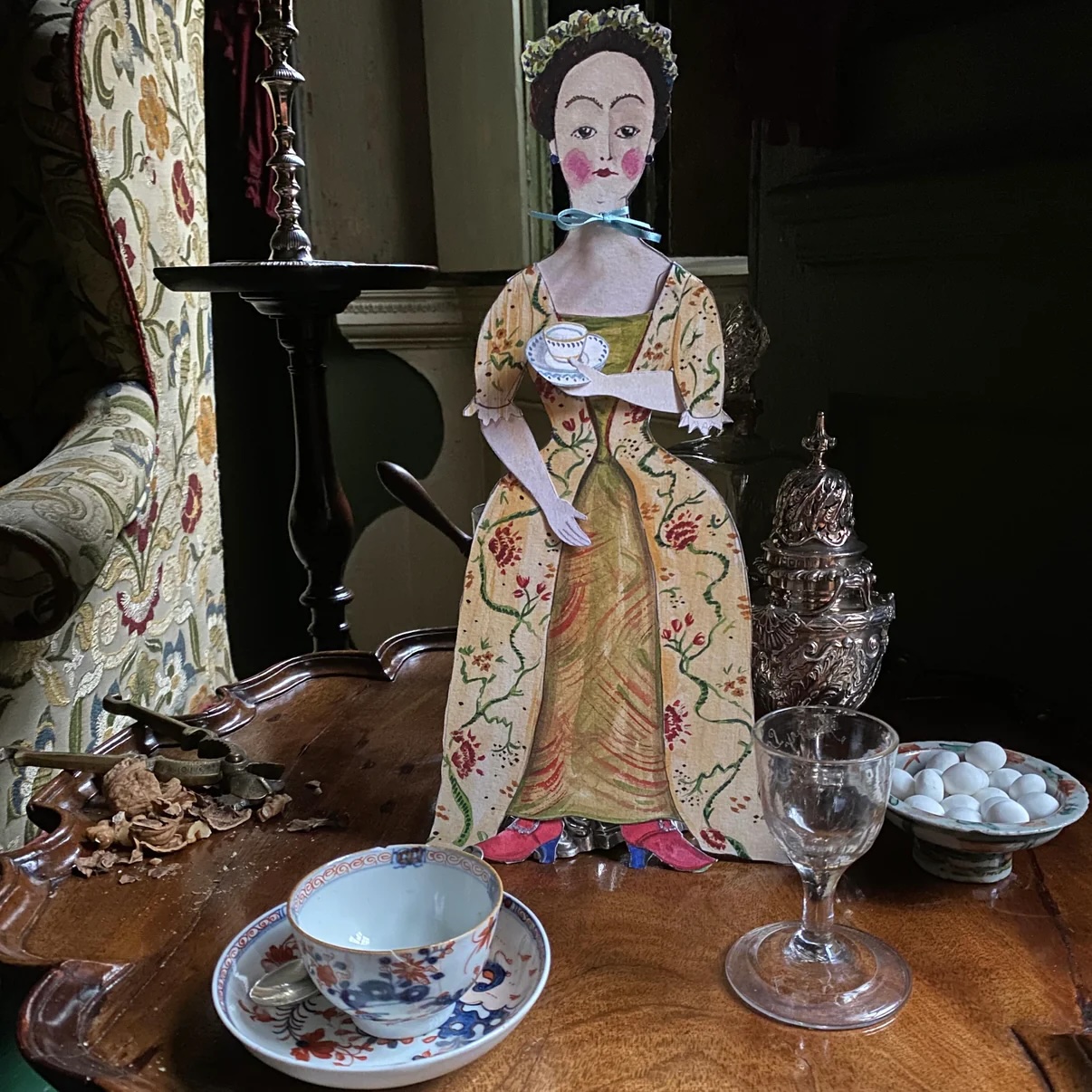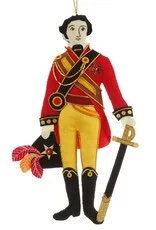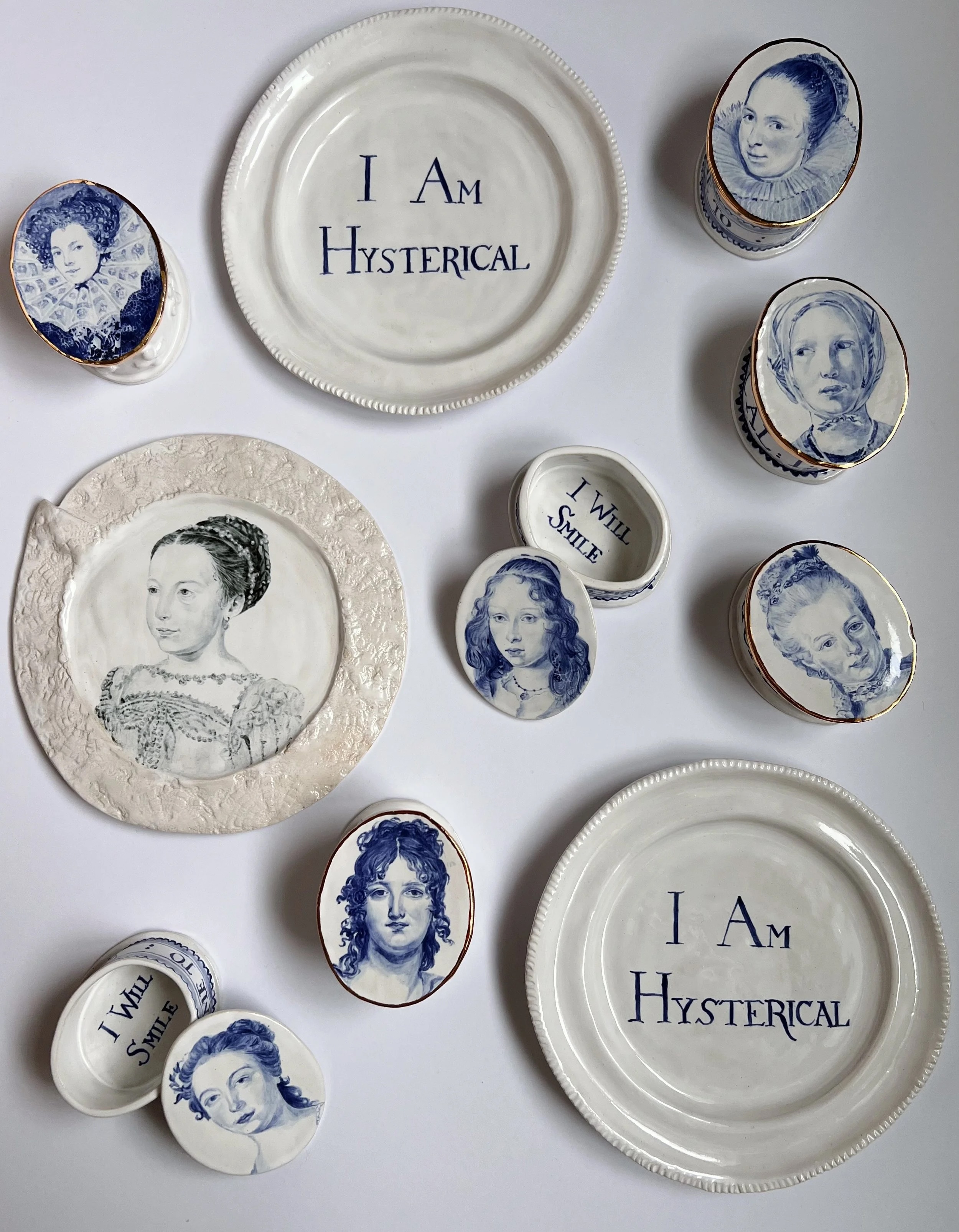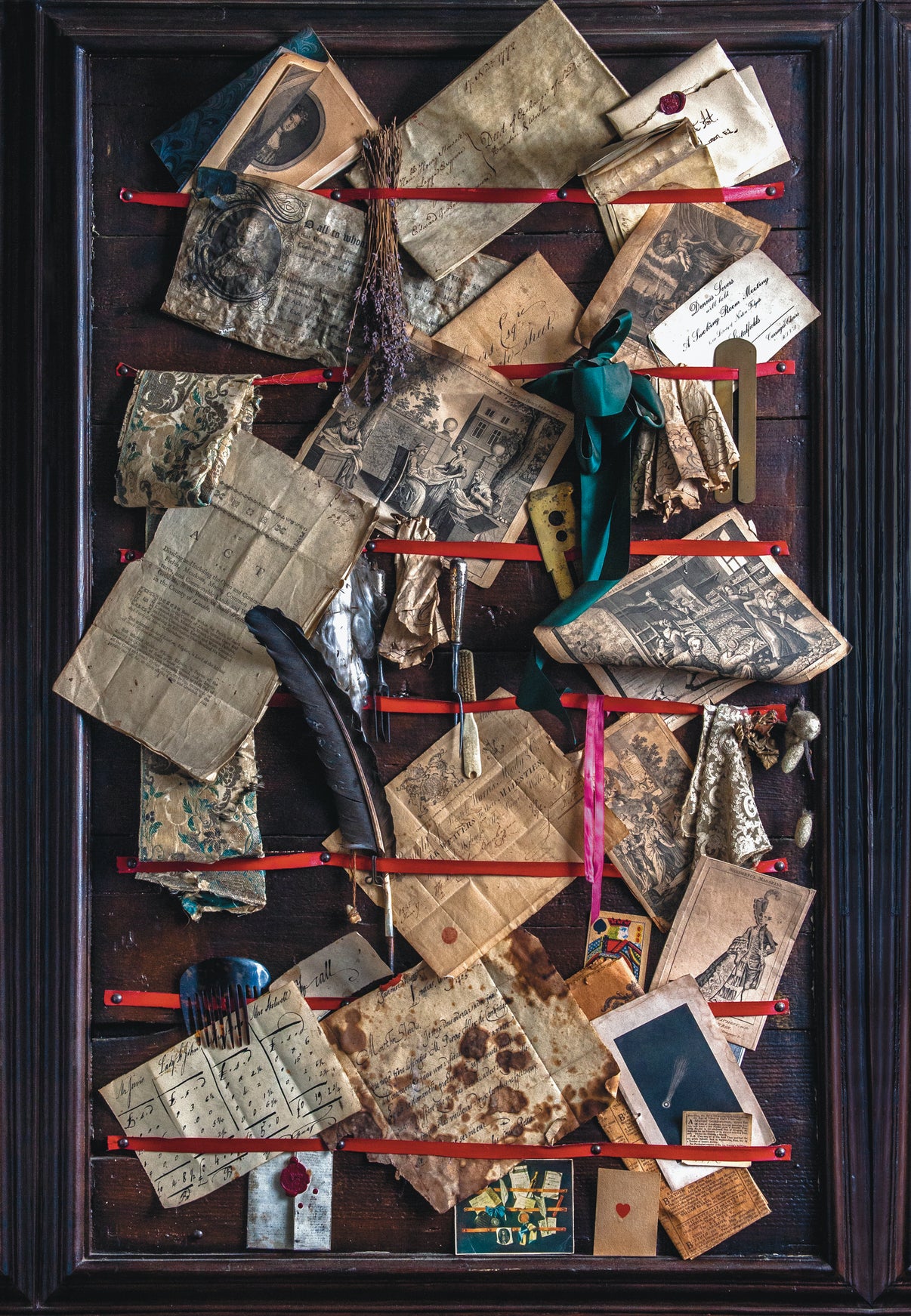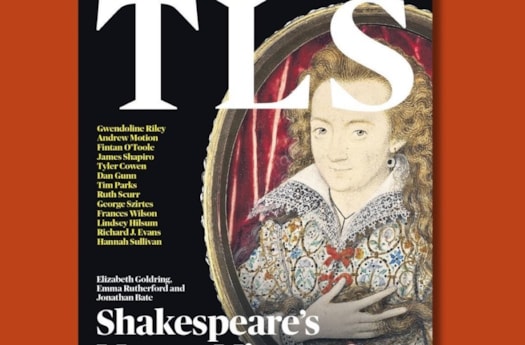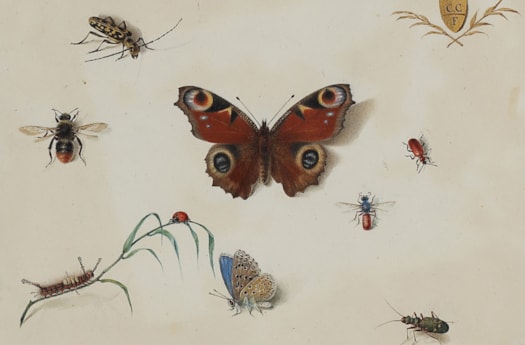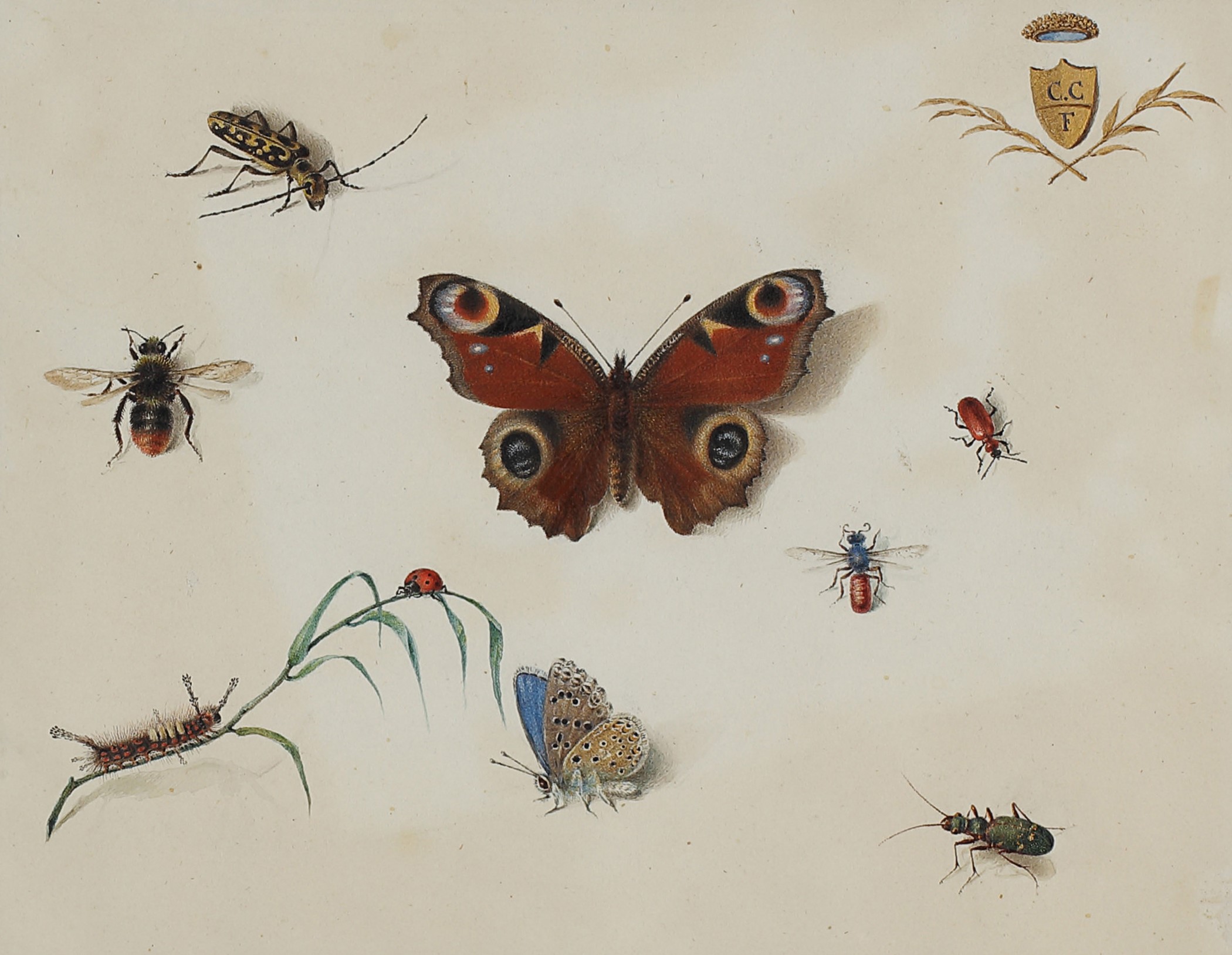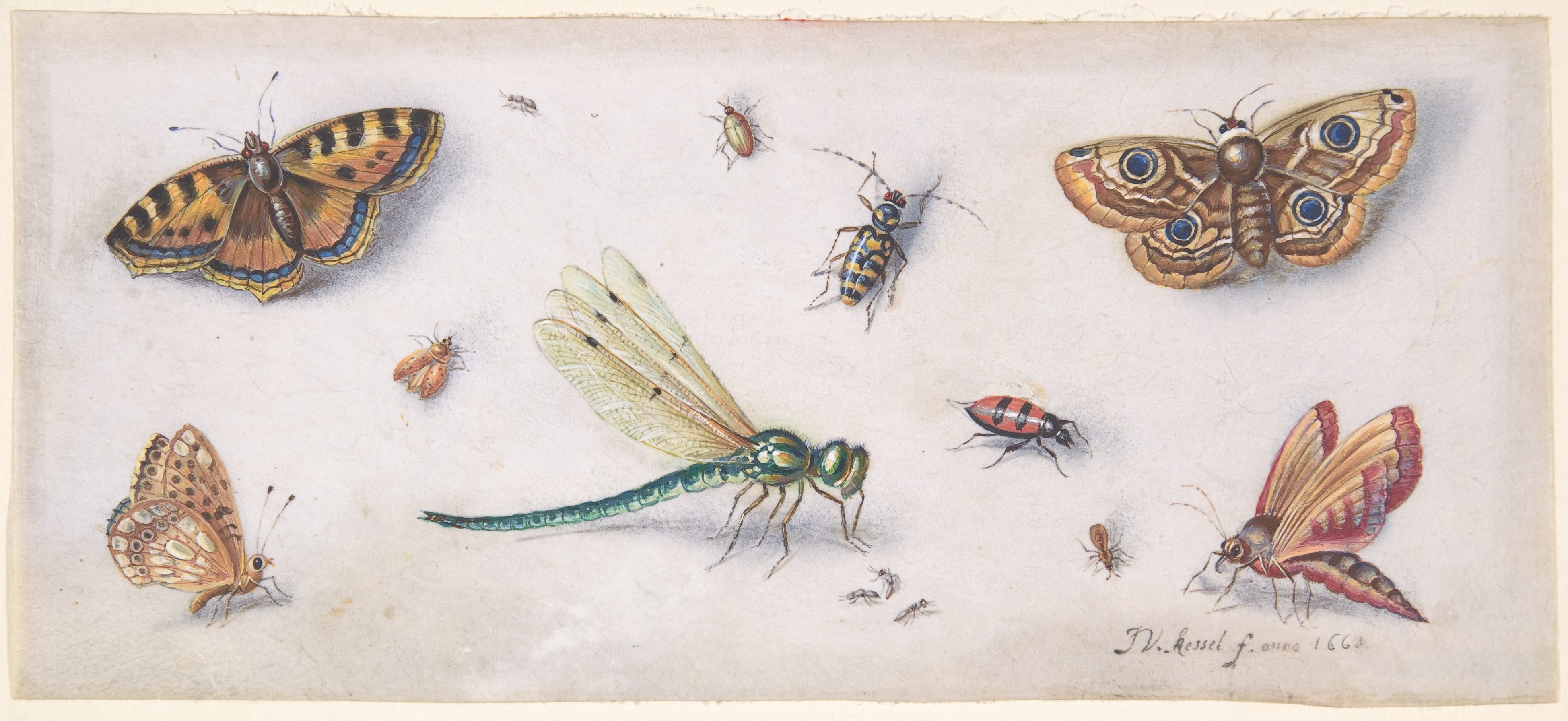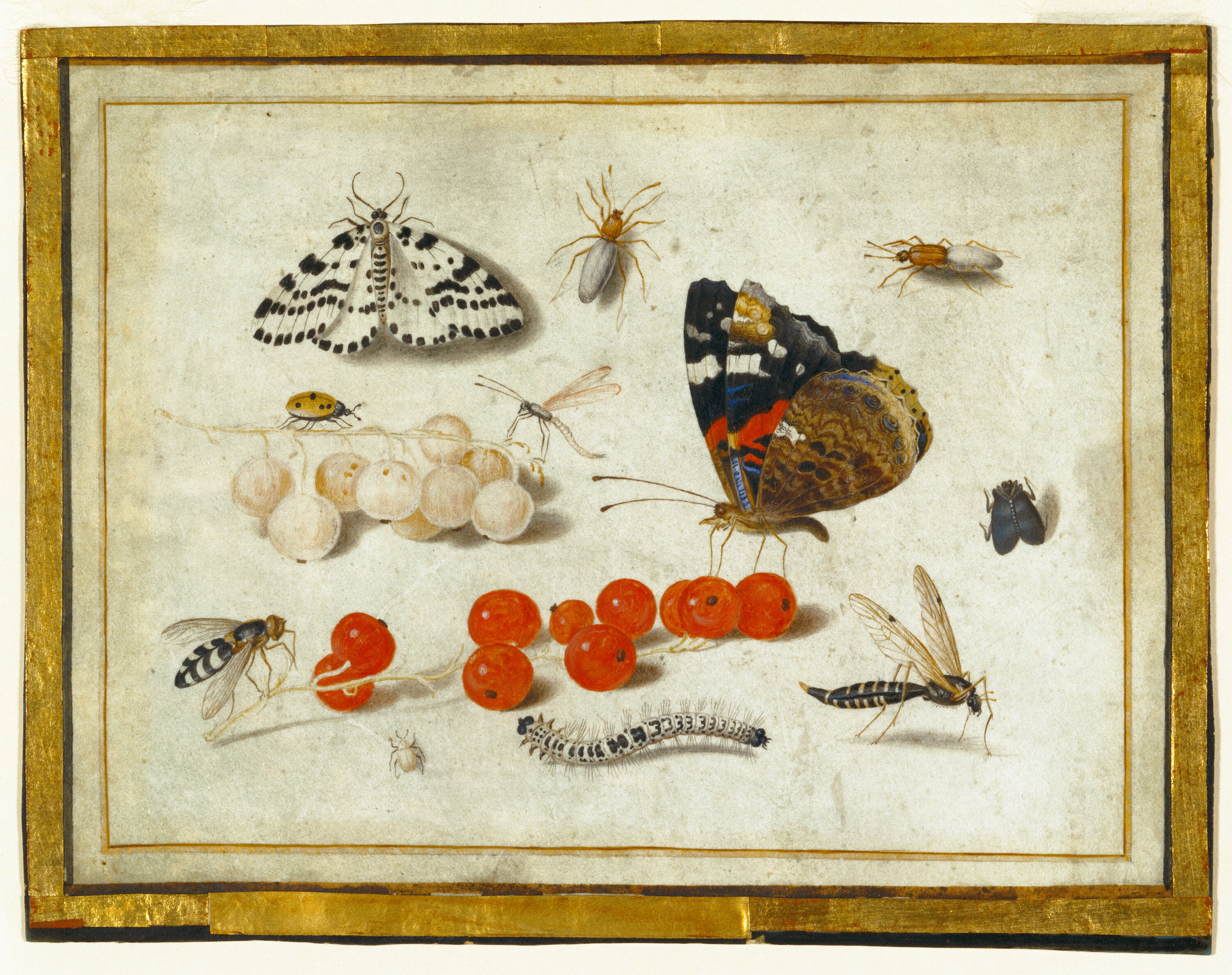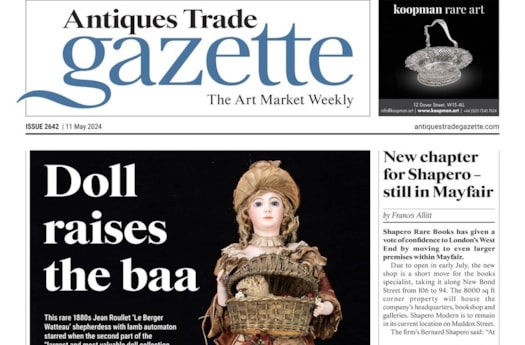04 Dec 2025
The Limner Company's Christmas Gift List

Miniatures have become a fashionable inspiration amongst contemporary artists in numerous media, and we’ve included many pieces belonging to this trend, alongside a selection of miniatures which are currently available on our website. As a theme, many of these could be gifted not only as works of art in their own right, but as items that could be worn, just as many miniatures would have originally been intended to be.
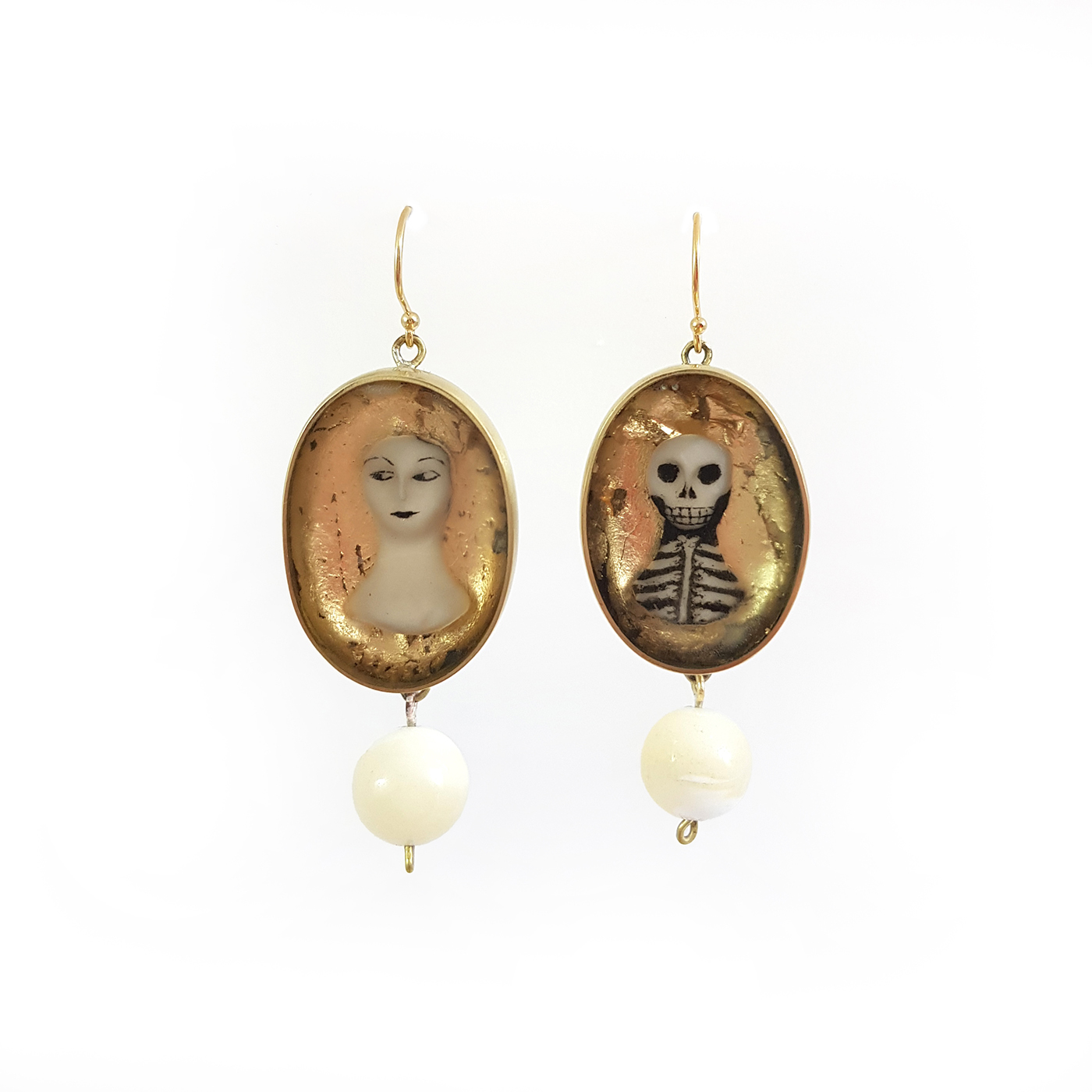
Figure 1- Rachel Larkins, Memento Mori Earrings, 2025, brass, resin, hand painted inserts, freshwater pearls, oxidised silver hooks, sold out, other pieces available via the Scottish Gallery’s website.
Rachel Larkins (b.1974) works from a studio near the New Forest and creates beautiful pieces of jewellery inspired by miniatures, memorial jewellery, and folklore. Some of her pieces, including some beautiful rings and earrings, are available through the Scottish Gallery website, where she is exhibiting until 23 December 2025. These earrings (sold out) reminded us of a pair of William and Mary memorial miniatures recently sold by the Limner Company…
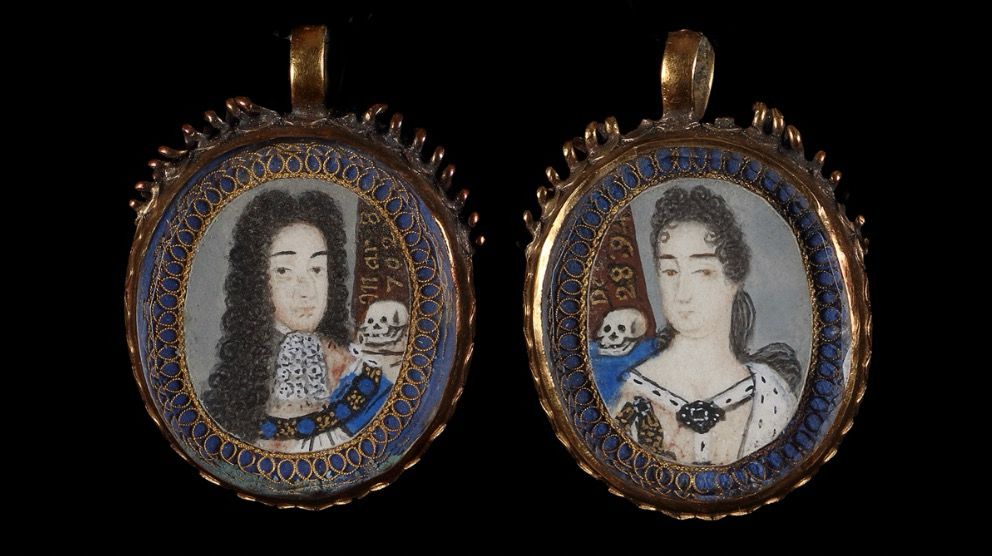
Figure 2- ENGLISH SCHOOL, Memorial portrait miniatures of Queen Mary II (1662-1694) and King William III (1650-1702), circa 1702, watercolour on vellum. With the Limner Company, (reserved).
These memorial miniatures are a perfect example of how small and intimate these works of art can be. Painted following the death of King William III (1650-1702) and Queen Mary II (1662-1694), these tiny (16mm high) portraits (reserved) are both surmounted by loops which would have allowed them to be worn on a chain or ribbon by those mourning the death of the King and Queen. This has always been a common way to wear miniatures, as demonstrated in figure 3 below. It is tempting to envision the pair mounted as a brilliant pair of statement earrings to be worn today.
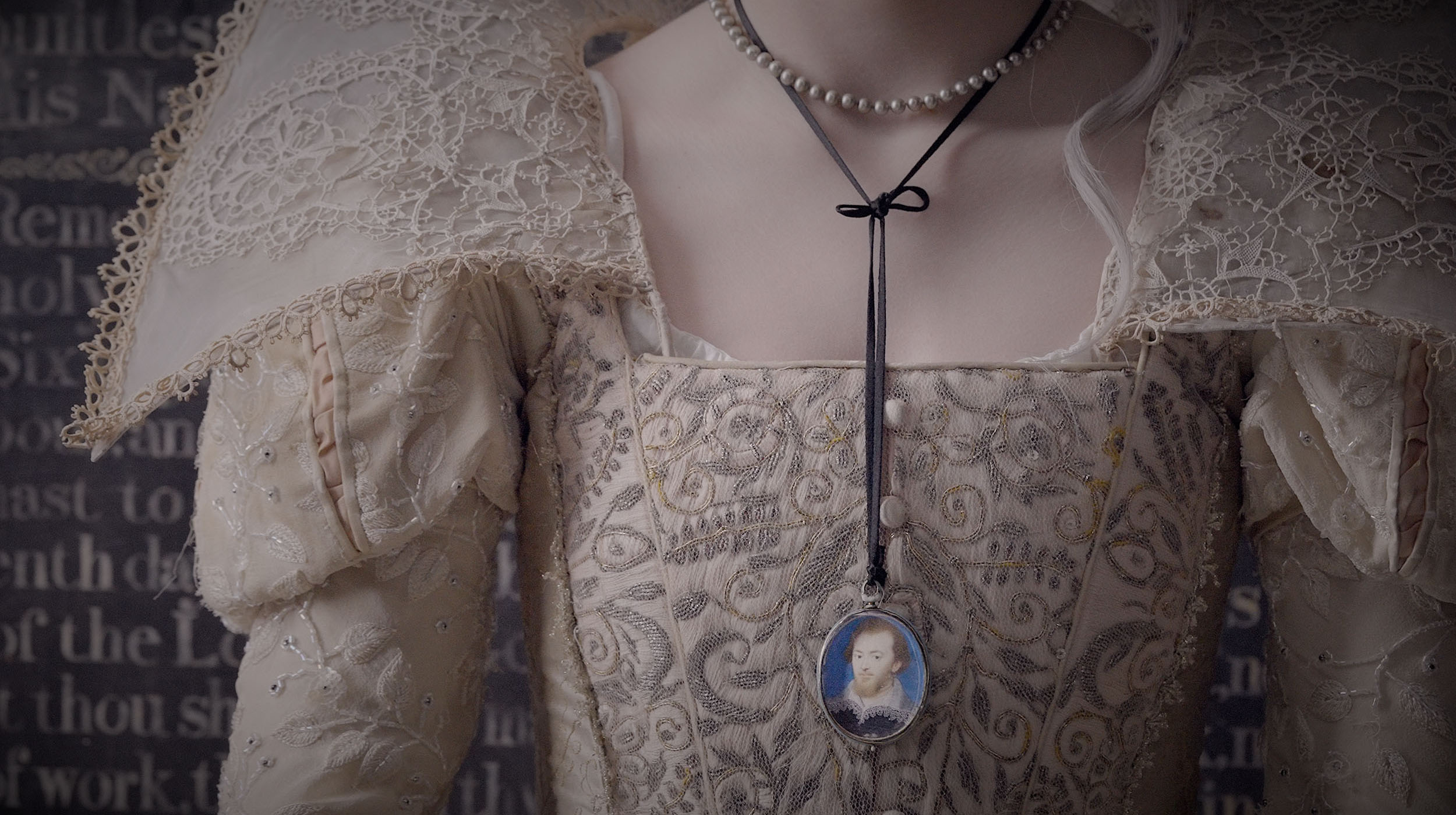
Figure 3- An image of a woman wearing a miniature on a ribbon, taken for the 2024 exhibition The Reflected Self, Compton Verney.
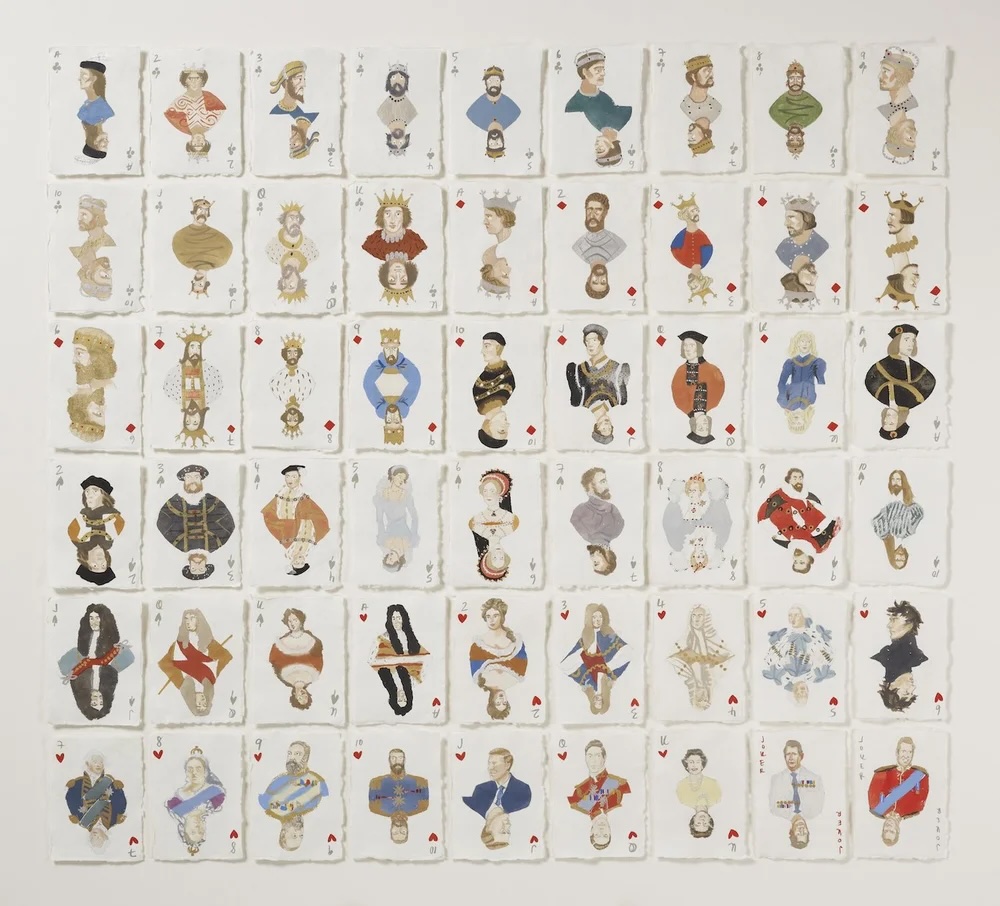
Figure 4- Holly Frean, A Pack of Kings and Queens, gouache on paper, sold out, other works available through her website.
William and Mary also feature in a work on paper by Holly Frean, A Pack of Kings and Queens (sold out). Given that early miniatures were painted on vellum, then laid down on playing cards, this artwork felt like the ideal addition to a miniatures themed christmas list. Holly, a london-based artist, has previously offered miniature pet portraits by commission (also currently sold out, for more information visit her website).
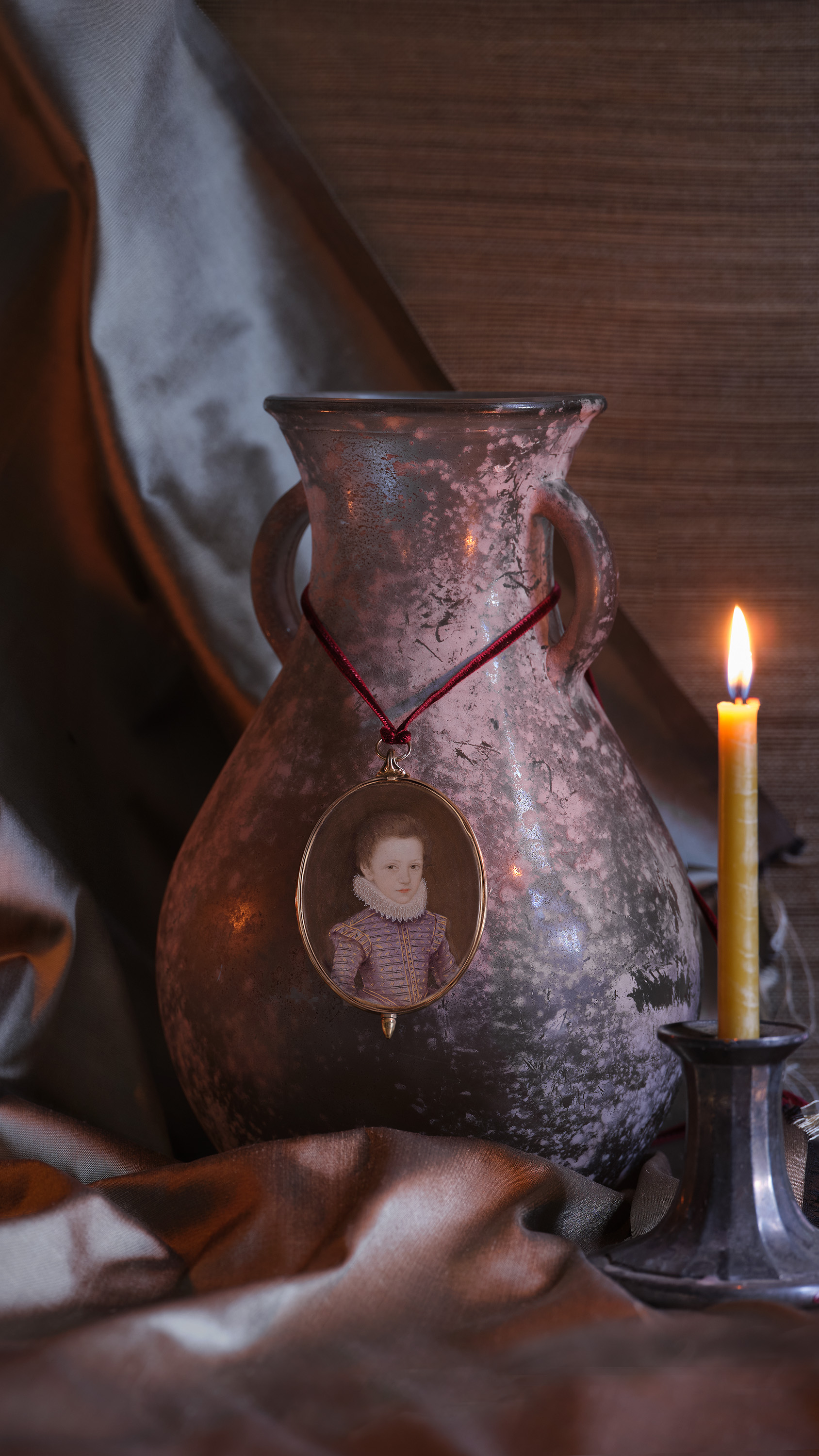
Figure 5- CONTINENTAL SCHOOL, c.1610s, Portrait of a Young Boy, oil on copper, heightened with gold. For sale with The Limner Company (£25,000).
If you’re looking for a historical miniature laid on a playing card, this Portrait of a Young Boy in a Lilac Doublet (£25,000) may be what you’re looking for. As shown here, he’s the perfect size to be worn as a pendant. Children were very rarely painted at the beginning of the seventeenth century, making this portrait an extremely precious and unique work. The reverse of the miniatures frame is transparent, revealing a single club on the playing card on which the vellum has been laid.
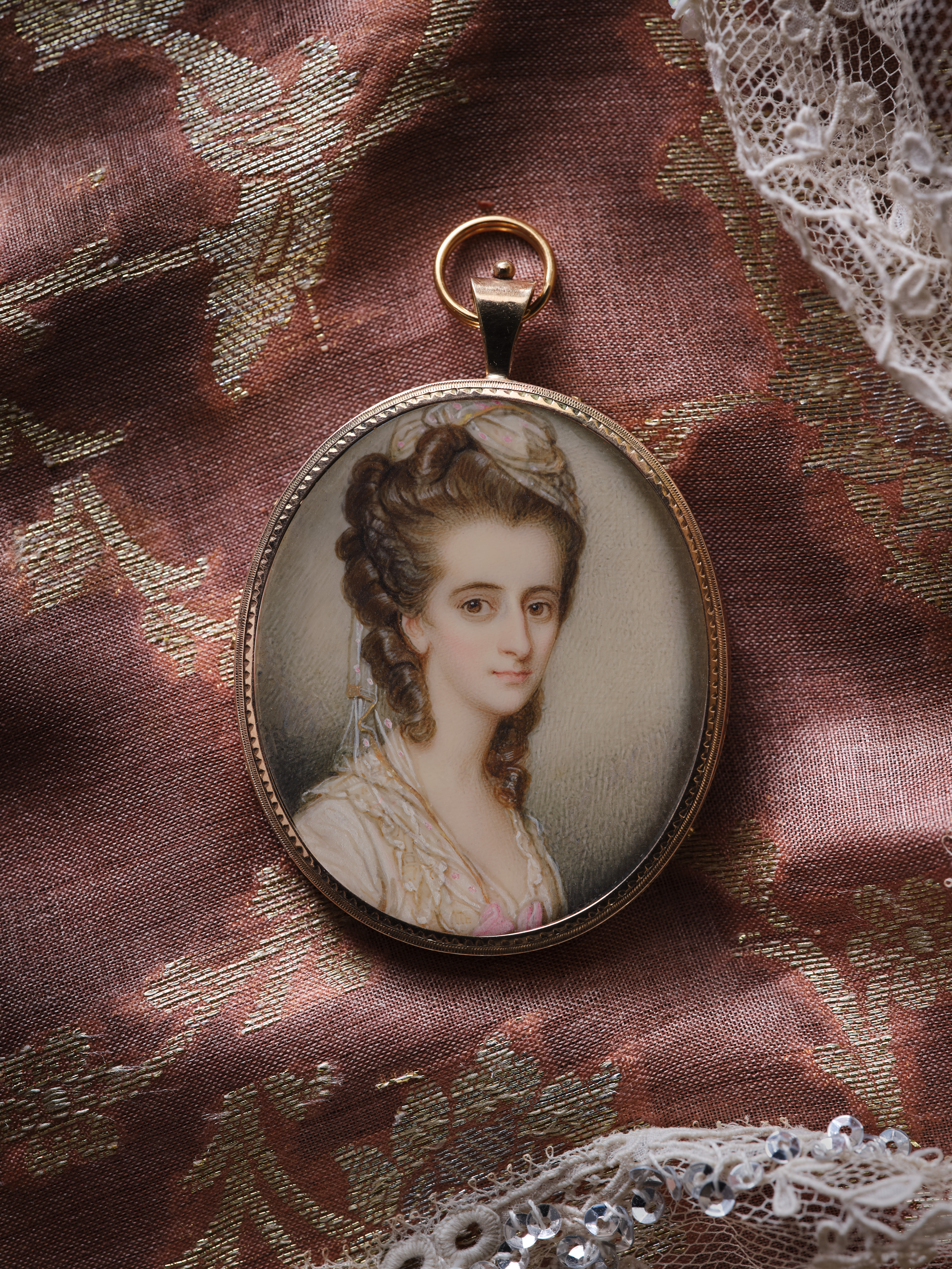
Figure 6- RICHARD COSWAY(1742-1821), Portrait miniature of a Lady, c.1770
watercolour on ivory. For sale with The Limner Company (£3,250).
If you know someone who prefers pink to purple, this portrait miniature of a lady by Richard Cosway should be on your list. She’s adorned with pink silk bows and delicate lace with pink embroidery, which Cosway has depicted falling down from her hair (£3,250).
This dress-up paper doll of Mrs Jervis, sold by Dennis Severs’ house, complete with a Spitalfields dress for her to wear (£12), could be the perfect stocking filler (featuring stockings) for any young aspiring fashion designers or historical fashion lovers! Dennis Severs bought the house in Spitalfields in 1979, and today, it is open to the public as a record of the Huguenot family who had lived there since 1874. If you know someone who would enjoy visiting the house, which was bought by Dennis Severs in 1979 and turned into a museum dedicated to recording the lives of a Huguenot family who had lived there since 1874, it is also possible to buy guided tours as gifts through the Museum’s website (from £16 per guest).
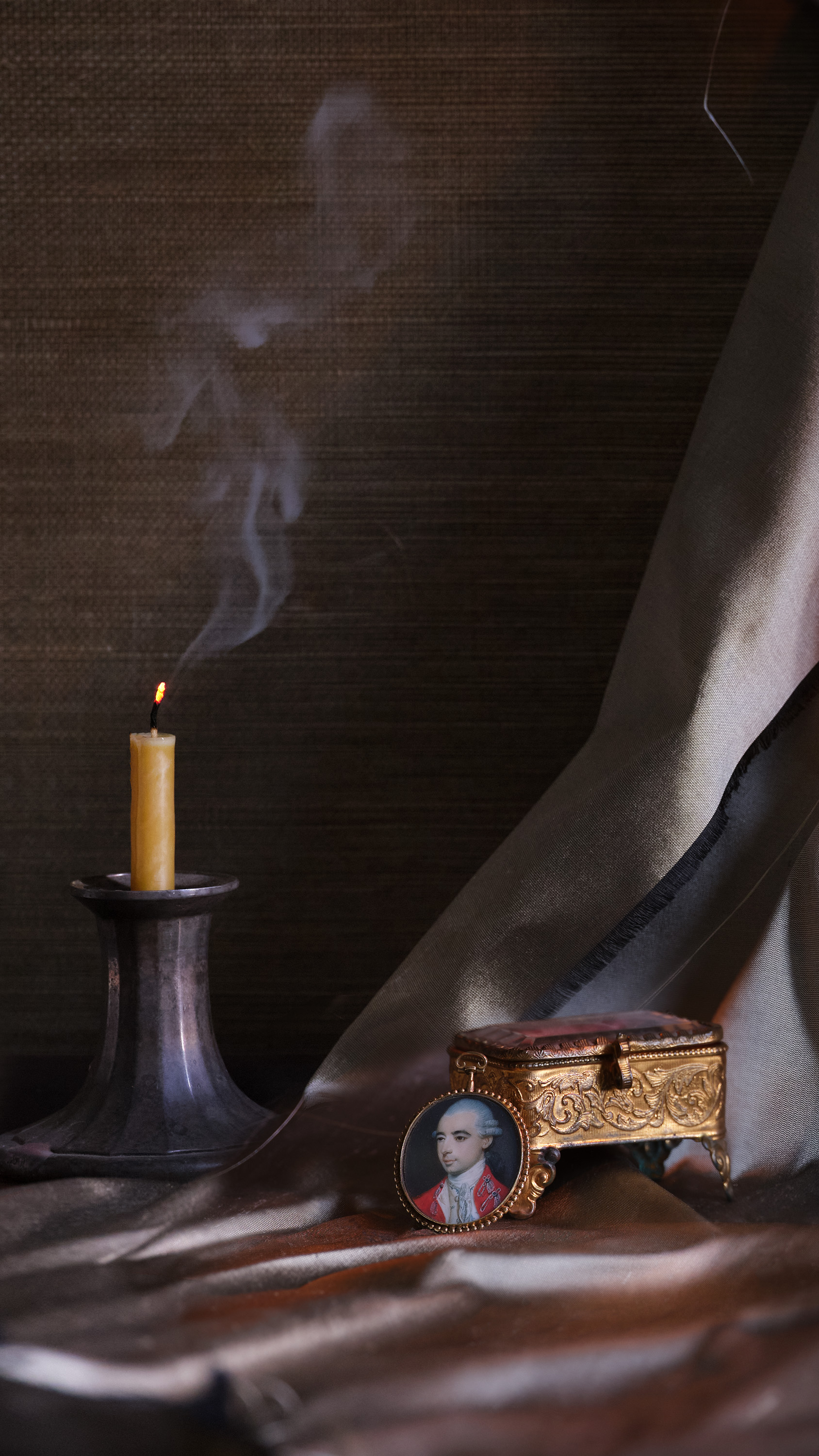
Figure 8- RICHARD CROSSE (1742-1810), Portrait of a gentleman in military-style dress, c. 1770, watercolour on ivory. For sale with The Limner Company (£2,250).
Turning to men’s fashion, this portrait of an unidentified gentleman by Richard Crosse features beautifully rendered fabrics, and is available on the Limner Company’s website (£2,250). On first glance he appears to be wearing military uniform (for some gifts for those who enjoy this, see below), but is in fact wearing an elaborate decorated jacket and waistcoat underneath which has been designed purely for fashion. He’s housed in a wonderful beaded frame, with a watch top- meaning he could easily be attached to a ribbon or chain and worn, as demonstrated with another miniature below…
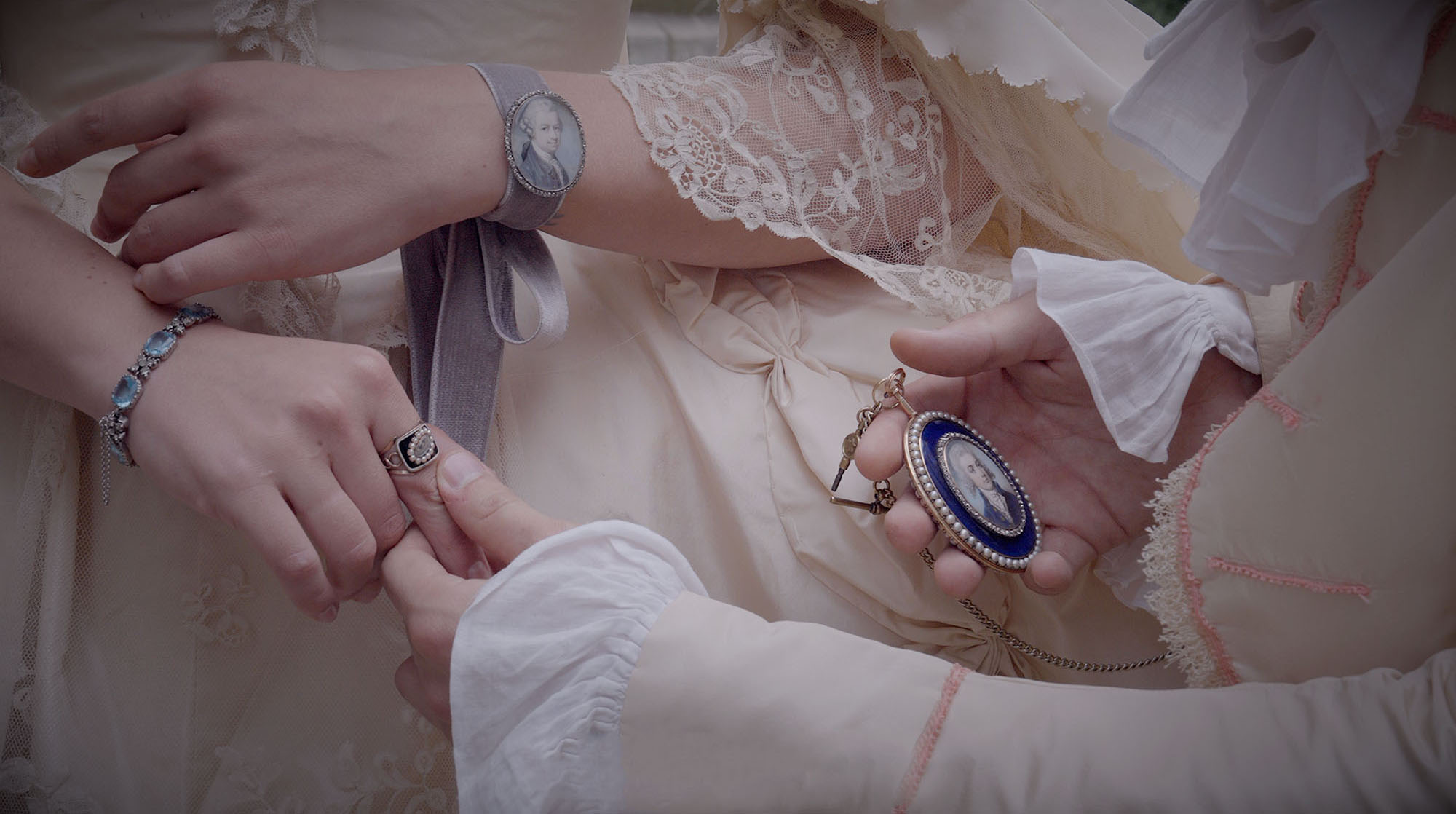
Figure 9- An image of a lady wearing a miniature round her wrist, and a gentleman holding a miniature attached to a chain, taken for the 2024 exhibition The Reflected Self, Compton Verney
For those who enjoy military history more than fashion history, these handmade felt decorations of figures including Wellington, sold at the National Army Museum (£16.50), could be another great option for a stocking, or for a tree. Many museums and galleries sell similar felt decoration inspired by historical figures and artists. See the National Portrait Gallery’s website for more options, including the Six Wives of Henry VIII and Ignatius Sancho (from £17).
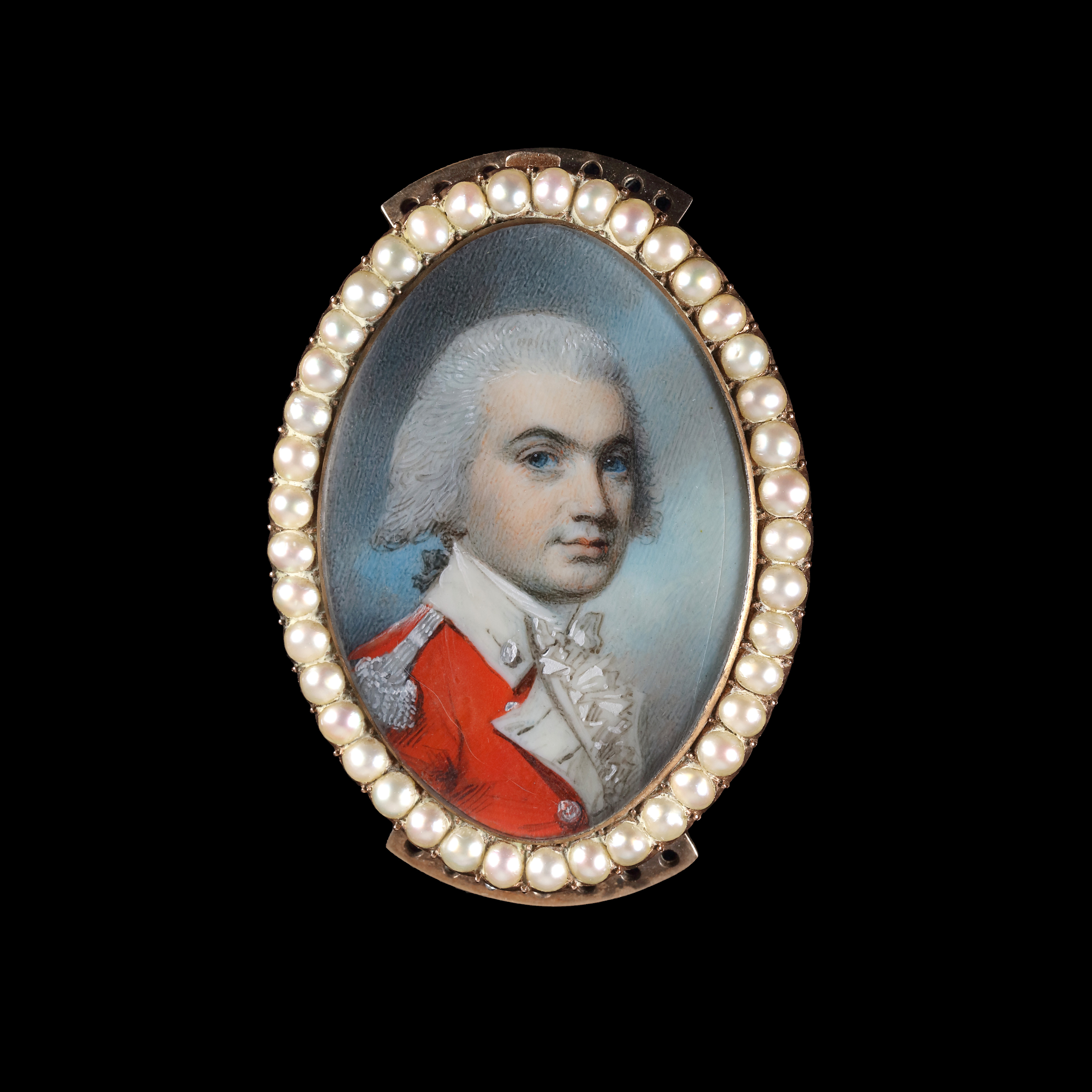
Figure 11- GEORGE ENGLEHEART (1750-1829), portrait of an officer, c.1790, watercolour on ivory. For sale with The Limner Company (£6,500).
Another option for a military history lover, which can double-up as a wearable piece, is this portrait miniature of an unknown officer by George Engleheart (£6,500). The miniature is set into a bracelet clasp, with a pearl surround, ready to be worn on someone’s wrist. The sitter is unidentified and may also prove a welcome mystery to a military buff- though his uniform appears to be that of a subaltern of a British Line Infantry regiment, his buttons may feature anchors, leading to the suggestion that he may have been a subaltern of the Corps of Marines…
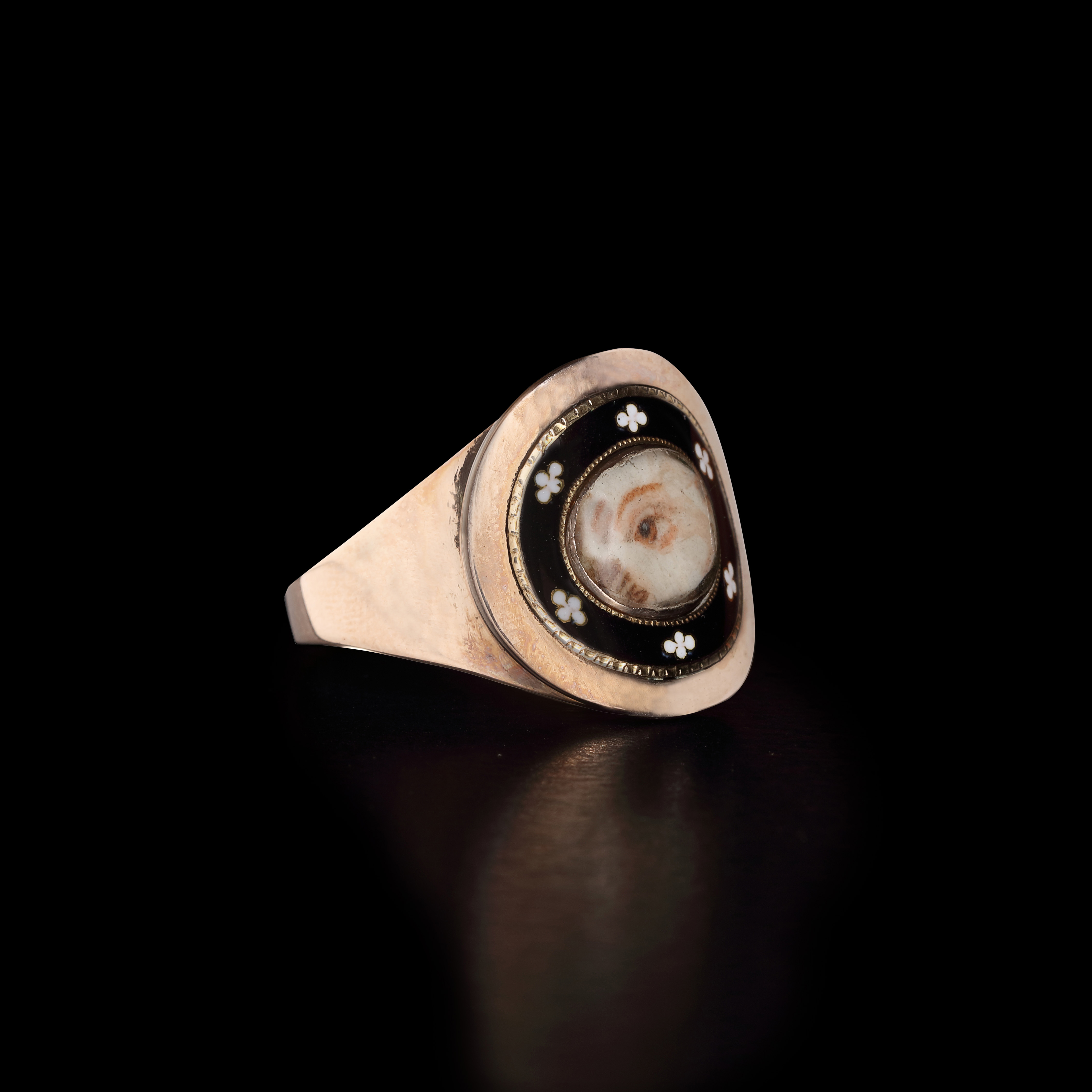
Figure 12- ENGLISH SCHOOL, A portrait miniature ‘lovers eye’ of the hazel eye of Ellen Jane, 1821, watercolour on ivory. With The Limner Company, (reserved).
Rings were also a traditional way to wear miniatures. Most often, portraits set into rings were intended as mourning jewellery, as with this ‘Lovers Eye’ mourning ring, featuring the eye of a young woman named ‘Ellen Jane’ (Reserved). It is possible to identify this as a mourning ring because of the black-and-white enamel surround; the white four-leaf clovers, specifically, would have conveyed the message to ‘think of me’.
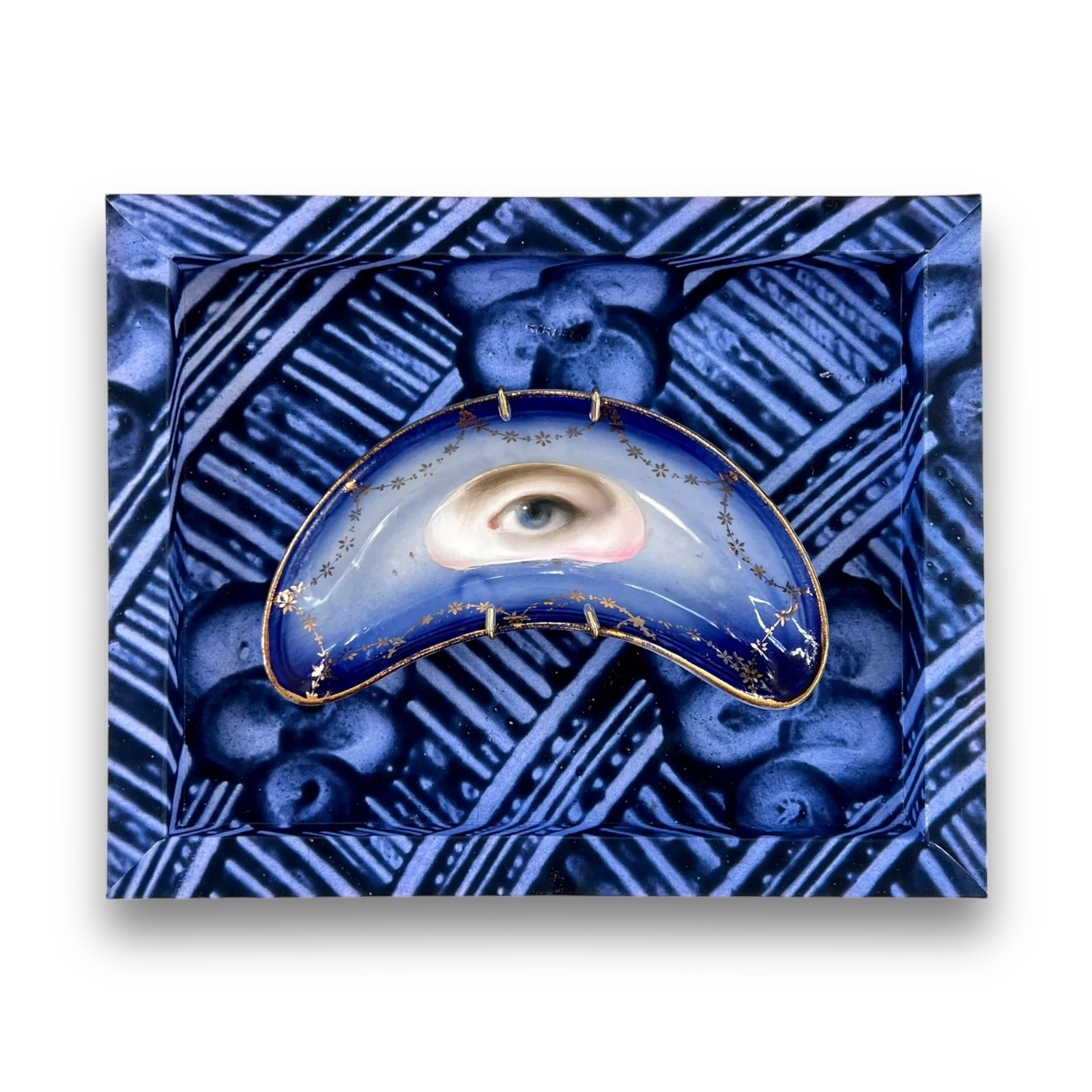
Figure 13- Susannah Carson, No. 2988 Lover's Eye Painting on a Flow Blue Crescent Plate, china displayed on blue ironstone plate, £302, available through her website.
Susannah Carson puts a modern twist on the Lover’s eye in her artworks, through which she creates ceramic pieces featuring original eye paintings. Often selling out quickly, her plates and ornaments (such as the blue crescent plate above, £302) would be the perfect addition to a Christmas tablescape. At a lower price point, Susannah's Christmas shop contains eye miniature jigsaws (£25), stockings (£14), and wrapping paper (£11).
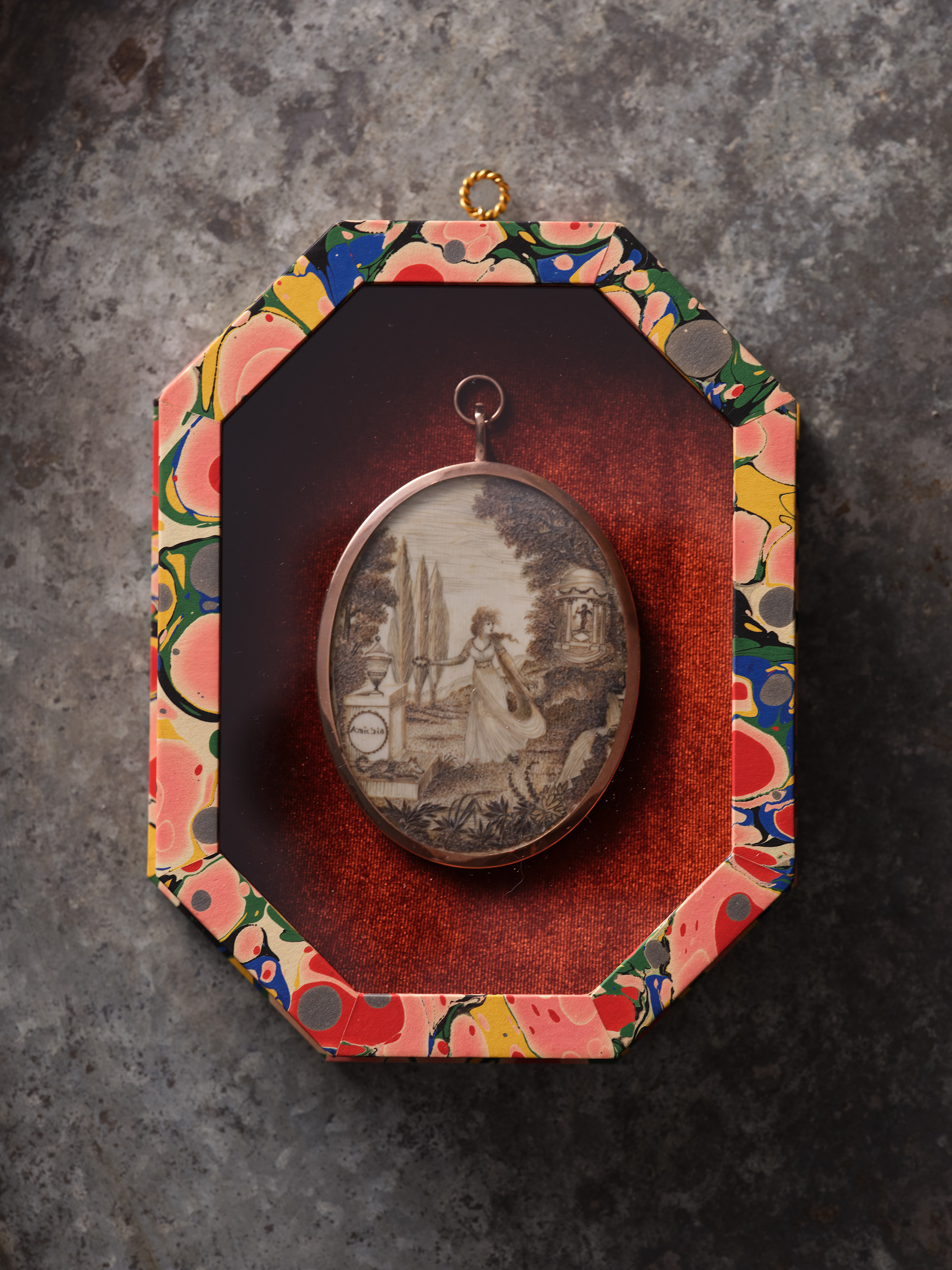
Figure 14- FRENCH SCHOOL (18th century), A double-sided hairwork miniature, c. 1780s, Hairwork on ivory (£1,750) and Marbled Case, produced by Parvum Opus (£350). Both for sale with The Limner Company.
If someone you know has their own miniatures and other artworks yet to be displayed, the Limner Company is offering a selection of marbled boxes, created by Parvum Opus. These boxes function as frames for miniatures and are deep enough to house an artwork, which can in turn be hung on a wall or displayed beautifully on any flat surface. Here, one of the boxes (available for £350) is shown with a uniquely well-preserved, double-sided hairwork miniature (available for £1,750). For more examples of how artworks can be displayed in these cases, take a look at this beautiful project featuring contemporary eye miniatures by Irene Owens, collaborating with Art/Artefact.
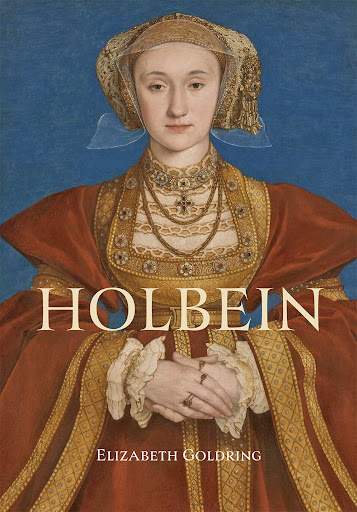
Figure 15- Elizabeth Goldring, Holbein: Renaissance Master, Paul Mellon Centre, 2025, available at most major booksellers, £40.
Elizabeth Goldring’s new book, Holbein: Renaissance Master (£40), would be a beautiful and important addition to anyone’s library this Christmas. The book is the only scholarly biography on Holbein to have been published in over 100 years and is both wonderfully written and illustrated.
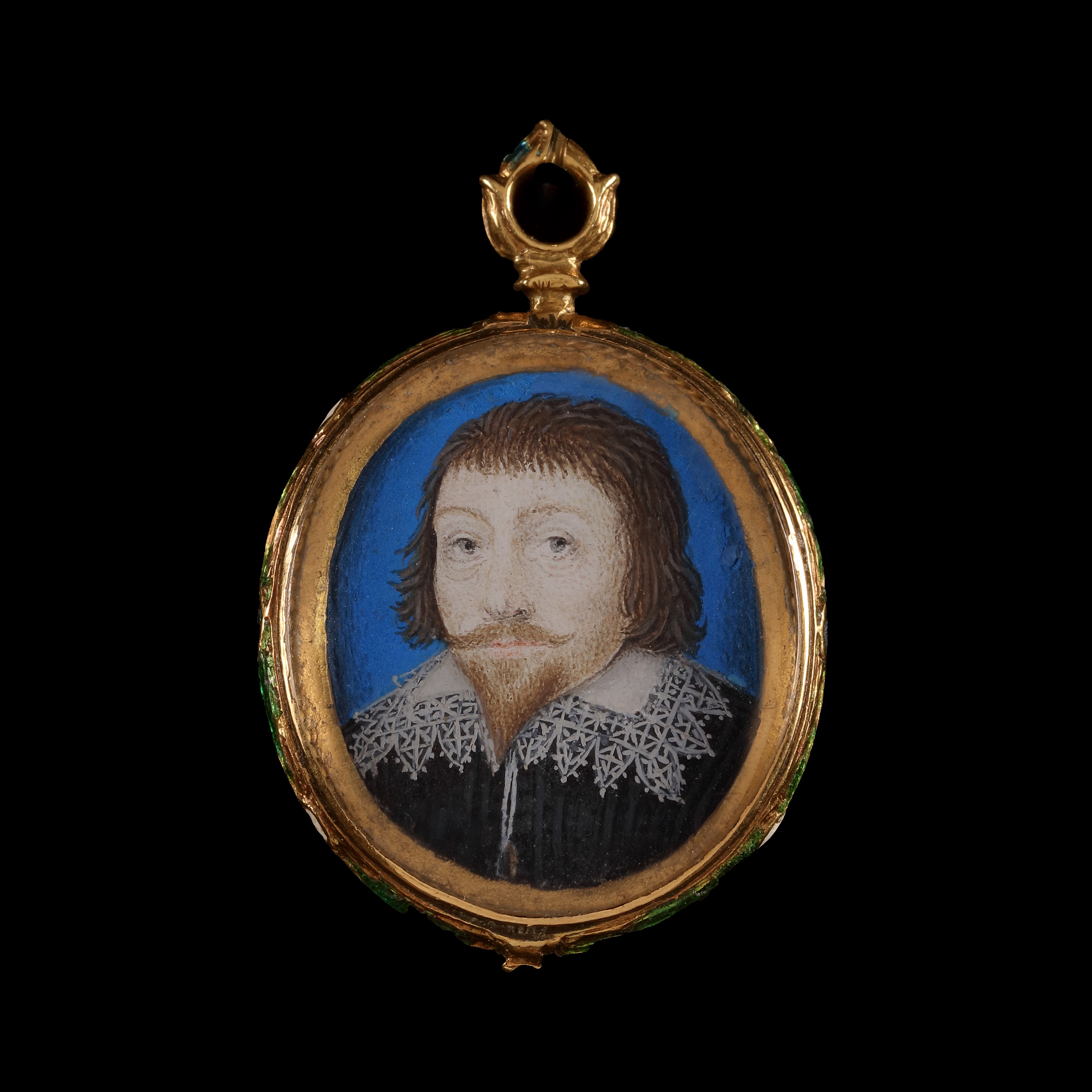
Figure 16- ENGLISH SCHOOL (17th century), portrait miniature of a Gentleman, c.1620, watercolour and bodycolour on vellum. For sale with The Limner Company (£2,500).
This portrait of an unknown gentleman (£2,500) would be the ideal companion to Goldring’s book, with it’s iconic blue background often associated with the work of Holbein and other contemporary masters, such as Nicholas Hilliard. We don’t know who the gentleman is, or who painted him, but it is housed in an exquisite case with a green enamelled edge. Originally, this would have had a lid, so that anyone wearing the miniature around their neck could hide the portrait from prying eyes. Today, it could be worn open, to display it as the jewel it is.
For another Hilliard-adjacent gift, these ceramic works, made by Pollyanna Johnson, are of a series of works taking a cheeky spin on historical portraits. One of these boxes (now sold) features a copy of a portrait by Nicholas Hilliard, though other boxes, plates, and roundels have copies of portraits to suit the taste of any old-master obsessed loved one. (Boxes £550, plates from £600).
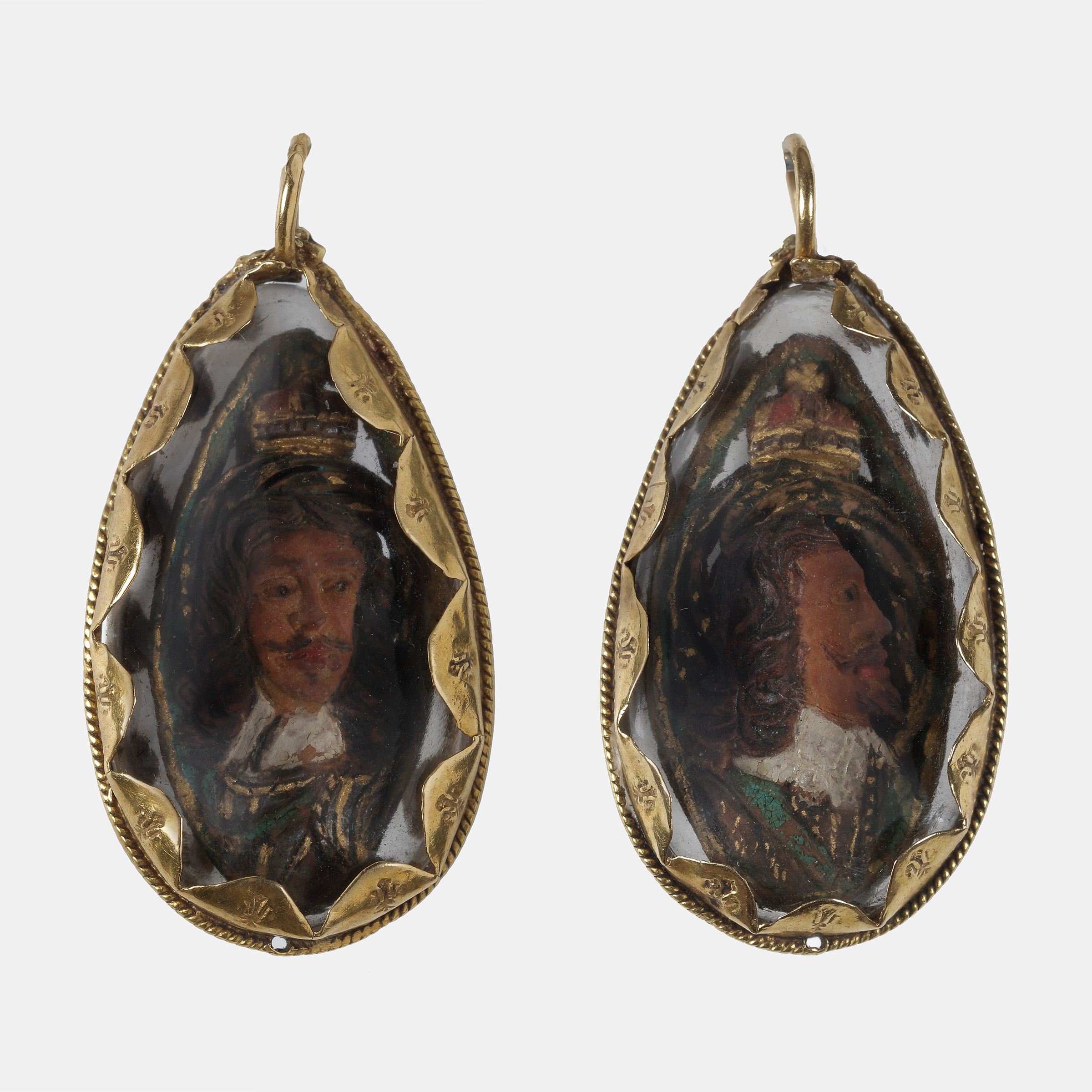
Figure 18- Attributed to THOMAS RAWLINS (1620?–1670), A fruit stone (probably a plum or peach stone) carved on both sides with portraits of King Charles I and King Charles II, with royal insignia, coloured and gilded, set into the original gold and rock crystal locket, the gold engraved with fleur de lys pattern. For sale with The Limner Company (POA).
Trompe L’oeil-inspired wrapping paper? Say no more! This pin-board wrapping paper (£3.50 per sheet) is also available at Dennis Severs’ house, and is taken from the pinboard in the dining room there. The perfect way to wrap all of this up… excuse the pun!
13 Nov 2025
A Closer Look: William Horace Beckford, later 3rd Baron Rivers (1777-1831), painted by his sister, Harriet Beckford, later Ker Seymer (1779-1853)
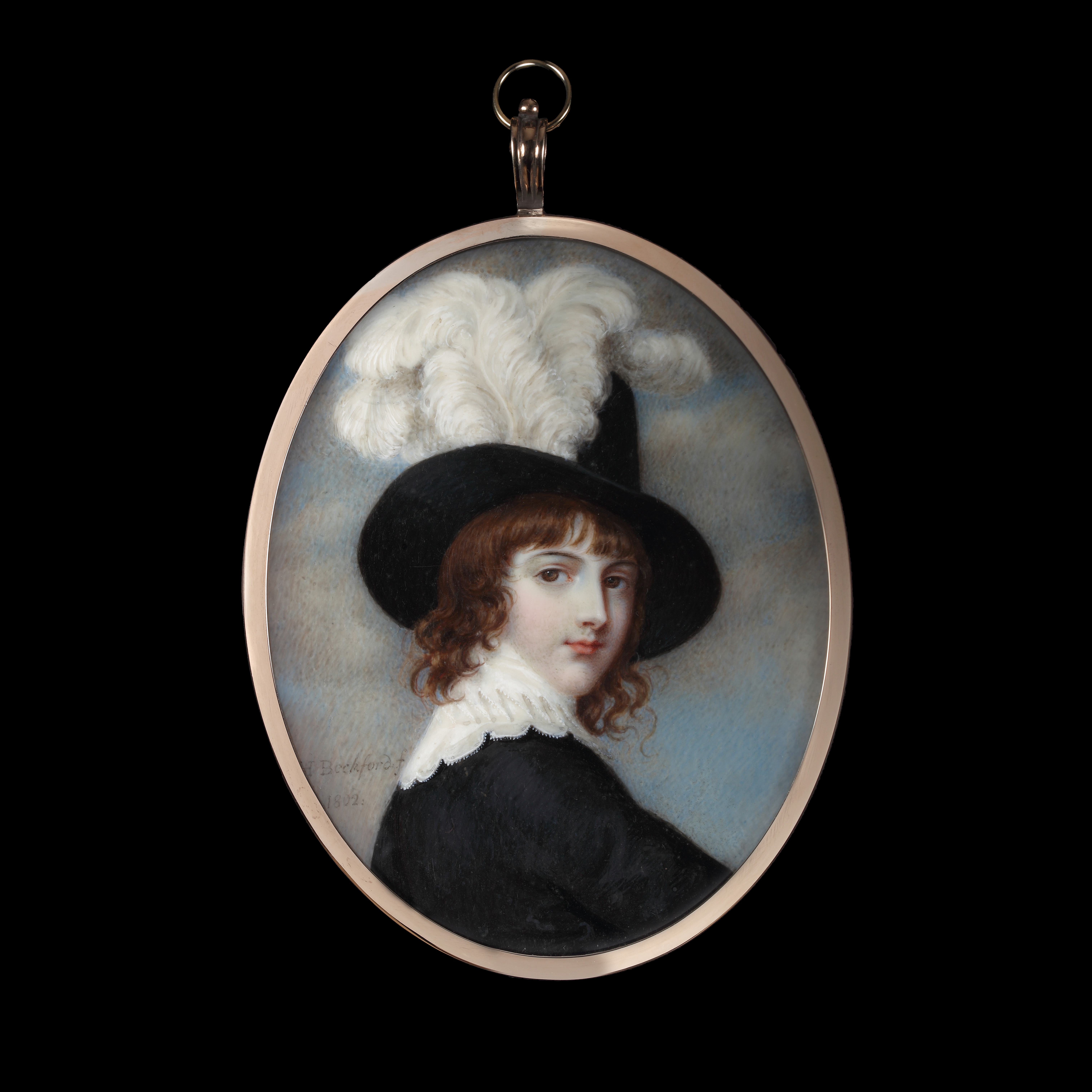
HARRIET BECKFORD, later KER SEYMER (1779-1853), after Richard Cosway (1742-1821), Portrait miniature of William Horace Beckford, later 3rd Baron Rivers (1777-1831); 1802 , watercolour on ivory (licence 1RVZQBQS), oval, 8.7 cm (3 ⅖ in.) high.
Some context
Despite the original portrait having been drawn in 1790, the portrait miniature by Harriet was not painted until 1802. The most likely explanation for this is that Harriet did not see, or did not feel capable enough to copy, this drawing until a later date. Harriet had spent some time in Italy, alongside her brother and father, in the 1790s, and it is possible that she had not actually returned to England until the early 19th century- more on this later.
The earliest provenance we have for this miniature is a 1980 sale (Sotheby’s, London, 24 March 1980, lot 151), and it is known that it was in the collection of Dr Erika Pöhl-Stroher until 2025. Before then, the miniature cannot be traced, though it would have remained within Harriet’s family collection for some time.
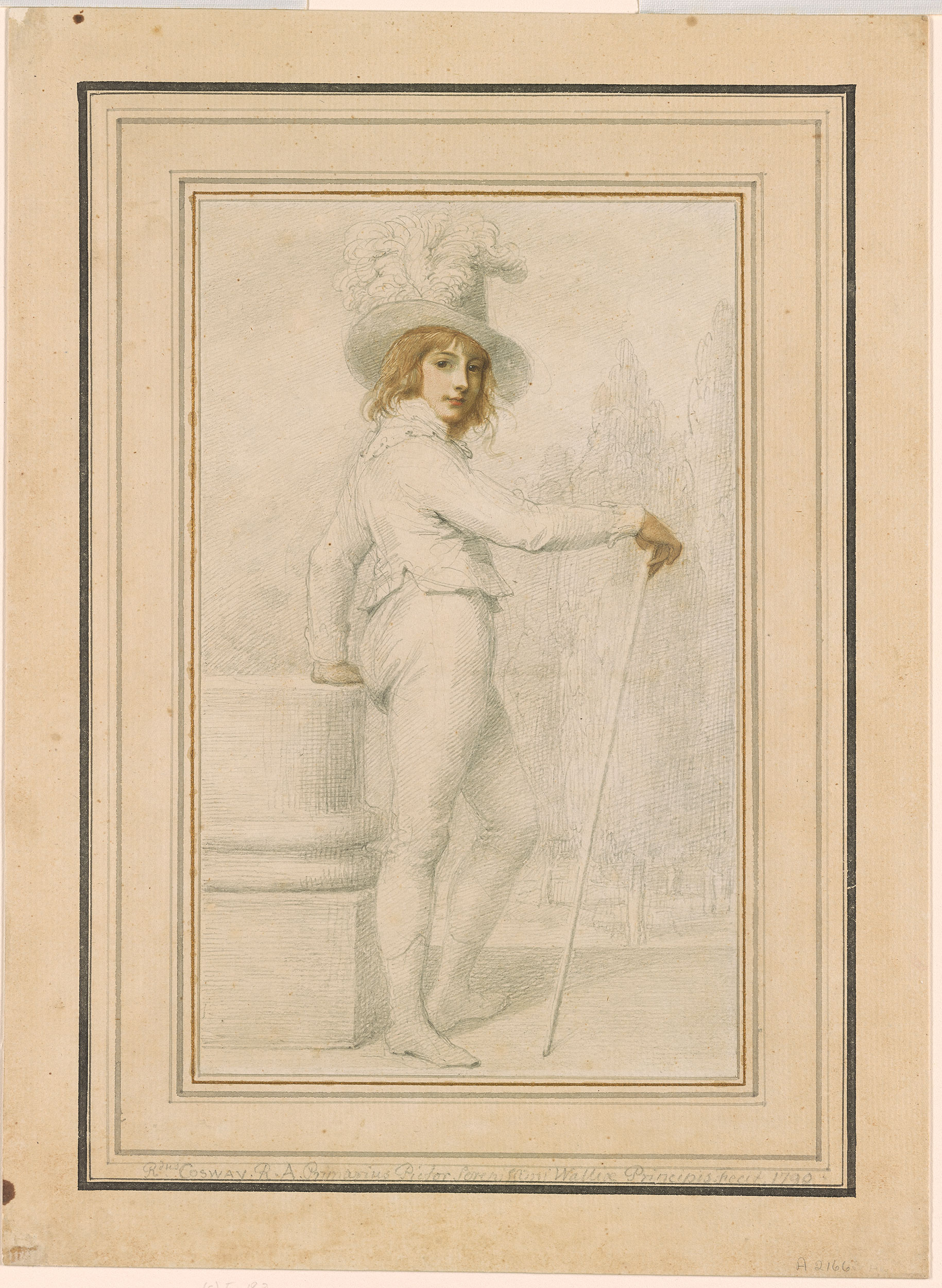
The Beckfords
One of the largest controversies of Horace’s and Harriet’s side of the Beckford family was related to the incompatible marriage of their parents[4]. In the late 1770s, Lousia had begun an affair with her husband’s cousin William Beckford, and she often attended Fonthill without her husband. Numerous letters between the pair exist, outlining their love for each other and Louisa’s dislike of her husband and his lifestyle. The affair ended following William’s departure to Italy in 1782, and his marriage in 1783.
Following the end of the affair, Peter took his family to Italy. They would remain here between 1776 and 1799. In Italy, they lived in Pisa and Florence, and visited numerous other cities. Following their (not so brief) excursion, during which Louisa had died from consumption, they returned to Britain.
Harriet Beckford as an artist
In 1797, it is recorded that Harriet was a member of the Accademy of Fine Arts (Accademia di Belle Arti) in Florence, where her family were living at the time. In attending the Aaccademia, she was not only following in the footsteps of some of the greatest female artists of the period, including Maria Cosway (1760-1838) and Angelica Kauffman (1741-1807), but also some of the greatest miniature painters of the period, including Nathaniel Hone (1718-1784) and Ozias Humphry (1742-1810). It was probably here that Harriet learned to copy the work of masters in order to develop her own skill, and possibly came across some of the works that she would later go on to copy in miniature form[10].
As an artist, Harriet is exceptional, and Schidlof (1964) states that she ‘deserves to be better known’. Of course, part of the issue in this is that there are so few works known to be by her. Given that she has signed all of the known works, however, it is possible that others remain out there, waiting to be discovered. Her style is varied; clearly intended to imitate the work of those artists she is copying exactly. However, this in itself shows skill, and a keen eye that was able to pick up techniques and details used by others.
Harriet continued to paint after her marriage (assuming that the date on the Greenwich miniature is in fact 1809), to Henry Seymer, later Ker-Seymer, in 1807. A year before the marriage Thomas Lawrence (1769-1830) was commissioned to portray Harriet, the result being a portrait currently with Rafael Valls[11]. However, there are no extant works produced after this date. Later in her life she developed a friendship with William Henry Fox Talbot (1800-1877), a pioneer in photography. The letters written by Harriet to Fox Talbot are some of the only records of her voice; they are often discussing her visits to him, or vice versa. The two do not, however, discuss the art of photography in their written correspondence. Only one letter mentions any art, being a discussion of returning the ‘Guercino’, likely to be a book of prints[12], that had been lent to Harriet by Fox Talbot.
Horace married only a year after his sister, in 1808, his wife being Frances Rigby. The financial situation of the family does not appear to have been great before the death of Harriet and Horace’s father in 1811, and would certainly not have been made any better with the debt piled up from Horace’s gambling and attendance of clubs. This appears to have been an issue even before he was married, as a letter, published (undated) in the Beckford Journal, sees his maternal uncle, Lord Rivers, insist that he must quit his gambling [sic] until he is married. In the same letter he also threatens Horace that ‘You are only Heir to the title:- but my Estate is perfectly in my own Power.[14]’. It was from his mother’s family, after all, that his title, and some of his inheritance, would come. His mother had only one brother, the author of the above letter, George Pitt, 2nd Baron Rivers (1751-1828). He had no children.
When it came to inheritance, the threat of Horace’s uncle held true. It seems that the estate was entrusted to Horace’s eldest son, George, 4th Baron Rivers (1810-1866), and his father was only given a yearly income, to avoid him wasting vast sums of money on his addictions. This was in 1828- these habits had clearly plagued Horace throughout his life.
Tragically, William Horace Beckford took his own life in 1831. He was found in the Serpentine, drowned. The incident is mentioned by Harriet in a letter to Fox Talbot, referenced to as ‘a sad and awful event[15]’.
It may be because of the location of the original drawing that Harriet did not copy it until a lot later on. Furthermore, Horace was given his title of 3rd Baron Rivers in 1802, the year the miniature was painted, and it may have been done to celebrate this.
Due to the size constraint of the miniature form, Harriet has only copied the top half of her brother in this portrait. It has been developed sensitively from the watercolour to include more colour, and a sky background- extremely popular in miniature painting of the nineteenth century. There is a remarkable level of detail in Horace’s hair, the feather on his hat, and- notably, the fine lace trim of his collar.
His distinctive and dramatic outfit is not dissimilar from one worn by Richard Cosway in a self-portrait in the British Museum[16]. In this other drawing, Cosway sits beside a book titled Vita di Rubens, referencing a possible influence of his style and fashion. Both Horace and Cosway are shown in Vandyke-esque collars, and Horace’s hair especially mimics the styles donned by Cavaliers of the seventeenth century.
A comparison of this miniature to others by Harriet allows for a suggestion that these were once all displayed within the family’s collection. Most of these (where it has been possible to access an image of the reverse) have labels on the reverse, in the same writing, indicating the subject of the miniature (fig.3). They also have numbers on them- the present example being ‘34’, the Head of Niobe being ‘35’ and the copy of Kauffman’s Cupid being ‘39’. These miniatures would have probably been displayed in the family home, and these numbers would have been a reference to their place within the collection. Though it is nice to imagine, the other numbers, up to and following 30, would have probably belonged to other works of art, not by Harriet.
This portrait, by a sister, of her brother, provides interesting insights into the Beckford Family and the nature of miniature painting done by females in this period. Harriet had received artistic training, but did not use this to develop a profession, instead maintaining it as a hobby. Nevertheless, her works were kept alongside others owned by the family. In the case of this miniature, it was painted to commemorate a milestone in her brother’s life, and would remain a symbol of his youth, despite all that would change in his life in the years that followed.
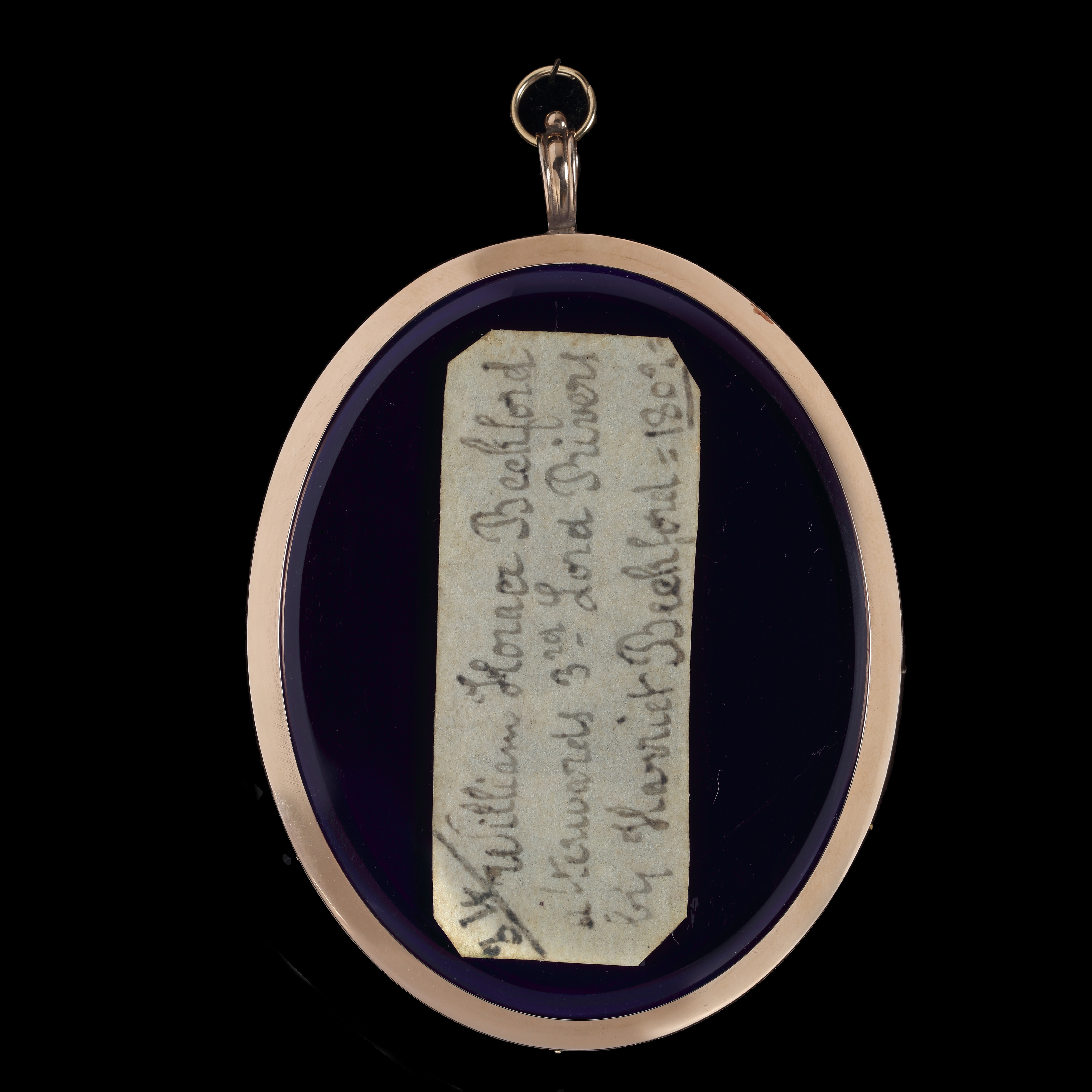
Fig.2- Verso with label, HARRIET BECKFORD, later KER SEYMER (1779-1853), after Richard Cosway (1742-1821), Portrait miniature of William Horace Beckford, later 3rd Baron Rivers (1777-1831); 1802 , watercolour on ivory (licence 1RVZQBQS), oval, 8.7 cm (3 ⅖ in.) high.
[1] RICHARD COSWAY (1742-1821), Portrait of Horace Beckford (1777-1831), 1790, 9 1/8 x 5 5/8 inches (230 x 142 mm), Pencil and watercolour on paper., Morgan Library and Museum, New York (1956.14). Another verison was sold at Sotheby’s, 28th November 1974, lot 41, and has more detail. Though this other version is attributed to Cosway, it is not signed, and a suggestion that this drawing could be by Maria Cosway cannot be discounted, though it is difficult to make a certain attribution from available photographs. Maria was known to copy drawings by her husband.
[2] In previous centuries, feathers like this were worn by Landesknecht (for a good discussion of this fashion, see https://www.cam.ac.uk/stories/when-men-wore-feathers), and Cavaliers in the seventeenth centry. The influence of the latter’s fashion will be discussed further below.
[3] It has to be noted that the majority of the Beckford fortune came from the Transatlantic Slave Trade. There is a more comprehensive overview of the family’s links in this article, published by Beckford’s Tower and Museum, Bath: https://beckfordstower.org.uk/wp-content/uploads/2024/06/Beckfords-and-Slavery-leaflet-2007.pdf.
[4] M. Ranson, ‘Peter Beckford Esquire of Stepleton, Dorset’, The Beckford Journal, ed. R. Allen, vol. 14, Spring 2008, p. 19.
[5] L. R. Schidlof, The Miniature in Europe, Graz, 1964, vol. 3, fig. 77, pl. 43.
[6] HARRIET BECKFORD, Emma, Lady Hamilton, watercolour on ivory, circular, 8.2cm diameter, National Maritime Museum, Greenwich, London. Caird Fund, MNT0127.
[7] The inscription is on the top right edge of the miniature and is therefore difficult to read. It appears that the date is 1809, even though Basil Long (1929) gives the date as 1803.
[8] HARRIET BECKFORD after ANGELICA KAUFFMAN, Cupid, oil (?) on ivory, 11.5 x 9.5cm, sold Cheffins, Cambridge, 26 June 2024, lot 316.
[9] HARRIET BECKFORD, Head of Niobe, watercolour on ivory, oval, 7.5cm high sold Cheffins, Cambridge, 26 June 2024, lot 317.
[10] There is no clear contender for the original portrait of Emma Hamilton, or of the rectangular portrait of the young girl praying, however it is likely that these were copies. The closest work after which the Emma Hamilton could be a copy is plate 9 of the print of Frederick Rehberg’s drawings of Hamilton in the British Museum (1873,0809.131-143).
[11] See https://www.rafaelvalls.co.uk/artwork/a-portrait-of-mrs-harriet-ker-seymour-seated-half-length-in-a-white-dress-her-left-arm-resting-on-an-orange-mantle/.
[12] This object is mentioned in a letter dated 12 December 1832 (British Library, Fox Talbot Collection, document number 465), from Harriet to Fox Talbot. A footnote on the online record of Fox Talbot’s letters suggests that this was a book of prints. See https://foxtalbot.dmu.ac.uk/letters/transcriptName.php?bcode=Ker-HA&pageNumber=16&pageTotal=17&referringPage=0.
[13] For a longer description of this trip see, M. Ranson, ‘Peter Beckford Esquire of Stepleton, Dorset’, The Beckford Journal, ed. R. Allen, vol. 14, Spring 2008, p.25.
[14] This letter is quoted, undated, in M. Ranson, ‘Peter Beckford Esquire of Stepleton, Dorset’, The Beckford Journal, ed. R. Allen, vol. 14, Spring 2008, p.27.
[15] Letter from Harriet Ker Seymer to William Henry Fox Talbot, dated 1 February 1831, British library, Fox Talbot Collection, document number 2137.
[16] British Museum, Prints and Drawings, 1857,0606.29.
03 Oct 2025
An Affair in Seven Parts
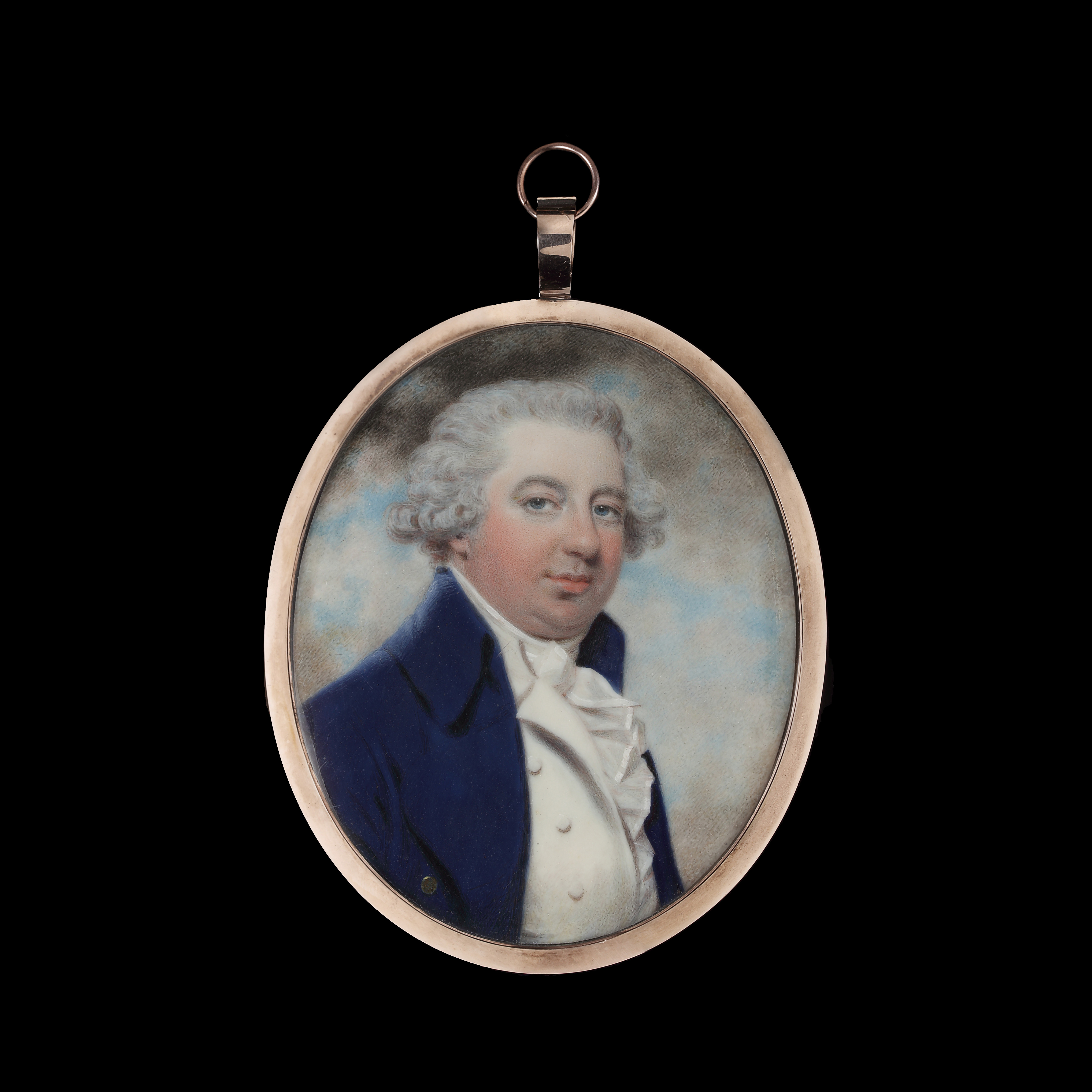
Fig. 1: JOHN DOWNMAN (1750-1824), Portrait miniature of George Carpenter, 2nd Earl of Tyrconnel (1750-1805), wearing a blue jacket with a white waistcoat and cravat, his hair powdered; circa 1790, oval, 8.2 cm (3 1/5 in) high
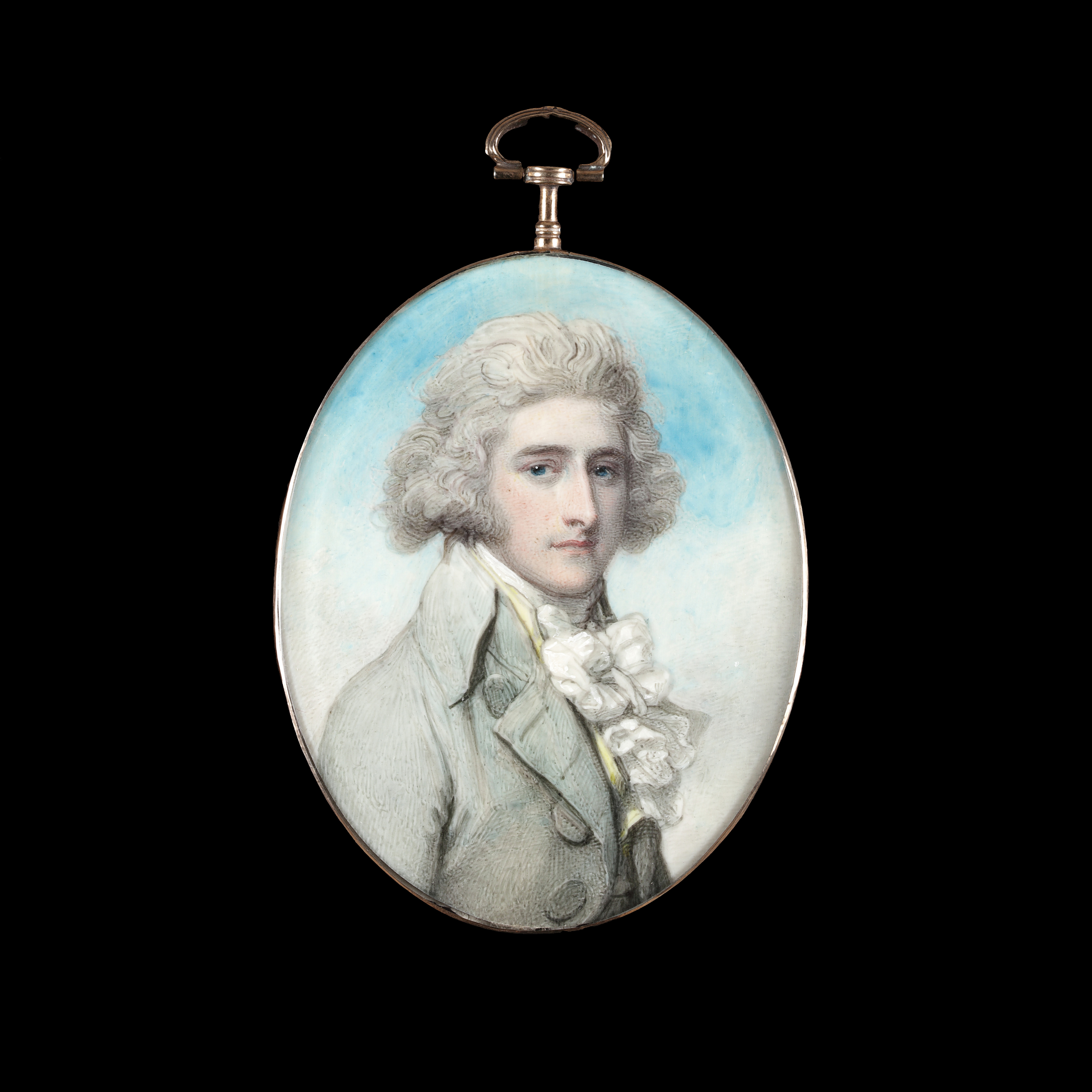
Fig. 2: RICHARD COSWAY (1742-1821), Portrait miniature of John Bowes, 10th Earl of Strathmore (1769-1820), wearing a light blue coat, yellow waistcoat, and white frilled cravat, his hair powdered white; 1791, oval, 8.6cm (3 2/5in) high
-Francis Seymour Conway, 1st Earl Hertford, to Horace Walpole, 20 July 1776. [1]
The news of the divorce had travelled, and was even reaching figures like Walpole, as demonstrated by the extract from the letter to him above. Here would be a good point at which to explain the significance of the coverage in Town and Country, too. This magazine, which was published monthly between 1769 and 1796, focused largely on the affairs of the upper class in the period, outlining situations like these in which divorce and infidelity had come to light. One particular section, The Histories of the Tête-â-Tête, detailed the stories of affairs, with blanked-out names of those involved, whose identity could be guessed easily given their portraits were featured at the beginning of the section.
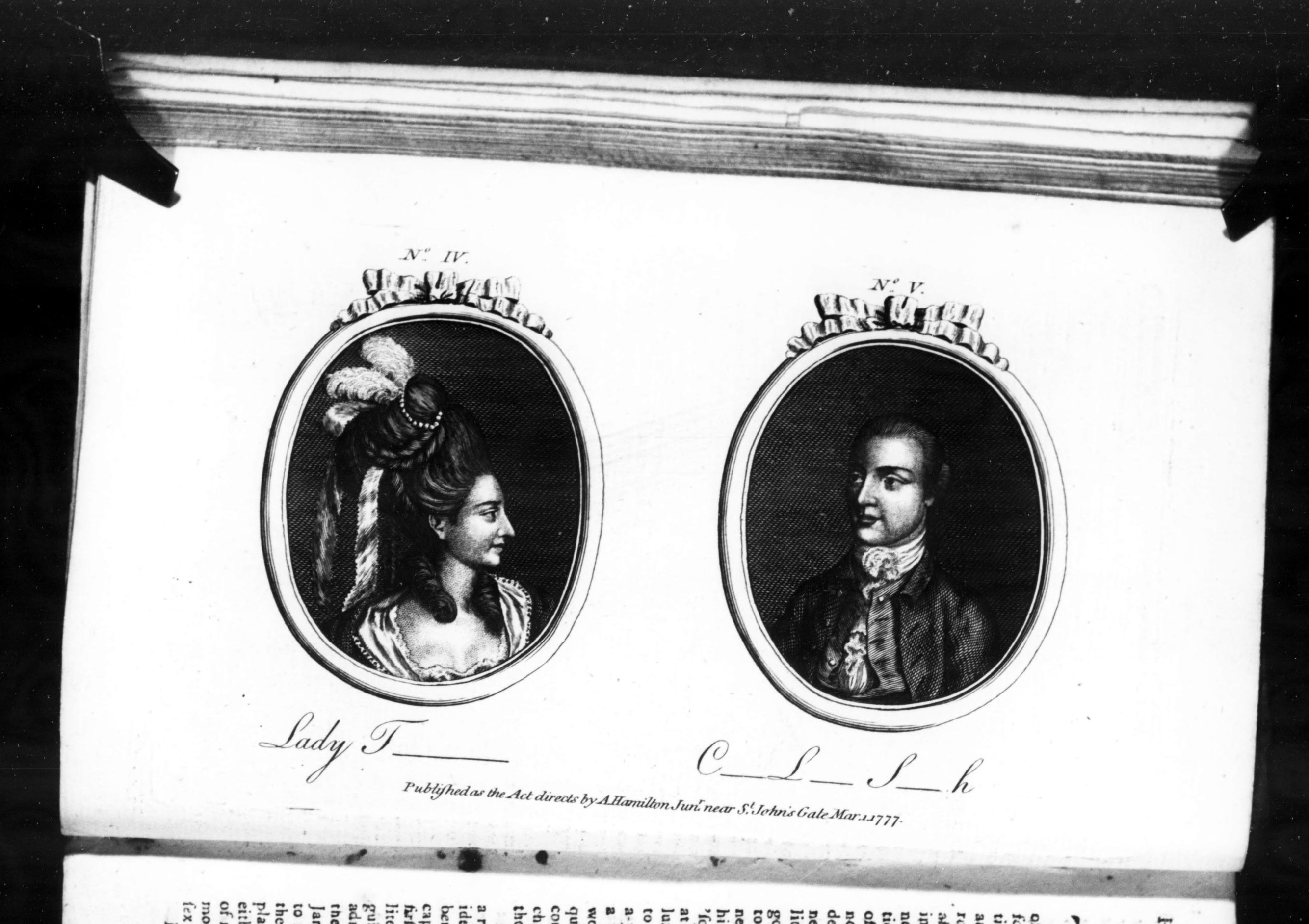
Fig. 3. From Town & Country Magazine, February 1777, opp. p. 65. (taken from archive.org[3])
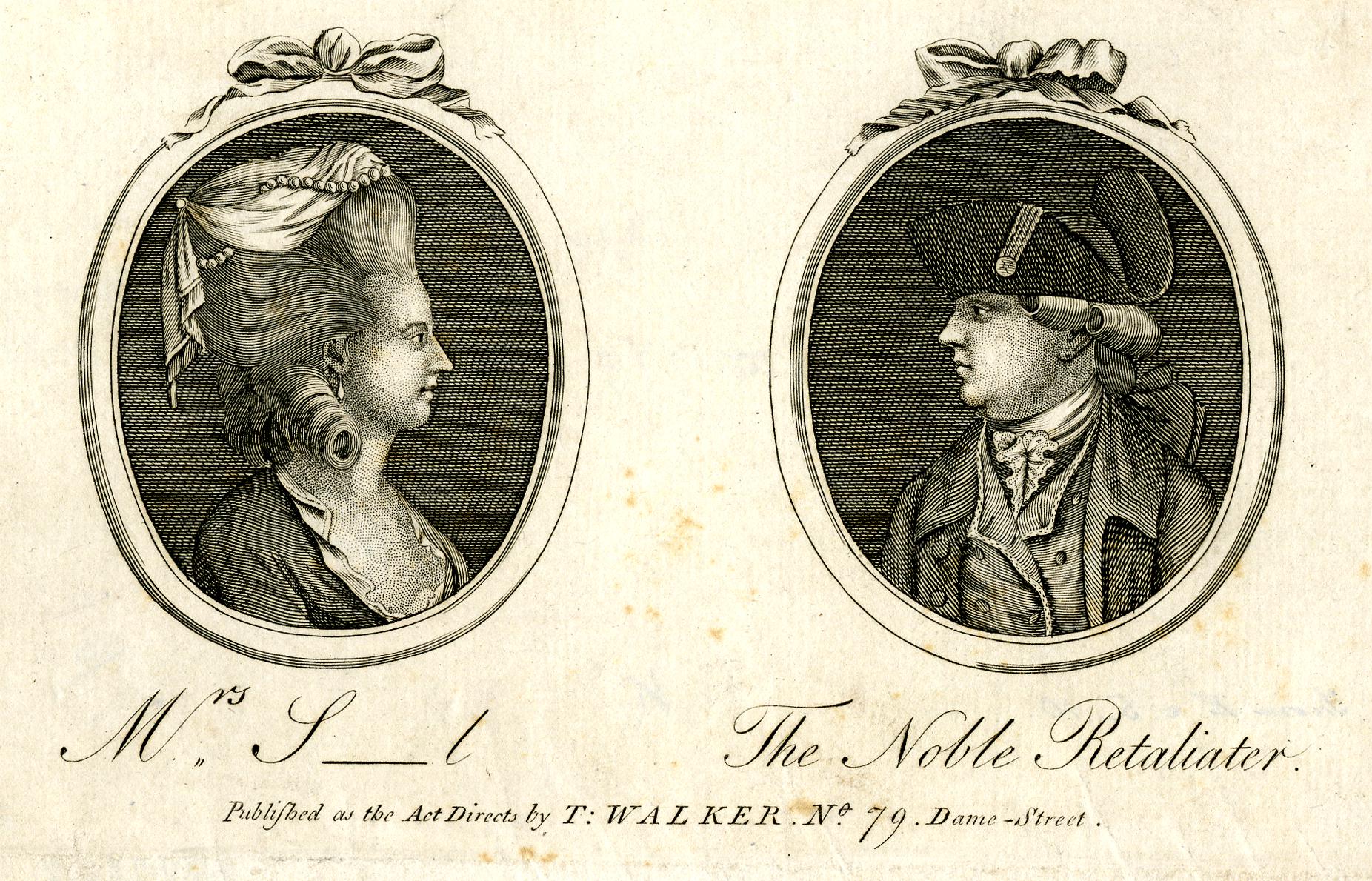
Fig. 4. British Museum Prints & Drawings, Ee,5.10, taken from Town & Country Magazine, June 1779[4], opp. p. 289.
People were clearly aware of Tyrconnel’s love life and the perceived failures he experienced. According to the article, he travelled widely after the collapse of his previous marriage, to Dublin, Paris, Florence, Venice, and The Hague, meeting many women along the way. Upon his return to England, he began to pursue Elizabeth Sewell, who was married, but, ‘a favourable opportunity made him forget that she was boand by all the ties of matrimony to another man.’[5]. Perhaps Tyrconnel felt that he was getting back in some way by doing the very thing to another woman that Smith had done to break him and Frances apart. Or perhaps it was true love.
The latter can be confidently dismissed, given that, after divorcing her husband in 1778, Elizabeth did not run away with Tyrconnel, but instead a ‘military cher ami’. Once again, he was left alone.
This second marriage was more successful than the first when it came to children- the pair had a son, who died in 1790, and a daughter, Susannah (d. 1827). However, as would be assumed inevitable at this point, fidelity was not a strong point in the relationship. In 1787, Sarah embarked on an affair with none other than Frederick, Duke of York and Albany (1763-1827), who had just returned to England from Hanover, where he had lived as Prince-Bishopric of Osnabrück.
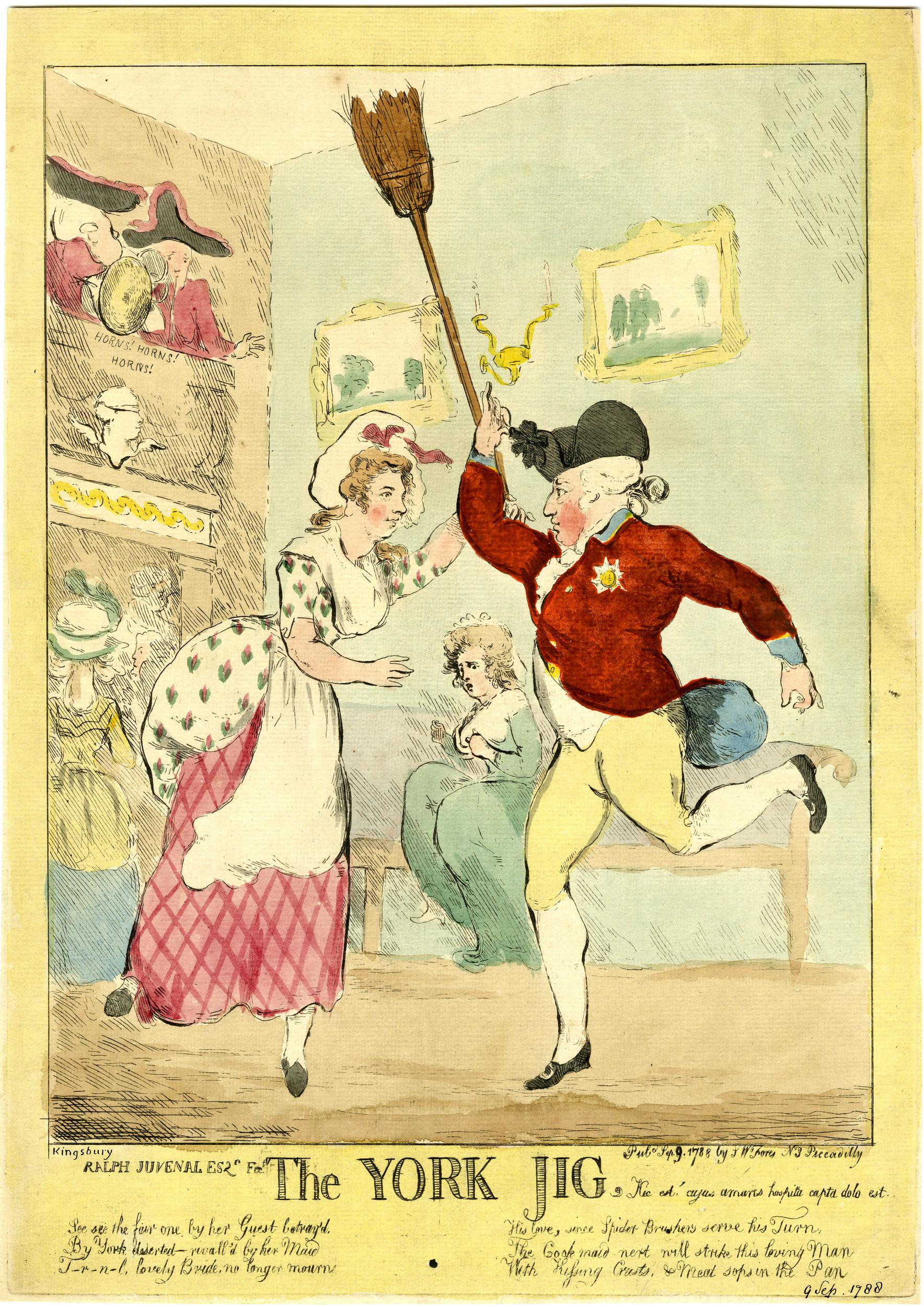
Fig. 5. ‘The York Jig’, printed by S. W. Fores, September 1788, copy in the British Museum, 1868,0808.5786.
By York deserted - rivall'd by her Maid
T-r-n-l, lovely Bride, no longer mourn
His love, since Spider Brushers serve his Turn,
The Cook maid next will strike this loving Man
With Kissing Crusts, & Meat sops in the Pan.'
You may have forgotten that Sarah was still married to Tyrconnel- despite having spent so much time away from him. Their marriage appears to have survived this hitch, though the worst was yet to come.
The plot of The Fair Penitent sees Calista torn between her Fiancé and lover. In Sarah’s story, her participation in the play tore her in two directions, between her husband and her new lover, John Bowes, 10th Earl of Strathmore.
Finally, a connection between the miniatures has arrived!
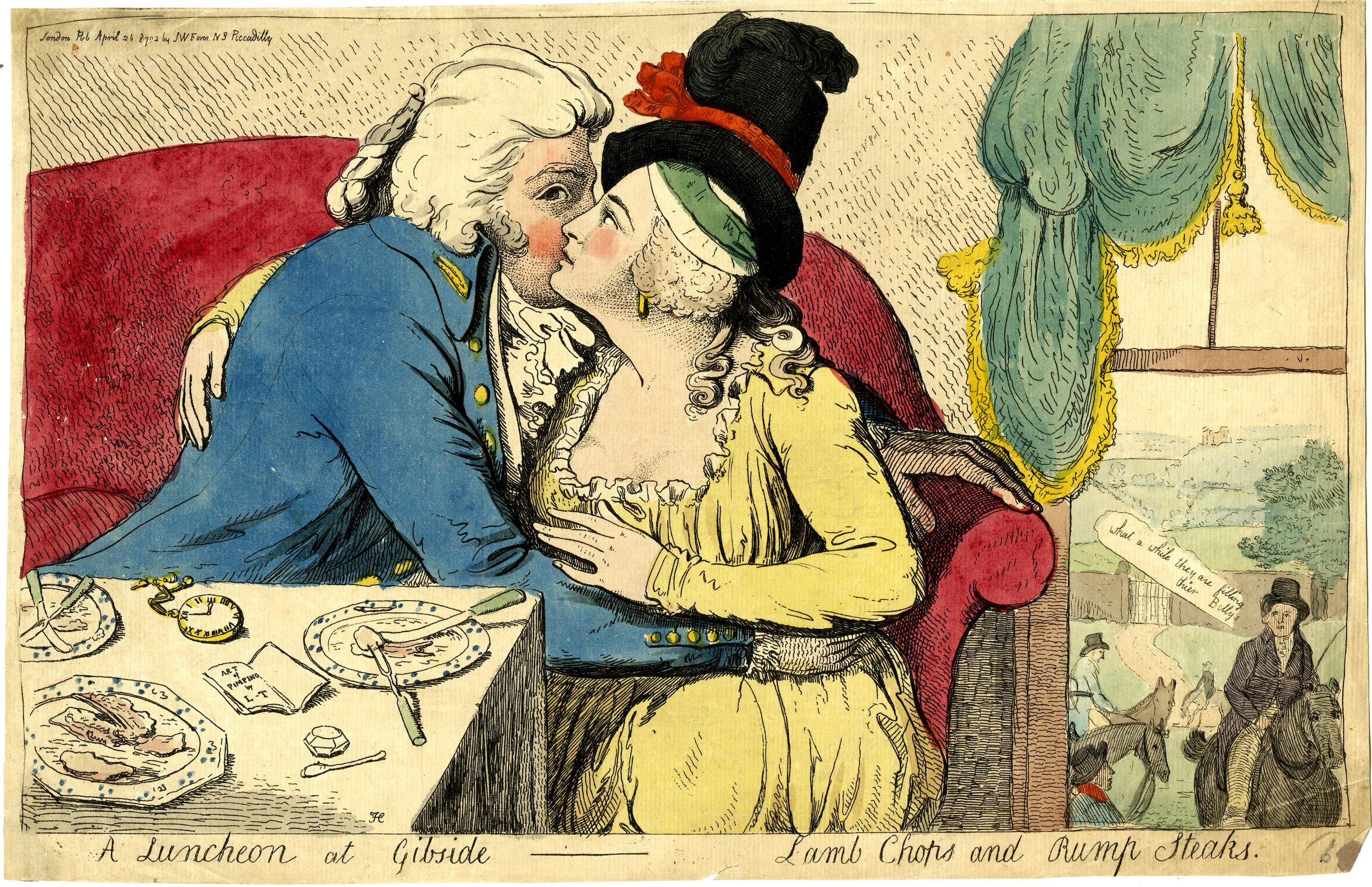
Fig. 6. Isaac Cruikshank, ‘A Luncheon at Gibside- Lamb Chops and Rump Steaks’, 1792, British Museum, 1868,0808.6185.
Strathmore was probably no stranger to women’s affections, too. His father had been called one of the most attractive men in the country, and Cosway’s portrait of the younger Strathmore is a testament to his dashing looks. Despite this, he was not married when he met Sarah. Following the acquaintance, she began to visit him in the North, staying at his various estates. One of these was Gibside, the setting for the satirical print shown in figure 6. Our lovers are depicted seated for lunch- a feast of Lamb Chops and Rump Steaks (possibly a reference to the Irish roots of the Tyrconnels and the Scottish roots of the Strathmores). On the table lies an open pamphlet, entitled ‘The Art of Pimping by L.T. [Lord Tryconnel]’, and through the window, Tyrconnel himself can be seen on a horse, waiting for his wife. He declares:
It was also public knowledge that Sarah was living at Gibside in the last years of the eighteenth century. Once again, our ‘noble retaliator’ has been left alone. As James Duff, 2nd Earl of Fife (1729-1809) commented in 1791:
‘This Lord will never keep a wife, he must tie the next to the bed post.[7]’
‘Her Ladyship was in her 36th year of her age, and died at the seat of Lord Strathmore, at Gybside, near Newcastle, in the County of Durham, where she had been on a visit to his Lordship, having left her father’s house in Portland place only about a fortnight before. The immediate cause of her death is supposed to have been a violent cold caught in her journey.[9]’
Despite every attempt to make it seem like Sarah was not just living with her lover, it became known that she was with him when she died. Her funeral was grand, and she was buried at Westminster Abbey, where she had a family vault. It was recorded by Raconteur and Author Augustus Hare that her ghost haunted Gibside, but as with many of the sources here, he may have been exaggerating ever so slightly.
Susannah herself was drawn by Downman, the artist responsible for the portrait of her father currently with The Limner Company (fig.1), on multiple occasions. Many of these drawings now survive in the British Museum department of Prints and Drawings.
I believe this information comes from a letter written in 1802 by the brother-in-law of Tyrconnel, Sir Ulvedale Price (1747-1829)[12]. He mentions Lord Tyrconnell coming from the North, where he has been settling the marriage of his daughter and Strathmore. This marriage did not go ahead, but what may be most shocking to the modern mind is the fact that he considered this and visited Strathmore to settle the matter. In fact, Ulvedale Price states that he hears Strathmore is a good man and wishes the marriage well. At the point at which the letter was written, Tyrconnell was genuinely considering it.
Our ‘Noble Retailiator’ has not retaliated and remains surprisingly noble in this situation. This is where we leave him. He did not marry again and died three years later, in 1805.
John Bowes Jr. went on to found the Bowes Museum that exists today. His mother married his tutor, William Hutt. As far as the tales recounted above go, this was a story that had a happy ending.
[2] R. Thorne (ed.), The History of Parliament: the House of Commons 1790-1820, 1986.
[3] https://archive.org/details/sim_town-and-country-magazine-or-universal-repository_1777-02_9/page/64/mode/2up
[4] For the magazine itself, see https://archive.org/details/sim_town-and-country-magazine-or-universal-repository_1779-06_11/page/288/mode/2up
[5] Town & Country Magazine, June 1779, p.291.
[6] https://www.portraitminiature.com/artwork-details/878114/0/ozias-humphry-1742-1810-portrait-of
[7] A. and H. Tayler, Lord Fife and his Factor, pp.231-2.
[8] The Gentleman’s Magazine, October 1800, p.1011, see https://archive.org/details/sim_gentlemans-magazine_1800-10_70_10/page/n101/mode/2up?view=theater
[9] The Gentleman’s Magazine, November 1800, p.1104, see https://archive.org/details/sim_gentlemans-magazine_1800-11_70_11/page/1104/mode/2up
[10] https://www.nationaltrustcollections.org.uk/object/1276772
[12] In the Morgan Library and Museum, MA 1581.9, https://www.themorgan.org/literary-historical/414080.
04 Sep 2025
The Bard, the Card and Hilliard; an Important New Discovery
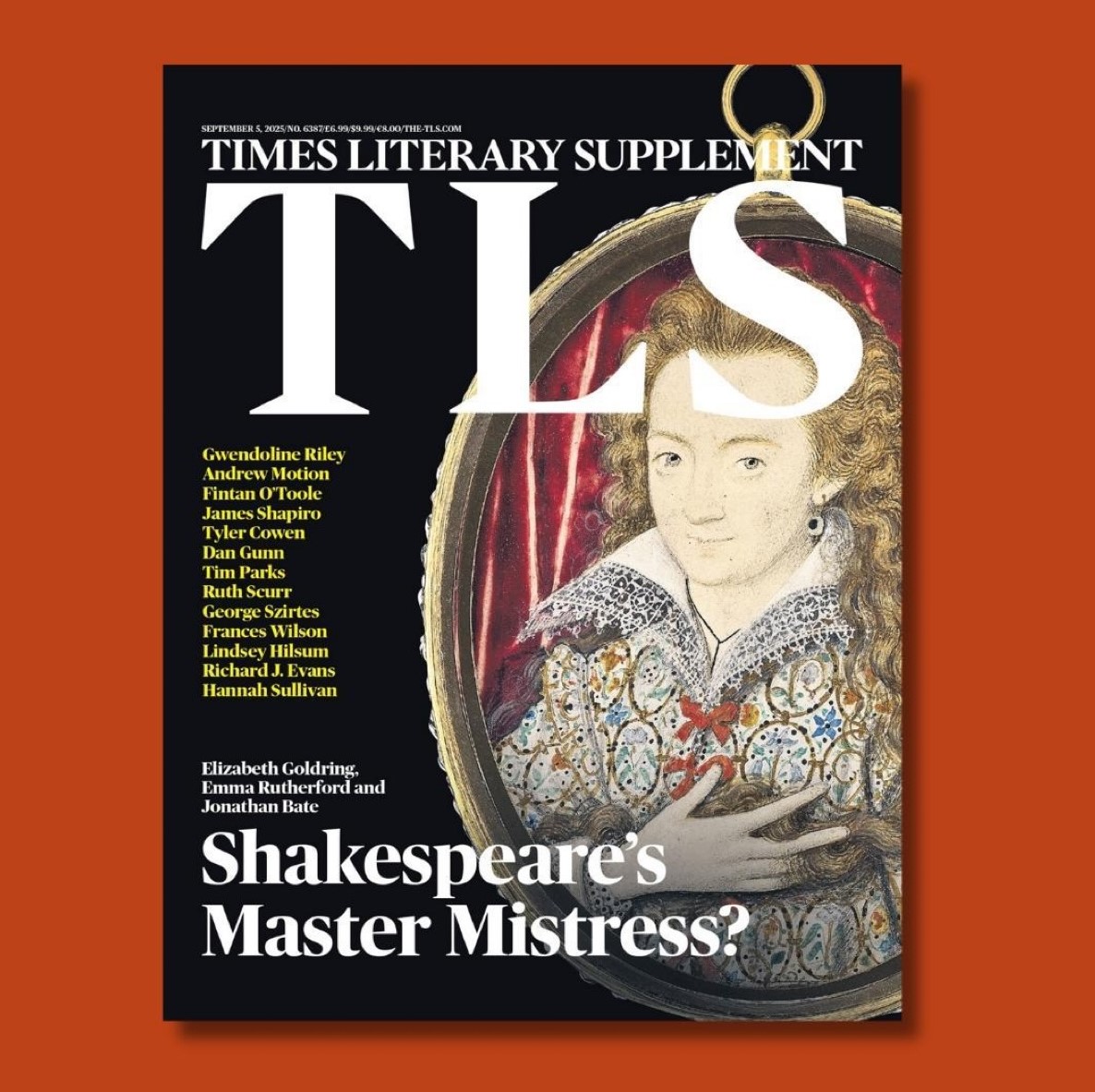
For the last 8 months, Emma Rutherford, Elizabeth Goldring and Professor Sir Jonathan Bate have been researching one of the most important art discoveries of recent years – a portrait miniature by Nicholas Hilliard (c.1547-1619) of Henry Wriothesley (1573-1624), 3rd Earl of Southampton, datable to the early 1590s. It is published in the Times Literary Supplement, The Guardian, The Telegraph, Antiques Trade Gazette, Daily Mail, Huffington Post, Pink News and GB News. Emma and Elizabeth also discuss the discovery on podcasts Not Just the Tudors and The Tudor Chest.
When the miniature was first opened by conservator Alan Derbyshire, there was a surprise on the reverse. Portrait miniatures of the 16th and 17th century were painted on vellum stuck down on playing cards – in this case a heart suit. Here the heart had been vandalised – obliterated by an arrow, spade or spear.
While all evidence and provenance points to Southampton as the sitter in this miniature, the defaced heart posed something of a mystery. However, after 430 years we may be able to unravel this.
Although it must remain a theory, the most likely scenario is that the reverse of this miniature was defaced by the spurned lover of the sitter. To get to the back of the miniature, it would have been taken out of the gold locket in which it would have been presented. The action of inking over the heart seems to say ‘you have pierced my heart’. So what with? It is known that Southampton had several male lovers, one of whom may have returned this miniature, spurned by the marriage of their paramour to Elizabeth Vernon in 1598.
One person who would have been a possible recipient for this miniature would have been William Shakespeare and it is of course tempting to see the inked arrow on the reverse as in a fact a spear and a pun on his name. Why Shakespeare? In terms of his relationship with Southampton we have the dedications from his two poems – Venus and Adonis in 1593 and The Rape of Lucrece in 1594 (written around the time the miniature was painted). These two dedications shift from a conventional plea for patronage in 1593, evolving into something approaching intimacy in 1594. The latter dedication includes the lines “The love I dedicate to your Lordship is without end … What I have done is yours; what I have to do is yours; being part in all I have, devoted yours”.
Southampton is also the most likely candidate for the ‘Fair Youth’ of Shakespeare’s sonnets – in which the young man to whom the outpouring of desire by the writer is praised for his androgynous beauty.
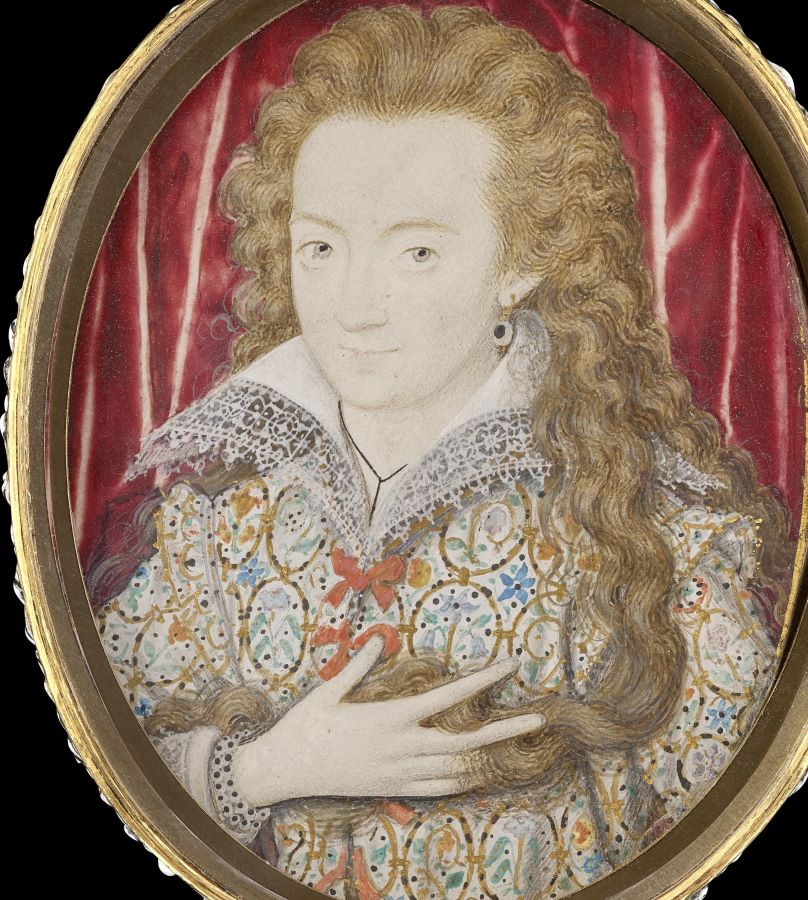
It is even possible that these sonnets were written with the knowledge of this miniature – as the reader is invited to return the gaze of the fashionably dressed and bright-eyed “Master Mistress”, who has been transformed into a painting limned by the hand of Nature herself. Executed perhaps in miniature on the “gentle heart” of a playing card?
FOR PRESS ENQUIRIES
Please contact Tracy Jones, Brera PR - tracy@brera-london.com / +44(0)1702 216658 / +44(0)7887 514984 / brera-london.com
03 Sep 2025
Miniature ‘Peintresses’ of the Exiled Stuart Court
Under James II, the family lived in France. Upon his death in 1701, his eleven-year-old son, James Francis Edward Stuart (1688-1766), was declared the King of England by Louis XIV. In England and Scotland, he became known as ‘The Pretender’ [1] by Whigs, and ‘The King Over the Water’ by his Jacobite supporters. In 1718, following an unsuccessful invasion of Scotland to reclaim the throne in 1715, James moved his family to Italy, where they settled in Rome. It was here that his two sons, Charles Edward Stuart (1720-1788) and Henry Benedict Stuart (1725-1807), were born. It was Charles who gained the most attention out of the two sons, becoming known as ‘The Young Pretender’ by the Whigs and ‘Bonnie Prince Charlie’ by the Jacobites. He would remain on the continent throughout his life, except for an unsuccessful attempt to invade the United Kingdom in 1745. His brother, Henry, turned to Religion instead of royalty and became a Cardinal, one of the longest serving in history. Neither brother had legitimate children [2], and the Stuart line ended with the death of Henry in 1807.
During this period of exile, portraiture became an important mode through which the Stuarts could exert and maintain their influence amongst Jacobite circles in England and Scotland. There had been six monarchs of England and Scotland, and then the United Kingdom (after the Act of Union under Queen Anne (1702-1714)), during this time. Portrait miniatures especially became an important method through which visual representations of the Stuarts could be brought into England, given their size and portability. Recently, a portrait miniature of the Old Pretender was sold through The Limner Company. The portrait of James has been attributed to Anne Marie Belle (Née Chéron) (1663-1718), which instantly sheds light on a particular fact about art in the court of the exiled Stuarts: the presence of a distinctly large number of female miniaturists being patronised by the court.
The fact that these artists, each discussed in more detail below, were working for the exiled court is not unknown, and their work is recorded in both the Stuart Papers [3] and more recent secondary literature on the subject, such as the works by Edward T Corp [4]. However, there has been no writing dedicated only to the female artists working within the court. This is by no means a comprehensive study of these artists, but an attempt to dedicate more time to researching their lives and works.
N.B. I will refer to James Francis Edward Stuart as ‘The Old Pretender’, and his son, Charles, as ‘The Young Pretender’ throughout the blog, for ease.
Female miniature painters at the Stuart Court in France
Upon their exile from England, James II and the (now ex-) Queen Consort Mary of Modena were welcomed to France by James’s 2nd Cousin, Louis XIV. Known as ‘the Sun King’, they arrived at an extravagant and probably somewhat overwhelming court. Distanced from Britain, it was important for the exiled rulers to establish some authority in their new home. Corp (2001) has argued that some of the first portraits produced for the exiled court, executed by Nicholas de Largillière (1656-1746) and Benedetto Gennari (1633-1715), were intended to promote a sense of pomp and circumstance, and to prove that James II still meant business [6].
At this point, James Francis (our Old Pretender) was still a baby. He featured in some of these royal portraits, including one by de Largillière (fig.1), in which he is depicted alongside his younger sister, Princess Louise-Maria (1792-1812). In this early period, many of the portraits being commissioned were by these male court artists. However, as the 18th century rolled in, the first female court artists began to appear, following the death of James II in 1701. In the same year, the court painter Alexis-Simon Belle (1674-1734) married Anne Marie Belle (née Chéron) (1663-1718). It is with Chéron that we will begin this brief survey of the female artists at the court and the work they produced.
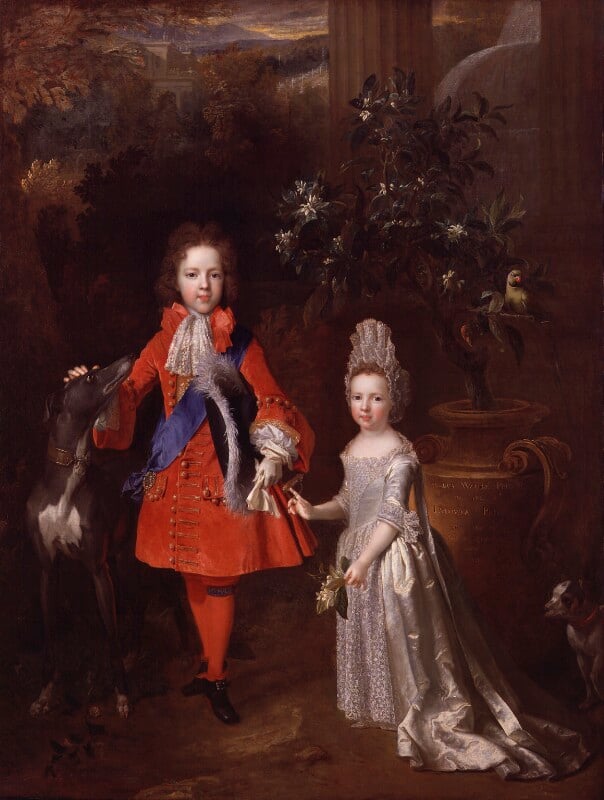
Fig. 1: NICHOLAS DE LARGILLIÈRE (1656-1746), Prince James Francis Edward Stuart; Princess Louisa Maria Theresa Stuart, oil on canvas, 1695. National Portrait Gallery, London, NPG 976.
Anne Chéron (later Belle) (1663-1718)
Very little about the life of Anne is recorded outside of the miniatures that she is known to have painted of the exiled Stuarts. Her maiden name can be connected to the artistic Chéron family. She had at least two siblings, Elizabeth (1648-1711) and Louis (1660-1625), who were successful artists in their own right. Anne likely became involved with the Stuarts when her sister was working for the court of Louis XIV. In the Witt photographic archive, the single image filed under Anne’s name is a portrait of Marie Theresa of Spain (1638-1683), the wife of Louis XIV. Whether or not this portrait was painted by her is up for debate- if it is, it is a very early work painted when Chéron was only twenty. It may have been that this work was part of Anne’s introduction to the Stuarts and encouraged them to commission works from her.
The Limner Company has recently sold a portrait by Anne, of the Old Pretender. It is from circa 1710, and depicts James in armour, wearing the blue sash of the Order of the Garter (the oldest and most senior Order of Chivalry in Britain, to this day). At this point a young gentleman, he is being presented as a figure with real power, just the image which his Jacobite followers would have (hopefully) recognised, and which he wished to express to them.
Most miniatures attributed to Chéron are assumed to be copies of works by her husband. This was a typical practice of the time, and many female artists (as will be exemplified below) would not produce completely original compositions, instead taking elements from the works of their masters or older masters [7].
However, more creativity must be ascribed to Anne than she has already been awarded, given that the miniature recently sold by The Limner Company does not exactly match a portrait painted by her husband. James faces a slightly different direction and has full sleeves of armour, whereas many of the other portraits done by Belle in the period only show him in half sleeves. It is also possible that many more miniatures than those that have currently been attributed to Anne exist. A plethora of records of miniatures from the ‘Circle of Alexis Simon-Belle’ are known, and many of these are comparable to works attributed to Anne. Both wife and husband continued to paint James and his sister into the 1710s, remaining important figures within the artistic scene of the Stuart court in France.
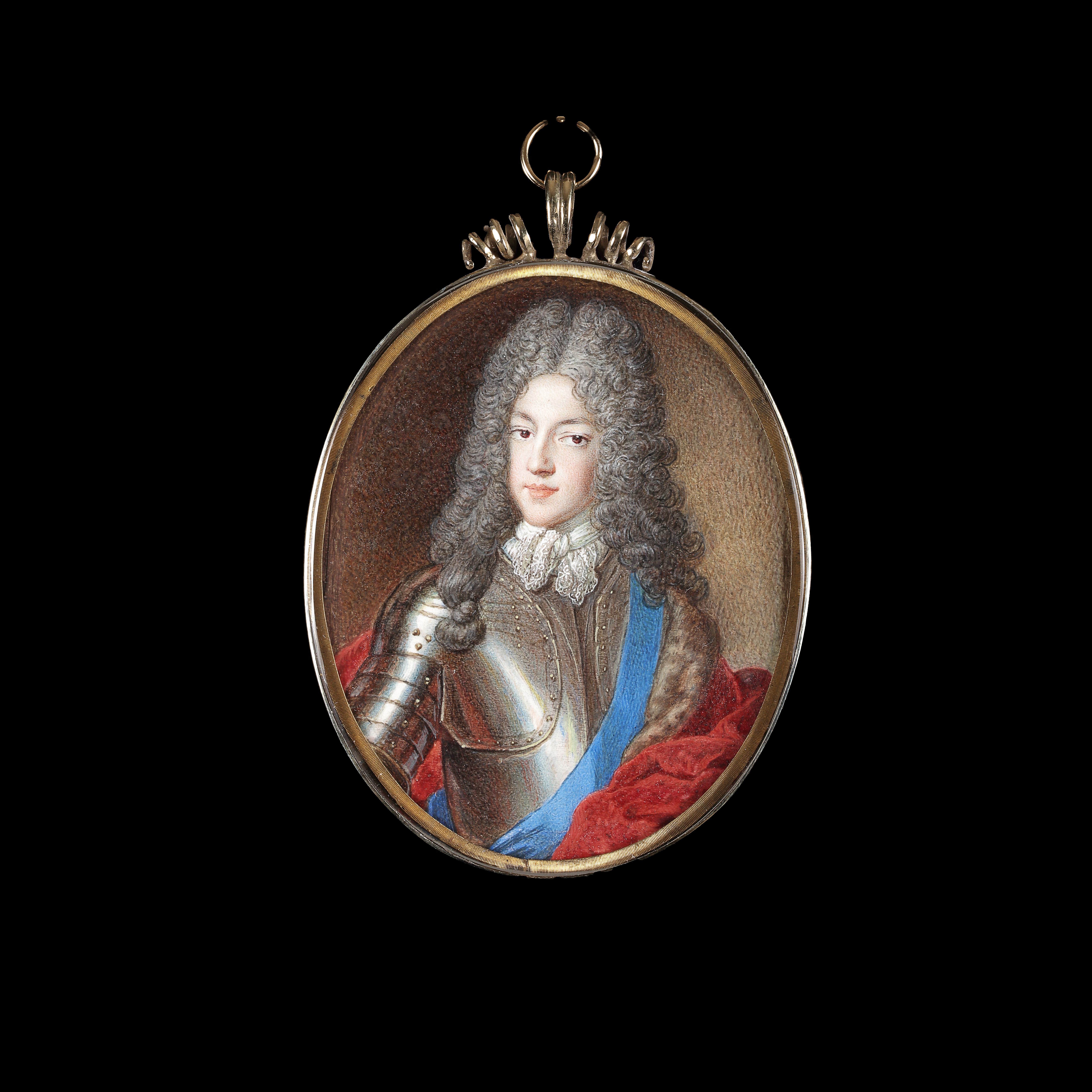
Fig. 2: ANNE MARIE BELLE (NÉE CHÉRON) (1663-1718), Prince James Francis Edward Stuart (1688-1766), 'The Old Pretender', wearing armour, white lace stock and blue sash of the Garter, circa 1710s, Watercolour on vellum, backed with a playing card (clubs), Original sharkskin case with gold pinwork, Oval, 72 mm (2 ⅘ in) high. Previously with the Limner Company.
Jacqueline de la Boissière (fl.1690-1721)
Another, less prolific, female artist from this period is Jacqueline de la Boissière. There are at least three known portrait miniatures painted by de la Boissière. Three of those seen by the author come from 1710, two depicting James and the third a woman, identified at different stages as either James’ sister or his mother. This latter miniature was part of a pair in the collection of the Earl of Howe, and both were sold from the estate together. Historically, it is more likely that a pair of portraits would have been painted of brother and sister, rather than brother and mother, and a visual comparison to a portrait of Louisa by Belle [8] provides evidence that this is likely to be of her, rather than her older mother.
As with Anne Chéron, it seems that de la Boissière was introduced to the Stuarts through the French court. She produced portraits of both King Louis XIV and XV [9] for ‘portrait boxes’. These boxes, and ‘Boîte à portrait’ were particularly popular during the reign of the Sun King and were often painted in enamel, some examples being produced by Petitot (fig. 3) [10]. Though none of the extant examples of works by de la Boissière are in this form, it is possible that they were originally set into boxes, from which they have since been removed and given new frames. Very little else about the life of de Boissière is known, apart from the fact that she is recorded to have been ‘well paid’ in Thieme-Becker [11]. Whether or not this was more or less than her male (or female) contemporaries is unknown.
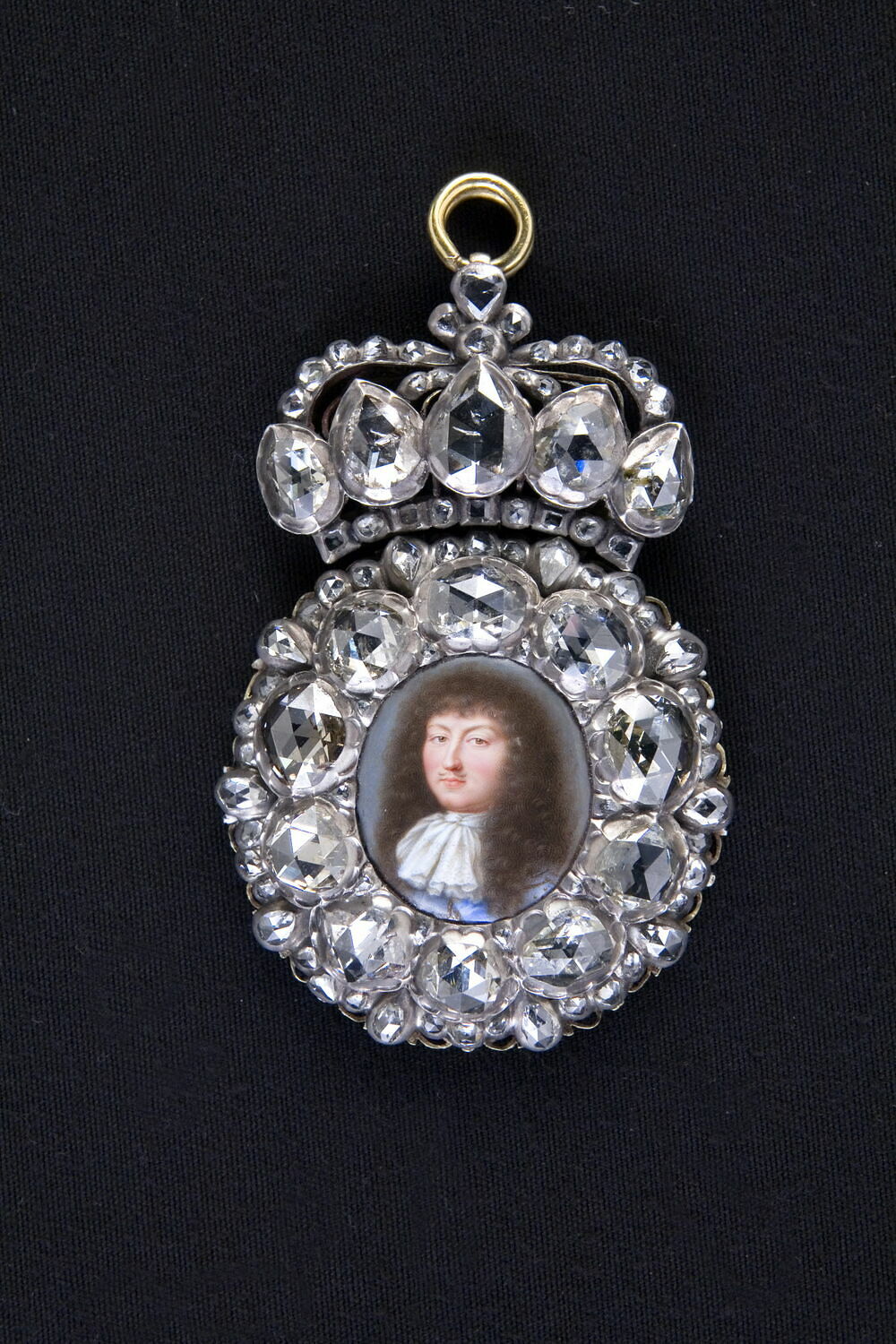
Fig. 3: An example of a ‘Boîte à portrait’, Enamel Portrait by JEAN PETITOT I (1607-1691)
The Stuart Court in Rome (from 1717)
Following the failed Jacobite Rebellion in 1715 and the establishment of a new Anglo-French Alliance in 1716, the Stuart Court was forced to move away from France. By March 1717, they had arrived in Rome and settled in the Palazzo Mutti, which became known as the Palazzo del Rei (or Re).
In 1719, the pretender married Maria Clementina Sobieska (1702-1735), the daughter of the King of Poland, who came to be known by supporters as ‘Our Jacobite Queene’. A year later, in 1720, and following a second failed landing in Scotland, Maria gave birth to her first son, Charles Edward Stuart, later to become known as ‘Bonnie Prince Charlie’, or ‘The Young Pretender’. Five years later, in 1725, he was followed by his younger brother, Henry.
From evidence of extant portraits, it appears that the next fifty years of the Stuart Court were the years in which the most female artists were patronised. As had been the case in France, many of the portraits painted by these ‘paintresses’ [12] were of the younger generation of the family. The Old Pretender, according to Corp, was not keen to look ‘old’, and though he did have his portrait taken by artists such as Antonio David and Francesco Trevisani, many of the transportable engravings he circulated from this period were taken from portraits painted while he was still in France.
It is also during the exiled court’s time in Rome that Bonnie Prince Charlie, later to become known as the ‘Young Pretender’, began to take more responsibility for the commissioning of portraits. Though many requests for these still come from his father, Charles is notably involved in the portraits painted from the 1740s onward, including those by Veronica Stern (see below).
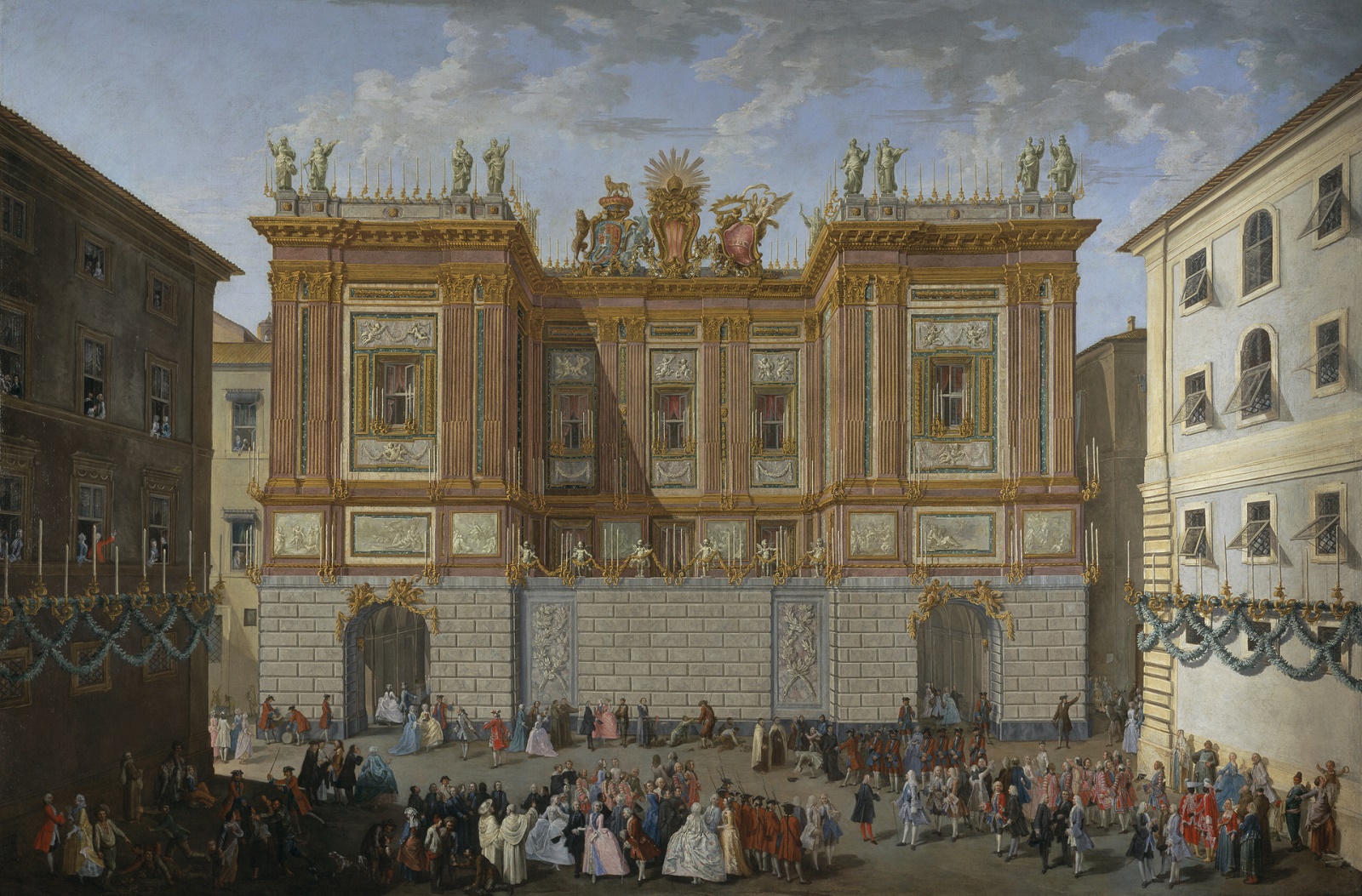
Fig. 4: PAOLO MONALDI (1720-1799), PUBLACCI, SILVESTRI (Louis de Silvestre?), Prince James receiving his son, Prince Henry, in front of the Palazzo del Re, circa 1747-48, oil on canvas, Scottish National Portrait Gallery, PG 3269.
Rosalba Carriera (1675-1757)
One of the earliest known portraits painted by a woman for the Stuart Court in Rome is of Clementina Sobieska, by Rosalba Carriera [13]. Dated from circa 1720-25, Clementina is shown in her wedding robes, wearing the pearls of her deceased mother-in-law, Mary of Modena.
Rosalba Carriera had a long and varied career, which numerous authors have done proper justice to (including Bernardina Sani (1988) and Neil Jeffares (2006)). Rosalba, as she is often known, gained success as a pastellist and miniature painter, and is said to have been the artist to introduce painting in watercolour on ivory, which would go on to become the most common medium for miniatures. Throughout her life, she was mainly based in Venice, and she was also admitted to the Accademia di San Luca in Rome in 1705, on merit, unusual for female artists at the time. She had strong connections with other important artists of the day, including Giovanni Antoni Pellegrini (1675-1741), who was married to her sister.
It was from Venice that Carriera was commissioned by the Stuart family to paint a portrait of the (then young) Young Pretender in pastel, during his semi-state visit there. The original was sent to Rome, and a copy was taken [14], and several other versions are known. One of these portraits appeared at auction in 2018 (fig 5). These later portraits were done in the more common medium for the artist- pastel on paper. The aforementioned miniature of their mother, however, is painted in watercolour on ivory.
Carriera’s works have received much attention, and rightfully so; her delicate pastel portraits and vast oeuvre demonstrate not only her skill but the recognition of this during the period, given that so many important social figures in Italy wished to have their portraits taken by her. By the time that the young Prince had his portrait taken, Carriera’s client base was well-established, and correspondence quotes her as being ‘old’, in reference to a warning that her work may not be done quickly, as she also ‘has a good dale [sic] of work on her hands’ [16].
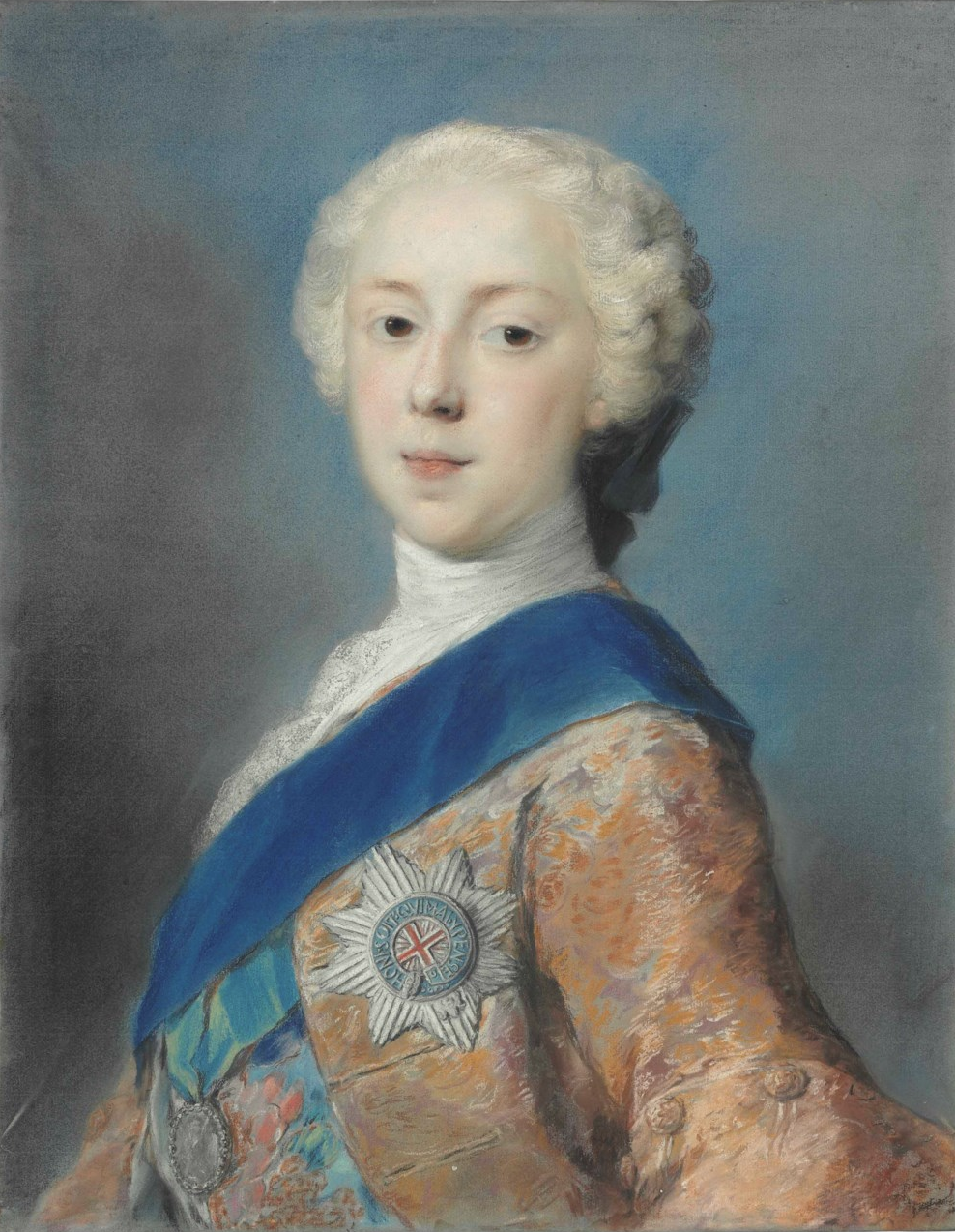
Fig. 5: ROSALBA CARRIERA (1675-1757), Portrait of Prince Charles Edward Stuart, half-length, wearing the Order of the Garter, pastel on blue paper, sold Christie’s, New York, 30 January 2018, lot 60.
Giovanna Fratellini (1666-1731)
Carriera was active in Venice at the time that Giovanna Fratellini was visiting, under the aegis of her patron, to paint the aunt of Maria Sobieska (our ‘Jacobite Queene’). In her home city of Florence, Giovanna worked for Cosimo III de Medici (1642-1723) and his daughter, Violante Beatrice of Bavaria (1673-1731). She had trained in pastel, oils, miniature, and enamel under Anton Domenico Gabbiani (1652-1726) and Domenico Tempesti (1655-1737).
It is more than possible that Fratellini’s introduction to the Stuart family came through her taking a portrait of Maria’s aunt. In the Stuart papers, it is recorded that in 1729 Fratellini was paid for five pictures (all miniatures) for the king. However, it seems that this was a second payment, and that Fratellini had painted other portraits for the king previously. More confusion arises in the fact that her son, Lorenzo Fratellini (c.1690s-1729) was also active in the period, and that some of the payments made to a ‘Fratellini’ are addressed to a man, rather than a woman. All the portraits painted by Giovanna for the Stuarts, whether or not there were more than five, are unlocated.
The portraits were part of a series of unsatisfactory commissions made by the king at the time. The Fratellinis had been called upon following an initial commission, which Montagu believed to have been to Torelli (see below). Once the Fratellini portraits had been completed, they were paid for, but with the comment that James did not intend to employ Giovanna again in the future- the exact words were that ‘it is not worthwhile to give the Peintress occasion to complain when probably he won't have further occasion to employ her [17].’. It may be for this reason that the portraits have disappeared since.
Despite her lack of success with the Stuarts, other patrons seemed to have been more pleased with her work. A self-portrait, in which she paints another portrait of her son Lorenzo, can be found in the Vasari Corridor at the Uffizi (inv. 1890, no. 2064) (fig. 6).
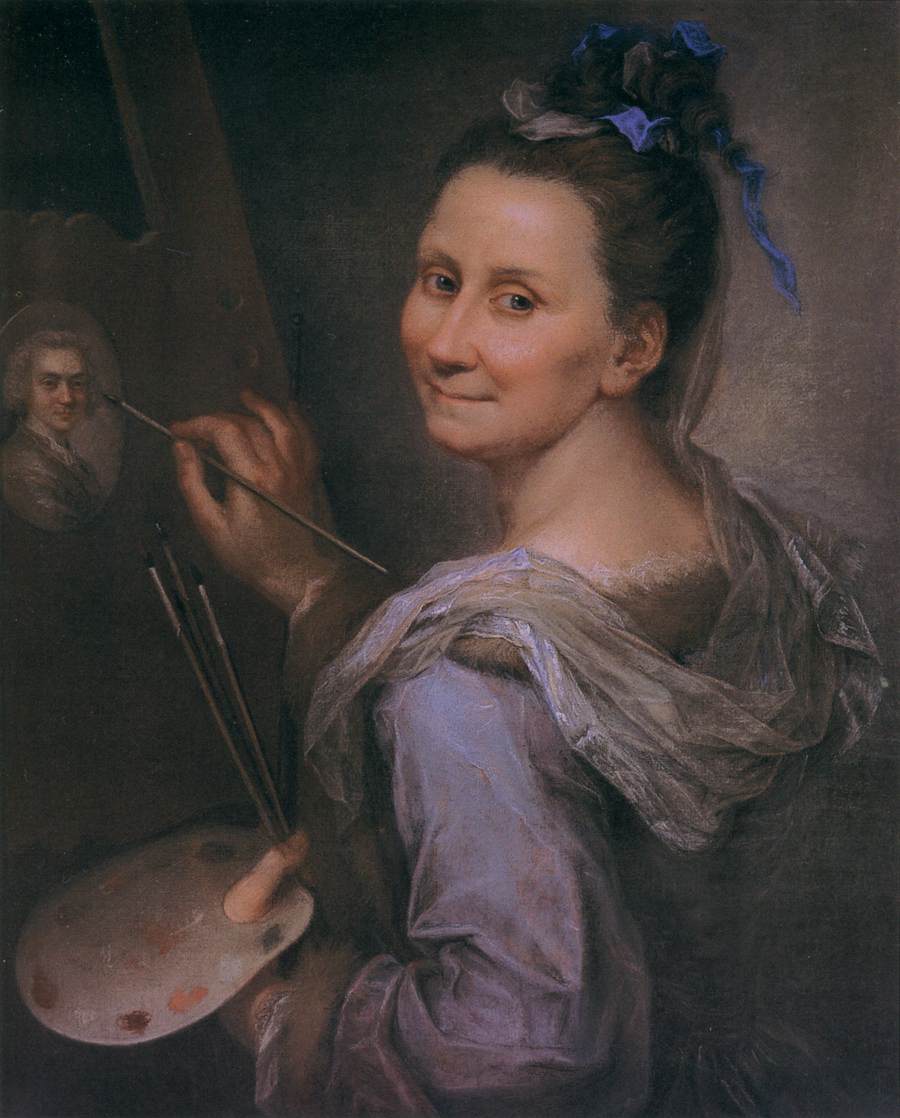
Fig. 6: GIOVANNA FRATELLINI (1666-1731), Self-Portrait, oil on canvas, Vasari Corridor, Uffizi Gallery, Florence, accession number 2064.
Lucia Casselini Torelli
The ‘Torelli’ whose commission Montagu believes Fratellini took over may well be Lucia Caselini Torelli (1673-1762). Torelli was a Bolognese artist, and the wife and mother of successful artists, Felice Torelli and Stefano Torelli, respectively.
There is no direct evidence that Torelli was a miniature painter or that she painted any portraits of the Stuarts, and it is possible that any suggestion of this simply comes from the fact that she was the female member of a family of artists. In the Stuart papers, only a ‘Peintre’, and not a ‘Peintress’, Torelli is mentioned. Corp, in an article on Carriera [18], lists that a portrait of Charles by Torelli was done in 1727; however, there is no reference to the source of this, and this statement is likely based upon the ‘Peintre’ listed in the Stuart papers. No portrait survives, so whether or not it was Lucia, her husband, or her son, responsible is still up for debate.
Orsola Urbani (fl. c.1738-1757)
As with Lucia Casselini Torelli, there are not many sources about Orsola (also known as Ursula) Orbani. It is believed that she was active between 1738 and the late 1750s, and during this time painted at least two portrait miniatures of Henry and one of the Young Pretender. Two of these- one of each brother- were recorded by Bodo Hofstetter in 2008 in his book on the collection of Emil S. Kern. The other portrait of Henry was sold previously through Philip Mould and was painted in 1738.
Urbani was a student of Pompeo Batoni (1708-1787), and it has been suggested that the pair collaborated on miniatures produced in the 1730s [19]. As has been the case for many of the artists discussed here, many of her works were copies of works by other (male) artists.
Veronica Stern (later Telli) (1717-1801)
Also enrolled at the St. Luca Academy in Rome, in a generation below Rosalba, was Veronica Telli, née Stern. Stern was born in Rome and died there. Her father was a German artist, Ignaz Stern (1679-1748), and her brother, Lodovico Stern (1709-1777) was also an artist [20]. Alongside Carriera, she was one of the most successful female Italian artists of her time.
She was commissioned to produce portrait miniatures by other notable families than the Stuarts, including the Royal family of Sardinia. A set of three miniatures of Maria Theresa of Aosta (1773-1832), Carl Emmanuel IV (1751-1819) as Prince of Piedmont, and Victor Emmanuel I (1759-1824), when Duke of Astoa, were sold at Christie's in 1973 [21]. Only a select number of works have been fully attributed to Stern. There are two notable sets of works painted by Stern for the Stuart Family. The first is a pair of portraits of the brothers, which have been exhibited twice historically, at the South Kensington Museum, London, in 1862, and the Exhibition of the Royal House of Stuart, New Gallery, London, in 1889. There has been some confusion surrounding this pair, as only the portrait of Henry was signed. It can be suggested, given how similar the pair are and that they were in the same collection, that both were painted in 1743, the date inscribed by Stern on the portrait of Henry.
The second is a set of four portrait miniatures of The Old Pretender, Maria Clementina, The Young Pretender, and Henry, Cardinal York. The set was painted in 1748, and all four are signed and dated by the artist. Montagu’s transcription of the Stuart archives suggests that the set was commissioned to be copied from four pictures produced by Pompeo Batoni in 1745. This original set was also formed of copies, and it is noted that Henry did not feel satisfied with the final product by Batoni as it was ‘not well copied from the original [22]’. Nevertheless, he sent these on to his brother, who had requested their production in the first place, when they were completed.
In a letter dated September 14, 1745, it is noted that Henry had requested to have Batoni’s portraits copied in miniature, and that Stern appears as ‘the Woman painter' (this is a conjecture by Montagu [23]), commissioned to create these. This set of four miniatures is extant and was last seen at auction in 2008 [24]. In contrast, no full set of portraits by Batoni is extant. In the set, it appears that the portrait of the Old Pretender was based on an original composition by Domenico Dupra, with elements of costume taken from a portrait by Anton Raphael Mengs (1728-1779). The portrait of Maria was taken from Martin van Meyten (1695-1770), and Charles and Henry’s portraits were based on likenesses by Louis Tocque (1696-1772) and Louis-Gabriel Blanchet (1705-1772). It is not possible to prove whether the combination of elements taken from different artists was taken directly from Batoni. Given that Stern signed the works, it is more than possible that these were her artistic combinations, which she then felt she had the right to sign as her own. Another work by Stern, sold through Philip Mould & Company, of a Personification of Spring [25], is known to be an original composition, and therefore credit should be given to her for the ability to produce work of her own imagination.
Other works by Stern have been seen on the market in the past, and a portrait of the Old Pretender attributed to her can be found in the National Galleries of Scotland: Portrait [26].
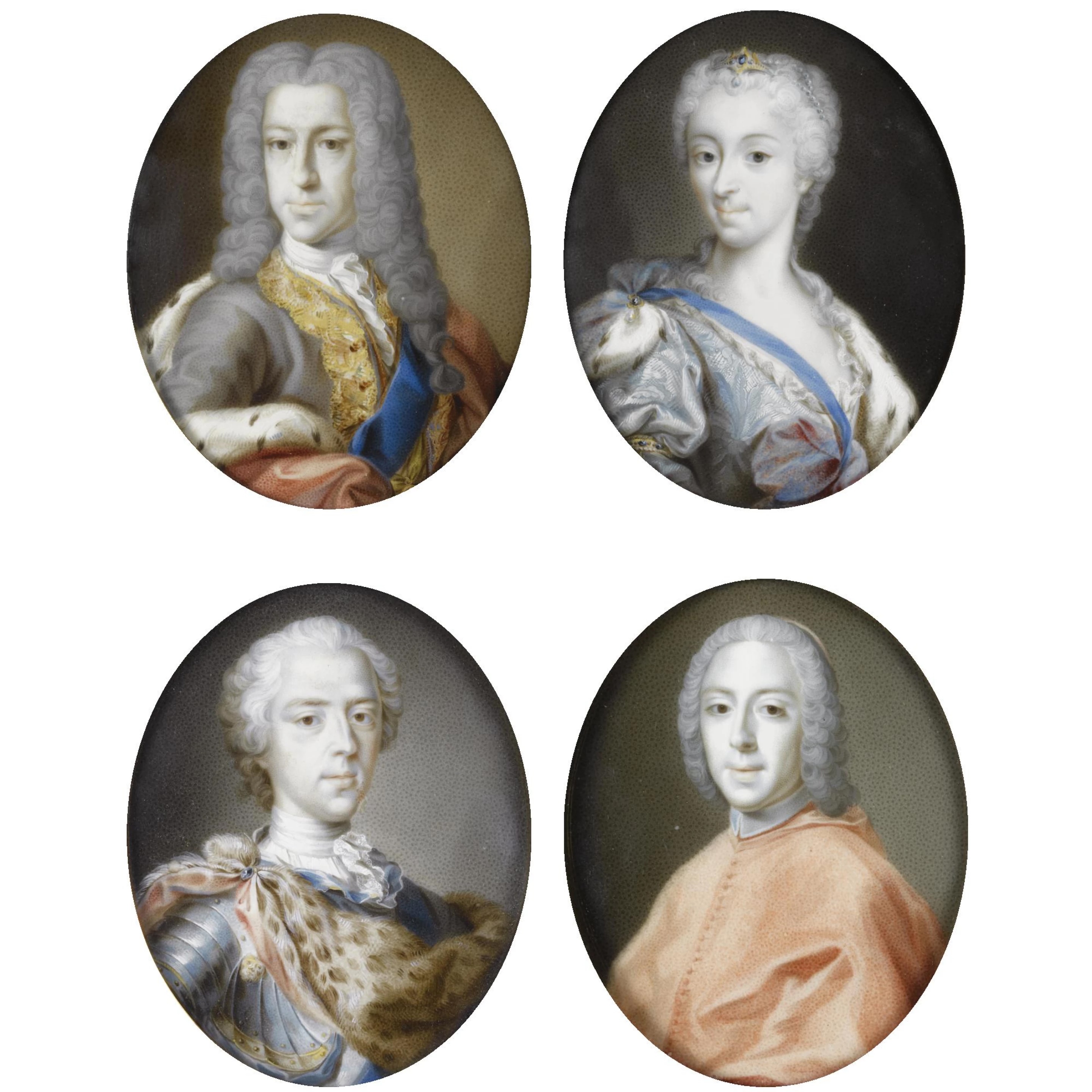
Fig. 7: VERONICA STERN (later TELLI) (1717-1801), A set of four portraits of Prince James Francis Edward Stuart, 'The Old Pretender' (1688-1766); Maria Clementina Stuart, née Sobieska (1702-1735); Charles Edward Stuart, 'The Young Pretender' (1720-1788); Henry Benedict Stuart, 'Cardinal York' (1725–1807), sold Sotheby’s, London, 4 December 2008, lot 104.
Coda
Both the Old and Young Pretenders were keen to employ female artists at their exiled courts. It has been demonstrated here that it is often difficult to trace the lives and works of these artists, and a much larger body of work exists on the oeuvres of their male counterparts from this period. A recent visit to the National Portrait Gallery in Edinburgh has only reinforced this- the author was only able to find one portrait of the Stuarts by a female artist on display, a portrait miniature of the Old Pretender, circa 1704, by Chéron (fig. 8)[27]. One can only hope that, through further research, a larger number of extant examples of their work will be revealed and correctly attributed.
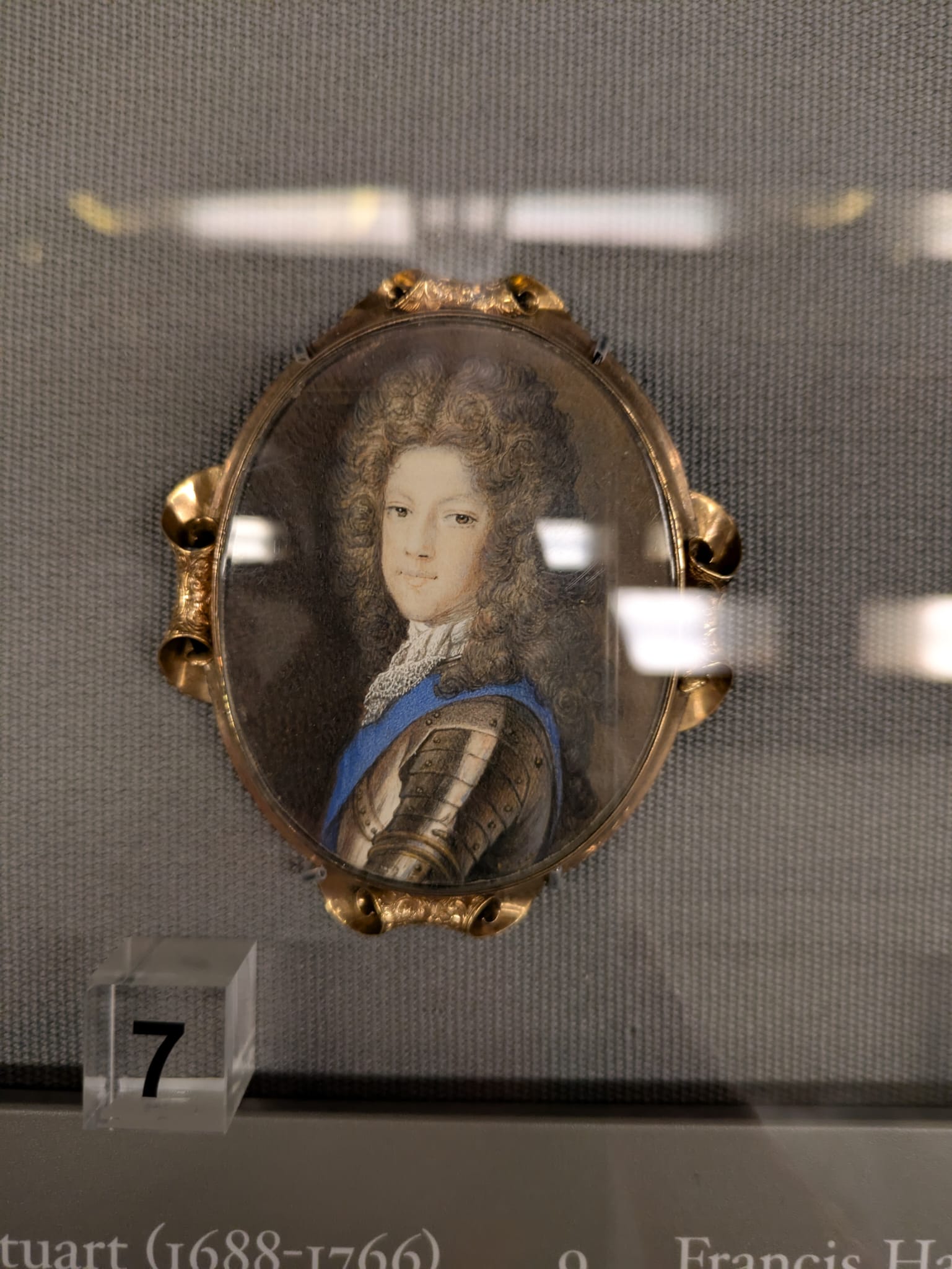
Fig. 8: ANNE MARIE BELLE (NÉE CHÉRON) (1663-1718), Prince James Francis Edward Stuart (1688-1766), 1704, National Galleries of Scotland: Portrait, acsession number PG 1210, author's own image.
[1] This later became ‘The Old Pretender’, following the birth of Charles Edward Stuart.
[2] Charles had one daughter, Charlotte Stuart (1753-1789), who was illegitimate and the daughter of Charles’ mistress, Clementina Walkinshaw (1720-1802).
[3] The Stuart Papers cover c.1689-1800, and are held in the Royal Archives at Windsor.
[4] Corp is the authour of numerous works on the Stuarts, including The King over the Water: Portraits of the Stuarts in Exile (National Galleries of Scotland, 2001), A Court in Exile: The Stuarts in France, 1689-1718 (Cambridge University Press, 2004), and The Stuarts in Italy, 1719-1766: A Royal Court in Permanent Exile (Cambridge University Press, 2011).
[5] For a more in-depth discussion of Mary’s patronage of and friendship with female creatives, see Breeze Barrinton’s new book, ‘The Graces: The Extraordinary Untold Lives of Women at the Restoration Court’ (2025).
[6] Corp suggests that the size of the paintings would demonstrate importance (Corp, 2001, p.34).
[7] Note the use of ‘masters’ here- the term used to define the ‘greats’ and teachers of painting has always been, and still is, gendered.
[8] At Sizergh Castle, circa 1708-10, NT 998407.
[9] See https://www.cittametropolitana.bo.it/pariopportunita/Boissiere_de_la_Jacqueline
[10] See https://theframeblog.com/tag/boite-a-portrait/ for more details.
[11] L. Schidlof, The Miniature in Europe, 1964, vol.I, p.91.
[12] As they were referred to by the Stuarts at the time, in the Stuart papers.
[13] With Philip Mould and Company, 2012.
[14] It is not certain whether this copy was taken by Carriera or another artist. Correspondence mentions ‘pictures’ being sent for copies (Wortley, vol. 200, no. 113).
[15] According to the catalogue note for the version sold at Christie’s, London, 30 January 2018, lot 60 (fig, 5)
[16] From a letter from The Old Pretender to Owen O’Rourke, dated August 9th, 1737, Reproduced in C. S. Wortley, Portraits of the Stuarts in Exile, (unpublished thesis), 1948, section II, p.7.
[17] Wortley (1948), section I, p.26.
[18] E. Corp, ‘The recently discovered portrait of Prince Charles Edward Stuart by Rosalba Carriera (1673–1757)’, The British Art Journal, Vol. 21, No. 2 (Autumn 2020), pp. 54-59 (6 pages), p.59, 3.
[19] Suggested by a catalogue note for another work by Urbani sold through Philip Mould, https://historicalportraits.com/artworks/3821-orsolo-urbani-portrait-minature-of-saint-cecilia-playing-a-viol-1757/, accessed 20/08/2025.
[20] Corp lists a portrait by Lodovico in The Stuart Court in Rome (2023) of Maria. This was in the Studio del Mosaico of the Vatican, who commissioned it, until 1979 (Corp, 22, no.44.).
[21] Sold Christie’s, London, 20 February, 1973, lots 118-120. Lot 121 was also attributed to Telli. The first three lots are similar in composition, implying that they were commissioned as a set.
[22] Wortley (1948), Section III, p.8. It is not clear what the original was, and it should be noted that Henry believed the portrait to be ‘fine’ in itself.
[23] Wortley, Section III, 10.
[24] Sotheby’s, London, Early British Drawings, Watercolours And Portrait Miniatures, 4 December 2008, lot 104 (see figure 7).
[25] See https://historicalportraits.com/artworks/5650-veronica-stern-telli-a-personification-of-spring-c.-1740/.
[26] Accession number PG 1527.
[27] This is a slightly earlier work than that recently sold by the Limner Company, accession number PG 1210.
17 Jul 2025
National Trust Announcement
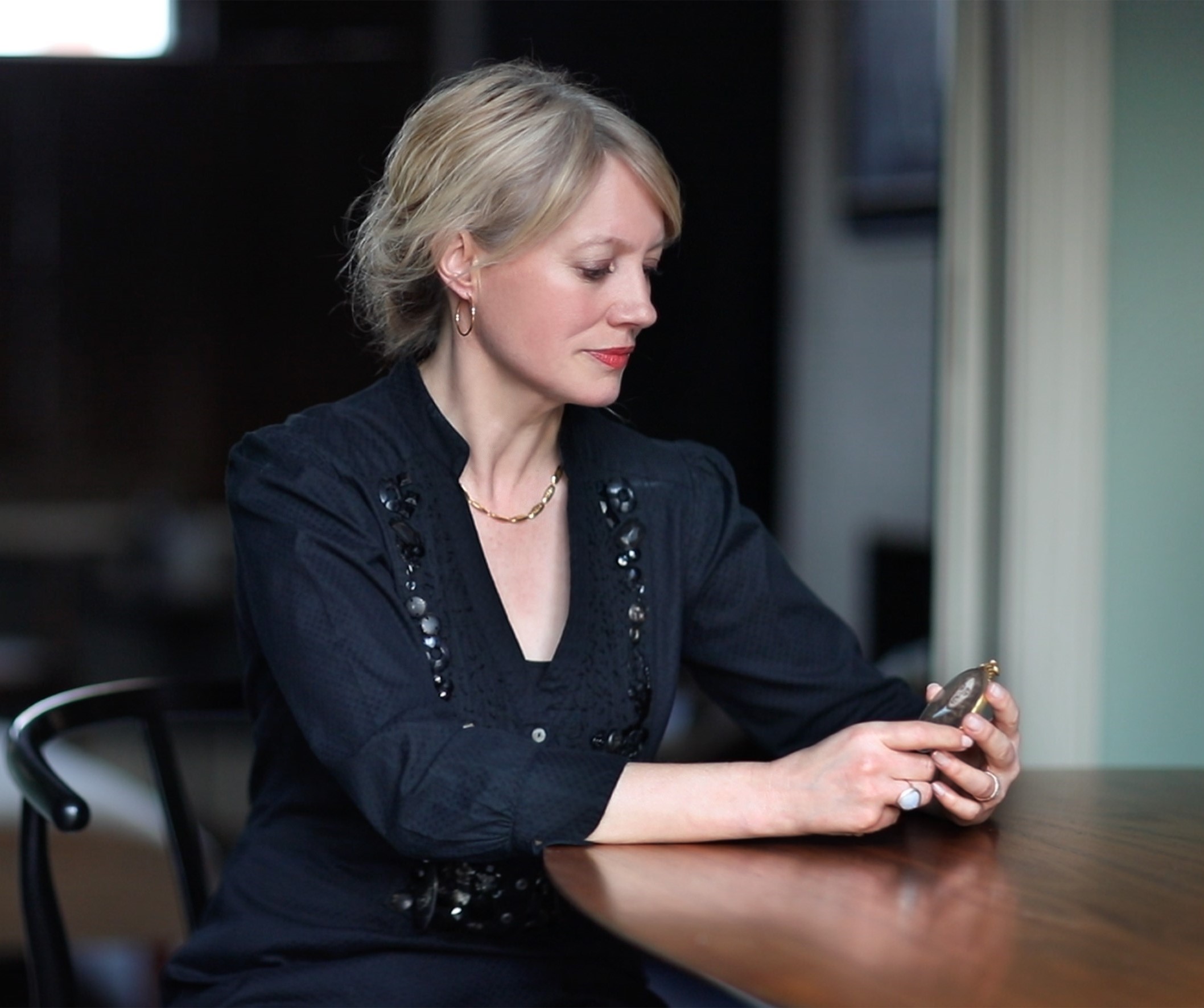
It’s with great pride that we announce our director, Emma Rutherford, has been appointed Honorary Advisor for Portrait Miniatures to the National Trust. In this capacity, Emma recently gave a talk on miniatures at Polesden Lacey, Surrey.
Emma has worked with major public institutions across the UK for many years, and takes on this new role with much excitement.
30 Jun 2025
‘He calls her Dido’; Admiral Sir John Lindsay (1737-1788) and Dido Elizabeth Belle (1761-1804)
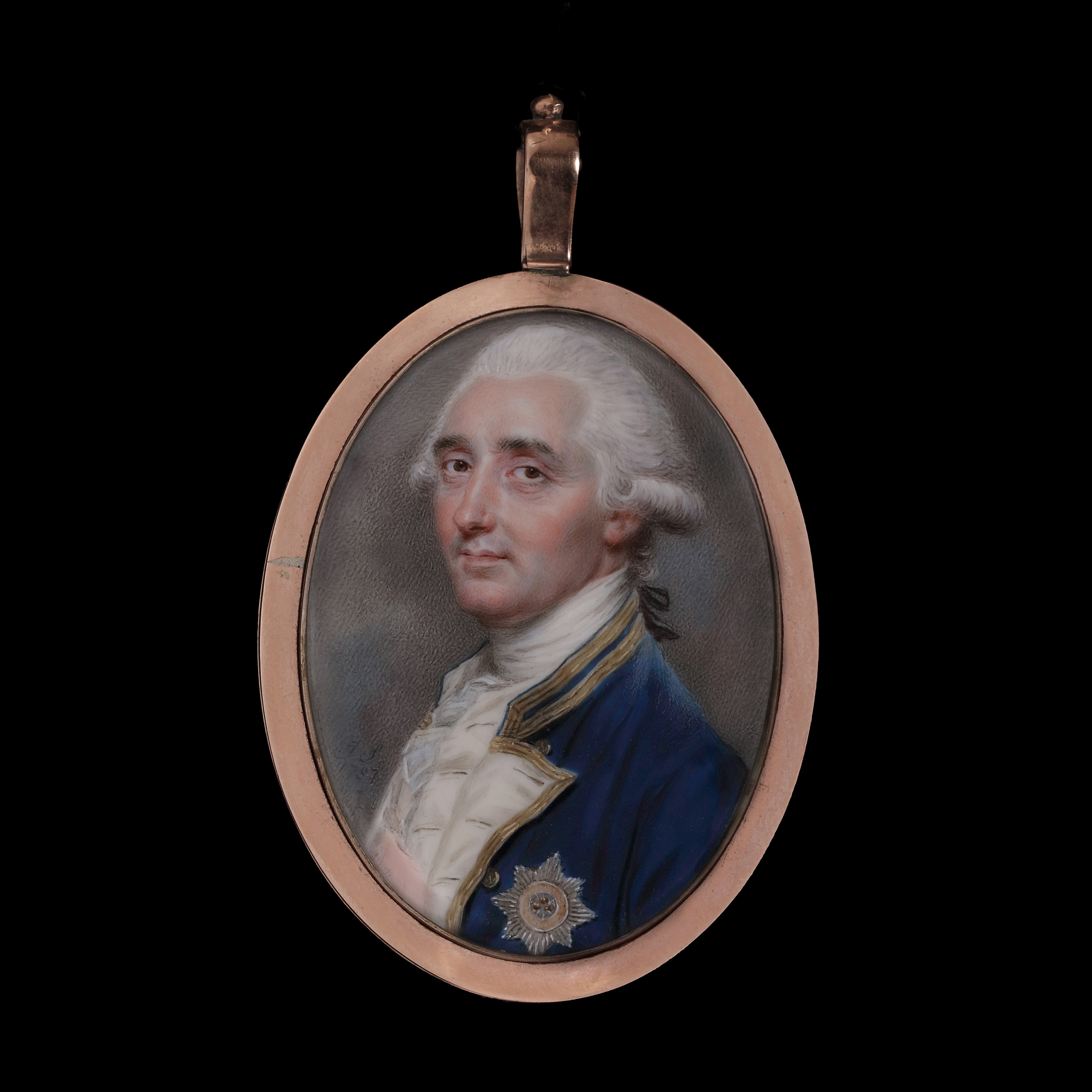
Figure 1. JOHN SMART (1741-1811) Portrait miniature of Admiral Sir John Lindsay (1737-1788), in gold-bordered naval uniform with gold buttons, white facings, white waistcoat and cravat, wearing the breast-star and red sash of the Order of Bath, powdered hair en queue; 1787 - for sale with The Limner Company
This, however, was not one of Smart’s usual commissions. For a start, the sitter was nowhere near India at the time. The subject of the portrait, Admiral Sir John Lindsay (1737-1788), shown here as a decorated and member of His Majesty’s Royal Navy, was in fact in England, where he was resting from an illness from which he was never to recover (he died the following year, aged only 51, in Marlborough whilst returning from Bath). Lindsay’s long naval career was detailed in his obituaries, with the London Chronicle also noting that he was the father of a woman whose ‘amiable disposition and accomplishments have gained her the highest respect from all his Lordship’s relations and visitants’.[1] This young woman was Dido Elizabeth Belle, her name taken from her mother, Maria Bell(e), a West Indian enslaved woman.
Dido’s story has been romanticised, glamourised and even televised (in the 2013 film ‘Belle’).[2] In a portrait of the late 1770s by David Martin (1737-1797) [fig.2], she is shown on apparently equal footing with her cousin Lady Elizabeth Murray (1760-1825).[3] Here, unlike most other contemporary portraits, we see an affectionate interracial relationship, in contrast to the servant-master bond traditionally portrayed. However, Dido’s origins were far-removed from this idyll in which she frolics. We do not know the circumstances under which she was conceived, but in 1760, when Lindsay was in his early 20s, he brought to England a woman who had been taken prisoner onboard a Spanish vessel, pregnant with his child.[4]
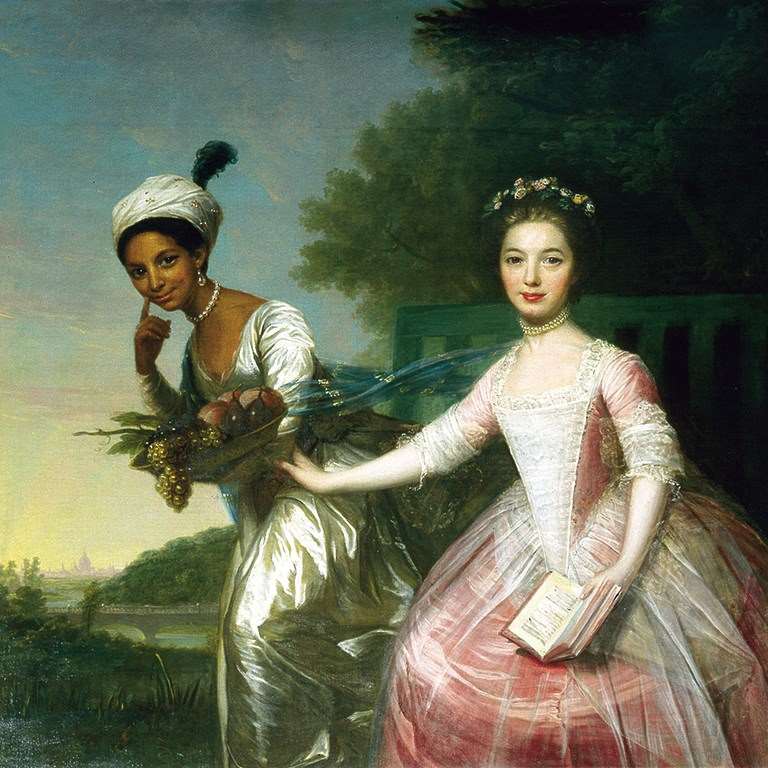
Figure 2. DAVID MARTIN (1737-1797) double portrait of Dido Belle and Lady Elizabeth Murray at Kenwood House, c.1776 - Earl of Mansfield, Scone Palace, Perth, Scotland
Mother and child lived together in London until a plan was formed in which Dido would move to Kenwood House, to live with Lord and Lady Mansfield, the uncle and aunt of her father. By this time, Lindsay was knighted and, when Dido was around five years of age, he set sail again, this time posted to Pensacola, Florida as captain of HMS Tartar. It was whilst he was there, on the 20th December 1765, that he purchased or acquired two adjacent parcels of land, jointly given the number 6 – one part was to build a house upon, the other to be used as an orchard/garden.
Sir John returned to London in 1767. During his absence, his daughter Dido was baptised on the 20th November 1766, aged five. The baptism took place in Bloomsbury, with her mother being simply named as Maria, wife of ‘Mr Bell’. Seven years later, Maria left London as her daughter moved to Kenwood to begin her education and introduction into society. At this point, Maria, who was officially owned by Lindsay, was formally freed – with the transfer of land to her name stating ‘a negro woman of Pensacola in America, but now of London, aforesaid made free of the other part’.
Dido’s story, and that of her parents, plays out against the background of her great-uncle’s William Murray’s famous case of ‘Somerset v Stewart’. Murray, now Lord Mansfield, was an experienced judge when the case was brought before him at the Court of the King’s Bench in 1772. The case verdict was seen as a landmark judgement on the legal status of slavery in England. His final ruling established that slavery was unsupported by English common law and that an enslaved person could not be forcibly removed from England and sent to Jamaica for sale. This monumental decision had far-reaching effects on the abolitionist movement, the transatlantic slave trade, and the legal status of slavery in the British Empire and beyond.
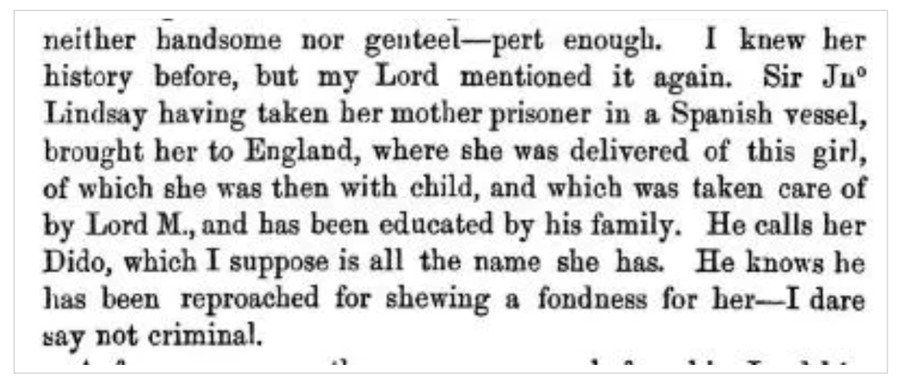 Figure 3. The diary and letters of His Excellency Thomas Hutchinson, p.276.
Figure 3. The diary and letters of His Excellency Thomas Hutchinson, p.276.We have no account of Lindsay’s relationship with his eldest daughter, other than Thomas Hutchinson’s diary which states that he had been shamed for the ‘fondness’ that he had shown his daughter [fig.3]. It is not possible to know if this was because ‘fondness’ was frowned upon generally at this time in parent/child relationships or whether this was a comment on her mother’s status as a slave. Either way, he was not named nor was he present at her baptism. We cannot know if Dido’s invitation to live at Kenwood was instigated by her father, as he moved her mother to another continent. In 1768, John Lindsay married Mary Milner, but the couple had no children. Despite having fathered five children with different women in Jamaica between 1761-1767, Lindsay appears to have been faithful once married.
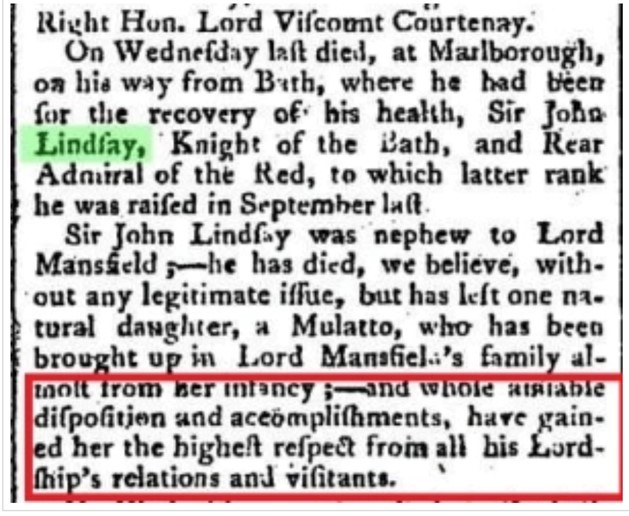
Figure 4. Public Advertiser, 10 June 1788.
In a final act, perhaps in acknowledgment of a daughter of whom he was proud, John was instrumental in naming a new ship HMS Dido, in the month of her 21st birthday. Whilst Sir John returned from his command in late October 1784, he would have heard of the launching of HMS Dido on the 27th November 1784. On the 24th September 1787, the same year that this portrait was painted by John Smart, HMS Dido was commissioned by the Royal Navy for service. That very day, Sir John was promoted by the king to Rear Admiral of the Red – the highest promotion for a rear admiral. Although Lindsay and Smart were thousands of miles apart, it is possible that, having met each other in 1781, Smart was the only artist trusted to paint a miniature of the Rear Admiral – but who was it for? As Lindsay’s wife Mary did not die until 1799, it was quite possibly commissioned by her – but Dido is another possibility as the recipient – as is so often the case, we can only speculate…
[1] London Chronicle, 7 June 1788. Quoted in Byrne, p.210.
[2] After the film came out, Paula Byrne wrote a book the following year entitled ‘Belle: The True Story of Dido Belle’ or ‘Belle: The Slave Daughter and the Lord Chief Justice’.
[3] The portrait was investigated in the BBC’s Fake or Fortune? in 2018, where Philip Mould was able to dismiss the previous attribution to Johann Zoffany (1733-1810).
[4] This account of Dido’s mother was taken from Thomas Hutchinson, the former governor of Massachusetts who saw Dido at Kenwood House in 1779
23 Apr 2025
Master Betty and the Portrait Miniature as Material Evidence of ‘Bettymania’
A few months ago, I was presented with a miniature of Betty that had been acquired by The Limner Company (fig.1). The miniature in question was painted by George Engleheart - a new attribution, making it a recent addition to his oeuvre. It depicts Betty in profile, against a brown background. The reverse of the miniature is glazed, underneath which there is a significant amount of intricate hairwork (fig. 2). Such decoration was commonly used in miniatures in the eighteenth and nineteenth centuries and could, in some cases, be made from the hair of the portrait’s sitter. It cannot be confirmed whether this is the case here. The miniature itself is circular, with a 45mm diameter, making it small enough to sit in the palm of the owner’s hand.
The obsession that surrounded Betty, his acting, and largely just his presence, has since been coined ‘Bettymania’. It has also been the subject of numerous studies, including multiple by scholar (and Betty expert) Jeffrey Kahan. Since beginning research into this portrait miniature depicting the young actor, and becoming engrossed in these studies, it could be said that I have been overwhelmed by a sense of ‘Bettymania’ myself. His story is one that has been told many times, as with those of other famous actors of this period. Nevertheless, I will repeat it here, with a focus on how this particular portrait reflects the fame that this young boy experienced.
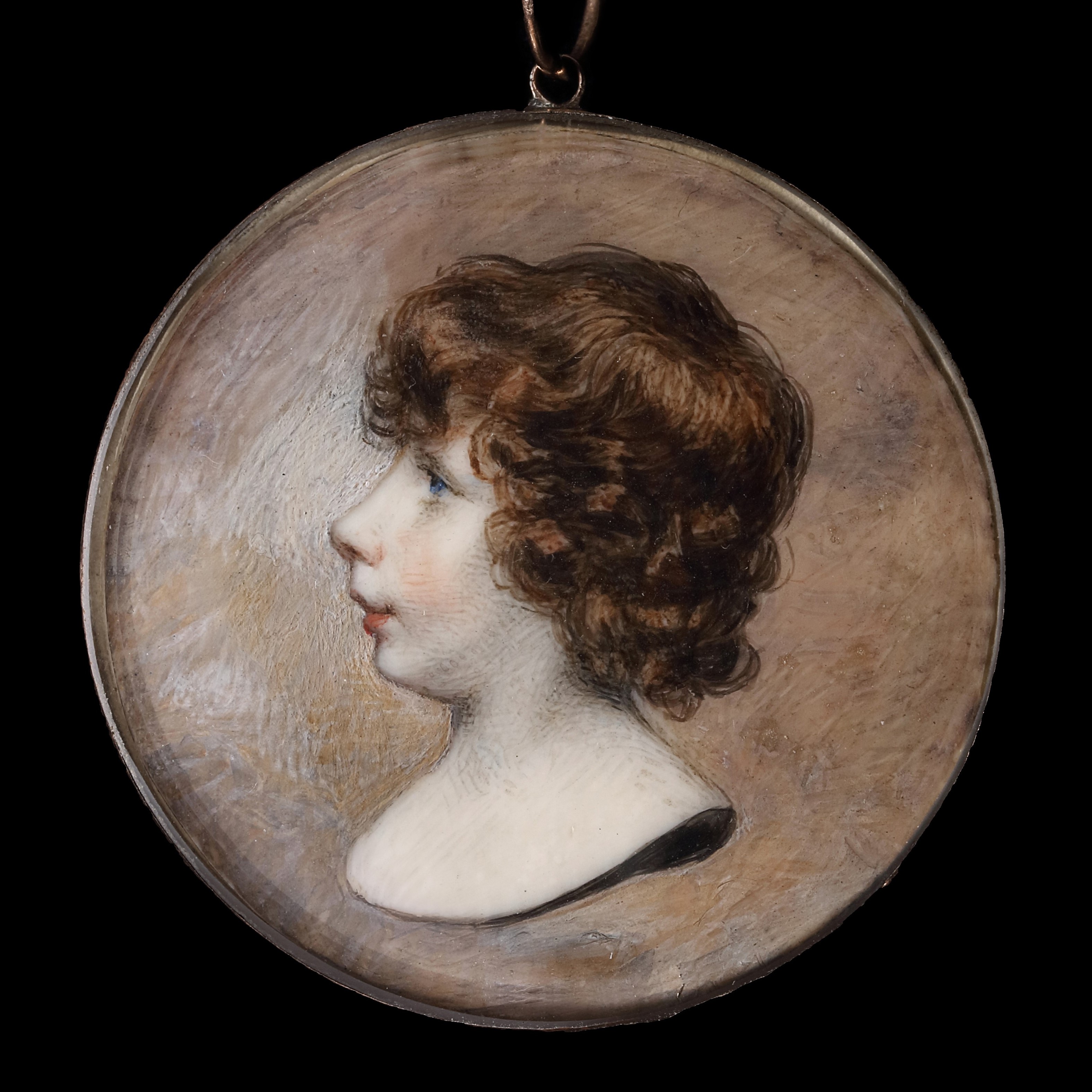
Fig. 1: GEORGE ENGLEHEART (1750-1829), William Henry West Betty (1791-1874), ‘The Young Roscius’; circa 1804-5, for sale with The Limner Company
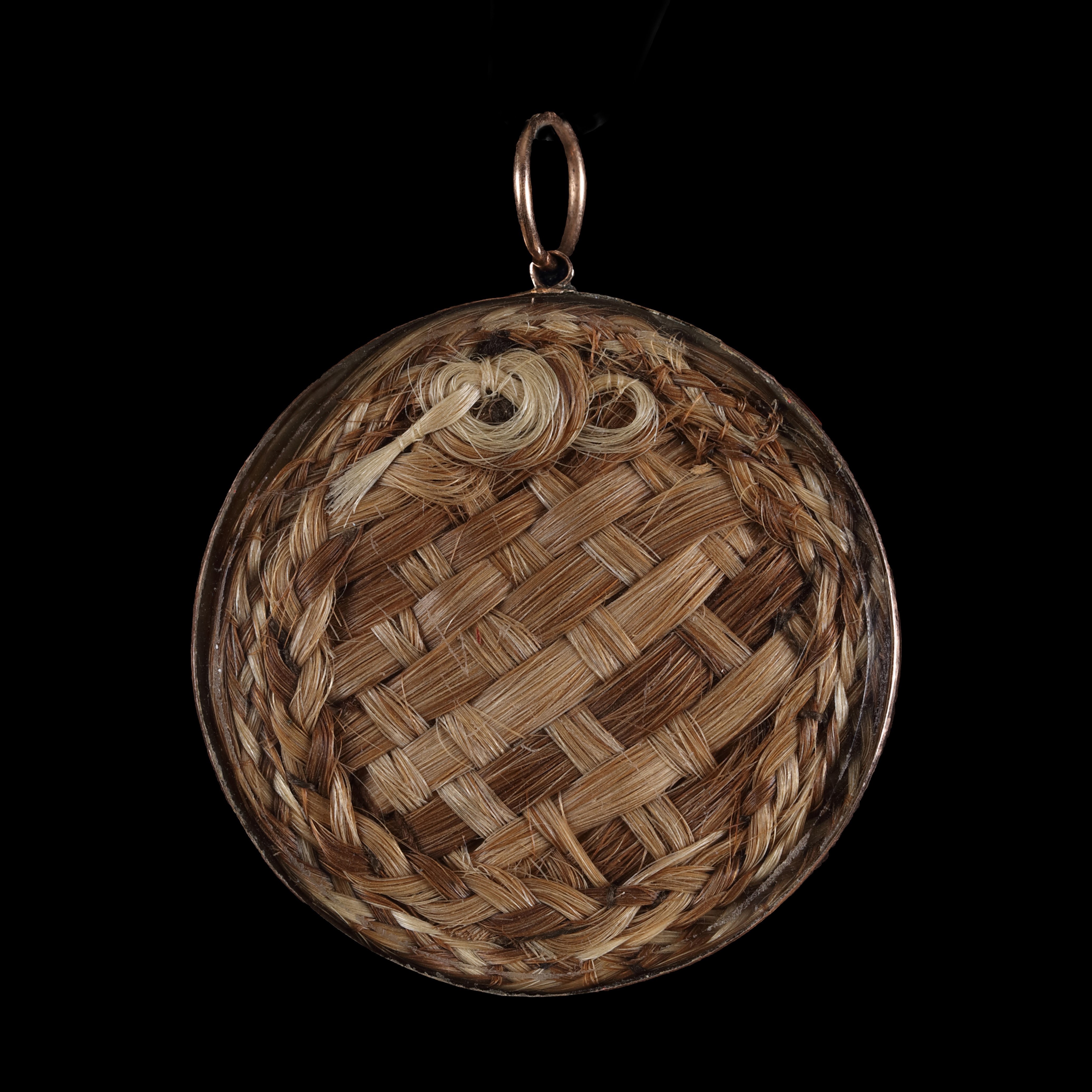 Fig. 2. Verso: GEORGE ENGLEHEART (1750-1829), William Henry West Betty (1791-1874), ‘The Young Roscius’; circa 1804-5, for sale with The Limner Company
Fig. 2. Verso: GEORGE ENGLEHEART (1750-1829), William Henry West Betty (1791-1874), ‘The Young Roscius’; circa 1804-5, for sale with The Limner CompanyTheatre and art in London
Britain has been the home of numerous historical acting legends- from Nell Gwyn (1650-1687) to David Garrick (1717-1779), to Sarah Siddons (1755-1831). Other than a brief break during the English Civil Wars[2], the culture of theatrical performance and drama had played a consistently important role in both the lives of those at court and ordinary citizens.
It is not surprising, then, that many portraits and artistic depictions of these actors exist. Nell Gwyn was famously depicted by both Simon Verelst and Peter Lely, and features naked in many of her portraits, some of which were commissioned by King Charles II (1630-1685), of whom Nell was a mistress. Coming closer to the time in which Master Betty was acting, both David Garrick, actor and producer, and Sarah Siddons, famed tragedienne, were painted numerous times. Many of these portraits remain within public collections today, including miniatures of both David[3] and Sarah[4].
To have a miniature portrait of this young actor, then, is not surprising. He comes from a long line of famed actors to have been immortalised in paint. In fact, there are larger-scale oils of him, by John Opie (fig.4) and James Northcote (fig 3). A large number of sculpted busts of the young boy may have also provided inspiration for this particular miniature, given the isolated format that Engleheart has painted his head in. To gain fame in the theatre was to become known visually across society at this time. People could watch you on stage, but having a portrait painted was the only way to visualise you outside of this sphere.
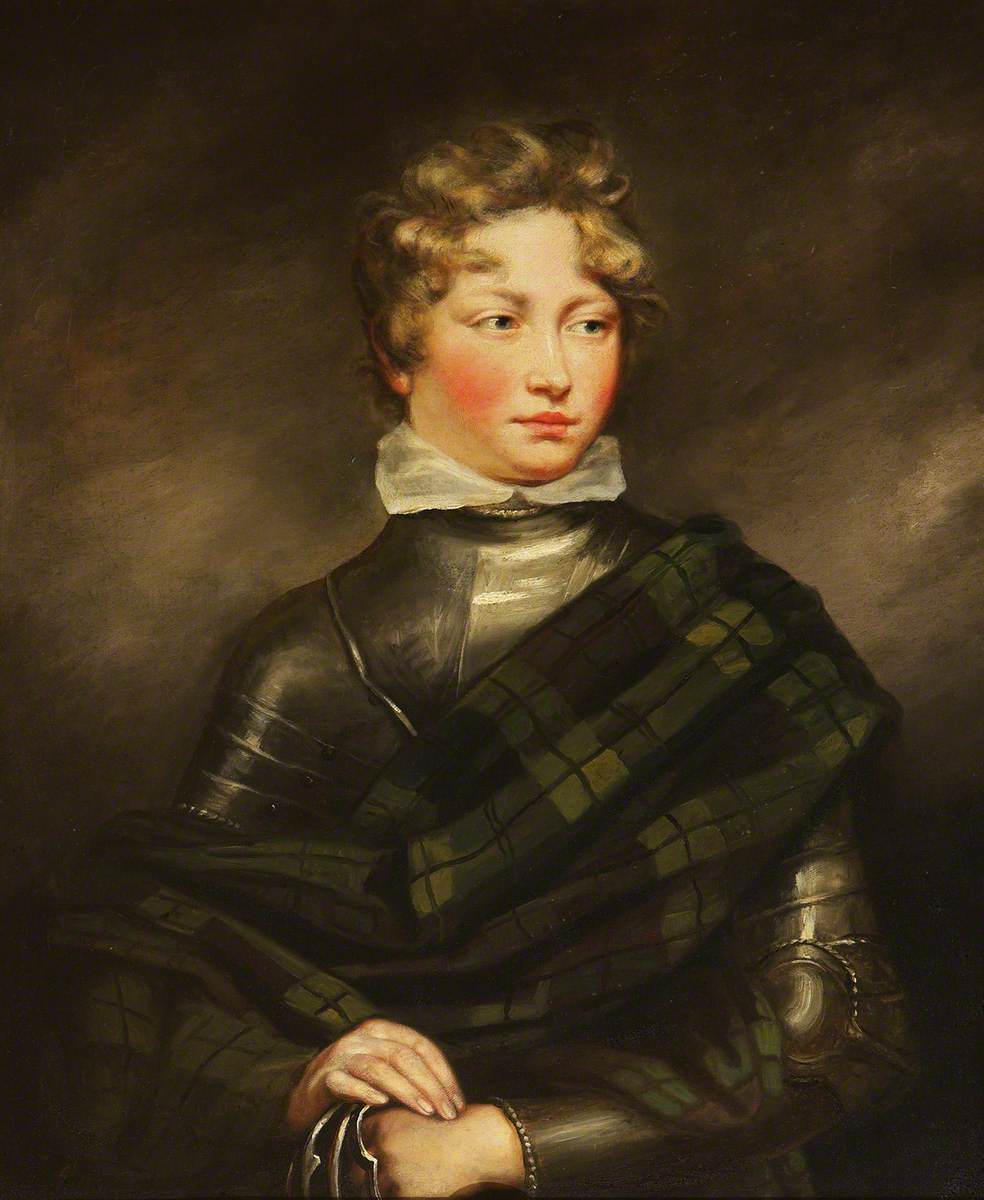
Fig 3: JAMES NORTHCOTE (1746-1831), William Henry West Betty (1791–1874), ‘Master Betty’, as ‘Young Norval’, 1804, National Trust, Attingham Park, 608962
William Henry West Betty
Before he became known as Master Betty, William Henry West Betty spent some of his childhood in Ireland. He had moved there in 1796, following five years living in Shrewsbury. Betty’s father was Irish and owned a small fortune, but had fallen into debt. In Ireland, his parents ran a linen factory, however, this soon began to fail. It seemed that another income was needed for the family to get by. As Betty gained fame, it was his income that allowed the family to survive.
There are many different stories about the reasons for why the young actor first took to the stage. The majority of these come from unofficial biographies written in the first years of the nineteenth century[5]. As one story goes, he was taken to see Sarah Siddons on stage, and from this performance was infatuated with the idea of becoming an actor. Given that Kahan is the main scholar on Betty, however, it seems sensible to recall the story that he provides in the young actor’s biography. According to him, it was Betty’s father who first taught him anything about acting. Betty had copied his father directly following a (sort-of) performance of Cardinal Wolsey’s Lament Upon his Fallen Greatness (from Shakespeare’s Henry VIII)[6]. Not only had he remembered all the words, but also all the actions that his father had accompanied his reading with. Then, in 1802, he was taken to the theatre by his father. The performance, at the Theatre Royal Belfast, was of Pizzaro (1799), a tragedy written by Richard Brinsley Sheridan (1751-1816). Betty was given a copy of the play, and a slippery slope of obsession with becoming an actor followed.
His parents had recognised his talent, and Betty was soon returned to Ireland to meet with the Royal Theatre’s manager. Upon reciting a speech from Pizzaro, he was told that he had great potential. So much so, it seems, that William Hough, the theatre’s prompter[7], immediately left his role at the theatre to become the young prodigy’s coach.
Making a break: Betty’s first performances
Betty first appeared on stage in Belfast as Osman in Zara, Aaron Hill’s (1685-1750) 1735 adaptation of Voltaire’s (1694-1778) Zaïre, in August 1803. The crowds weren’t large, but this was understandable. Dublin was in the midst of the Emmet Rebellion, which had broken out only a month before. Tensions between English and Irish loyalists were high, and here, a young boy, speaking in a British Accent, was taking to the stage at the Theatre Royal, funded by the British Crown. It had been promised that ‘God Save the King!’ and ‘Rule Britannia’ would both be performed during the show. The theatre had been closed in 1803 because of the political atmosphere, but for Betty, its managers had petitioned for a re-opening. Kahan highlights the fact that this was meant to be a patriotic event for British Loyalists[8].
Following a few more performances in Belfast, Betty was taken to Dublin. His performances had been accompanied by a specially granted extended curfew, which did encourage some violence. Still, Betty’s nights in the theatre were seen as a great success. Clearly, audiences were more confident in attending the performances than they had been at first in Belfast. Betty was earning over £100 a night at the theatre, ten times more than was usually expected, which prompted the theatre to offer him a ten-year contract. However, his father had already signed him up to go to Cork. After more successes, he travelled across the Irish Sea to conquer the stages of Scotland. Betty performed as the titular character in both Douglas and Hamlet, stepping onto the stage in the former in a kilt (Fig. 4). As with Ireland, there were tensions surrounding national identity and English involvement in this period. The statute banning Scots from wearing kilts had only been lifted in 1782, and here was a young English boy wearing one on stage to perform. At one of his performances, the playwright of Douglas himself, John Home (1722-1808), stood up and personally congratulated Betty’s performance. Though he had done this for other young men playing the same role, it implies that there must have been something in Betty’s skill.
It can be seen, then, that though Betty’s early performances did become popular, this may have been somewhat influenced by a certain political atmosphere in the places where he was performing. It was, after all, partially because of his British accent that he was allowed to open a show past curfew in theatres in Ireland. As we follow Betty’s career through England and towards London, it is important to keep this in mind.
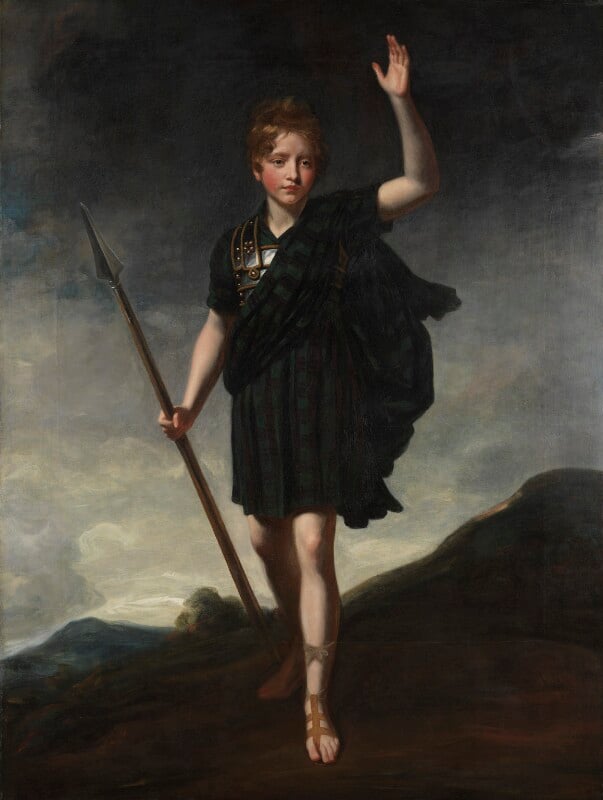
Fig. 4. JOHN OPIE (1761-1807), William Henry West Betty, 1804, National Portrait Gallery, NPG 1392
Towards London
Moving to Birmingham, where he was engaged for thirteen nights. The profit of his performances here was stratospheric, averaging at £69.55[9] a night, almost £8,900 today[10]. At the same time, Thomas Harris (d.1820), the manager of Covent Garden Theatre, and Richard Brinsley Sheridan, of Drury Lane, were participating in a scramble to claim Betty’s London debut. Betty’s father appears to have played the two theatres against each other, remaining in communication with them both.
After a legal battle, the decision was settled- Betty would perform at both theatres throughout the season. At Covent Garden, he would only be referred to as 'Master Betty', and at Drury Lane, as 'The Young Roscius'. On December 1, 1804, he debuted at Covent Garden. When the doors of the theatre opened, it is said that crowds rushed in, and some were injured in the process. They even clambered into the Royal Box, where it is assumed that the Prince of Wales was not that night. Wherever they ended up sitting, they were there to see Betty.
Now that Betty had conquered the capital, he was truly reaching the height of his fame. People wanted to see him because his name was known, and they believed from reviews that Betty was a brilliant new addition to the acting scene. Even other famous figures of the day, including politician Charles James Fox[11] and Lady Elizabeth Foster[12]. Writing to her son, Augustus, in 1804, Elizabeth (or Betty, as she was also known), claims: ‘…in short, he has changed the life of London; people dine at four, and go to the Play, and think of nothing but the play[13].’ This alone captures the level of fame that Master Betty was experiencing. Even one of the most famous women of the time was singing his praises.
What was it about Betty?
Throughout his (short) career, Master Betty was able to maintain a strong following and seemed to reap the benefits of such a large level of fame. This was not to last forever, but while it did, it was particularly intense. But why him? Firstly, he was a good actor. This was repeated by numerous audience members who recorded their experiences of seeing him in the theatre, including Lady Elizabeth Foster. Despite all of the criticism he faced, and any analysis which insists this must have been a cultural phenomenon, there must have also been a certain amount of skill in the way that Betty acted.
Still, other political and social circumstances meant that Betty was in luck when it came to audiences. Firstly, and as has been mentioned, the theatre had a good grounding. And, at this point in time, there weren’t really any other great young actors. Betty had some vacant shoes to step into, given that Garrick was dead, and Siddons was getting old. Secondly, Britain was at war and needed something to keep its spirits up. This theme is discussed extensively by Kahan and is worth further reading[14]. To put it simply, Britain was sending troops and resources to fight Napoleon, and this was making some members of British society anxious. Having a young man to watch jumping around the stage as Hamlet, then, would help to take their mind off things. It could also help to promote a national spirit, as we have already seen was partially the intention of his performances in Belfast, Dublin, and Scotland.
At the end of the day, Master Betty was also loved because he was a charming young boy. It is for this reason that Schweitzer suggests so many miniature pieces of paraphernalia were created of him[15], and that Kahan suggests people saw him as one of their own, or a young relative whose life they had become invested in[16]. It is for this reason that the creation of this specific portrait miniature is so interesting and relevant in the history of miniature painting.
Betty’s relevance in the history of miniature painting
If you are familiar with the work of The Limner Company, then you are probably familiar with some elements of the history of portrait miniatures. In Britain, they first appeared in the sixteenth century. Their small format meant that they could be painted as intimate portraits, not intended for display, like other larger portraits. In many cases, this meant that they were worn on a person’s body. By the early nineteenth century, this form of portraiture was still enjoying a large amount of popularity. Instead of being painted on vellum or parchment, they were now often painted on small pieces of Ivory, in watercolour, or in some cases using enamel on different metals.
Commissions for portrait miniatures could come from loved ones or family members. After all, being intimate portraits, it would make sense that it was someone close to the sitter who wanted to own something like this. However, there have always been cases of people either owning or commissioning portrait miniatures of and for people who were not close to them[17]. The exact origin of this miniature of Betty is not known. However, we do know that whoever commissioned it paid good money for it, given that it was painted by George Engleheart (1750-1829), one of the most sought-after miniature painters of his day. Alongside other artists like John Smart (1740-1811) and Richard Cosway (1742-1821), he was responsible for painting some of the most important members of eighteenth and nineteenth-century British society[18]. We also know that whoever the owner of the portrait was, they at least partially defined Betty by his acting. He is painted in the guise of Roscius, a character he became known for playing. However, they also regarded him as a ‘Kindred love’, according to the inscription on the reverse, whom they would forever be able to look at with ‘Affection’s glistening eye’[19].
Whether they were related to Betty or not, it seems that whoever had this portrait created did see him as a member of their family, in some way. At least they felt this intimacy enough to justify having a portrait usually reserved for an intimate relationship painted. This relates back to Kahan’s point about people seeing Betty as their own, to possess. When Betty became ill in December 1804 (probably due to exhaustion), fans demanded that they be given updates on his health. Again, this story shows that the term ‘Bettymania’ is not an exaggeration, and people were really obsessed with him. These feelings towards the young actor make an intimate piece of material evidence of his fame, like this, make sense.
Coda: The fall of Bettymania
Betty’s last performance in London was in 1806. He had truly experienced fifteen minutes of fame. At the age of 17, he retired from acting and began attending Cambridge, presumably with a healthy fund. Maybe the intensity of acting had worn him out, or maybe to the audiences, his talent really was just a phase, limited to when they could see him as a cute and childish figure.
This is interesting, given that many of his critics attacked him for his age. It seems that, even as an adult, they would not appreciate his work, and that Bettymania really was just a cultural phenomenon. Still, this was a phenomenon that had its material evidence, including this miniature by Engleheart. Just as Siddons and Garrick before him, Betty will forever be remembered for a certain image, in this case that of his youth, which was also the only image he gained fame for.
Today, it is easy for people to purchase images of K-pop stars to hang on their bags. Similarly, it was easy for fans to purchase snuffboxes with Betty’s face on them, which appear to have been produced en masse. With this miniature by Engleheart, however, a deeper sense of obsession and possession over the young boy, characterised by the term ‘Bettymania’, has been immortalised. Even from a three-year career, the love that fans felt for Betty would be remembered more than a lifetime.
[1] William Henry West Betty has had a few different historical monikers. These include ‘Master Betty’ and ‘The Young Roscius’. Here, I will largely refer to him as Betty.
[2] The Theatres closed for 18 years during this time, to avoid public disorder.
[3] For example, the miniature attributed to Horace Hone, Royal Collection Trust, RCIN 420808.
[4] For example, the miniature by Richard Cross, Victoria and Albert Museum, P.146-1929.
[5] At least seven biographies were published in 1804, all of which are listed in J. Kahan, Bettymania and the Birth of Celebrity Culture, Bethlehem, Lehigh University Press, 2010, p.53.
[6] Ibid., p.30.
[7] As the title suggests, this was the role given to the person in charge of reminding actors of their lines whilst on stage.
[8] Kahan, 2010, p. 35.
[9] Calculated by Kahan, 2010, p. 46.
[10] Calculated here https://www.in2013dollars.com/uk/inflation/1804?amount=69.55.
[11] He is quoted: ‘Everybody here is mad about this Boy Actor…We go to town to-morrow to see him, and from what I have heard, I own I shall be disappointed if he is not a prodigy…’, Kahan, 2010, p.55.
[12] The subject of another portrait currently for sale with the Limner Company, also by George Engleheart.
[13] From a letter written by Lady Elizabeth Foster to Augustus Foster, December 5, 1804. Reproduced in V. Foster, The Two Duchesses, London, 1898, p.192.
[14] Kahan, amongst other scholars, has written extensively about the life of Master Betty and the significance of his career. See J. Kahan, Bettymania and the Birth of Celebrity culture, Bethlehem, Lehigh University Press, 2010 for a good overview.
[15] Marlis Schweitzer, ‘Consuming Celebrity: Commodities and Cuteness in the Circulation of Master William Henry West Betty’, in The Retro-Futurism of Cuteness, 2017.
[16] For a further discussion of this phenomenon, see J. Kahan, ‘Bettymania and the Death of Celebrity Culture’, in Historical Social Research / Historische Sozialforschung. Supplement, No. 32, Supplement: Celebrity’s Histories: Case Studies & Critical Perspectives (2019), pp. 139-164.
[17] For example, Charles II and his many miniatures painted by David des Granges.
[18] For more information on Engleheart, see the catalogue note for this miniature.
[19] The inscription on the reverse refers to the hairwork, and to the relationship the owner felt they had with Betty: ‘Through all life's varied scenes preserved/ Endear'd by kindred love most true,/ This simple braid, with fond regard,/ Affection's glistening eye shall view.’
10 Apr 2025
A King in Miniature: David des Granges and the Image of Charles II in Exile
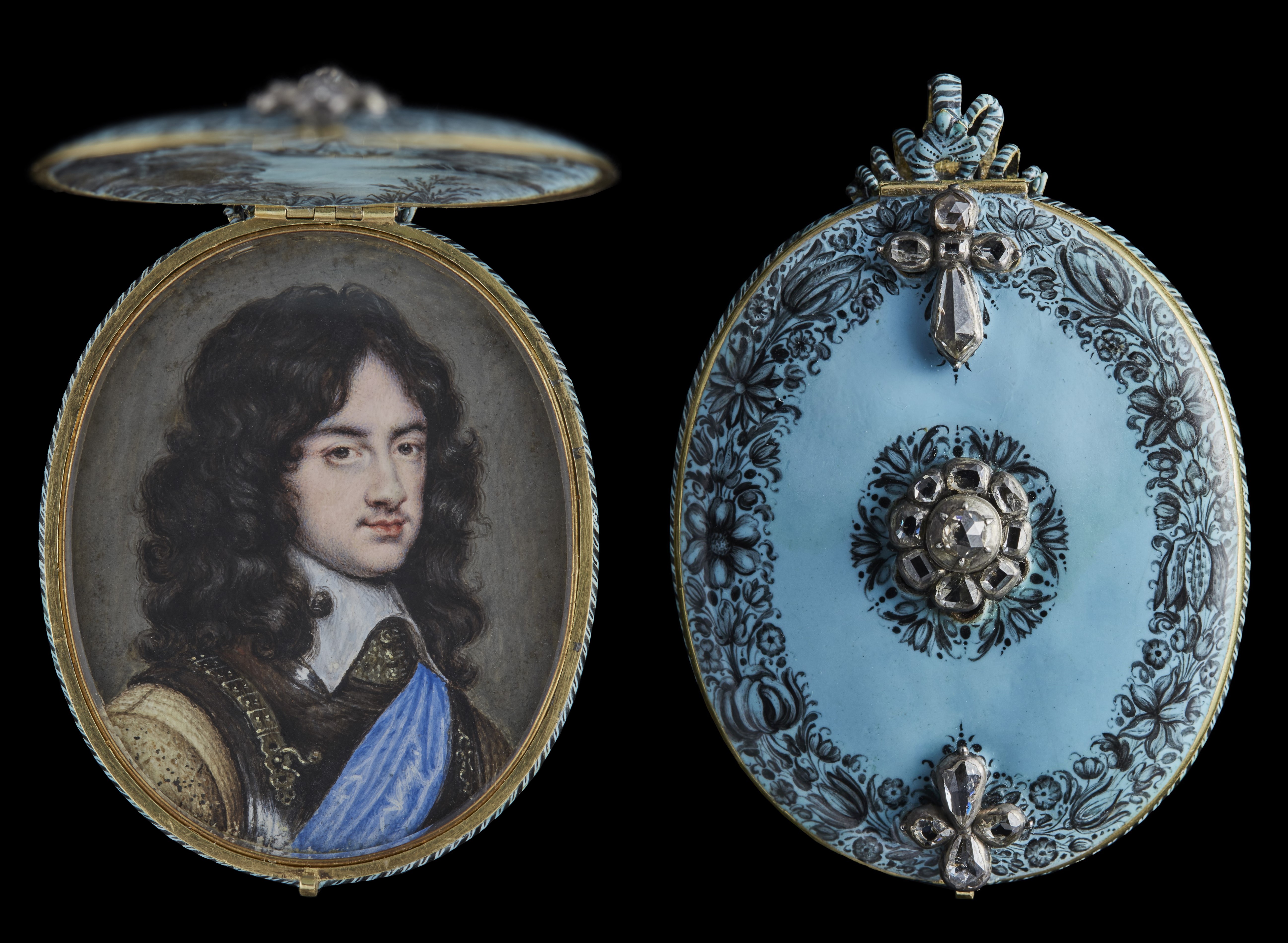 Figure 1
Figure 1DAVID DES GRANGES (1611-1672), PORTRAIT OF KING CHARLES II (1630-85); 1651 - The Limner Company.
Set into the original gold locket, enamelled with designs on base and lid, the lid set with diamonds.
Watercolour on vellum.
Provenance:
Commissioned by Charles II from the artist as a gift to Henry Seymour (Langley) (1612-1686); it descended through the Seymour and Grenville families, including the Dukes of Somerset and Buckingham, remaining at Stowe House. Initially intended to be sold at Christie’s in 1848 (Stowe Sale), yet it was withdrawn and sold privately to William Gore-Langton, related to the Buckingham family. It then descended to the Earls Temple of Stowe, passing to Judy and Brian Harden Antiques, and finally to a UK private collection in 2008.
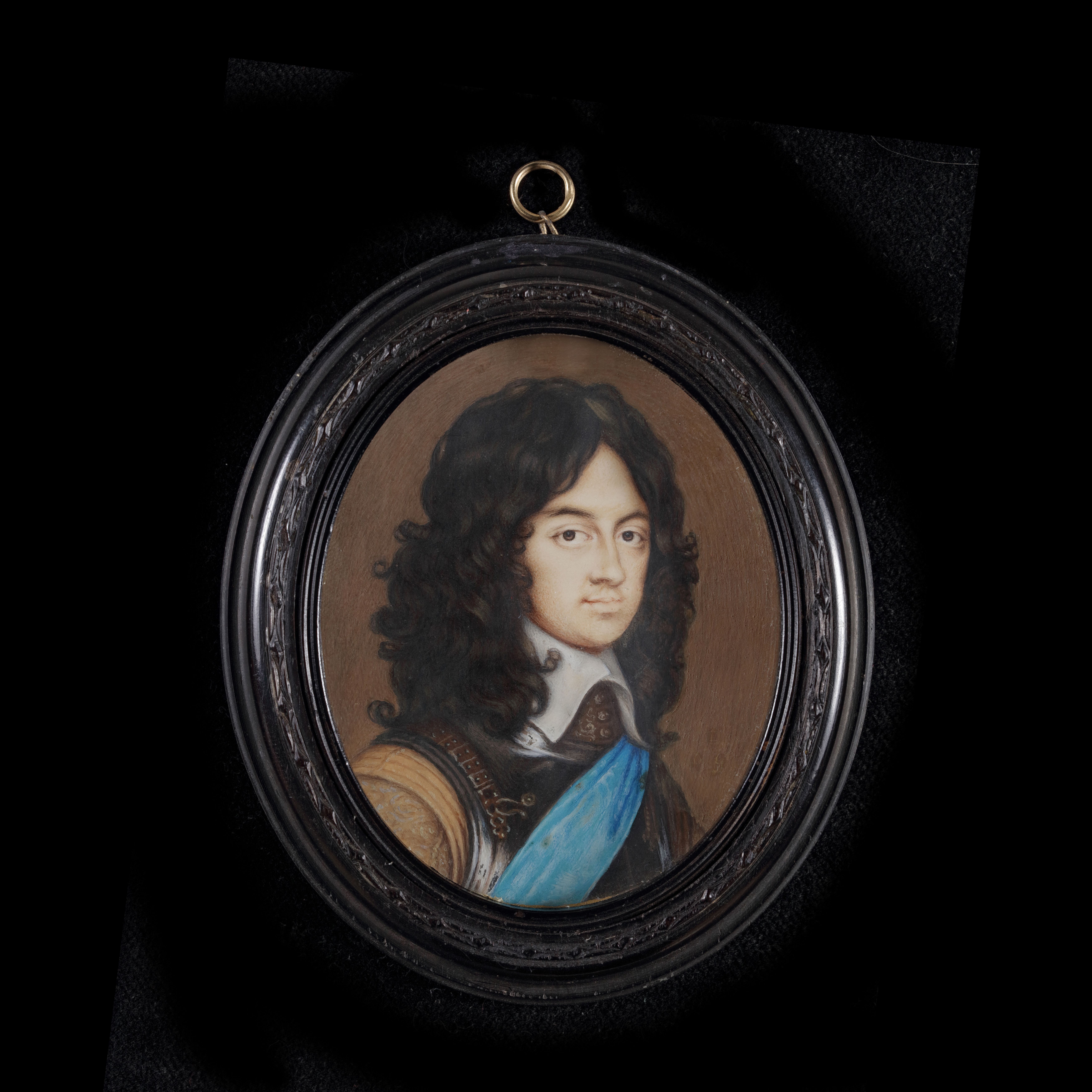 Figure 2
Figure 2DAVID DES GRANGES, PORTRAIT OF KING CHARLES II; circa 1651 - The Limner Company.
Set in a tortoiseshell mount within carved pear wood frame, the reverse with a label inscribed ‘Charles 2d. A supposed Copy from Vandycke’.
Provenance:
Christie’s, London, 9th December 2008, lot 221;
Private Collection, UK.
Depicting Charles II as Prince of Wales, these two portrait miniatures form part of a collection of miniatures painted by David des Granges during Charles II’s exile, for distribution among his supporters. Charles had a long association with this Anglo-French miniaturist, who had painted him as a young boy, copying portraits of him during the late 1630s. Des Granges ongoing support and importance as an artist among the Stuart’s entourage is underscored by his 1651 appointment as “His Majesty’s Limner in Scotland”.[1] This nomination occurred during a significant moment for Charles too, marked by his coronation as King of Scots at Scone in January – an event of crucial importance to the Stuart claim to the throne.
The honour conferred upon Des Granges, nonetheless, came amidst a period of considerable political and military upheaval. While 1651 commenced with the symbolic affirmation of Charles’s kingship, his subsequent attempt to reclaim the English throne culminated in defeat at the Battle of Worcester in October. This loss resulted in Charles becoming a fugitive, pursued across England until his eventual escape to Normandy, France, later that same month. During this period of exile and uncertainty, the production of these two miniatures offer insight into how Charles II wished to be perceived during this period of struggle. Indeed, Charles’s depiction wearing a steel cuirass and armour act as visual symbols of strength and military readiness, emphasising his resolve to regain his kingdom. Far from being a passive exile, Charles actively constructs an image of future action and reinforces his legitimacy in the eyes of his supporters. In this sense, there is a calculated effort on the part of both Charles and Des Granges to maintain a sense of the legitimacy and authority of the Stuart crown, and these miniatures become tangible links to Charles’s tumultuous journey, his quest for the throne and his eventual restoration, all encapsulated within the carefully constructed image.
The Seymour miniature is a key work that reveals further insight into this moment proceeding towards the restoration of the monarchy. Careful research has identified the miniature to be directly commissioned as a gift to Henry Seymour (1612-1686) by Charles in 1651 (Fig. 1). Seymour began his close allegiance to the Stuart family some years prior, with his appointment as Page of Honour to Queen Henrietta Maria in 1638. This was also when he was introduced to Charles as Prince of Wales, when he was employed as Groom of the Bedchamber to the eight-year-old. From this began an extraordinary relationship of loyalty, which is perhaps no better illustrated by the fact that it was Seymour who carried the final message from Charles I to his son, just three days before his execution, which he delivered on 27 January 1649.[2] After the Restoration in 1660, Seymour continued to be a close member of Charles’s court, appointed as Comptroller of Customs and Clerk of the Hanaper, as well as being elected as a member of Parliament.[3]
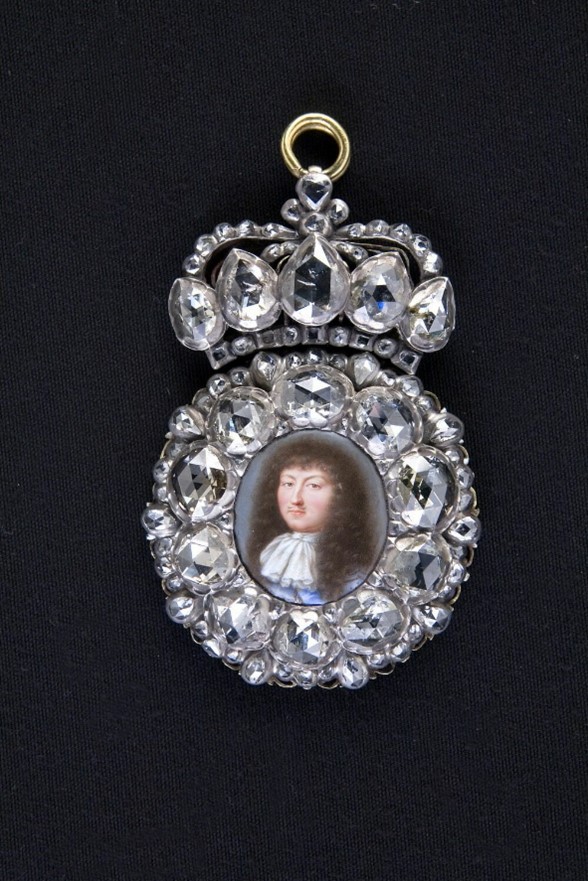
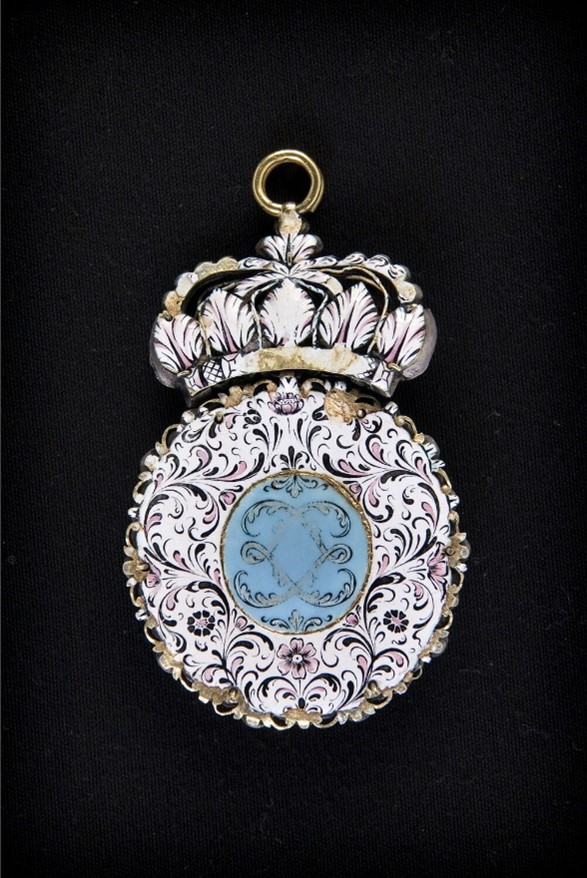
Figures 3-4. Jean Petitot, Boîte à portrait de Louis XIV, c. 1680,
© 2009 Musée du Louvre, Dist. GrandPalaisRmn / Harry Bréjat.
The provenance of the second miniature seems to have been similarly been intended for the distribution among Charles’s supporters. Its composition, derived from a now-lost portrait of the future king painted by Adriaen Hanneman (c. 1601-1671) around 1648, testifies to Des Granges’s commission in strengthening the Royalist cause (Fig. 2). Depicting Charles as Prince of Wales, he is shown wearing the blue sash of the Order of the Garter, accenting his royal status, while his natural, curling brown hair adds a touch of candidness to the otherwise formal portrayal. The craftsmanship of the miniature is further highlighted by its tortoiseshell mount, set within a finely carved pear wood frame, designed to evoke the opulence of ebony. This interplay of formality and intimacy, combined with the delicate artistry, elevates the miniature to a work of exceptional value. Both miniatures subsequently act as crucial visual records during this moment of Stuart exile and the strategic dissemination of Charles’s image in the build up to his return to England to become king.
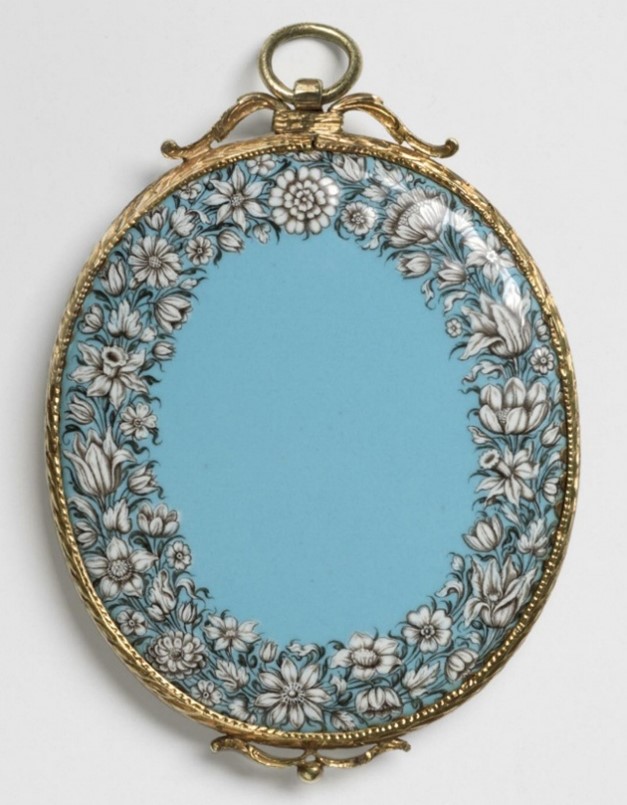
Figure 5, Jean I Petitot & Gilles Légaré, Portrait of Catherine-Henriette d’Angennes, comtesse d’Olonne, as Diana, c.1680, 1 1/2 x 1 1/4 ins (3.8 x 3.2 cm.), original frame: 2 1/2 x 1 7/8 ins (6.3 x 4.8 cm.), verso. Philadelphia Museum of Art, Mrs. Lessing J. Rosenwald collection, 1961.
Figure 6, Gilles Légaré (1610-85) & Louis Cossin, Livre d’Ouvrages d’Orfèvrerie, plate 7 (detail), 1663, Victoria & Albert Museum, London (E. 5749-1908).
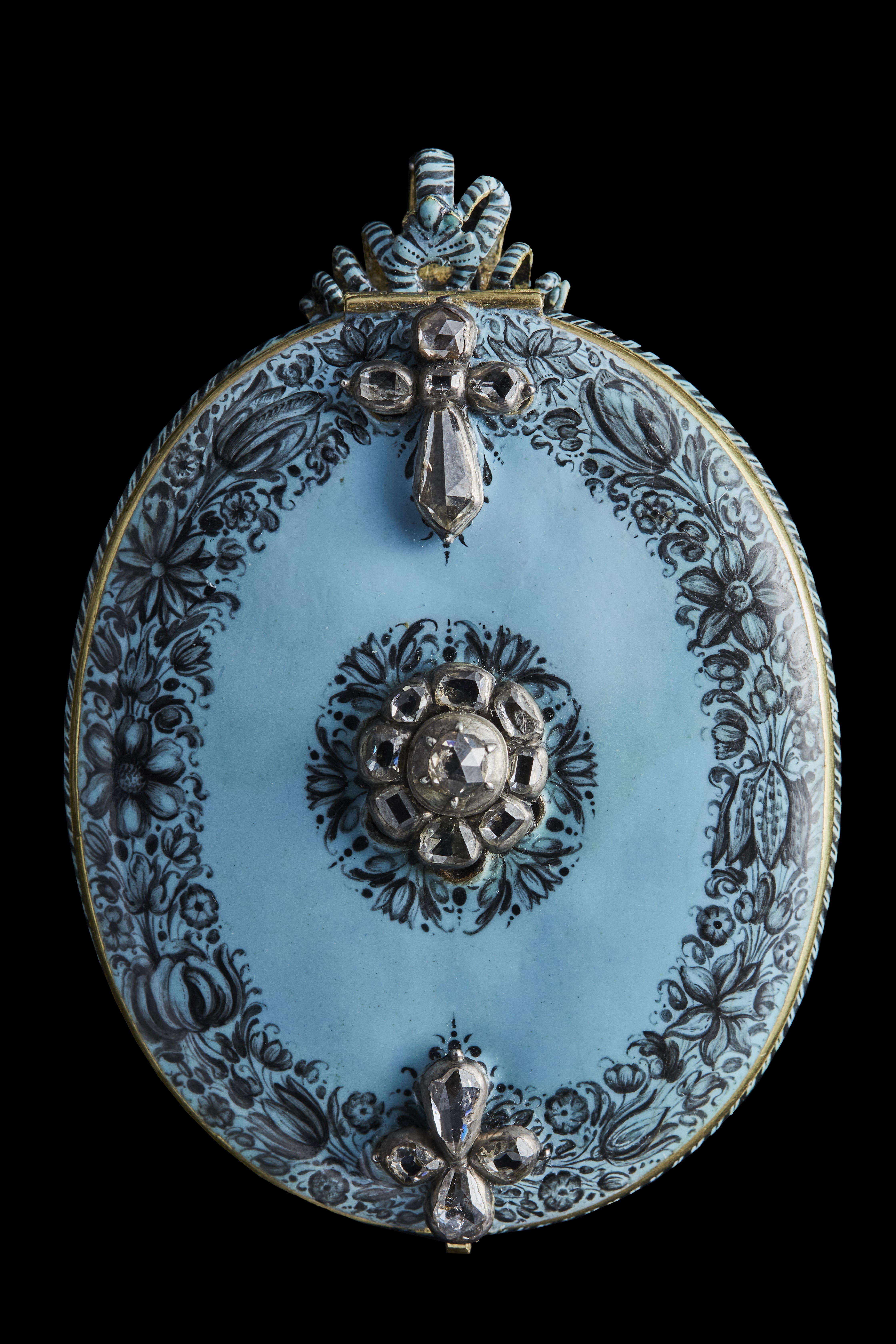
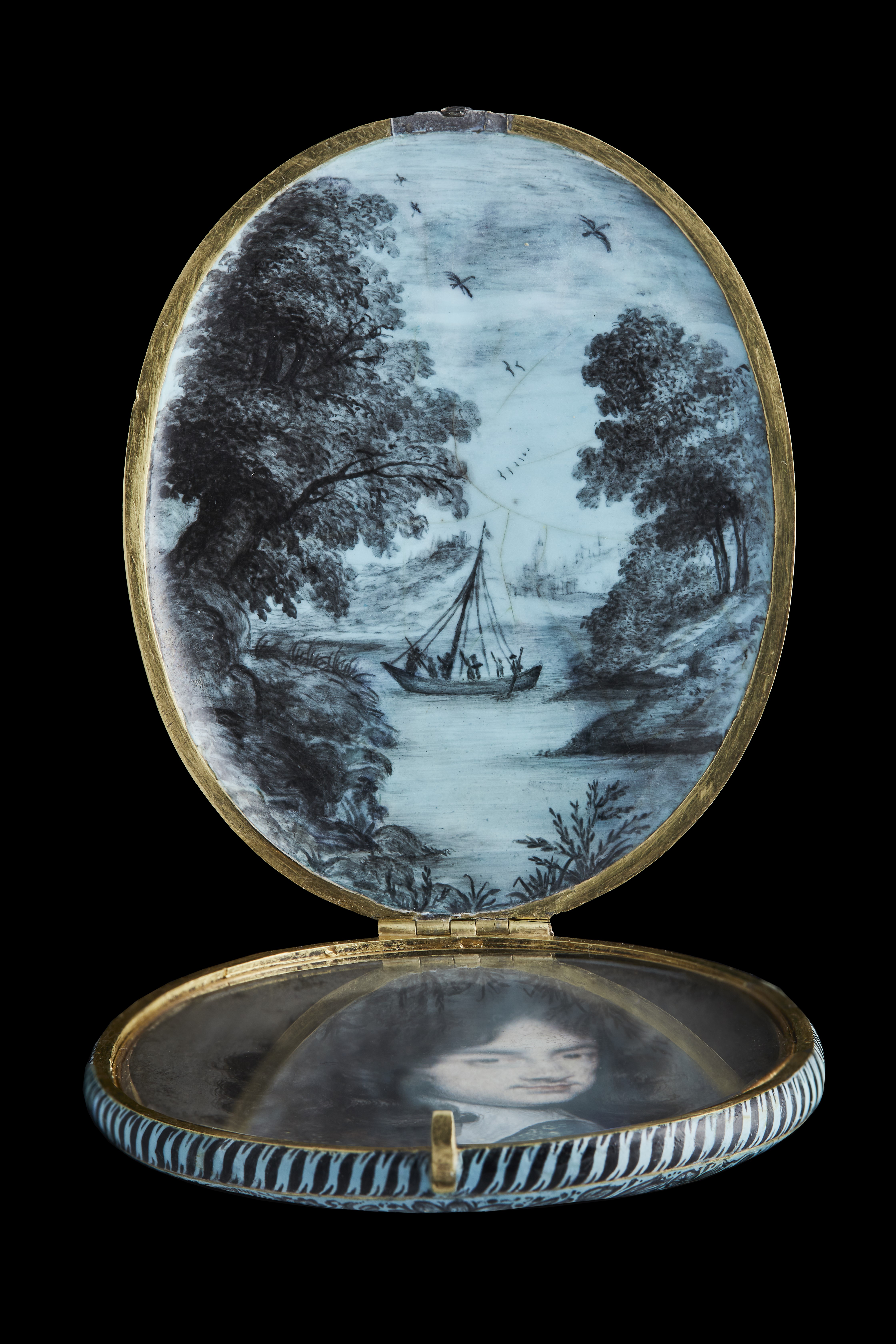
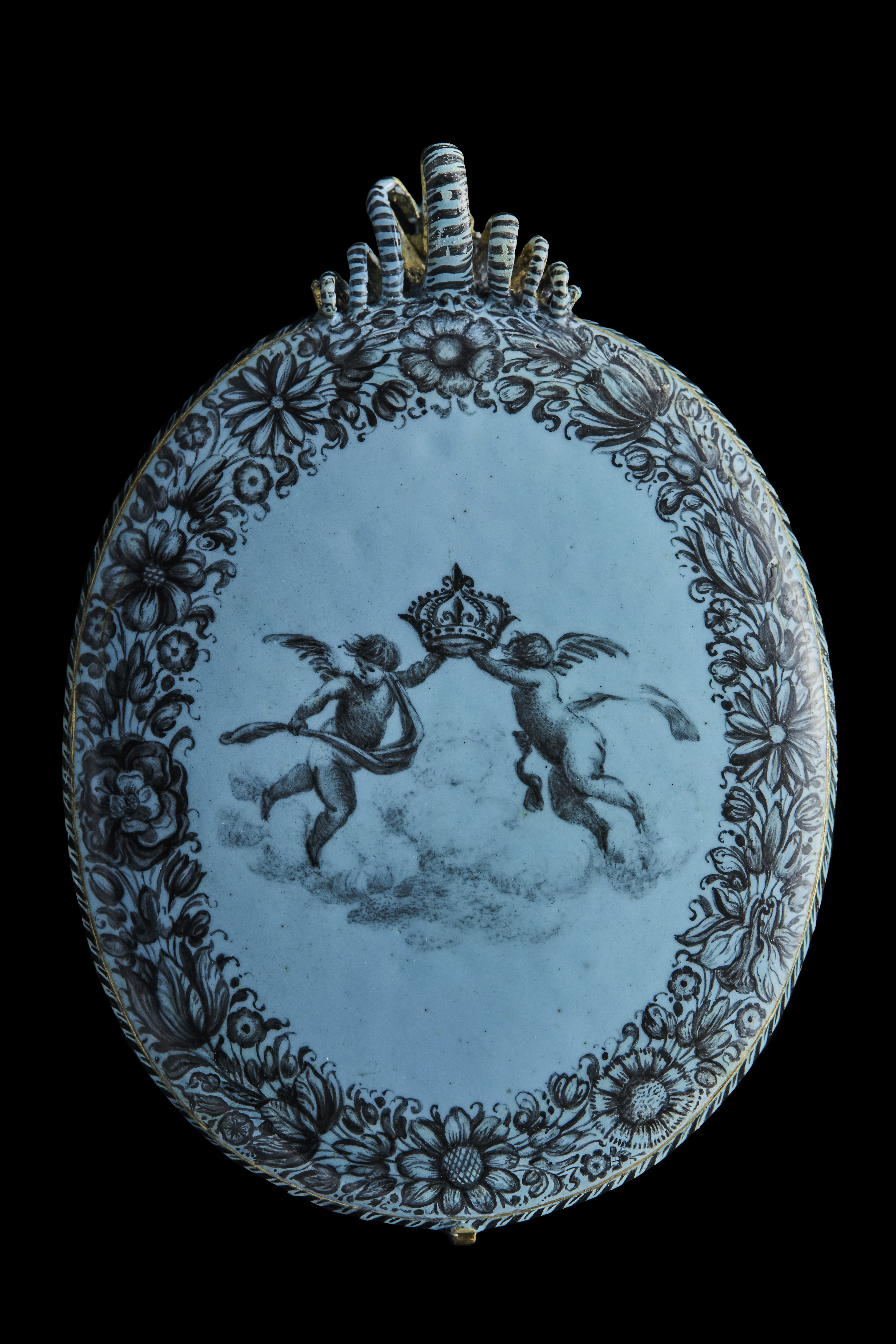 Figures 7,8,9. Lid, interior and reverse original gold locket with a portrait miniature of King Charles II, 1651 by David des Granges
Figures 7,8,9. Lid, interior and reverse original gold locket with a portrait miniature of King Charles II, 1651 by David des GrangesAs well as affirming Charles’s deliberate crafting of his public image, these miniatures highlight the crucial role of leading French artists and craftspeople in shaping such miniature creations. The Seymour miniature is a particularly beautiful example that shows such assimilation of seventeenth-century English and French design. Decorated in blue enamel, encrusted with diamonds, the Seymour miniature bears similarities to designs typical of work carried out by Parisian enamellers and that of the ‘boîtes à portrait’ jewels of Louis XIV’s court (Figs 3,4). Such miniatures, popularised by Louis in the early seventeenth century, symbolised friendship, wealth, beauty, making them ideal tokens of trust, as the one given by Charles to Seymour (Figs 7-9). What is particularly noteworthy is the ways in which Des Granges seems to draw upon the ornamental vocabulary of Gilles Légaré, the goldsmith and jeweller of the French King. As can be observed in the Seymour miniature, a characteristic blue enamel, the abundant garlands of flowers on the lid and verso design bear a comparable likeness to a page in Légarés’s Livre des ouvrages d’orfèvrerie (Figs 5,6). What is more, these ‘boîtes’ seem to become particularly emblematic of the cross-channel artistic exchange during this time, emerging concurrently with the innovative technique of enamel painting on gold. Henri Toutin’s portrait of Charles I (1636), a masterpiece of this technique, exemplifies the shared artistic vocabulary of both French and English seventeenth-century court circles (Fig. 8).[4] In light of this, while des Granges clearly draws inspiration from English miniaturists, including the Mannerist elegance of Peter Oliver and the more naturalistic style of John Hoskins, the exceptional enamelled base and lid display imagery crystallise the place in which this gift was given – Paris (Figs 9,10).
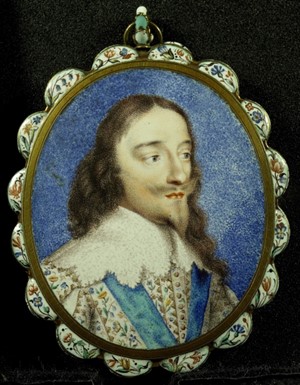
Figure 8. Henri Toutin, Portrait of Charles I, 1636, enamel on gold, Rijksmuseum.
Iconography – Amongst such artistic and political exchange between the French and English courts, the Seymour miniature’s intimate details further reveal a narrative of refuge and ambition. On the interior of the lid, a group of figures cross the Channel, suggestive of a reference to Charles’s own escape during his period of exile. A final image on the back of the locket shows the royal crown held aloft by angel, recognising both the regicide of Charles I and Seymour’s personal devotion to the royal family; a loyal servant who risked his own life to save the crown. Given the significance of the French court as a place of refuge and support during this time, this hidden imagery likely held deep personal resonance for Charles, reflecting both his reliance on French patronage and his aspirations for restoration. The Seymour miniature therefore embodies a complex interplay of political symbolism and personal reflection.
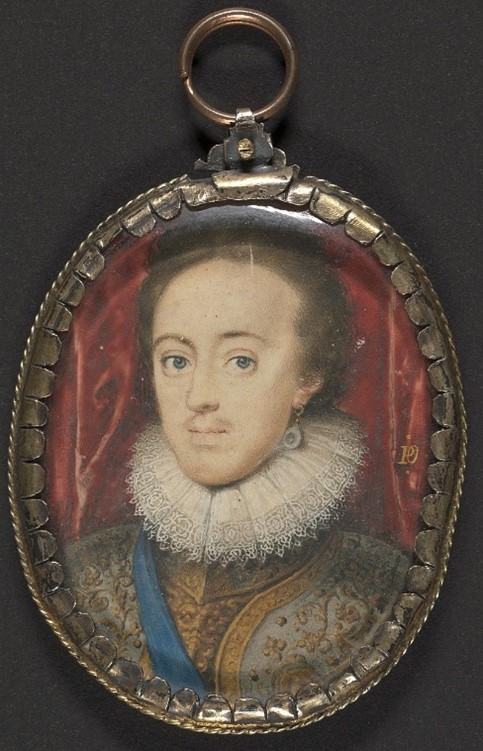
Figure 9. Peter Oliver, Charles I, when Prince of Wales, c.1618-1621, gouache on vellum laid onto a playing card, Yale Center for British Art, Paul Mellon Collection (B1974.2.77).
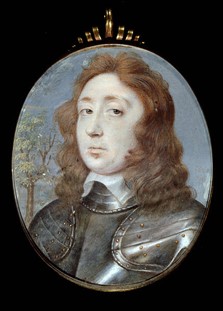
Figure 10. John Hoskins, Portrait of a Man, 1652, watercolour on vellum mounted on table book leaf, Dulwich Picture Gallery.
At a moment of profound uncertainty, Charles II turned to miniature portraits to assert his royal authority. Clad in armour, he projected an image of strength, yet the miniature’s intimate scale allowed him to nurture crucial connections with his inner circle and solidify his ties to France—a delicate balance of power and personal allegiance.
Footnotes:
[1] As described in the accounts kept by David des Granges as recorded in the Treasury Papers from 1671. These papers record a request made by Des Granges for payment for portraits he painted for Charles while he was the King’s Limner in Scotland, including the present work for Seymour.
[2] A collection of original letters and papers, concerning the affairs of England from the year 1641 to 1660.
Found among the duke of Ormonde’s papers, ed. T. Carte, 2 vols. (1739), Vol. 1, p. 337.
[3] Shaw, William Arthur (1897). “Seymour, Henry (1612-1686)”. In Lee, Sidney (ed.). Dictionary of National Biography. Vol. 51. London: Smith, Elder & Co. pp. 322–323.
[4] These boîtes seem to appear alongside the invention of the technique of enamel painted on gold by the goldsmith Henri Toutin, according to Félibien’s dictionary of art terminology. André Félibien, Des principes de l’architecture, de la sculpture, de la peinture, et des autres arts qui en dépendent avec un dictionnaire des termes propres à chacun des arts, Paris, Veuve & Jean-Baptiste Coignard, 1697 (third edition), p. 307-312.
Danielle Jump is an art historian, whose research explores the agency of sixteenth-century artistic exchange in shaping contemporary worldviews and environmental perceptions. Holding degrees from the University of Cambridge and the Warburg Institute, she brings a depth of academic inquiry to her work, drawing upon a broad understanding of art history, including that of Venetian painting, to contextualise her study of miniatures. Her experience includes curatorial support at Museo delle Civilità and research at Christie's Auction House. Danielle is committed to making art accessible and engaging, with a particular interest in exploring how contemporary art intersects with historical forms, including miniatures.
13 Mar 2025
Something About Mary: The Popular Image of Mary Queen of Scots in the 18th Century
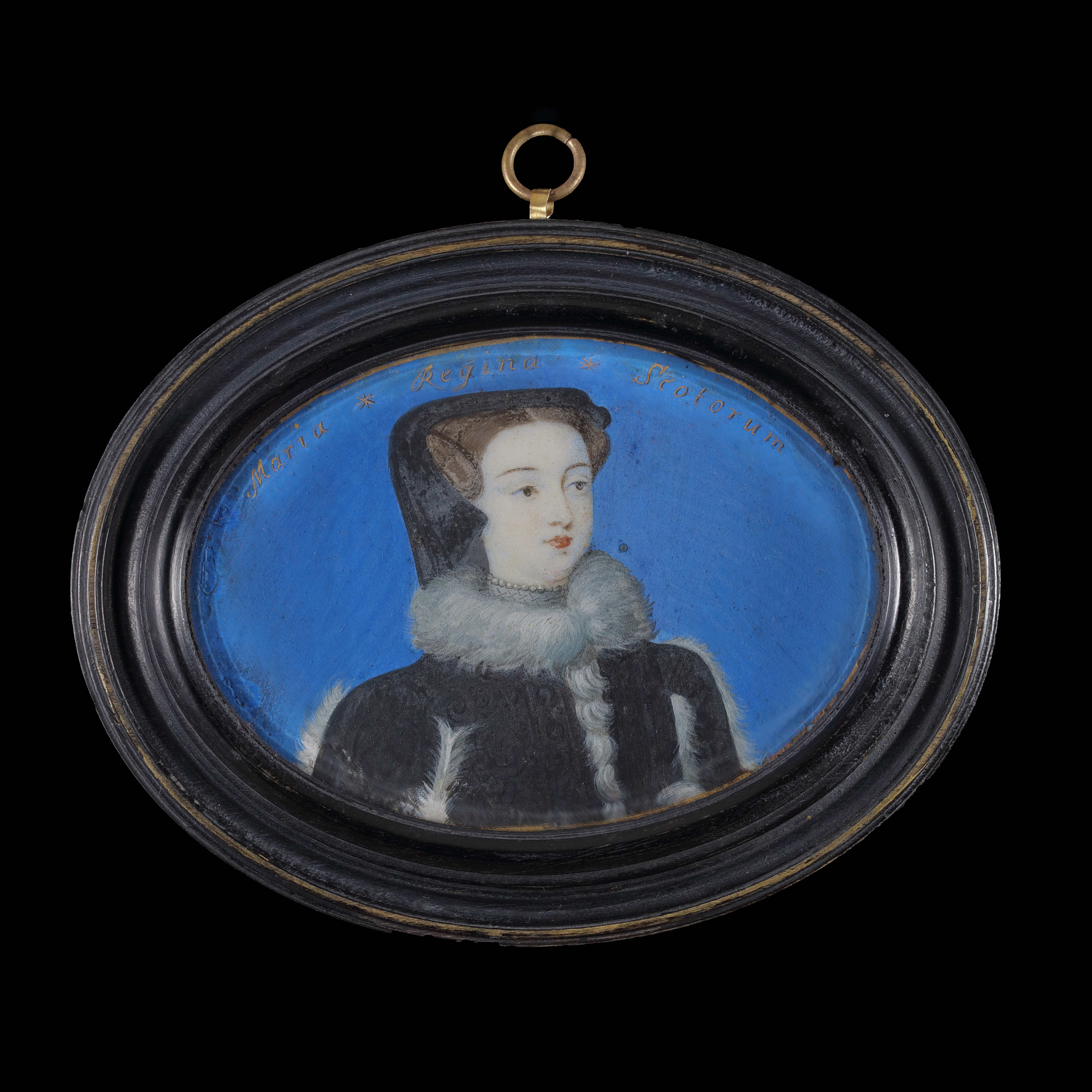
Fig. 1 BERNARD LENS III (1682-1740), Portrait miniature of a Lady called Mary Queen of Scots (1542-1587), wearing a black coat with white fur trim; circa 1720 – for sale with The Limner Company
As the new century began, technological advancement boomed and the print trade rapidly grew. At the same time, an interest in history and antiquarianism was flourishing, prompting a democratisation of access to print collecting. In particular, a trend of producing and possessing engraved historical 'heads' emerged, alongside portrait miniature heads like Fig. 1. In 1717 the newly established Society of Antiquaries employed George Vertue to engrave and print historical portraits. Alongside Vertue, other printmakers, artists and historians began making serious attempts to find genuine reproductions of historical figures like Mary, although they often misdated paintings and dress and identified many portraits in error. Regardless, there was an enormous commercialisation of effigies of royals in miniatures and reproduced engravings, laying the foundations for miniaturists to become part of an industry of historic copyists.
As a steeped historical figure, Mary Queen of Scots was a natural subject for these painters and maintained a large foothold in the market thanks to her cult following. Examples of miniatures like Fig. 1 are highly prevalent, largely thanks to an artist named Bernard Lens III (1682-1740), who ran a thriving business selling copies of historic miniatures. This fashion originated with Charles I, who had a large number of his paintings copied in miniature and would take them on his travels. Lens was a successful miniaturist and copyist and this Mary, inscribed 'Mary Regina Scotorum' in gold, is his most often encountered copy, with Fig. 2 another example of this copy. Lens was also a drawing master and his pupils included the three children of King George II, as well as the famous art collector Henry Walpole. He is credited with introducing the painting of miniatures on ivory as opposed to vellum to Britain. However, Lens' prosperous career also included the production and distribution of historic portrait miniatures. Lens had a keen interest in history, collecting and studying older miniatures such as that of Samuel Cooper and providing services relating to the restoration and reframing of paintings. He is well-known for his 'cabinet miniatures' for aristocratic clients, as it was fashionable for buyers to request copies of their own art collections. As a result, Lens was especially famed for miniature copies of old masters. The majority of this work was commission-based, whereas Lens most likely produced these Mary miniatures for the public market, knowing her popularity and fame. In fact, he may well have influenced his pupil, Catherine da Costa (1679-1756), an esteemed miniaturist in her own right, to produce this extremely similar portrait miniature of Mary (Fig. 3).
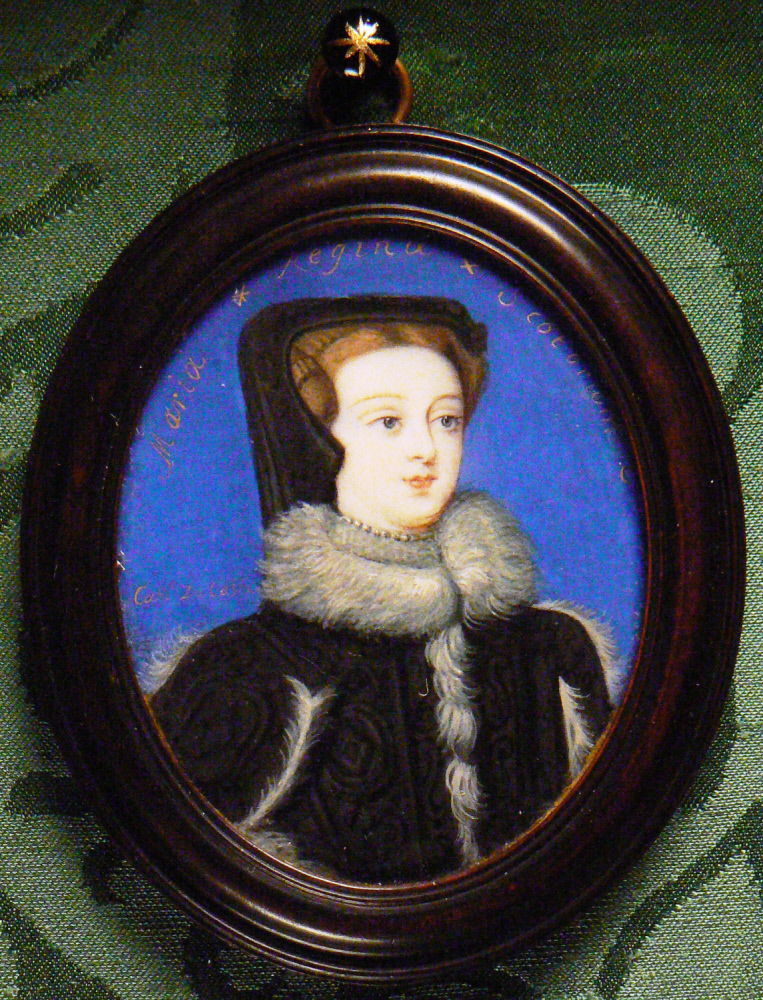 Fig. 3, CATHERINE DA COSTA, Imaginary Portrait of Mary Queen of Scots (1542-1587); circa 1720 - Ham House Surrey, National Trust
Fig. 3, CATHERINE DA COSTA, Imaginary Portrait of Mary Queen of Scots (1542-1587); circa 1720 - Ham House Surrey, National TrustLens' speculative business venture expanded beyond productions of Mary though and he painted a whole series of 'heads' of English Kings and Queens (and the Lord Protector Oliver Cromwell) on vellum throughout the 1730s (such as Fig. 4). This painted series are more roughly and rapidly painted than his cabinet miniature works, and most likely appealed to an audience of collectors desiring more expensive versions of the engraved 'heads'. Again, the series is characterised by the distinctly 16th-century solid bright blue background. This portrait style was so contemporaneously fashionable that Lens even depicted his sitter clients in the same Stuart style. For example, Lens' portraits of Richard Whitmore MP and his family have the same background (Fig. 5).
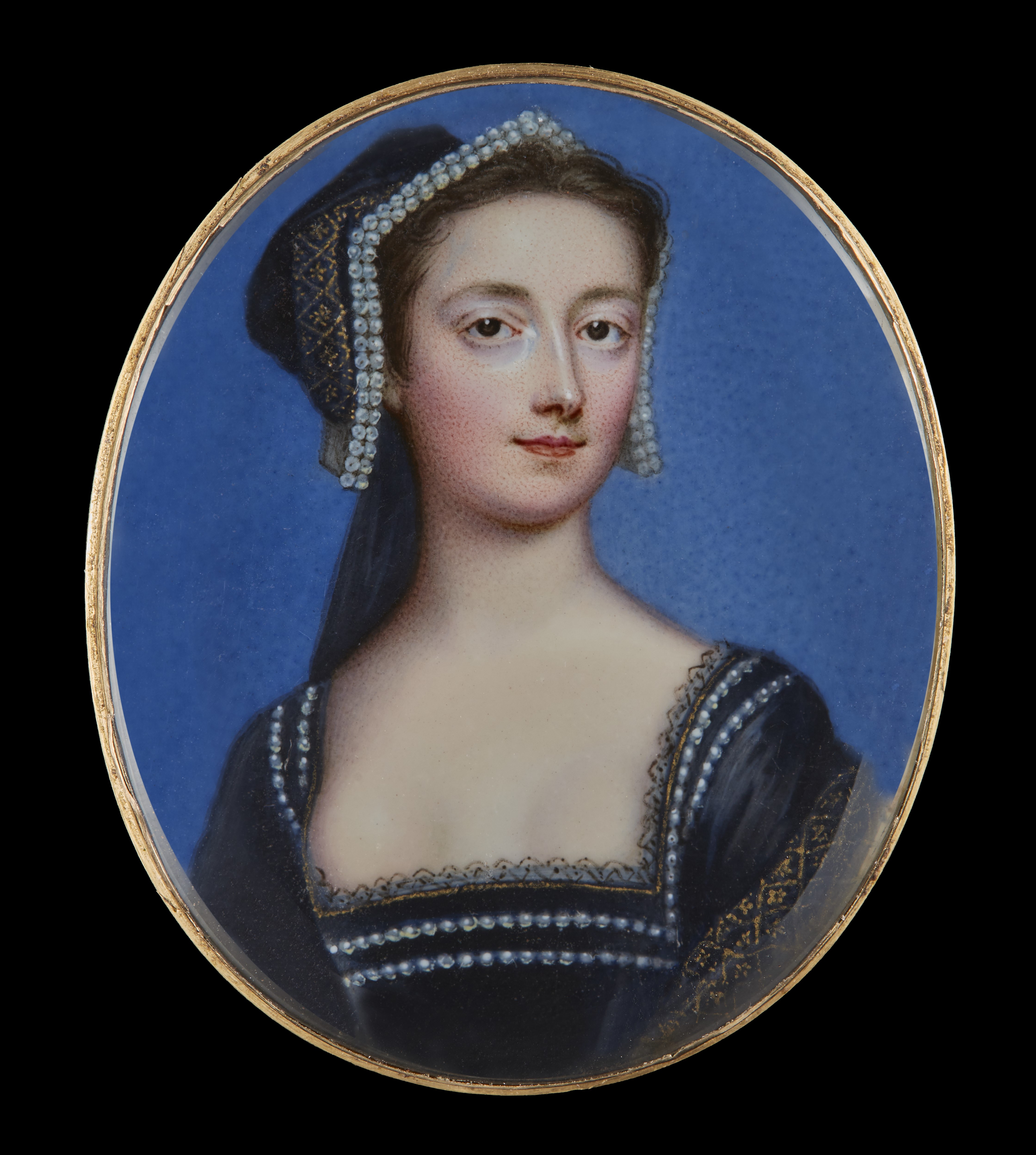
Fig. 6, CHRISTIAN FRIEDRICH ZINCKE (c. 1683-1767), Portrait of Elizabeth Montagu (1718-1800) in black, lace-edged costume, the dress and gold-figured coif with pearls; c. 1740-1745 - Private Collection, UK
Out of all the 16th century royals, Mary's fame and look also influenced Lens' other clients. Whilst painting a picture of a lady wearing the same style of dress to Mary, the lady reportedly told Lens 'But Mr. Lens, you have not made me like Mary Queen of Scots.' ‘No, madam,’ he replied. ‘If God Almighty had made your ladyship like her, I would.’ This not only illustrates the intrigue and widespread desire to be like Mary, but also Lens' reputation for commitment to painting true likenesses. It is therefore even more of a mishap that Lens' portrait miniatures of Mary actually follow a misguided image. Despite Lens' keen eye for the past and the proliferation of these snapshots of Mary, this particular iteration of the ill-fated queen was taken from a portrait once believed in good faith to have been a true likeness of the queen, but which actually has slightly murkier origins. The miniature belonged to the Duke of Hamilton who, as it was damaged, sent it to miniaturist Lawrence Crosse with the instruction to ‘make it as beautiful as he could'. Crosse obliged, unknowingly spurring the wide circulation of the popular yet inauthentically depicted queen. Lens was not alone in his penchant for painting Mary, nor his subjects. Fig. 6 is a portrait of Elizabeth Montagu by one of Lens’ contemporaries, Christian Friedrich Zincke (c. 1683-1767), with the sitter portrayed as Mary Queen of Scots. Montagu was a member of the Bluestocking Circle (c., an elite social and intellectual group, indicating the reach of Mary’s influence. Regardless of the real origins of the portrait, Mary’s look and legacy proliferated throughout portrait miniatures of the time, indicating the strength of her grip on the national imaginary.
This article was written by guest blogger and freelance researcher, Phoebe Griffiths.
19 Feb 2025
Celebrating Austen: Two Miniature Discoveries Connected to Jane Austen
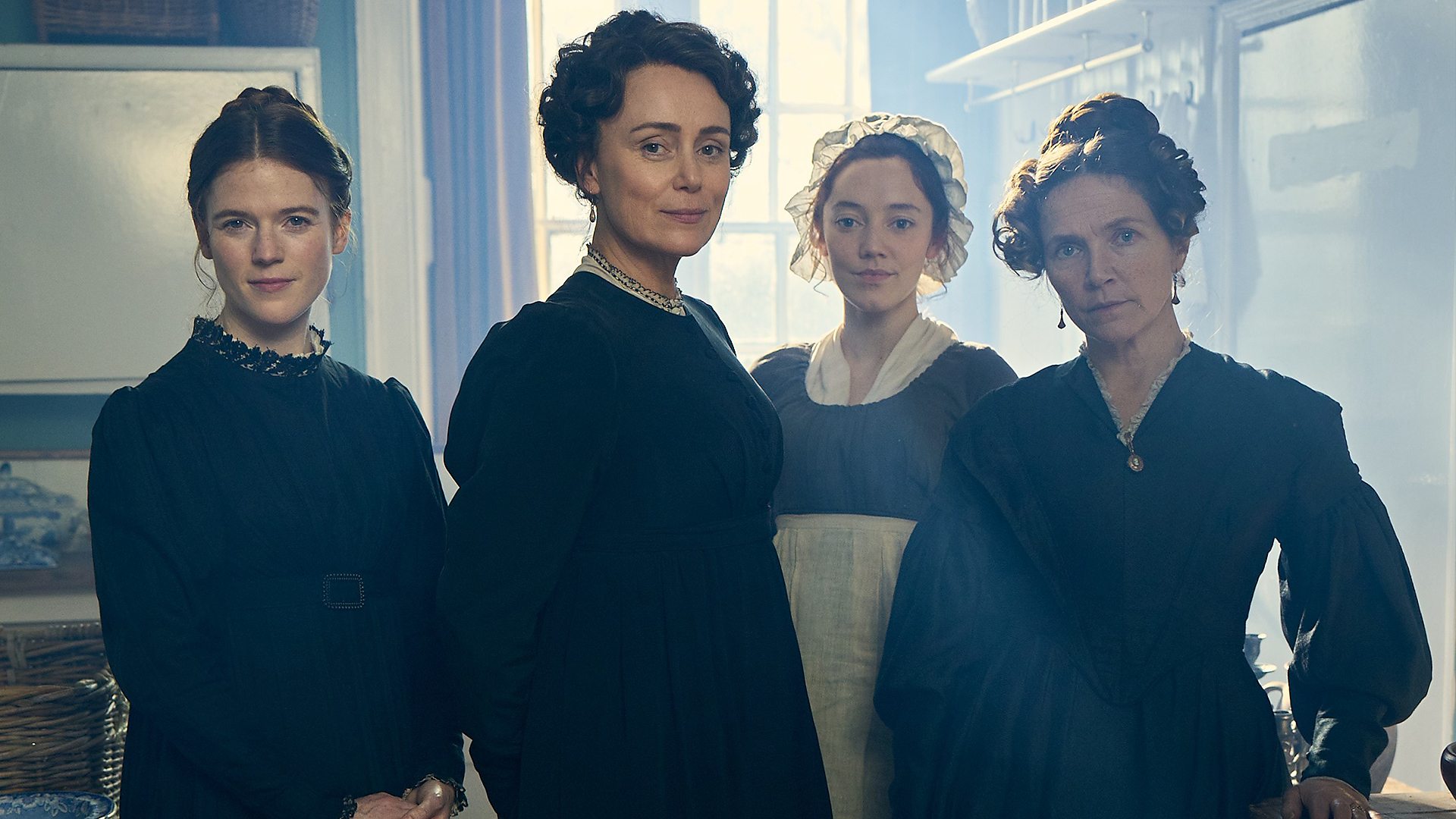 'Miss Austen', the BBC2 series released earlier this month, coincides with the 250th anniversary of Austen's birth.
'Miss Austen', the BBC2 series released earlier this month, coincides with the 250th anniversary of Austen's birth. When the Limner Company launched in 2023, we did so with a very special item of stock – a portrait of James Brydges, 8th Baron Chandos, Turkish Ambassador 1681-84 [fig.1], explored in one of our first blog posts ‘Strange Connections: The Ambassador of Constantinople, Jane Austen and toasted cheese’. This blog explored the connection between Cassandra Leigh, Jane Austen’s mother and the Brydges family. This connection ultimately led to Jane’s closest brush with marriage – to Brook Edward Bridges, who likely proposed in late summer of 1805.
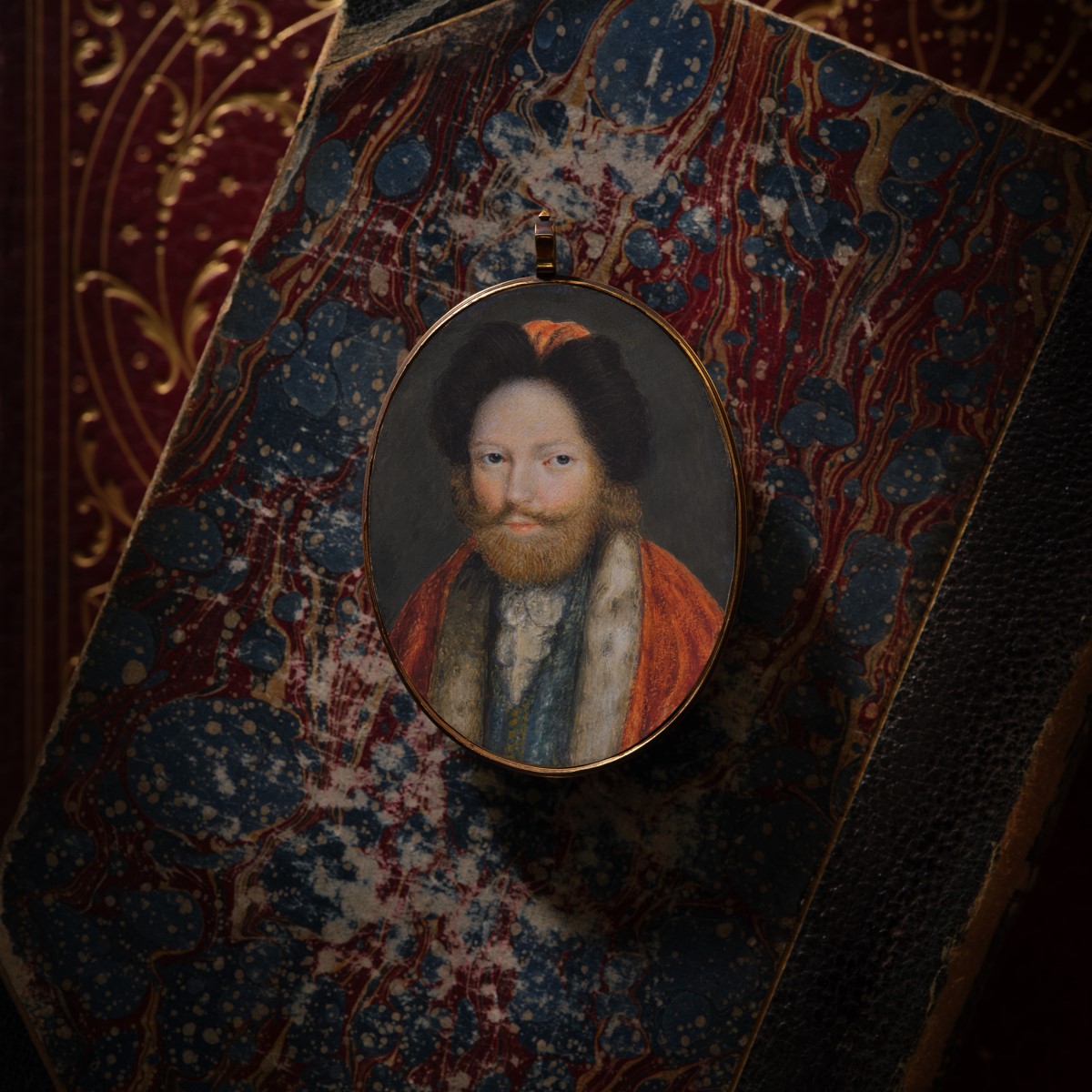
In 2020, when Emma was consulting for Philip Mould & Co., she discovered that a pretty, but fairly ordinary, portrait miniature by William Wood was of Mary Pearson [fig. 2], who was briefly engaged to Jane’s brother Henry Thomas Austen (1771-1850). Jane’s encounter with the unfortunate Mary was recorded in her candid remarks to her sister Cassandra, where she warned her to ‘be careful not to expect too much Beauty’ in a letter of 1786. In fact, Jane also noted that Mary’s picture, more than likely a miniature, ‘is of no great resemblance’, citing the age old issue of flattery over a good likeness in a portrait. Poor Mary’s appearance was further scrutinised by the woman who was to take her place as Henry’s paramour – Eliza Hancock – who described her as 'a pretty wicked looking girl, with bright black eyes which pierce through and through'.
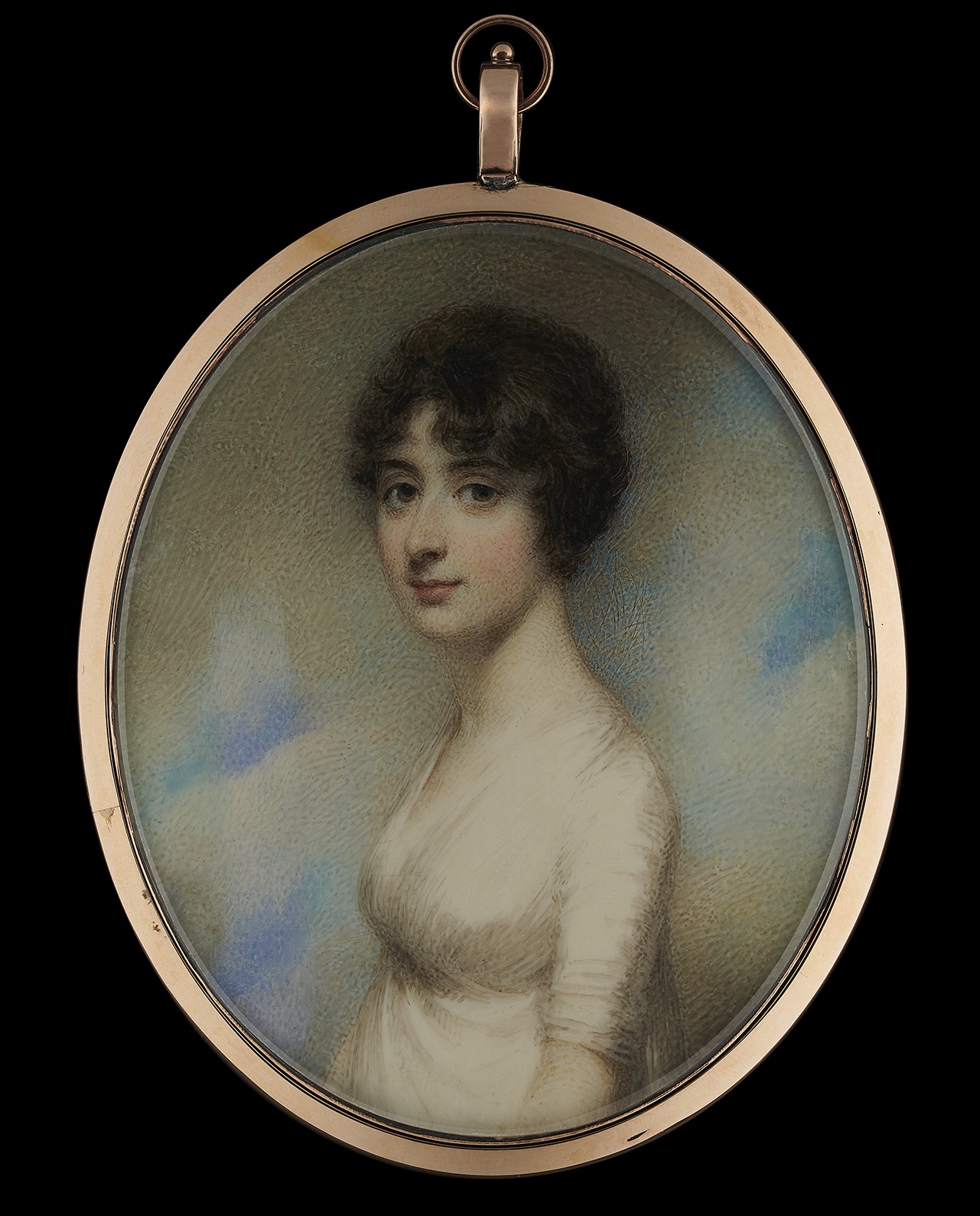 Figure 2. Portrait miniature of Mary Pearson, c.1798, William Wood (1769-1810) - Jane Austen's House Museum.
Figure 2. Portrait miniature of Mary Pearson, c.1798, William Wood (1769-1810) - Jane Austen's House Museum.When the press were told of the discovery, they focused on the influence that Mary Pearson had likely had on a character in the novel that Jane was writing at the time – Pride and Prejudice. Jane’s brother had met Mary Pearson while his regiment was camped with that of her father, naval officer Sir Richard Pearson. She was likely the inspiration for Lydia Bennet - the officer-obsessed teenager who eloped with the notorious Mr Wickham in the novel.
Jane’s relationship with Mary Pearson was cut short by Henry’s unexpected breaking of their engagement – suddenly, this woman who was going to be a sister-in-law, was set adrift. Henry’s affection had always been for his exotic cousin, Eliza Hancock, who had married Jean-Francois Capot de Feuillide in 1781. When her husband was killed in France, she returned to England and Jane’s eldest broher James proposed to her. She refused, but eventually accepted Henry’s offer of marriage and the couple were married in 1797.
There is no record of how Mary felt after her engagement to Henry was broken, but the short time that Jane knew her clearly made an impression. It is tempting to see this as an unattractive side to Jane’s character – her judgment of Mary’s looks seems particularly unkind. However, Jane continued to stay in touch with Mary up until 1799, around the time that she was painted in this miniature by Wood. However, the shameful end to the engagement left a lasting embarassment for the Austen family. In 1807, when Mary was living with her sisters in Southampton, Jane described their home as ‘the only Family in the place we cannot visit’. Mary eventually married in 1815, the same year that the novel Emma was published and two years before Jane’s death in 1817.
The miniature now resides at Jane’s home, now a museum, at Chawton in Hampshire. Jane’s pleasure at moving into this small house was expressed in a letter to her brother, Frank, in 1809;
Already in it, to our mind,
And how convinced that when complete,
It will all other Houses beat.
20 Jan 2025
Catherine Da Costa's Studies of Insects
London, 1679 - 1756
STUDIES OF VARIOUS INSECTS
Signed with the artist's initials within an armorial device u.r. C.C. / F.
Bears inscription to mount l.r. M. da Costa
Tempera on vellum
PROVENANCE:
Possibly Left by the artist in her will to her son, Abraham da Costa (d.1760, London) 2;
By whom left in his will to one of his surviving sisters;
With Galerie Ratton Ladrière, Paris (by 2006), from whom acquired by the present owners; Private Collection, London
This work *NOW SOLD* was presented for sale by Tom Mendel of the Nonesuch Gallery and Emma Rutherford of the Limner Company and is available to view online here. They are grateful to the following for their generous assistance:
Dr Henrietta Ryan, Dr Kim Sloan, Dr Susan Sloman and Dr Tabitha Barber
In the autumn of last year, I was shown an extraordinary work on vellum of detailed studies of insects [Fig.1]. Excitingly, the study, which was just slightly larger than a modern A5 piece of paper, was inscribed with a name she knew well – Catherine da Costa. Intriguingly, at the top right hand side of the page was a coronet, under which a shield held the letters ‘C.C/ F’, framed with two palm fronds – likely standing for Catherine Costa/ Fecit (‘she made it’). The palm fronds framing this vignette also began to make sense when I decoded them as a symbol of Saint Catherine of Alexandria, a Christian saint martyred in the early fourth century [Fig.2/ 2A].[1]
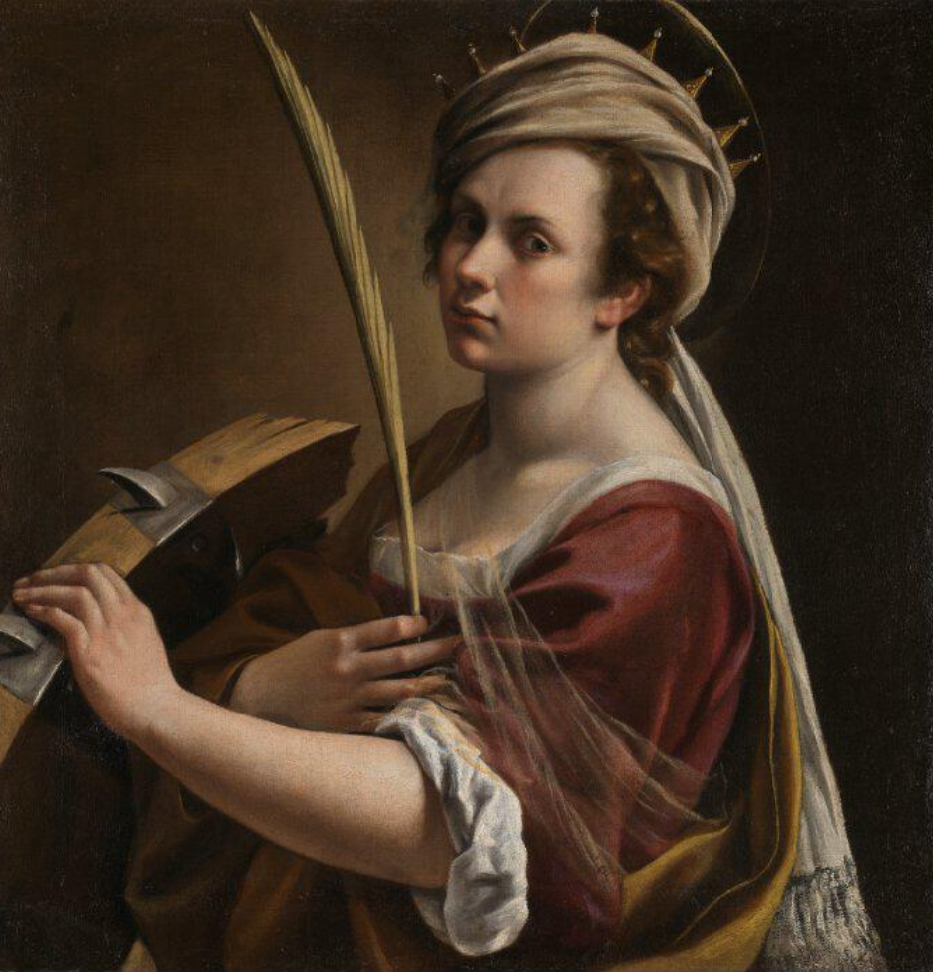
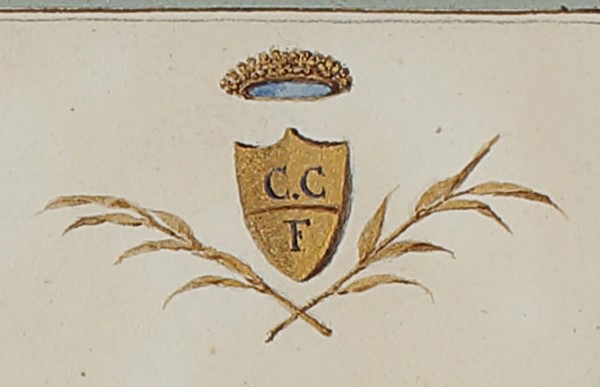
Although at first glance this work of art has little to do with the portrait miniatures The Limner Co. usually researches, the artist Catherine da Costa is best known as working in this medium. Da Costa’s her known output is a series of small portraits of family; idealised allegorical women and suitably Christian subjects such as the Penitent Magdalen. Da Costa studied under the Royal Limner, Bernard Lens III (1682-1740), as noted by the ever-observant George Vertue; 'One of the Da Costa Jews daughters learn't to limne of Bernard Lens for many years she having begun about 1712 continued to 1730...'.[2]
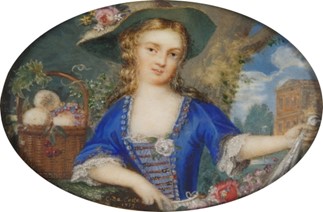
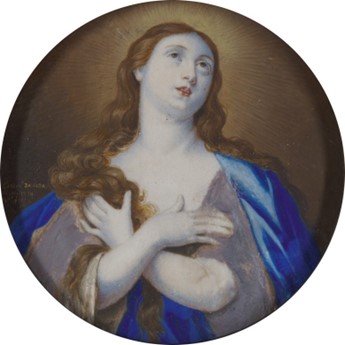
The tiny creatures on the page of this present work posed something of a puzzle. Usually an artist presents a distinctive technique which can be followed through their oeuvre – here was a study that was simply head and shoulders above any extant work by da Costa in terms of quality, composition and originality. The textures depicted in watercolour – from the velvet-soft butterfly in the centre to the miniscule hairs on the ‘fur’ of the bumblebee’s body – plus the careful shadows under each insect, were not only of a high quality compared to the known works by da Costa, the painting exceeded many other artists working in this period full stop. I consulted art historian and dealer Thomas Mendel, who runs the Nonesuch Gallery in Mayfair, London and has a special interest in the illustration of the natural world from artist’s working in the 17th and 18th centuries.
Thomas pointed out that this outlier of an artwork was also unusual for the period in which da Costa was working. As a fascinating intersection between 'Still Life' painting and botanical illustration, it was quite unlike the clunky copies made under Lens’s careful instruction. The composition is likely indebted primarily to the Flemish painter Jan van Kessel the Elder (Antwerp, 1626-1679), whose delicate small-scale paintings of insects and fruit could be found in noble and royal collections across Europe by the time Catherine began to paint. Artist’s such as van Kessell were highly skilled – not least because their presented in the sorts of cabinets created to display artworks which demonstrated the owner's worldliness in their kunstkammer (or 'cabinet of curiosities') [Figs 3/4/5/6].
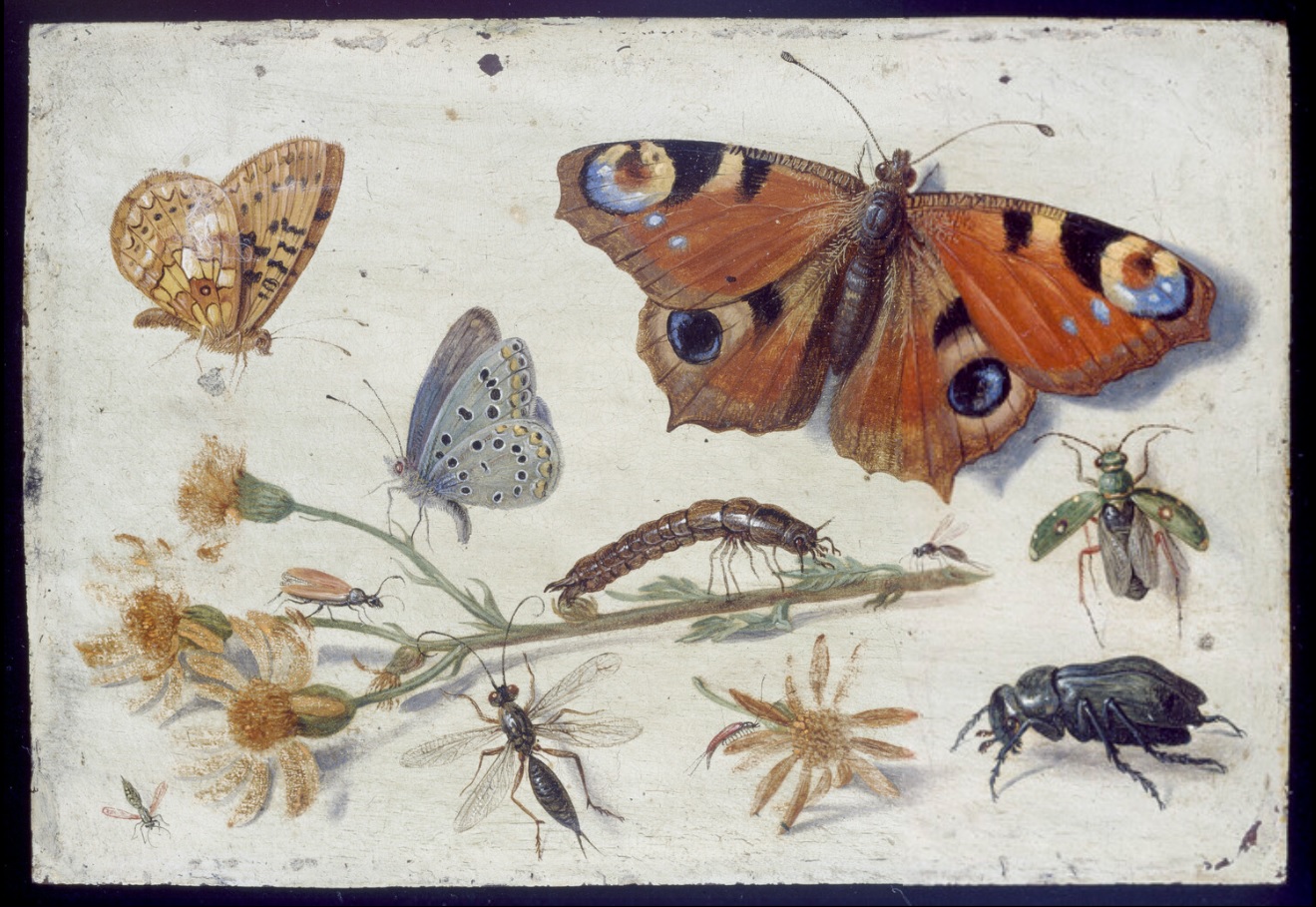 Fig. 3 Three Butterflies, a Beetle and other Insects, with a Cutting of Ragwort, early 1650s, oil on copper, 9 x 13 cm, Jan Van Kessel I (1626-1679) - Ashmolean Museum, Oxford [acc. no. WA1940.2.42]
Fig. 3 Three Butterflies, a Beetle and other Insects, with a Cutting of Ragwort, early 1650s, oil on copper, 9 x 13 cm, Jan Van Kessel I (1626-1679) - Ashmolean Museum, Oxford [acc. no. WA1940.2.42]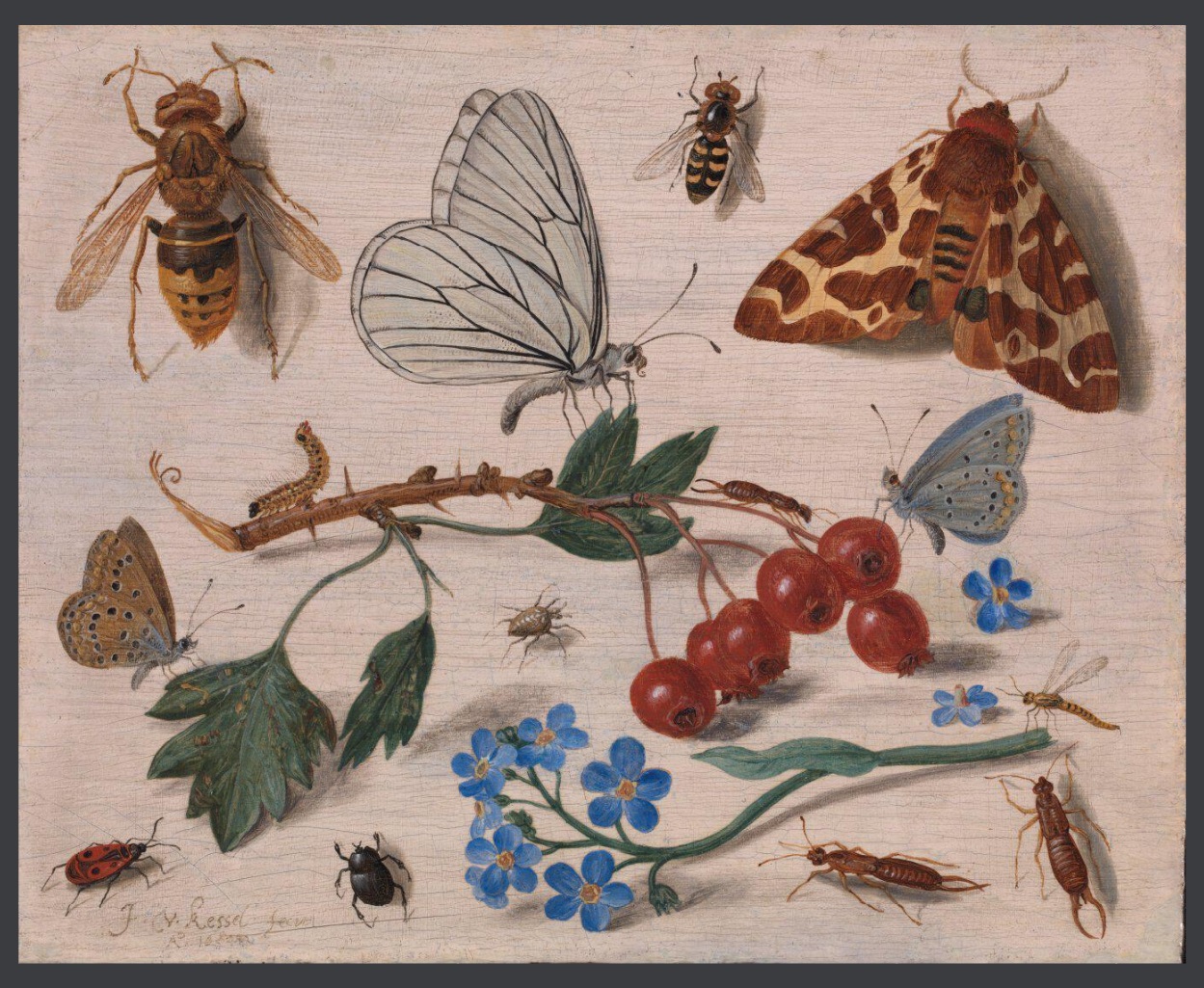 Fig. 5 Butterflies, Moths and Insects with Sprays of Common Hawthorn and Forget-Me-Not, 1654, oil on panel, 11.8 x 14.7 cm, Jan van Kessel I (1626-1679) - The National Gallery, London [inv. no. NG6666]
Fig. 5 Butterflies, Moths and Insects with Sprays of Common Hawthorn and Forget-Me-Not, 1654, oil on panel, 11.8 x 14.7 cm, Jan van Kessel I (1626-1679) - The National Gallery, London [inv. no. NG6666]As well as being an astonishing insight into da Costa’s skills as an artist, it also provided a new understanding of her international network of connections. She had had a privileged start in life – she was born at Somerset House, then the Royal residence of Queen Catherine of Braganza (1638-1705), the Portuguese wife of King Charles II. Catherine's Portuguese father, Dr Fernando Mendes (d.1724), was the physician to the Queen and had converted from the Jewish faith to Catholicism, though he maintained close ties with the Anglo-Jewish community throughout his time in London [Fig7.].
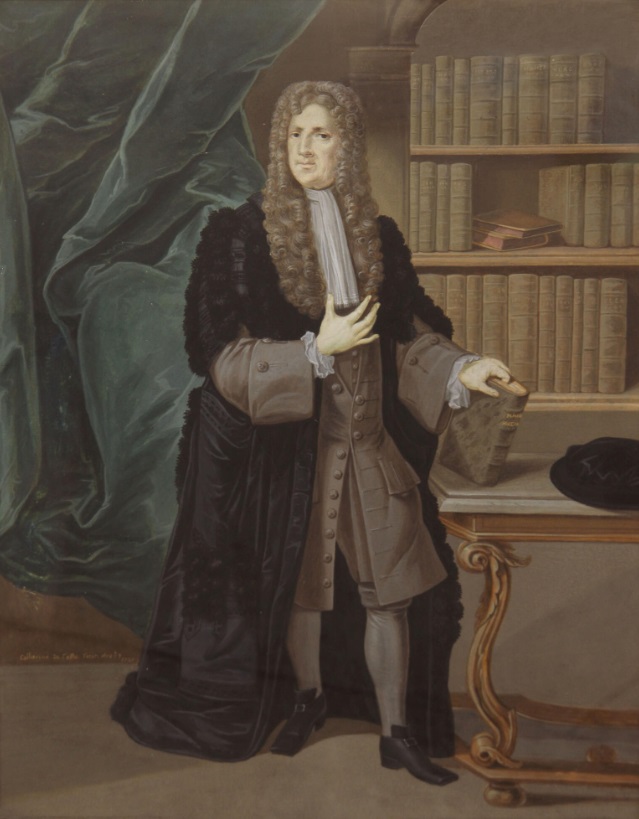
Catherine married her cousin Moses da Costa, a successful banker and merchant, and they lived together at the grand Cromwell House in Highgate, near other distinguished members of the Jewish community and gentry. The Mendes da Costa side of the family had prospered enormously following their emigration to Britain, and their annual income equalled that of much of the English aristocracy. Catherine's daughter Leonora also married into a phenomenally wealthy family of Portuguese-Jewish extraction, the Lopes de Suassos, who could boast enough money to loan William of Orange two million guilders to finance his voyage to London to claim the British throne.[3]
Catherine’s place in society clearly opened avenues not available to other women, particularly women artists. She likely knew Sir Hans Sloane and Dr Richard Mead who created small-scale private museums which included cabinets of curiosities, together with antiquities, impressive libraries and large portraits in oils including items from the owner's collections. As her teacher was also the Royal Limner, Bernard Lens III (1682-1740), this may have aided the access to collections with similar insect studies.
When researching this impressive work, Thomas gathered as many artworks by da Costa as he could find, including rarely-seen later paintings on vellum now in Amsterdam at the Joods Historisch Museum [Fig.8]. Here, it was clear that Catherine had later surpassed her master Lens, producing ambitiously large and detailed watercolour portraits on vellum of her daughter and grandchild. Here was the answer to the discrepancy between her early works under the instruction of Lens and this eminently superior study of insects. Dated to circa 1745, almost three decades separated these artworks and Catherine’s progress was clear. It is likely that, with this study as a benchmark, further works will come to light showing just what Catherine could achieve.
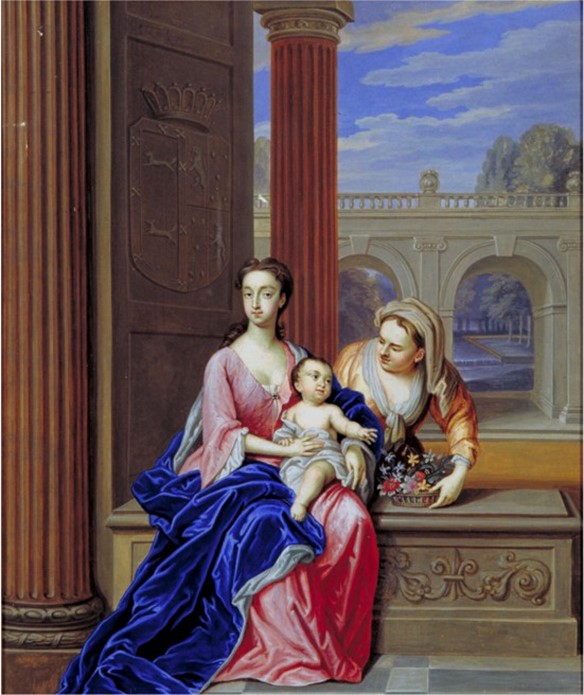
In May 2025, The National Gallery of Art in Washington will open an exhibition entitled ‘Little Beasts; Art, Wonder, and the Natural World’. Although it was too late to include the present work, it will certainly alert scholars to the oeuvre of da Costa and her new importance as a highly skilled artist in this field.
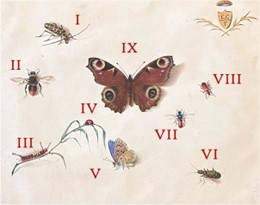
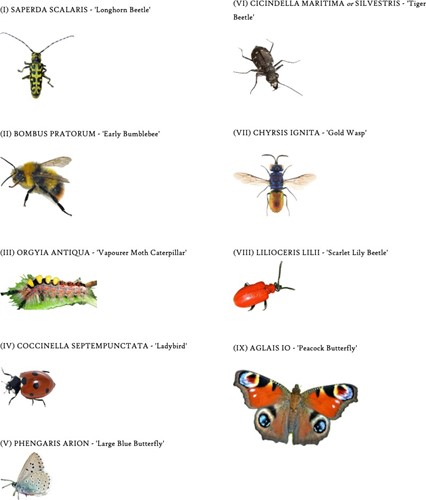
[1] George Vertue, B.M. Add Mss. 23079 f.26, printed in full in The Walpole Society, vol. XXII (Vertue III)
[2] Reportedly, Leonora's husband Francisco refused to accept any collateral for this massive sum, saying: “If you succeed, I know you will repay me; if you do not, I agree to lose the money.”
15 Oct 2024
Up Close and Personal: Portrait Miniatures in Context
Compton Verney’s new exhibition, ‘The Reflected Self: Portrait Miniatures 1540-1850’, co-curated by Emma Rutherford of The Limner Company, tells the history of the portrait miniature with this continuity in mind. From a remarkable pair of portrait miniatures that would have been held by Queen Elizabeth I herself, to the daguerreotype and today’s ‘selfie’, the exhibition examines the function of portrait miniatures and this most personal form of portraiture.
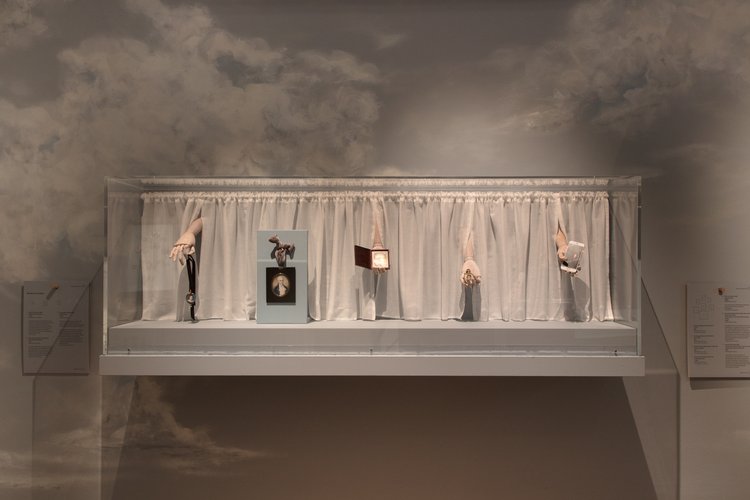
Installation view of The Reflected Self: Portrait Miniatures 1540-1850 © Compton Verney, photo by Jamie Woodley
The portrait miniature has its origins in illuminated manuscripts. The term ‘miniature’ did not originally refer to the size, but derives from the Latin word miniare - the red lead paint used by manuscript illuminators. Rulers might have their image incorporated in a manuscript, representing their authority in the same way as a wax seal.
It was during the early 16th century that small-scale portraits came to function apart from the manuscript, used in diplomacy and marriage negotiations. While a diplomatic portrait might sound lofty, the intention was personal: a miniature held in one’s hand creates a connection more readily than a stately portrait hung on the wall – attested by the account of Queen Elizabeth I kissing a miniature of Mary, Queen of Scots in the presence of the Scottish ambassador.
Miniatures could also inspire devotion of another kind. The giving of one’s portrait quickly became part of the courtship ritual that would last for centuries. Elizabethan miniatures epitomise the romantic and chivalric culture of the age, the sitters often appear distinctly flirtatious or forlorn, and some contain messages in cryptic imagery or poetic phrases that dance around the border in golden calligraphy.
Whether they depicted a monarch or a loved one, miniatures were intended to be kept on one’s person all the time. Small and often housed in a locket of some kind, they were portable and robust enough to be worn on the body. The recipient’s relationship with the sitter would determine whether the miniature was worn openly or concealed. The black string necklaces commonly worn by women in the Elizabeth and Jacobean periods would often have a love-token such as a miniature attached, hidden in their décolletage beneath the wearer’s bodice. The intimacy of this gesture need not be explained.
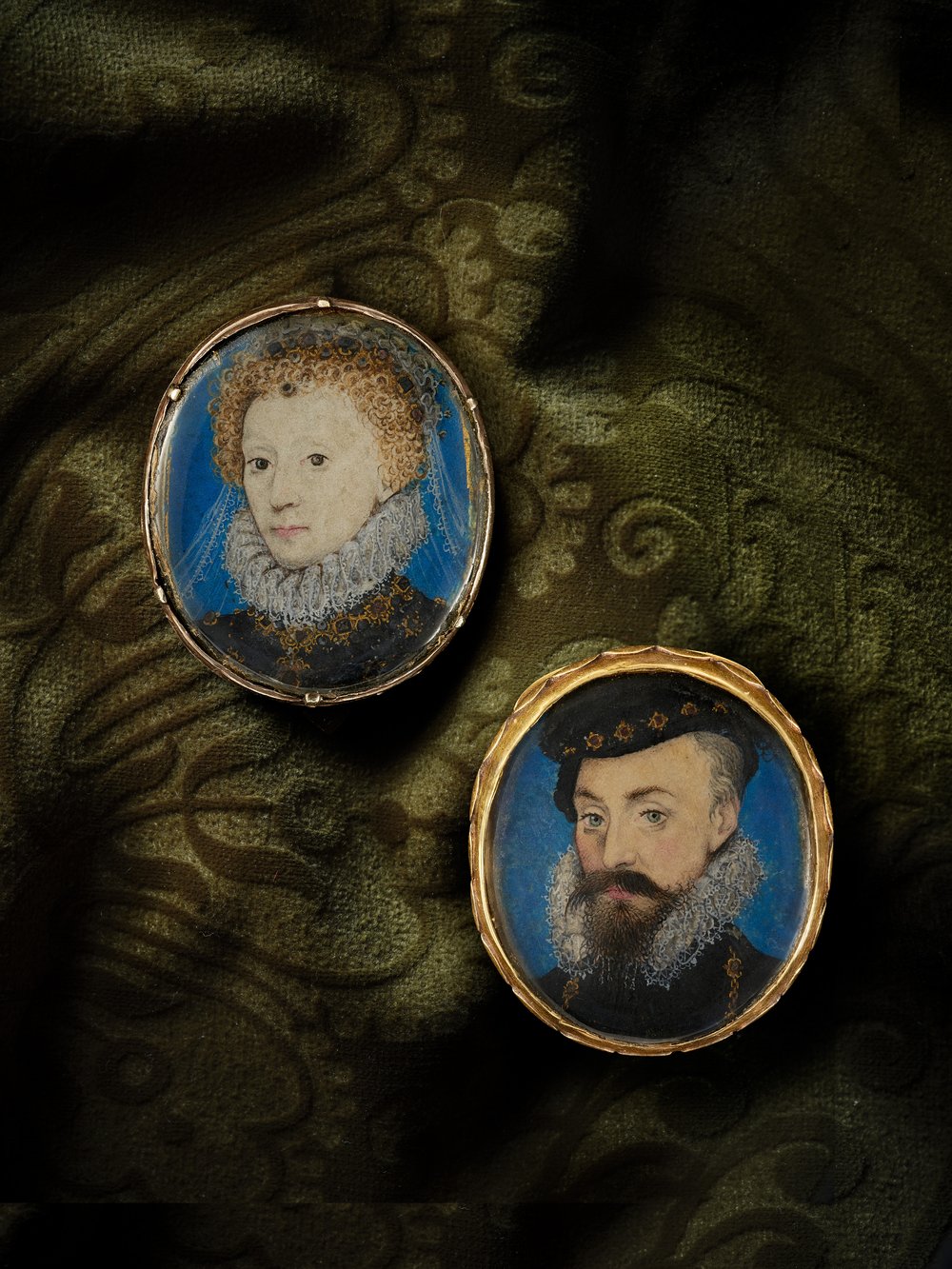
Fig. 1. Nicholas Hilliard (c.1547-1619), Elizabeth I (1533-1603) and Robert Dudley, 1st Earl of Leicester (1532-88), c.1575, watercolour on vellum [Private Collection, recently sold by The Limner Company] – currently exhibited in The Reflected Self: Portrait Miniatures 1540-1850
An extraordinary example of this romantic type of miniature is included in the Compton Verney exhibition, which would have once been amongst Queen Elizabeth I’s most personal possessions. A tiny, thumbnail-sized pair of miniatures by Nicholas Hilliard (c.1547-1619) [figure 1], depicting the queen and her ‘favourite’, Robert Dudley, 1st Earl of Leicester (1532-88). They would likely have been housed together in a locket, which, when closed, would place the portraits face to face. This intimate gift demonstrates the sitters’ close relationship as well as Dudley’s audacity in seeking to position himself as a suitor for the queen.
Aside from affairs of the heart, one might wish to conceal a miniature that conveyed dangerous political beliefs. Examples in the exhibition from the mid-to-late 17th century depict many of the leading protagonists of the English Civil War, Restoration and Glorious Revolution, and would have been used to reward or inspire loyalty and demonstrate allegiance. The production of miniatures of ordinary folk also proliferated during the turbulence of this period, as loved ones were separated by war.
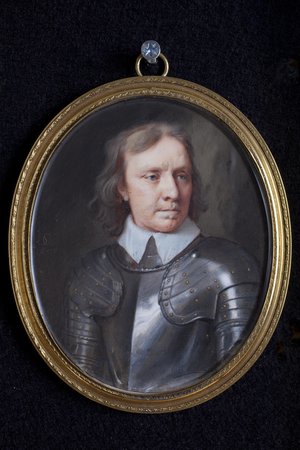
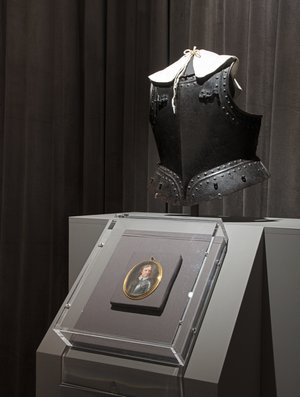
Fig. 2. Samuel Cooper (1607/8-72), Oliver Cromwell (1599-1658), 1657, Watercolour on vellum [Compton Verney Collection] – currently exhibited in The Reflected Self
Installation view of The Reflected Self. Both images © Compton Verney, photo Jamie Woodley
Whatever the nature of the commission, all miniatures were intended to reflect the true self. For the Puritan Oliver Cromwell, flattery was out of the question and it is from his instruction to the miniaturist Samuel Cooper (1607/8-1672) that the phrase ‘warts and all’ derives, although what Cromwell actually said was “pimples, warts and everything as you see me”.
Cooper’s portraits of Cromwell are considered among the best portraits ever produced in England, and a superb example from the Compton Verney Collection is included in the exhibition [figure 2]. Complete with warts and thinning hair, the miniature is displayed alongside a Civil War-era armour breastplate comparable to the one worn by Cromwell.
Costume plays a significant role in the exhibition as it does within the art form. From the genesis of portrait miniature painting, through to its eclipse in the age of photography, artists paid close attention to sitters’ dress. Miniaturists would paint portraits in the presence of the sitter, and not from a pattern or other source as was often the case with oil paintings. Even Elizabeth I sat to Hilliard, one of few accounts of her sitting for an artist. Gowns and jewels were made available to the artist to ensure accuracy – it could be important to sitters to convey their fashionable taste and/or showcase their wealth in their material splendour.
It was not uncommon for miniatures to show sitters in a state of undress either. An iconic Elizabethan image is the Victoria & Albert Museum’s portrait miniature by Hilliard of an unknown man among flames. It is a rare depiction of an Elizabethan gentleman wearing just his undershirt, open at the collar, revealing a great deal more skin that most male portraits of the age.
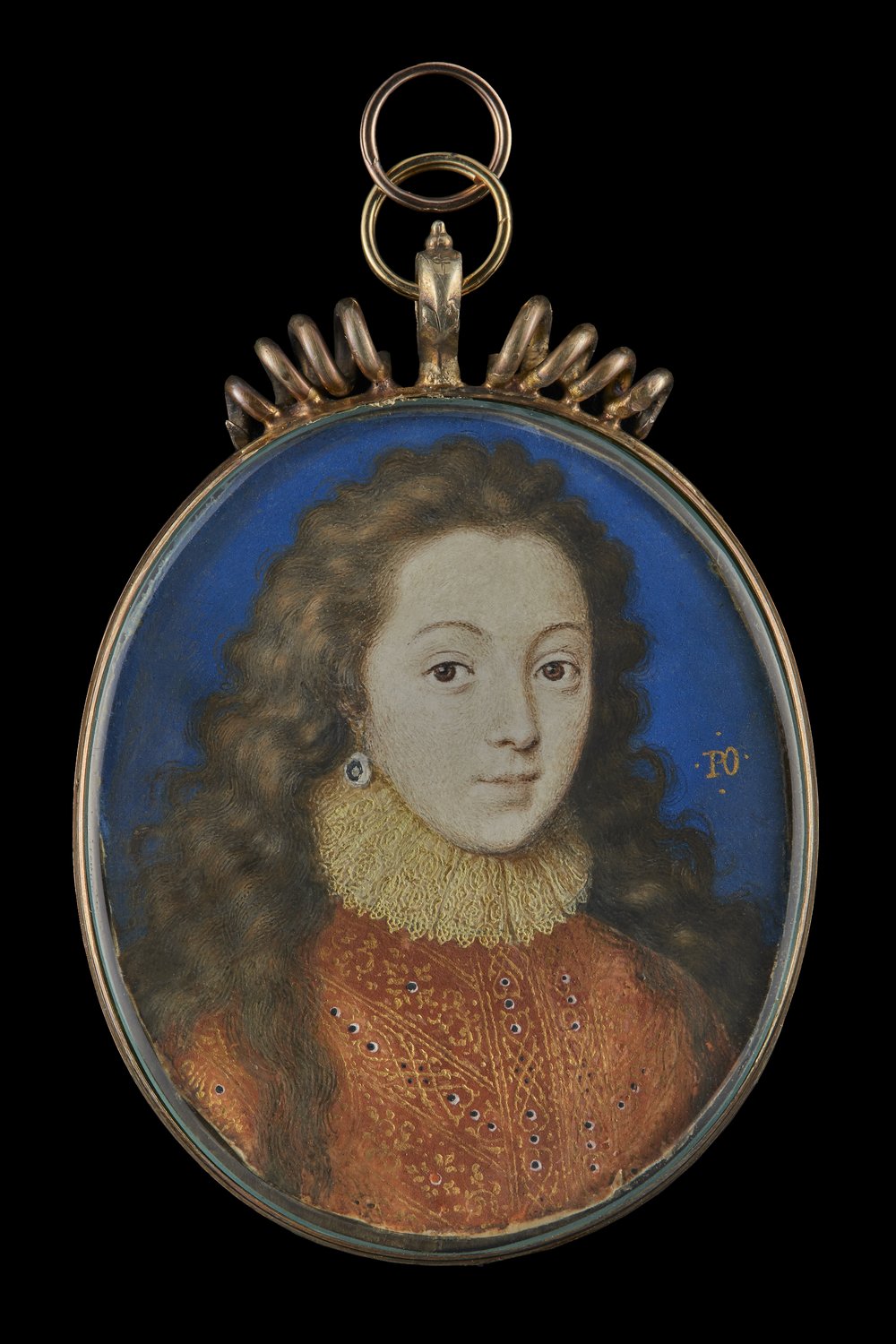
Fig. 3. Peter Oliver (1594-1648), Venetia Digby (née Stanley), Lady Digby (1600-33), c.1615-20, watercolour and bodycolour on vellum [Private Collection, recently sold by The Limner Company] – currently exhibited in The Reflected Self
Something as innocuous to the 21st-century viewer as a woman wearing her hair down was considered risqué if the woman was married. An example in the Compton Verney exhibition shows renowned Jacobean beauty, Venetia Digby (née Stanley) (1600-33) with her hair thus [figure 3], and it may have been exchanged as part of her betrothal. She also wears a rarely-seen yellow (saffron-dyed) ruff, an example of the fleeting fashions captured in miniature that were rarely included in other forms of portraiture.
More revealing still are the Elizabethan and Jacobean miniatures of women in masque costumes, sometimes with their breasts completely exposed. The dangerously low-cut bodice, loose hair and flower crown worn by Lady Dorothy Sidney (née Percy), Countess of Leicester (c.1598-1659) [figure 4] suggest her outfit was inspired by masque costume. The (later) frame of this portrait is glazed on the reverse to show the playing card was used as a support by the artist. Playing cards were used to reinforce the vellum onto which the portrait was painted at this early period. The choice of playing card used may be significant as part of a wider symbolic culture surrounding cards at this date.
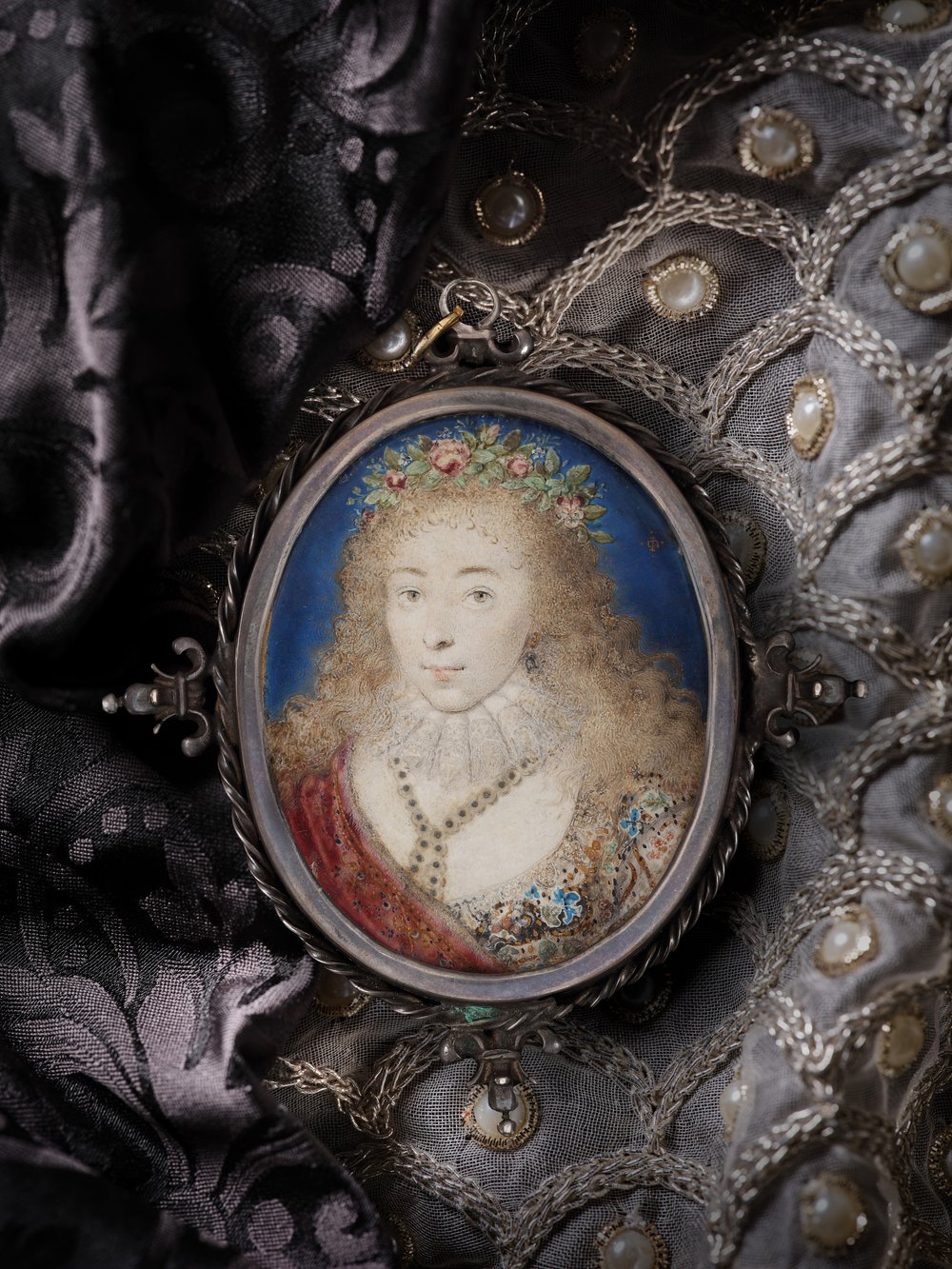
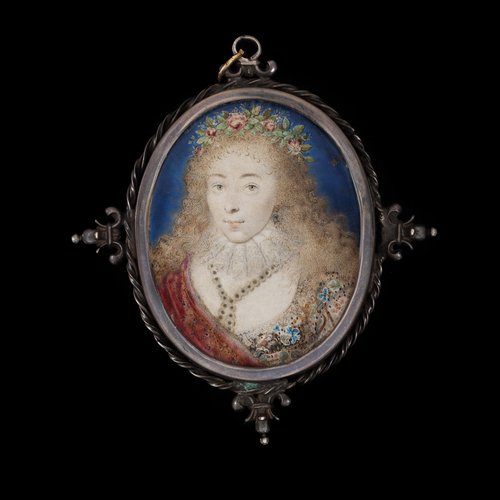
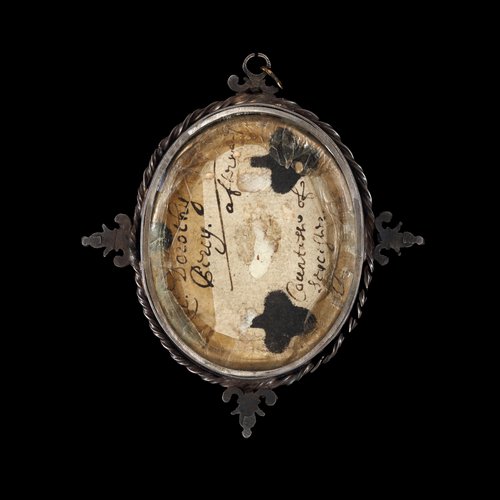
Fig. 4. Isaac Oliver (c.1565-1617), Lady Dorothy Sidney (née Percy), Countess of Leicester (c.1598-1659), c.1615, watercolour on vellum [Private Collection, recently sold by The Limner Company] – currently exhibited in The Reflected Self
Perhaps the most shocking fashion to be seen in the exhibition are the two portraits by John Smart (1741-1811) of gentlemen with pink hair - both wear wigs coloured by hair powder [figure 5]. Wigs began to be powdered white at the beginning of the 18th century, but coloured powders, in pink, blue and lilac, were a short-lived craze of the 1770s-80s. As such, and likely considered too informal for other forms of portraiture, coloured hair powder is near exclusively seen in portrait miniatures and fashion prints. Smart’s oeuvre depicts more pink-haired sitters than any other artist [see figure 6 for another example] and it may be that he had a particular interest in hairstyles owing to his father’s profession as a peruke (wig) maker. His work is forensic in detail and another portrait in the exhibition shows the sitter with a dusting of hair powder having fallen onto his collar and shoulders [figure 7].
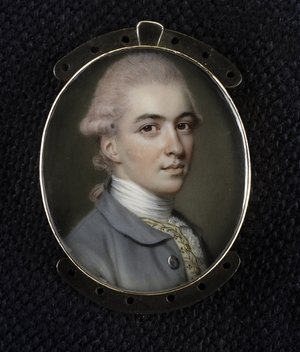
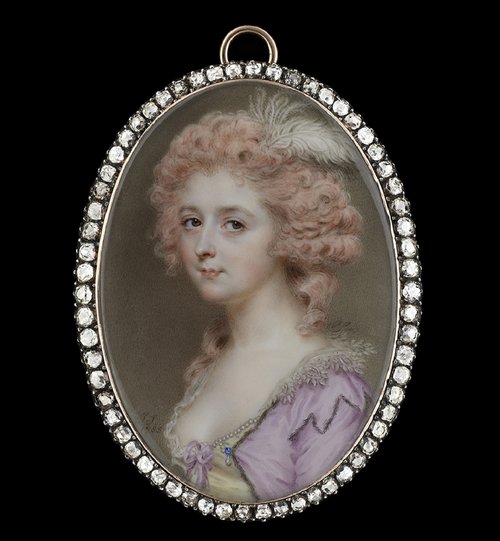
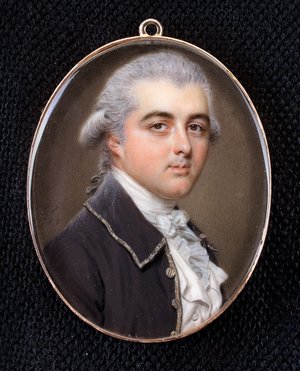
[Left] Fig. 5. John Smart (1741-1811), Unidentified Gentleman, probably of the Parker family, 1772, watercolour on ivory [Compton Verney Collection] – currently exhibited in The Reflected Self © Compton Verney, photo Jamie Woodley
[Centre] Fig. 6. John Smart (1741-1811), A Lady, 1785 [previously sold by The Limner Company]
[Right] Fig. 7. John Smart (1741-1811), Unidentified Gentleman with hair powder on his collar, 1783, watercolour on ivory [Compton Verney Collection] – currently exhibited in The Reflected Self © Compton Verney, photo Jamie Woodley
The heyday of the portrait miniature is considered to be this late Georgian period, when they had become almost ubiquitous among the burgeoning middle classes. The war in Europe and America, as well as increasing trade in far-flung climes and the popularity of the Grand Tour, saw great demand for miniature portraits of men in uniform and ‘coming of age’ portraits of young men. Infant mortality was also high and it was common practice to commission portrait miniatures of very young children.
The commemorative aspect of these miniatures was taken a step further with the inclusion of real human hair in miniatures’ frames. Usually seen in a glazed panel on the reverse of the frame [figure 8], sometimes surrounding the portrait itself [figure 9], or even braided into a bracelet or necklace to which the miniature was attached, the hair gave miniatures a relic-like quality. At a time when most people wore wigs or hair powder in public, including a lock of the sitter’s hair - revealing their natural hair colour - was an especially intimate gesture. Indeed, an etiquette developed around the practice of gifting hair.
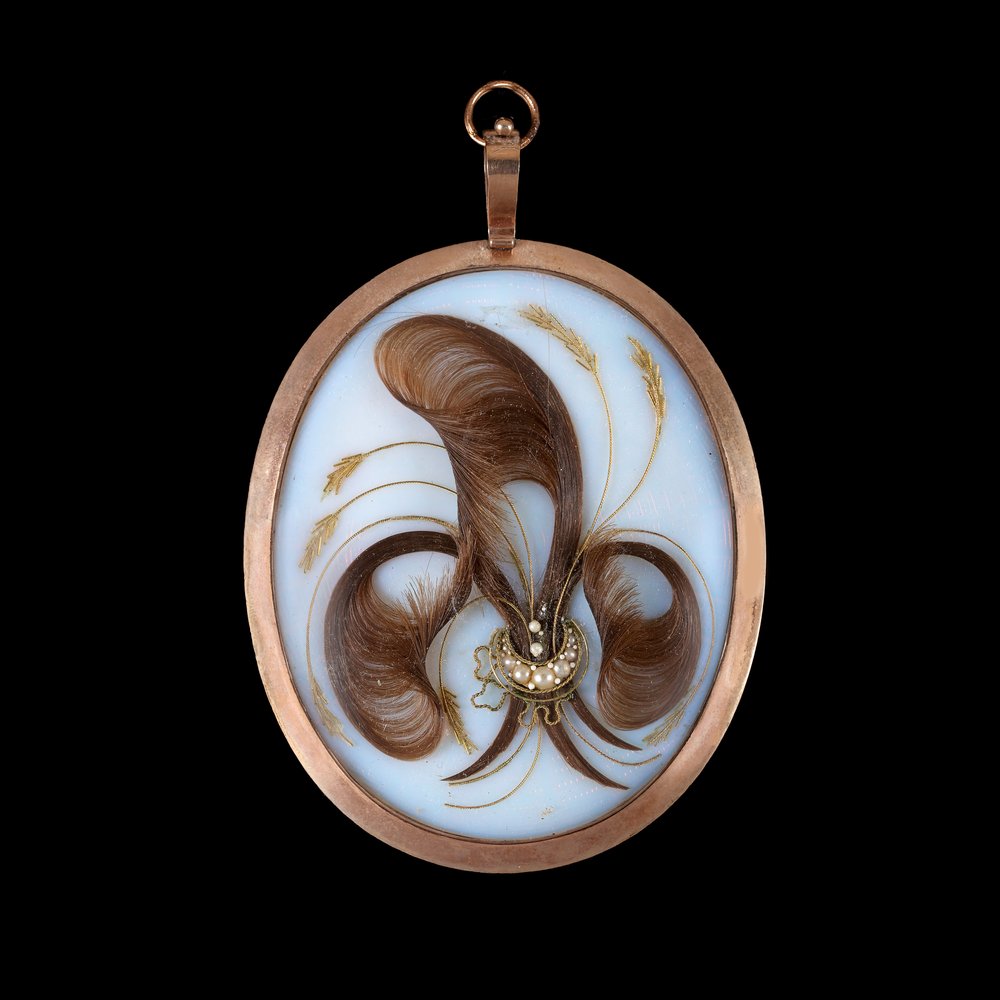
Fig. 8. George Engleheart (1750-1829) Miss Sarah Shergold, 1795, the reverse with locks of hair tied with split pearls and gold wire on opalescent glass [for sale with The Limner Company]
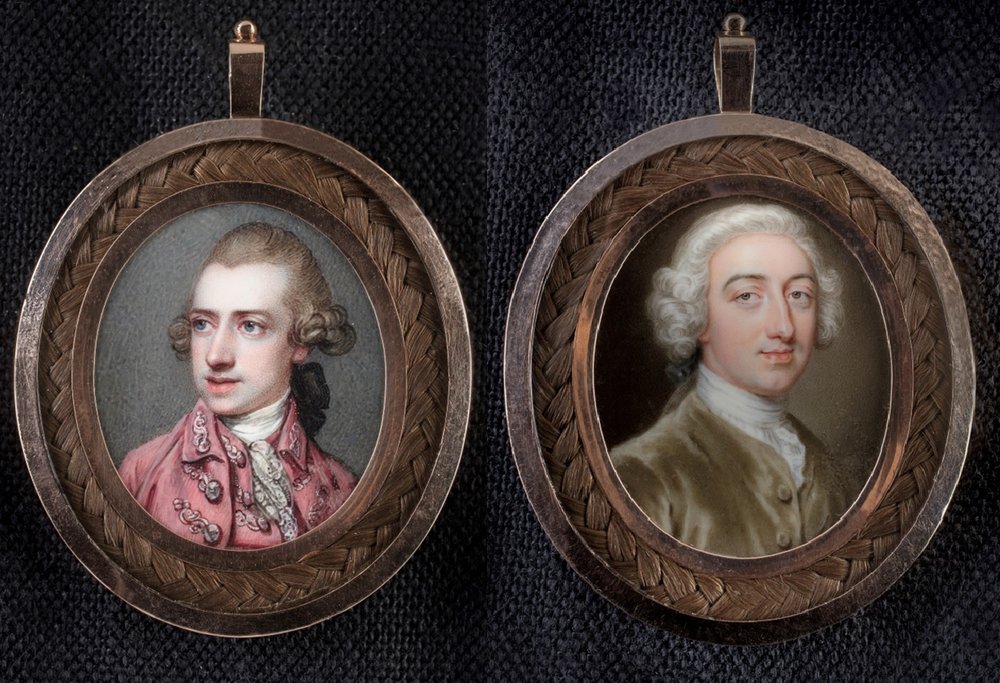
Fig. 9. [Left] Richard Cosway RA (1742-1821) and [right] John Smart (1741-1811) (possibly after Christian Friedrich Zincke, c.1683-1767), a double-sided portrait miniature of Two Unidentified Gentleman, c.1775, watercolour on ivory, the frame with plaited hair surround [Compton Verney Collection] – currently exhibited in The Reflected Self © Compton Verney, photo Jamie Woodley
The relationship between the recipient of the miniature and the sitter might also be one of friendship. Women were the primary wearers of miniatures and popular female accessories such as a lace-making shuttles and carnets-de-bal (dance card holders) [see figure 10] came to incorporate miniature portraits too. In this way miniatures could be used as part of a person’s social capital, advertising a connection to a certain individual.
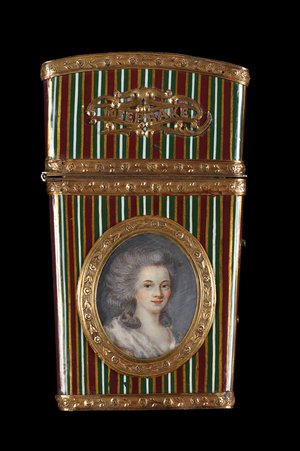
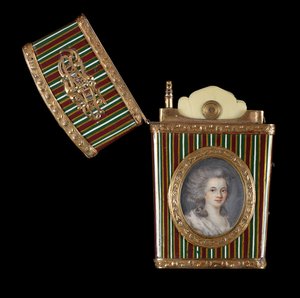
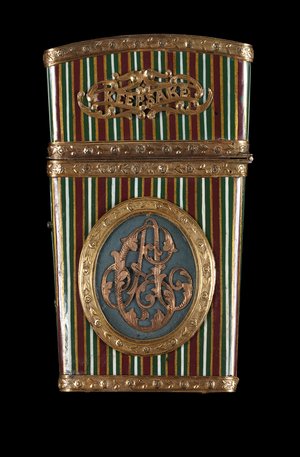
Fig. 10. French School, Portrait miniature of a Lady set into a carnet-de-bal, c.1785, watercolour on ivory and vari-coloured gold and painted papier-mache [previously sold by The Limner Company]
In short, the study of portrait miniatures could be likened to browsing through historical social media. The ephemeral nature of the images enabled them to capture things that were not considered appropriate for other forms of portraiture intended for posterity. This aspect of the portrait miniature and their their highly personal nature, make them the most compelling form of portraiture and more than worthy of the spotlight shone on them in this exhibition.
23 Sep 2024
‘A debate between silk and cloth’[1] : The Influence of the French Revolution on Men’s Fashion Observed in Portrait Miniatures
Men’s dress in the mid-to-late eighteenth-century portraits consisted (broadly speaking) of knee-breeches with stockings, a coat, waistcoat, shirt with frilled jabot, stock, and a curled, powdered wig. The degree of decoration and luxuriousness of fabric generally increased the higher up the social scale. Earlier in the century, the preference (especially in France) was for colour and pattern, and as much embroidery and silk as you could afford – see figures 1 and 2 for a British and French example.
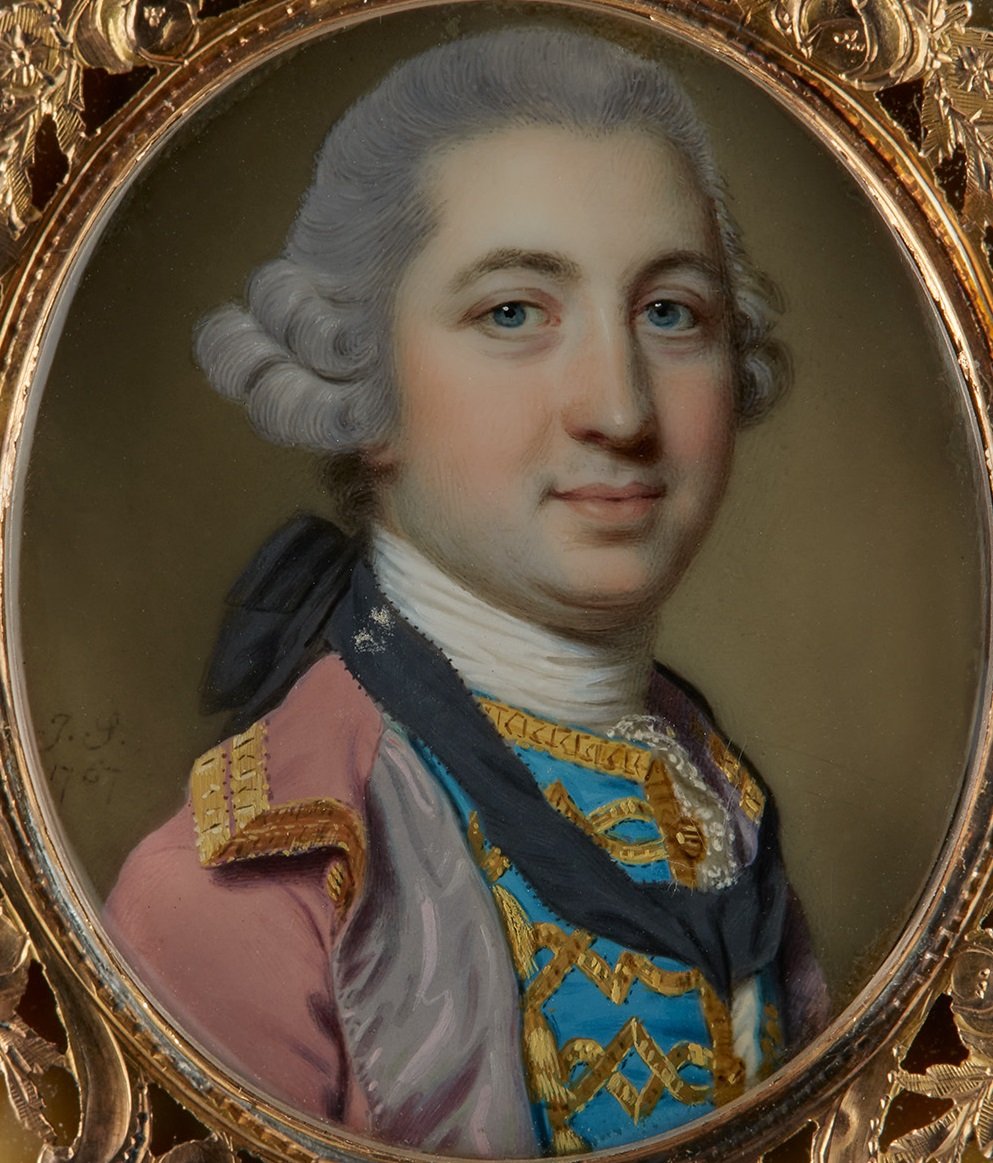
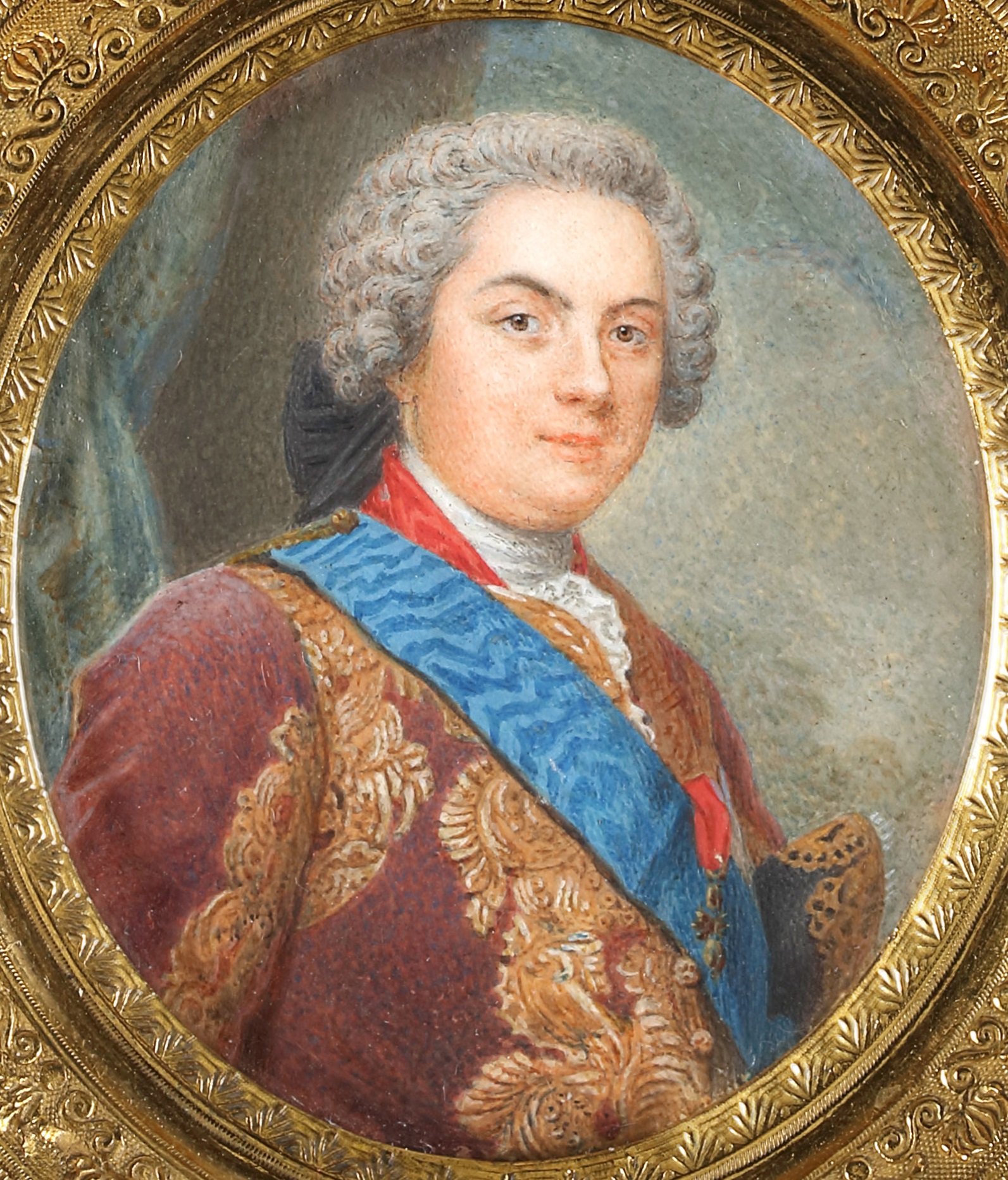
Fig. 1 [left] JOHN SMART (1741-1811) Portrait miniature of Sir Rowland Winn, 5th Bt (1739-1785), Bt., wearing a pink silk frock coat with lilac lining trimmed with gold, a blue waistcoat embroidered with gold and a black silk solitaire ribbon tied at the back of his powdered wig; dated 1767 – previously sold by The Limner Company
Fig. 2 [right] JEAN DANIEL WELPER (1729-1780) Portrait miniature of Louis, duc de Bourgogne, dauphin of France (1729–1765), wearing brown coat with gold brocade, blue sash and red ribbon of the Saint-Esprit; circa 1760 – for sale with The Limner Company
In England, the fashion was beginning to turn towards more sober colours and utilitarian fabrics, inspired by outdoor pursuits. In figures 3 and 4, the sitters wear darker coloured coats, offset by brightly decorated waistcoats. Eye-catching waistcoats became a mainstay in men’s fashion in the 1780s - the last vestige of florid styles from earlier in the century - which stood as a focal point against the new, plainer coats and breeches. Stripes were a particularly popular pattern, especially in France where Louis-Sébastien Mercier wrote in his Tableau de Paris (1787) that the king’s zebra was a source of inspiration: ‘coats and waistcoats imitate the handsome creature’s markings as closely as they can.’[2]
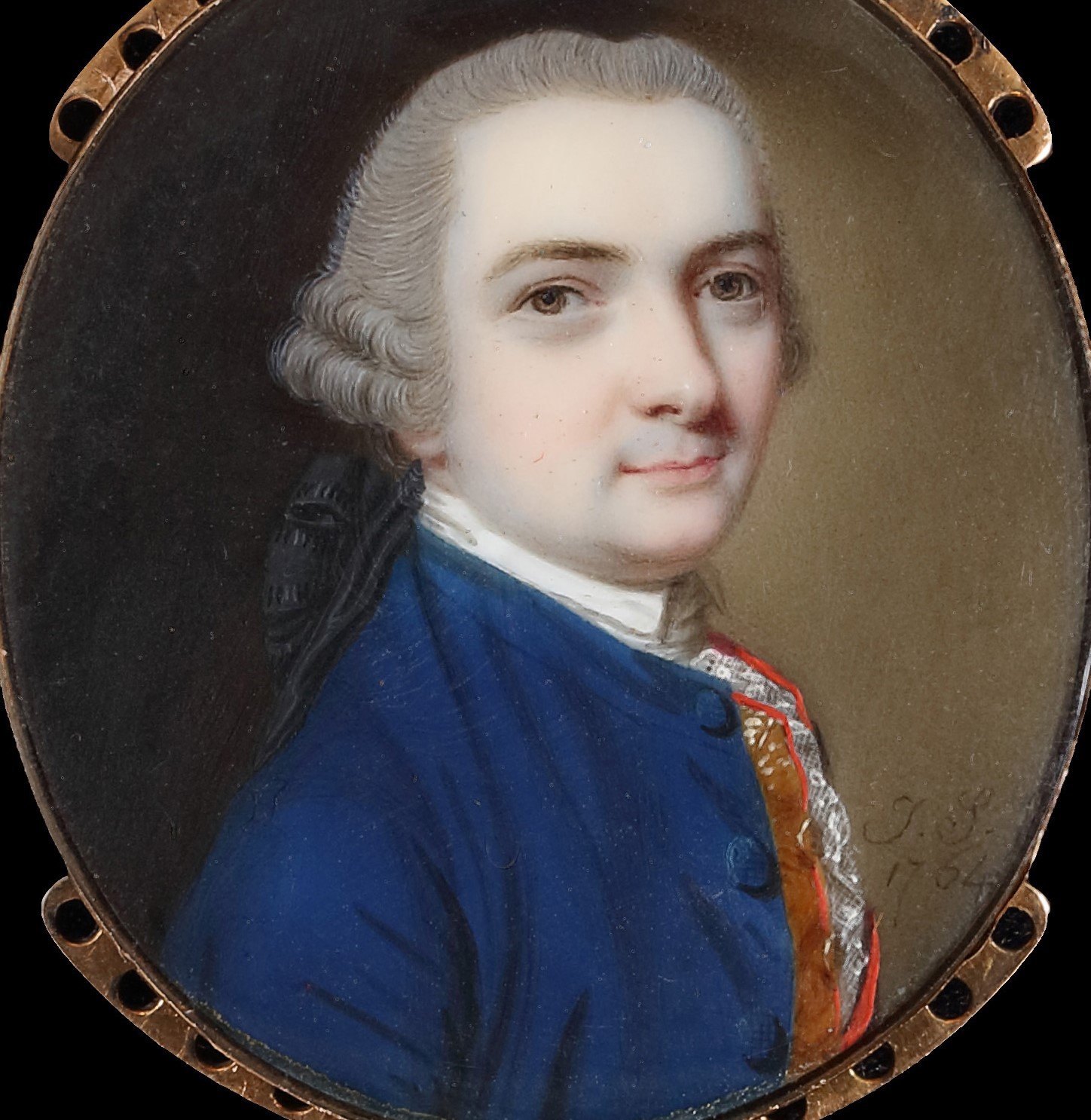
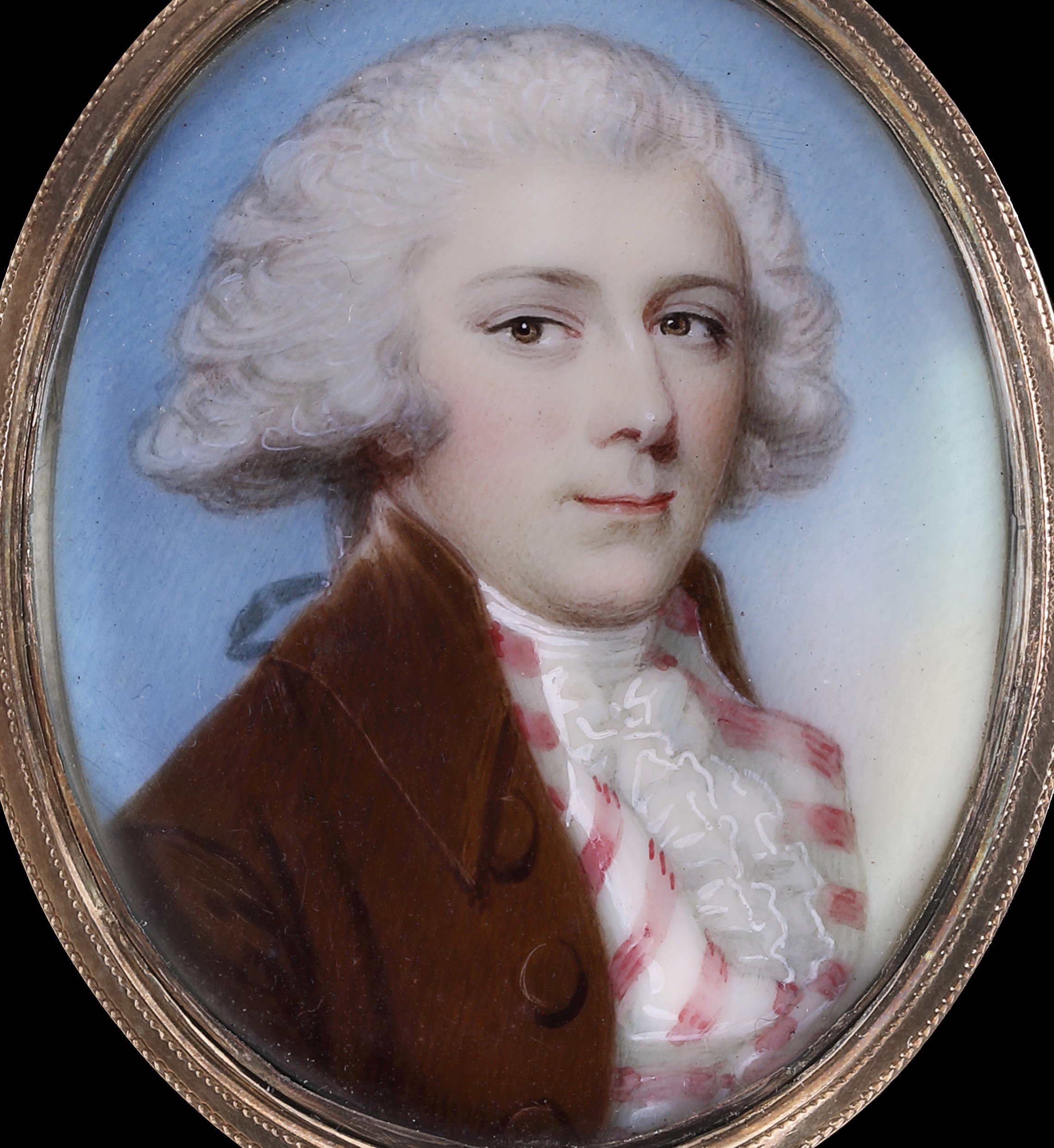
Fig. 3 [left] JOHN SMART (1742-1811) Portrait miniature of a Gentleman, believed to be Chevalier de Luetch, wearing a blue coat, a richly decorated ochre waistcoat with scarlet lining and edging, white stock and frilled lace cravat; 1764 – for sale with The Limner Company
Fig. 4 [right] Attributed to THOMAS DAY (c.1732-1807?) Portrait miniature of a Gentleman wearing a brown coat, a pink and white striped waistcoat, frilled cravat, his hair worn en queue; circa 1780 – for sale with The Limner Company
In May 1789, the Estates-General was summoned for the first time in 150 years. It was to be one of the most significant events leading to the Revolution and dress played an important role.[3] The assembly consisted of representatives from the three estates (social classes), and each was expected to dress according to specific rules for their estate. The dress regulations harked back to archaic sumptuary laws that had long since been abolished and sparked anger. The Clergy, the First Estate, wore ‘ecclesiastical robes, some scarlet with ornate lace’. The aristocracy, the Second Estate, ‘were entitled to wear suits of black silk decorate with gold braid, white stockings, feathered hats and swords’. The Third Estate, which represented the other 97% of the population, where required to wear ‘suits of plain black cloth, cravats made of muslin instead of lace, and black stockings’.
Violent revolution broke out in July the same year and almost from the outset, revolutionaries could be recognised by their dress: the earliest and most widely-worn sign of support was a rosette made of ribbon in the colours blue, white and red, known was the revolutionary cockade.[4][5] (Indeed, it became dangerous not to wear one as it was decreed that anyone without a cockade should be deemed a counter-revolutionary.) This combination of colours, the tricolore, came to be adopted across fashion by some in a show of patriotism. A study of French portrait miniatures from the period (for example those in the Tansey Miniatures Collection), shows numerous men’s and women’s outfits seemingly assembled to incorporate the tricolore.
Factions at both ends of the political scale came to be defined by their manner of dress: the revolutionary sansculottes (those ‘without breeches’), and the dandyish, counter-revolutionary muscadins (the ‘perfumed ones’). The militant revolutionaries, the sansculottes, earned their name by doing away with the breeches (culottes) of the Ancien Régime in favour of long-trousers (pantalons) in the style of sailors. As well as long trousers, the sansculottes often wore a carmagnole[6], a short, boxy jacket worn by peasants and named after the north-west Italian town of Carmagnola. They wore sabots, a type of wooden clog or heavy leather shoe with a wood sole which was considered a work shoe associated with the lower classes in France, the Netherlands, Belgium and Italy in the sixteenth to nineteenth centuries. Revolutionaries also adopted more symbolic elements of clothing such as the bonnet rouge derived from the Phrygian cap or red cap of liberty, the felt cap worn by emancipated slaves of ancient Rome and an attribute of Libertas, the Roman goddess of liberty.
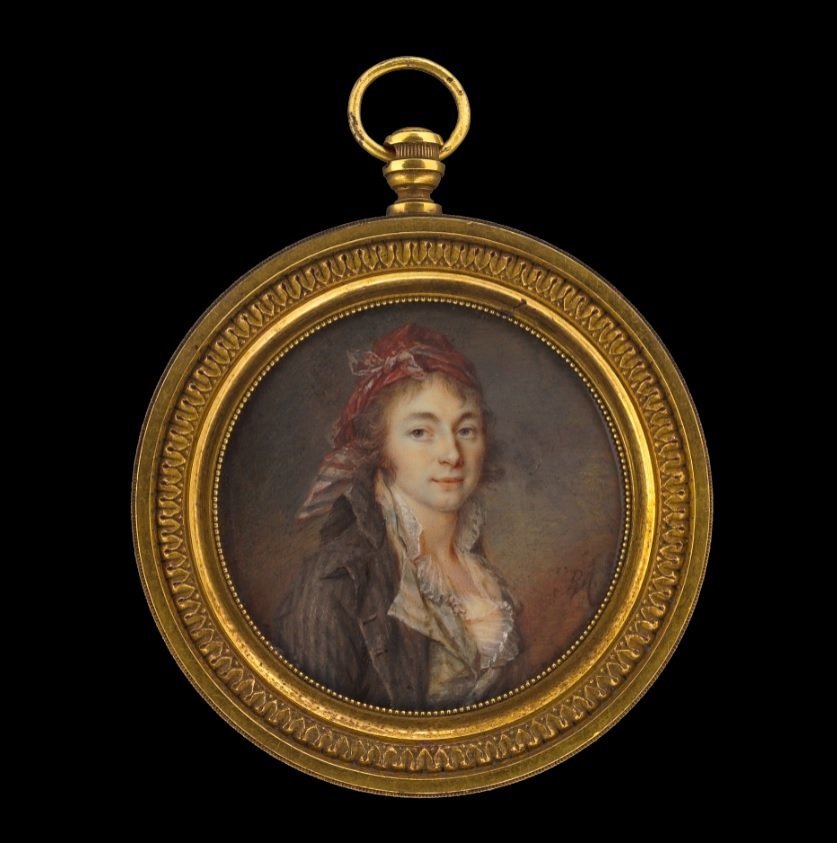
Fig. 5 JEAN-MARIE RIBOU (1744–1817) Portrait miniature of a Gentleman with headscarf with white, red and blue pattern; c.1793 – Tansey Miniatures Collection Versailles
The sitter depicted in figure 5 may be wearing a headscarf emulating the Phrygian cap and likely a revolutionary. He also appears slightly unkempt, a style that was deliberately used by some to demonstrate a departure from the highly groomed court style of the Ancien Régime. This portrait also demonstrates how wigs and hair powder were rejected in favour of natural hair. While wigs and powdered hair were not the preserve of aristocrats (Robespierre wore a powdered wig), they were associated with the trappings of the Ancien Régime (see figures 2 and 6) and many revolutionaries preferred to wear their hair naturally; hence both gradually went out of fashion. Not only was natural hair considered more democratic, it echoed what was happening in England[7], where a tax on hair powder was introduced in 1795.
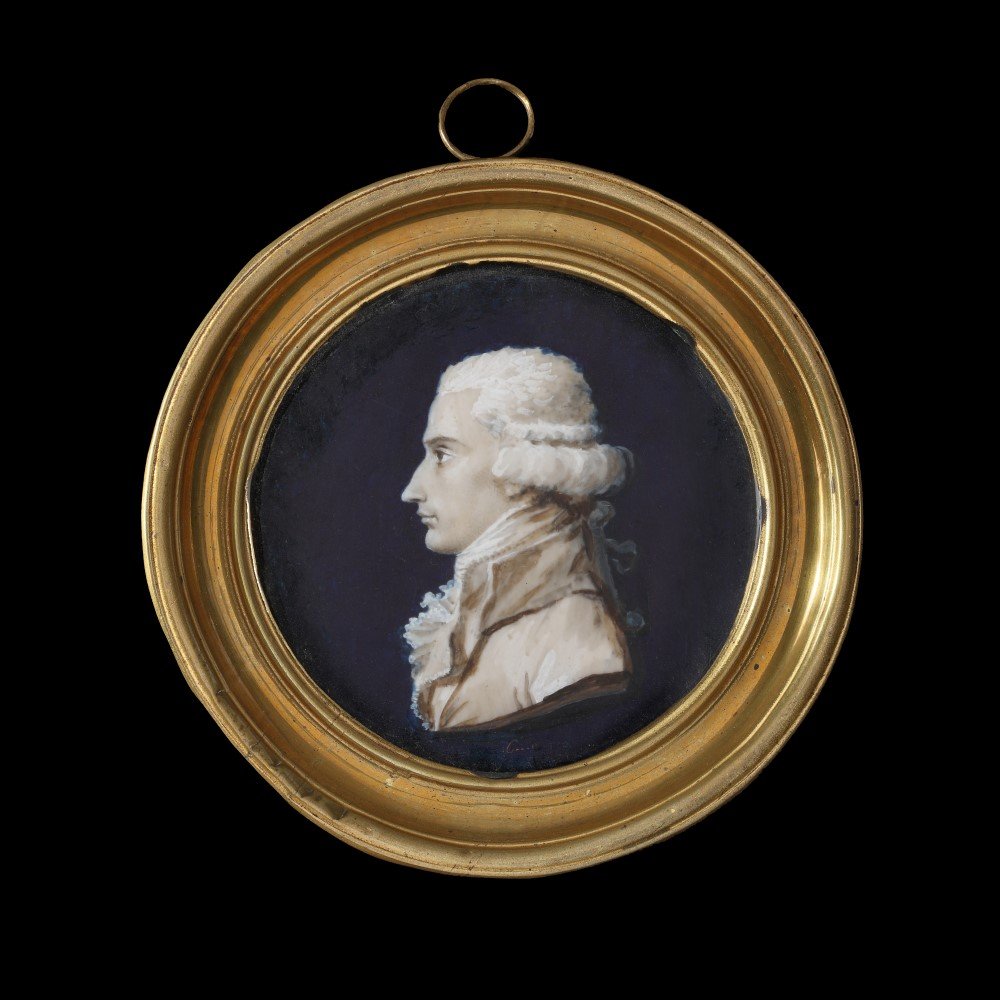
Fig. 6 JEAN-URBAIN GUÉRIN (1760-1836) Portrait miniature of George-Fréderic Bapst (1756-1826), crown jeweller, en buste, in profile to the left, in coat, waistcoat and frilled cravat, powdered hair en queue, painted in brown camaïeu heightened with white on a dark-blue ground; circa 1785 – for sale with The Limner Company
At the other end of both the political and sartorial spectrum were the Incroyables, and their female counterparts the Merveilleuses. They belonged to a royalist movement that emerged with the Thermidorean Reaction. Many were from aristocratic or wealthy backgrounds and their appearance signified their allegiance to the Ancient Régime: breeches, green jackets or waistcoats (green was a colour associated with the late king’s brother), tricorn hats, swords, silks and embroideries.
What made them quite so ‘incredible’ was the extremity of their look - think punk-dandy: stocks or cravats wound so high that they covered their entire neck, chin and jaw, oversized monocles, large hoop earrings, walking canes. The Incroyables wore their hair à la chien: the back and top cut short and the sides worn long (often shoulder-length) falling over their ears. Some shaved the back altogether or combed it up and fastened it with a comb to imitate the hairstyles of those condemned to the guillotine, others braided their hair. Figure 7 shows a gentleman wearing the high stock or cravat, braided hair and hoop earrings associated with the Incroyables.
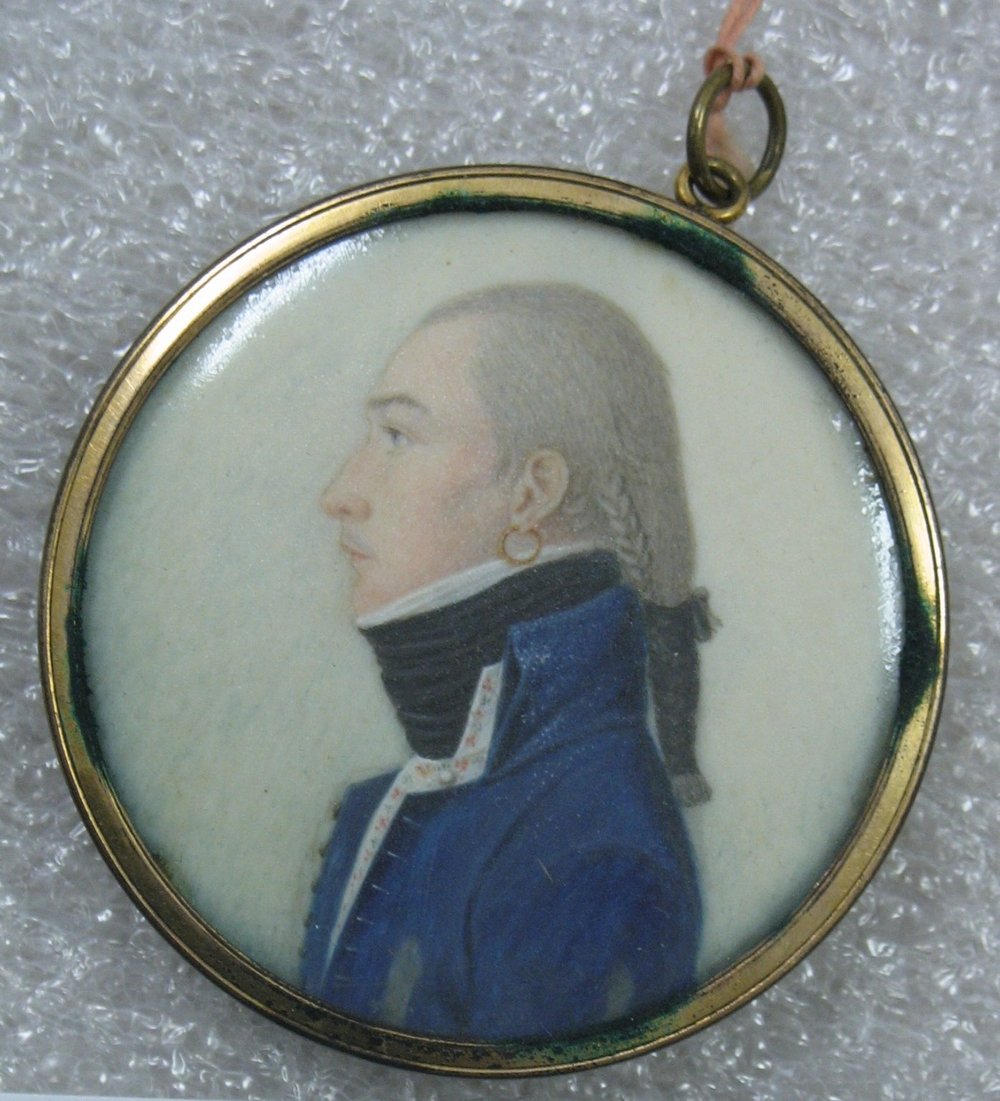
Fig. 7 UNKNOWN Portrait in Profile of a Young Man, n.d. Watercolor on ivory portrait in metal locket with glass lenses, Image (sight): 2 x 2 in. (5.1 x 5.1 cm). Brooklyn Museum, Museum Collection Fund, 25.905 (Photo: Brooklyn Museum, 25.905_bw_SL1.jpg)
Perhaps the most bizarre of their affectations was the hunched posture, which some tailors catered for with special coats pleated to enhance the effect. They frequently affected a lisp, which historians variously claim was to avoid the letter ‘R’ for Revolution, or because a ‘posh’ French accent skipped over the sound.
Mainstream men’s fashion adapted gradually towards a more practical and less ostentatious style. The changes are quite apparent when we compare portrait miniatures of the early nineteenth century, such as the examples of figures 8 and 9, to figures 1-7.
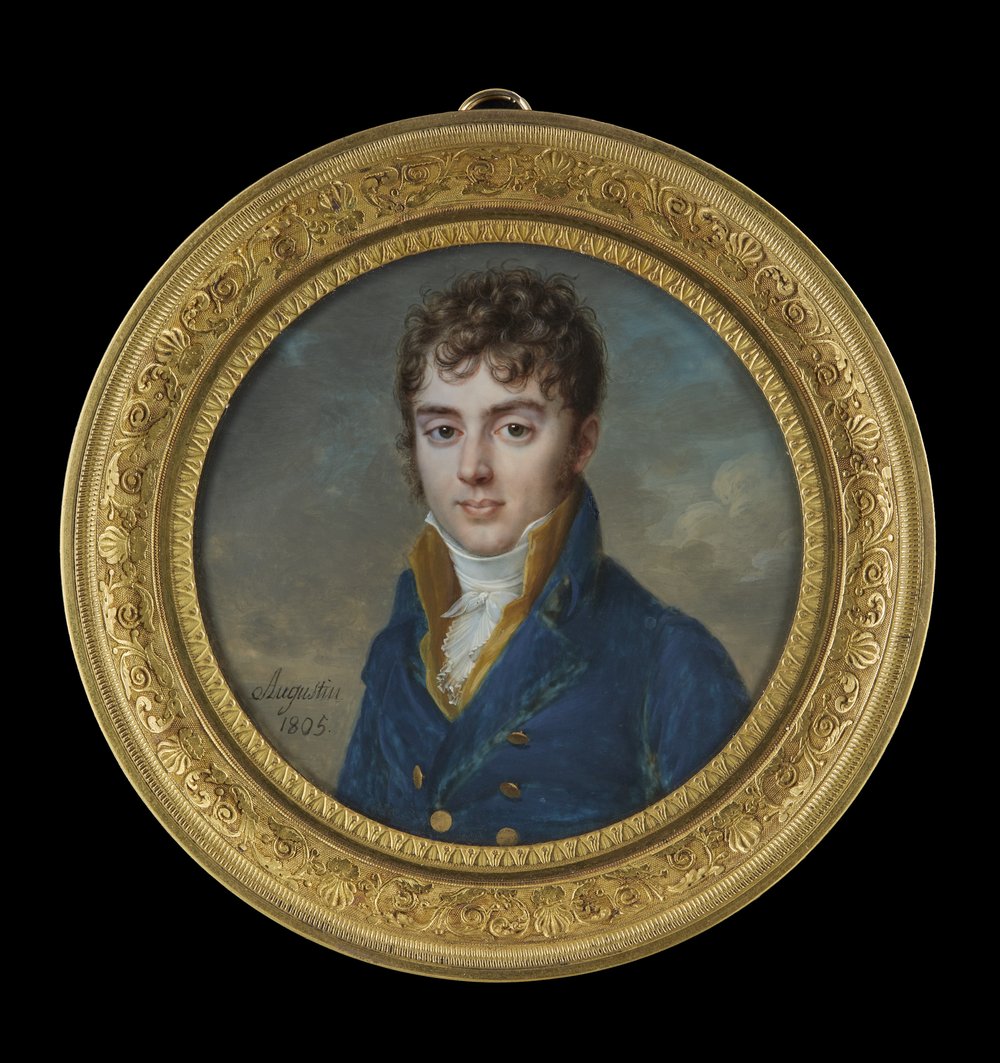
Fig. 8 JEAN-BAPTISTE JACQUES AUGUSTIN (1759-1832) Portrait miniature of Anne-Ferdinand-Louis de Berthier, Comte de Sauvigny (1782-1864), wearing blue coat with brass buttons, ochre waistcoat and white stock; 1805 – recently sold by The Limner Company
Interestingly the above sitter, Comte de Sauvigny, was a member of the les Ultraroyalistes, a political movement said to be ‘more royalist than the king’, yet his attire shows the lasting influence of the revolution on fashion and culture. Embroidery and embellishment of any kind had been more or less left behind in men’s fashion by the turn of the century, in favour of a more sober colours and a utilitarian fit - perhaps epitomised in the frock coat. The frock coat was an understated garment, usually blue or neutral in colour, made from woollen cloth or linen and derived from working dress. It had been adopted by English gentlemen as it was practical for country pursuits. Anna Reynolds describes the French version: ‘known as a frac, was more decorative and tight-fitting, often made of silk’.[8] Both these gentlemen appear to be wearing a version of the frac or frock coat as well as tied cravats, also perhaps in the English style.[9]
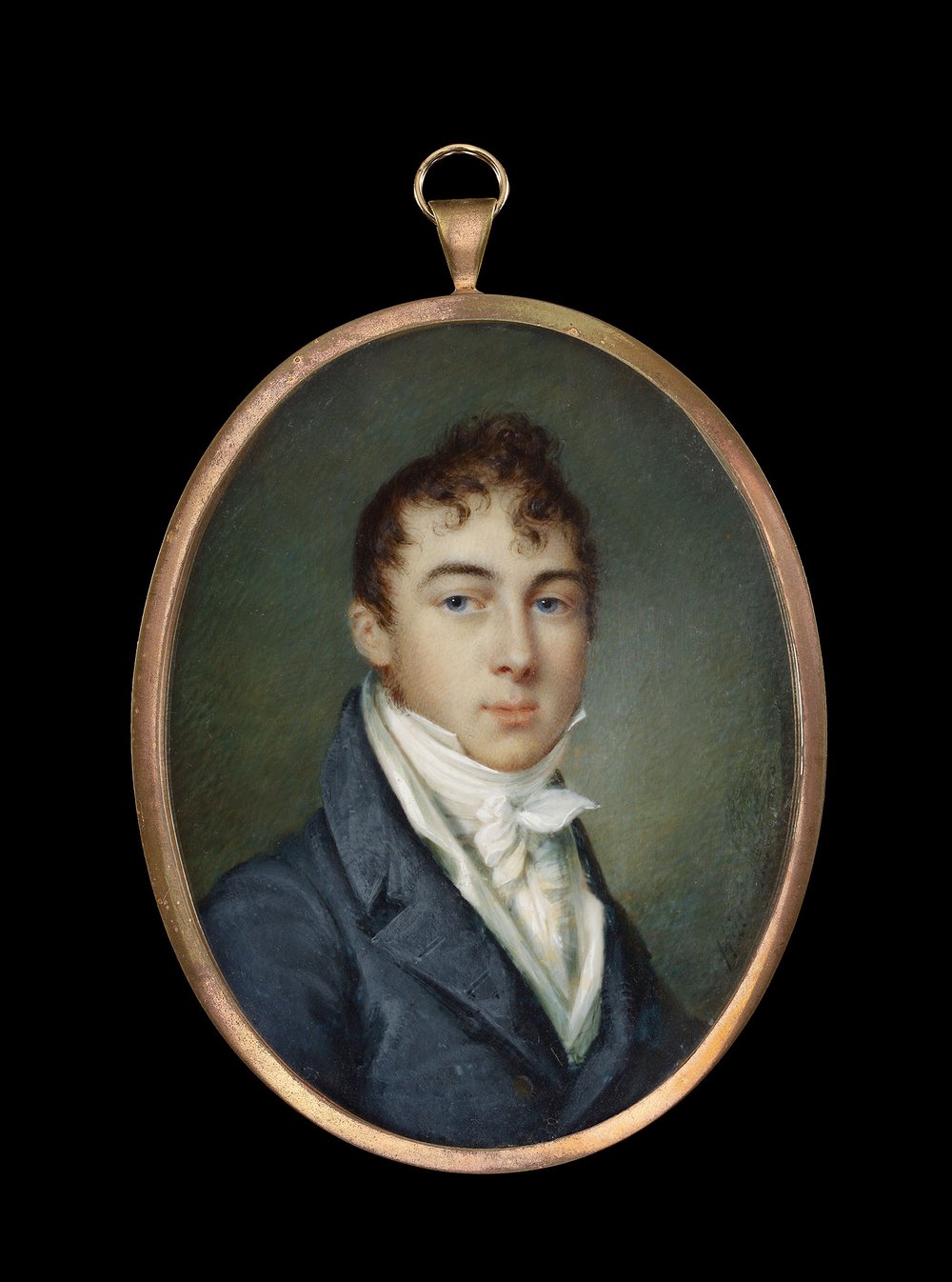
Fig. 9 JEAN FRANCOIS HUET VILLIERS (1772-1813) Portrait miniature of a Gentleman, c.1805 – for sale with The Limner Company
Both sitters’ natural, unpowdered hair is worn in a short crop in a tousled style à la Titus. This classically-inspired look was part of a larger interest in classicism, brought about by the Revolution which idealised the political ‘democracies’ of antiquity, and later by Napoleon’s occupation of Naples and the excavations of ancient ruins. This classical interest is also reflected in the circular format of figure 8, which emulated ancient Roman portraits, and became popular in French miniature painting.
Fashion historians note that styles had been beginning to turn plainer in the 1780s, but that the events of the revolution accelerated these changes. Fashion certainly gained an unprecedented political charge and even became dangerous, with those dressing in Ancien Régime style of clothing at risk of being deemed counter-revolutionary. It’s also interesting to observe the influence of English sporting clothing at this time. Perhaps in search of less ostentatious modes of dress, the French found the inspiration they were looking for in this English style.
Simplicity had arrived with force, and, although quality of tailoring and fabric was still of the utmost importance, men’s fashion would continue on a sombre trajectory throughout the nineteenth century.
[1] Honoré de Balzac, taken from Lévy, C. (ed.), Oeuvres completes de H. de Balzac (Paris), 1869-76, xx (1870), p.492, as quoted in Reynolds, R., Style and Society: Dressing the Georgians (Royal Collection Trust), 2023, p.316
[2] Ribeiro, A., Dress in Eighteenth-Century Europe, 1715-1789 (Yale University Press, New Haven & London), revised edition 2002, p. 208
[3] Reynolds, A., Style & Society: Dressing the Georgians (Royal Collection Trust), 2023, p.315. All the quotations in this paragraph are taken from this source.
[4] Surviving examples, along with other garments from the period can be viewed online here: https://unframed.lacma.org/2016/08/03/french-revolutionary-fashion
[5] Blue and red were the traditional Parisian colours, and white was added (the colour of the Bourbons) initially to indicate loyalty to the sovereign, thereby making the colour combination a national symbol. Later, this trio of colours assumed additional symbolism including representing the three estates and the revolutionary ideals of liberty, equality, and fraternity.
[6] ‘La Carmagnole’ is also the title of a French Revolutionary song and dance.
[7] Fashions travelled in both directions across the channel at this time. For example: the redingote (‘riding coat’ with a French accent) and the robe a l’anglaise.
[8] Reynolds, p.122
[9] See Reynolds. p.112.
22 Aug 2024
Notable Sales to Public Collections
Last Spring, Emma Rutherford identified the sitter of the portrait miniature by John Smart (1741-1811) pictured below as Sir Rowland Winn, 5th baronet of Nostell (1739-1785) - the discovery story was documented in the blog, ‘Finding Sir Rowland’. Research into the sitter revealed that he was largely responsible for ‘one of the great treasure houses of the north of England’, Nostell Priory in Yorkshire (now National Trust). Having inherited Nostell in 1765, Sir Rowland and his wife, Swiss heiress Sabine d'Hervart, picked up the project with vigour, employing not only the most fashionable architect Robert Adam, but leading craftsmen such as Thomas Chippendale and Joseph Rose. It’s therefore fitting that the miniature has now returned to Nostell, nestled among the many other Georgian treasures.
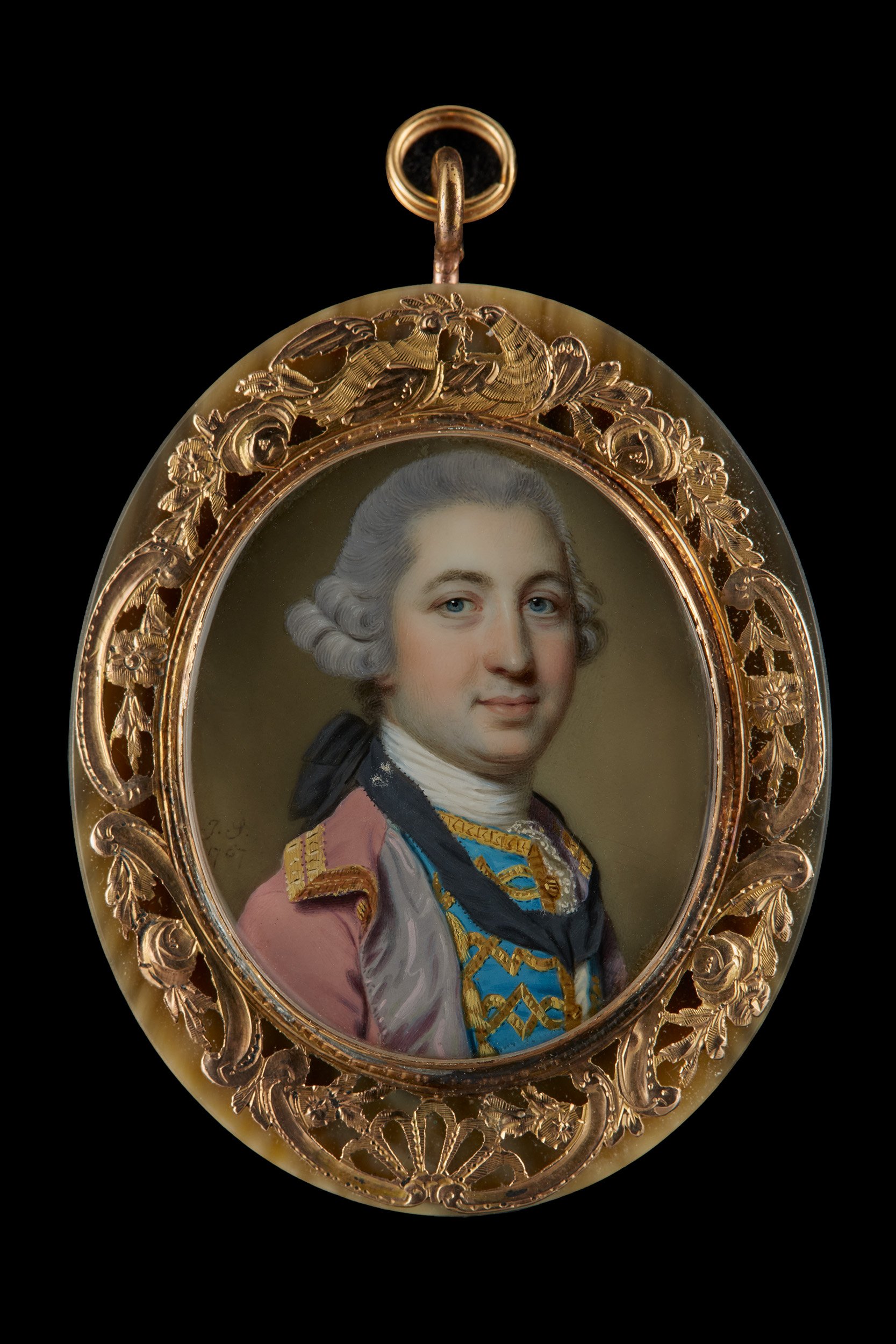
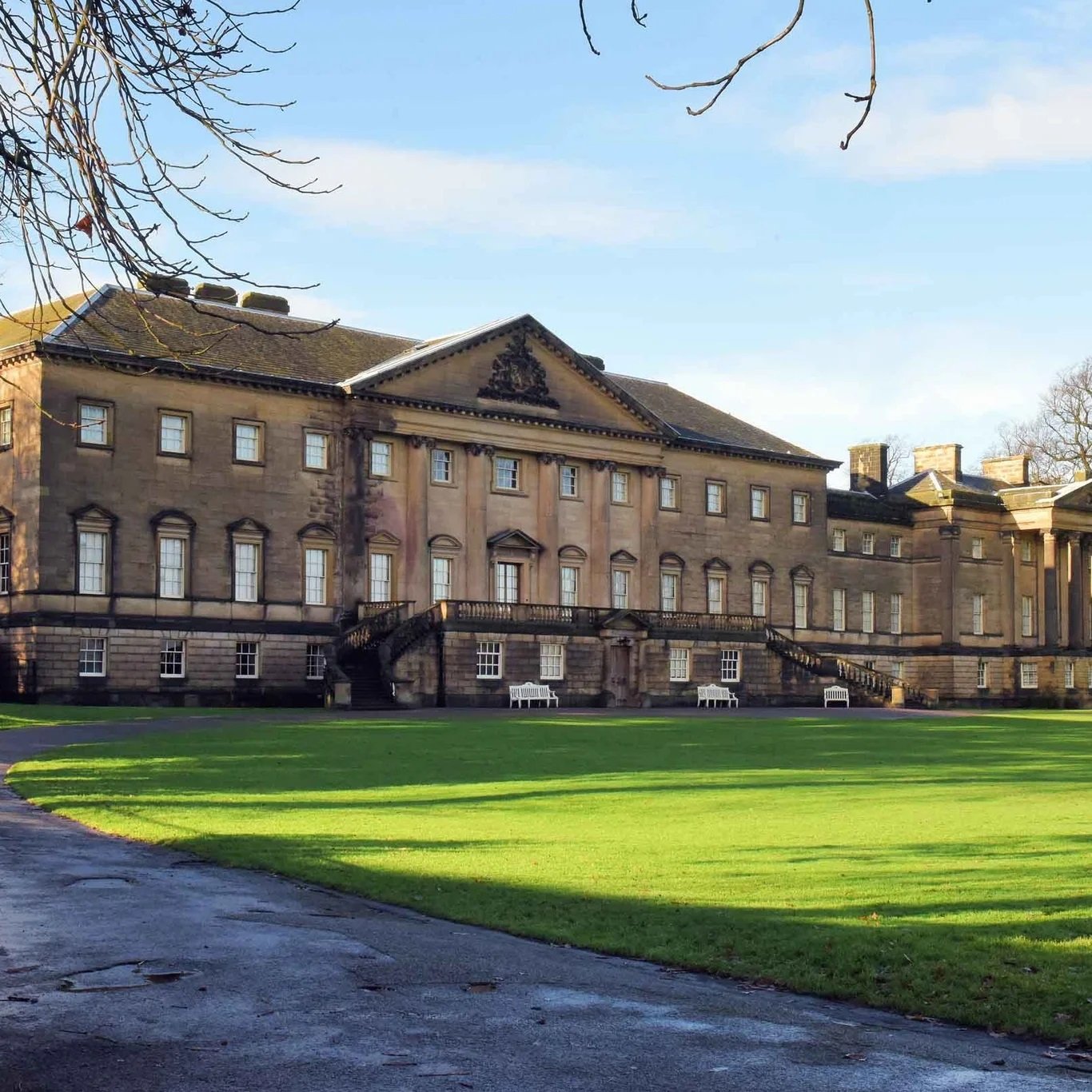
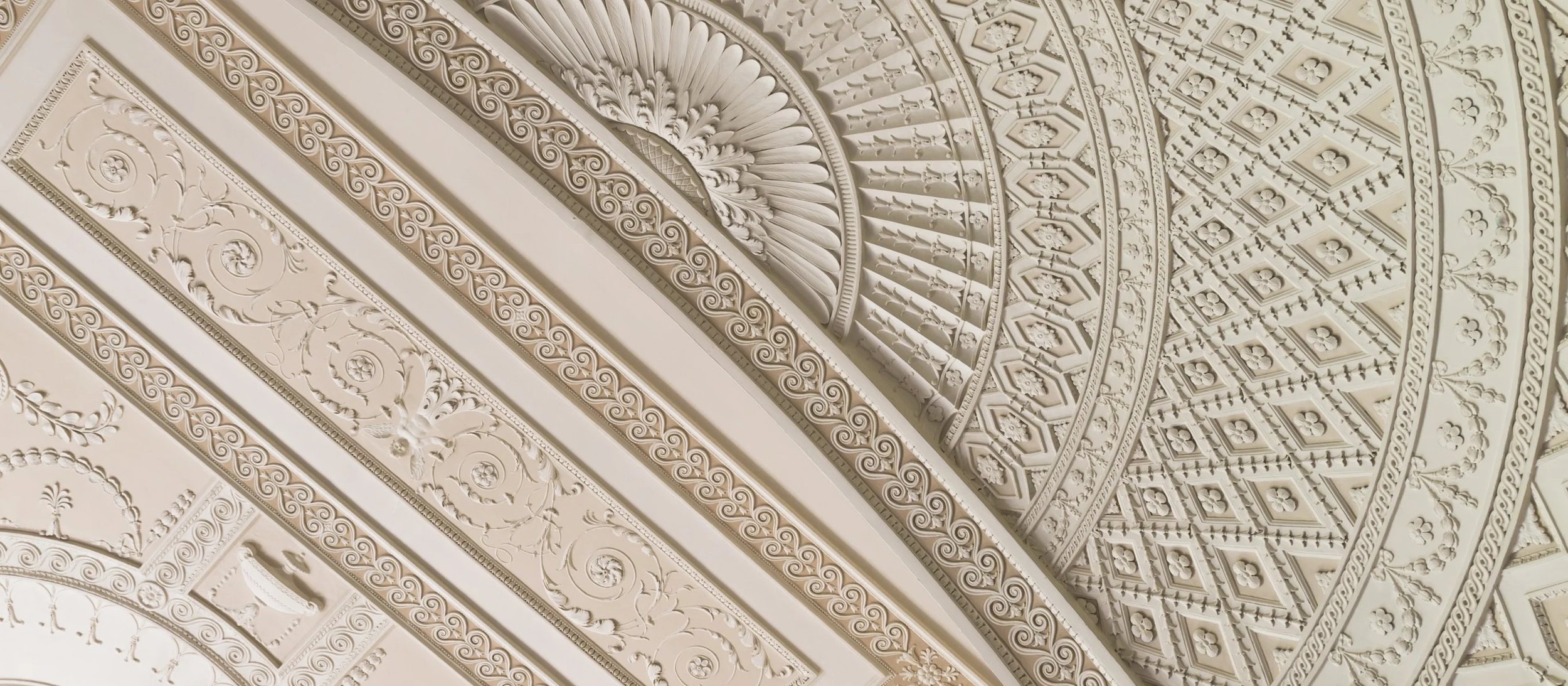
Left: Portrait miniature of Sir Rowland Winn, 5th Bt (1739-1785), dated 1767, John Smart (1741-1811) - sold by The Limner Company to the National Trust in 2023. Centre: Nostell Priory and Parkland, West Yorkshire. Right: Detail of the Top Hall at Nostell Priory and Parkland, West Yorkshire. | © National Trust Images/Chris Lacey.
Another intriguing discovery came about last autumn, when Emma identified a lost portrait from a series in the Royal Collection. This endearing drawing [pictured below top left] depicts Frederick William Blomberg, D.D. (1761-1847), who was adopted by Queen Charlotte in 1765. The portrait was sold at auction with the artist unknown, but Emma’s research revealed it to be one of a set dating to June 1769 by Hugh Douglas Hamilton (1739-1808), said to have been commissioned by George III. The six other portraits from the series depict the King and Queen and their four sons: George, Prince of Wales; Frederick, Duke of York; William, Duke of Clarence and Edward Duke of Kent.
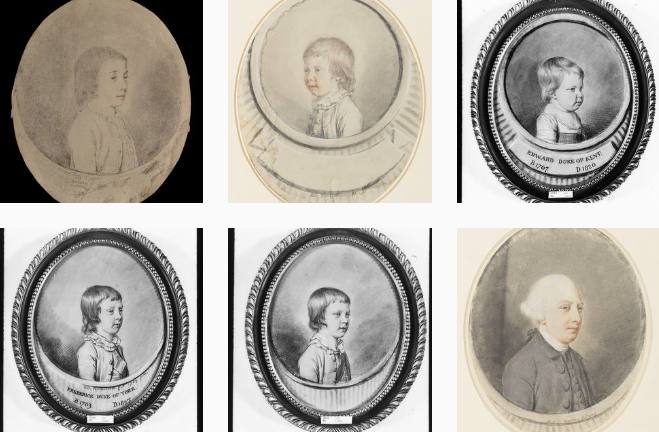
Top left: The Reverend Frederick William Blomberg, D.D. (1761-1847), as a child; dated 1769; Hugh Douglas Hamilton (1739-1808) - sold by The Limner Company to the Royal Collection Trust in 2023. Top centre, top right and bottom row, left to right: William, Duke of Clarence (1765-1837); Edward, Duke of Kent (1767-1820); Frederick, Duke of York (1763-1827); George, Prince of Wales (1762-1830); George III (1738-1820); by Hugh Douglas Hamilton (1739-1808) - Royal Collection Trust.
Quite aside from the exciting discovery, Blomberg’s mysterious life story deserved a dedicated blog post, ‘A Cuckoo in the Royal Nest; who was Frederick William Blomberg?’. Whether Blomberg was an orphan or the illegitimate child of George III, he was raised in the royal nurseries alongside the future King George IV (1762-1830). Perhaps indicative of Blomberg’s position, his portrait seems to have been kept by the sitter while the rest remained in the Royal Collection - until late last year that is, when it returned back into the royal fold after being acquired by the Royal Collection Trust.
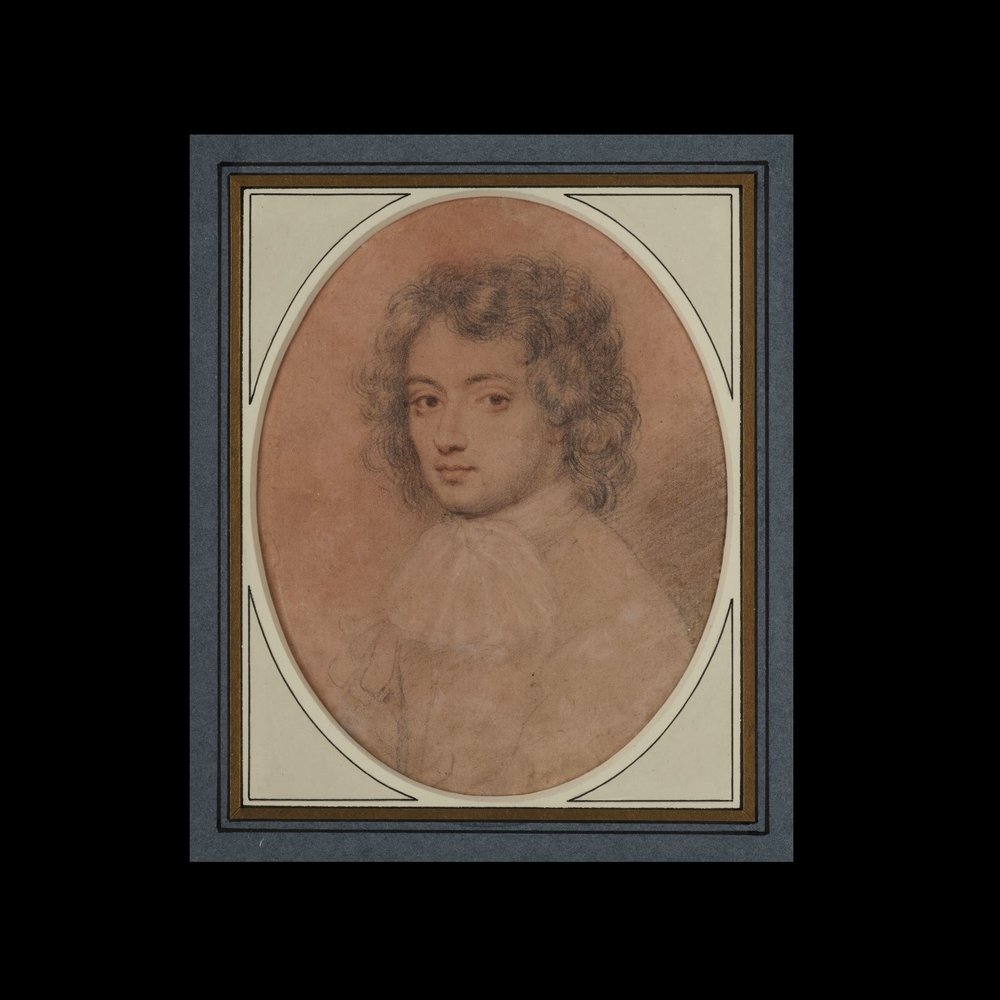
Portrait drawing of an unknown Gentleman, possibly Michael Rosse (d.c. 1735); circa 1675; Richard Gibson (c.1605-1690) - recently acquired by a public institution.
Most recently, this drawing was offered by The Limner Company at London Art Week 2024, where it was acquired by another public institution (to be announced in due course). Thought to depict the artist, Richard Gibson’s (c.1605-1690) son in law, Michael Rosse (d.c.1735), and husband to the artist Susannah-Penelope Rosse (née Gibson) (c.1655-1700), it survived in group of personal drawings depicting close friends and members of the family. The group of drawings indicates the devoted and interconnected relationships of artists living and working in the same sphere.
11 Jun 2024
Perukes, Powder, and Plaits: A Brief History of Hair Through Portrait Miniatures
Working with portrait miniatures, which have to concentrate so much detail into such a small space anyway, it often strikes one that hair forms a large portion of the art that we are looking at. For a sitter with a particularly large hairstyle, this can take up over a third of the space. Though we appreciate it for the detail and beauty of its depiction in all of the miniatures that we talk about, it seemed to warrant its own, separate discussion. The following will open that discussion, and run through a brief history of some of the hair in the miniatures that have passed through the hands of The Limner Company.
Tudor, Elizabethan, and early Stuart hairstyles
It was in the Tudor period that limning emerged as a separate art form, apart from manuscript illumination. Therefore, it seems to be a sensible point at which to begin looking at how trends in hairstyles were represented within these miniature portraits.
During the reign of Henry VIII, especially in known examples of miniatures from the period, hair tended to be represented in a simple way, and was often covered with a cap, or cut to a short length (for men, that is). These more toned-back styles had been largely influenced by religious beliefs. In contrast, the dawn of the Elizabethan period, and the beginning of the patronage of miniaturists like Nicholas Hilliard (1547-1619) and Isaac Oliver (1556-1617) brought with it more variation and interest in the styles that were being depicted. Their general appearance is freer, and more exciting. Take the Portrait of a Nobleman with Impresa, 1610s, by Isaac Oliver (fig.1) [4]. There are a few interesting stylistic elements to the sitter’s hair, but one of the most notable is the lock of hair that falls down onto his left shoulder. This is known as a ‘lovelock’, and was purposeful, even if it may look to us like a piece that has been missed from his haircut. To contemporaries, this piece of hair would have signalled to others that this nobleman was in a dedicated relationship. This would have looked different on different sitters, and could sometimes be plaited or, as in this example, curled. Not only does it show us a trend in hair at the time, as we are interested in here, but gives us more information about who this sitter was. He is not identified, but was certainly in a relationship.
Other examples of ‘lovelocks’ can be found in miniatures such as the portrait of an Unknown Young Man, c. 1588, by Nicholas Hilliard [5]. This miniature once belonged in the Victoria and Albert Museum. Despite being painted a few decades apart, they show some clear continuations in style. Other than the ‘lovelock’, they both sport similar moustaches and a soul patch. Fashioning facial hair in this way was common at the time, especially in the miniatures that Hilliard was painting. For other examples of this, one of the intriguing miniatures by the master limner in the V & A, A Man among Flames (1588) [6] should be referred to.
Another miniature from the early Stuart period by Hilliard tells us part of the story of women’s hair in the early seventeenth century. This is the portrait miniature of Lady Dorothy Sidney (née Percy), c.1615 (fig.2) [7]. Sidney’s hair, decorated with many flowers, cascades down her shoulders and matches the other floral decorations on her clothes. Elizabethan women, including the Queen herself, were often depicted with decorated hair. However, the free-flowing nature of this shows a shift in how exactly this could be styled. Katherine Coombs calls one of the images of Elizabeth that shows a similar hairstyle ‘unusual’ [8]. One of the main changes that should be brought to mind is the nature of the New Jacobean court in England. During his reign, James I was known for the grand performances and masques that he would hold within this court. These performances, written and directed by the great creative minds of the day like Inigo Jones, would feature members of the court dressed up and playing different characters. It has been suggested that, in this miniature, Sidney could be dressed in the guise of Flora, Roman goddess of flowers. In this period, therefore, women’s hair was on occasion being ‘dressed up’, and this is the reason that such a distinctive style appears in this particular miniature.
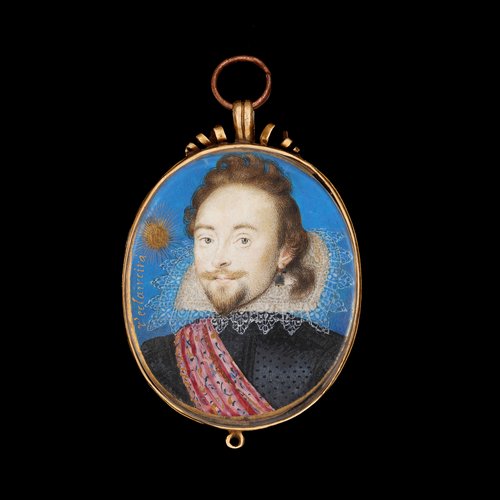
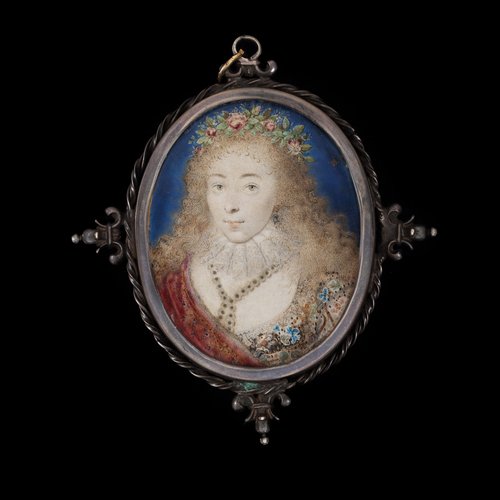
Fig.1: Isaac Oliver, Portrait of a Nobleman, c.1610s, watercolour on vellum (41mm high), previously with The Limner Company.
Fig.2: Nicholas Hilliard, Lady Dorothy Sidney (née Percy) (c.1598-1659), later Countess of Leicester, c.1615, Watercolour on Vellum (52mm), sold by The Limner Company.
The later Stuart period and the advent of the wig
Skipping ahead a few monarchs, one of the Limner Company’s next iconic hairstyles comes from King Charles II (1630-1685). The accession of the ‘Merry Monarch’ brought with it many depictions of his distinctive hair. A few of these miniatures have passed through the hands of The Limner Company. Currently, a depiction by Matthew Snelling (1621-1678) (fig.3) [9] provides an example of this. Charles is painted with his dark, thick and curly head of hair. This was a style that other men adopted in this period, including the gentleman painted by David des Granges (c.1611- c.1672), also with the Limner Company [10]. The fact that des Granges was able to depict this style so well is not surprising- the artist had been commissioned by Charles to produce multiple miniatures of the monarch.
Apart from its appearance, however, what Charles II had done with his hair also signified a large change in the trends of the time. Richard Corson, in his important volume on the history of hair, informs us that it was during the reign of Charles II that wigs had first appeared on the male fashion scene [11]. Before this time, they were popular in France. The King was not happy with his grey hair, and therefore a wig was essential to cover this up. Samuel Pepys (1633-1703), in his diary, on the 2nd November 1633, notes that this day was the first in which he had noticed the King greying [12]. It is likely that from this point on people were aware of him using such a wig, and would also be likely to copy this trend. An example of this happening can be found in Nicholas Dixon’s (1660-1708) Portrait of a Nobleman, c.1680 [13]. The wig that this nobleman wears is of a similar style to that in Snelling’s depiction of the King. However, it differs in that the hair is still grey. What this highlights is the fact that it was not necessarily hair colour that people were avoiding, but instead ageing in general. A wig could be made of one’s own hair, immortalised in a certain style. It is possible that this is what this nobleman had chosen to do.
Both trends of wearing a wig and using one’s own hair in it to prevent ageing contrast greatly with the trends sported by Oliver Cromwell (1599-1638) in a portrait miniature by Bernard Lens (1682-1740) (fig.4) [14]. It is widely known that the Puritan ruler was keen to have himself portrayed in a realistic way, and wearing a wig could have shown some level of excess that he was keen not to be associated with. Here, he is depicted with thin, grey, hair that is clearly receding. There is no sign of any intervention to help reduce the look of his hair ageing. Side by side, the two powerful men of the period could not look more different. Not only does this give us some information about the styles of the time, but also the political messages that could be expressed through these paintings. Here, Cromwell, in a later depiction, has been separated drastically from his enemy.
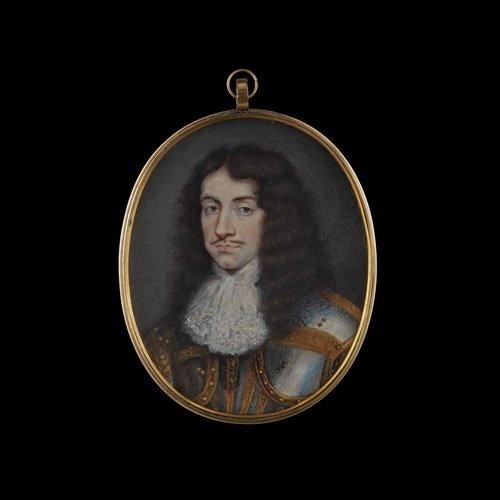
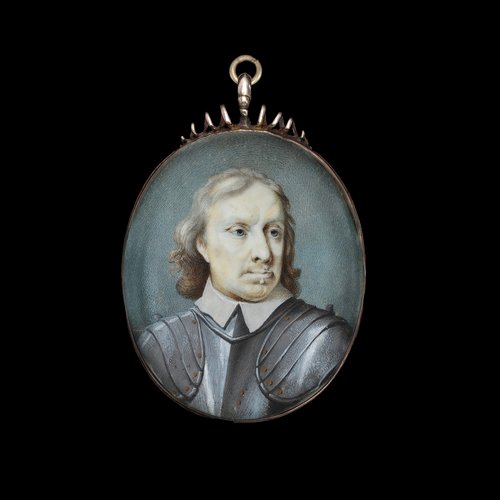
Fig. 3 [left]: Matthew Snelling, King Charles II, c.1665, watercolour on vellum (80mm high) - to be offered by The Limner Company at London Art Week 2024.
Fig. 4 [right]: Bernard Lens, Portrait of Oliver Cromwell, watercolour on vellum (28mm high) - to be offered by The Limner Company at London Art Week 2024.
Wigs and Powdered hair from the early 18th century
The wigs that became more popular in the later Stuart period did retain some of their popularity moving into the early 18th century. In fact, they were perceived to be quite valuable things. Corson quotes a newspaper article from 1717, reporting that men travelling in hackney carriages had been hit with a wave of robberies [15]. Thieves would cut a hole in the back of the carriage and take the wig straight off of the wearer’s head. Though an amusing thing to picture, it only emphasises how much of a sign of wealth these accessories could be.
Later, certain wigs would become associated with certain professions, in the same way that we would recognise a Judge’s or Barrister’s wig today. Noah Seaman’s (fl.1724-1741) Portrait of a Professional (fig.5) [16] demonstrates this. He wears a gown but is also pictured with a long, grand, white wig that could have distinguished him from other members of society at the time.
It was at the beginning of the 18th century that wigs began to be decorated with powder, too [17]. It was this development within the history of hair that provides us with some of the bright colours that we see in paintings and miniatures. Powder came in many different colours- off-white, pink, lilac, and shades of blue, and some of these colours would also be scented and have essential oils added to them. In fact, it has been suggested that these oils could naturally deter lice, and had more of a purpose than just vanity [18]. Such powder would be applied to the wigs, or straight on to natural hair, using a pair of bellows, with a mask used to protect the face from being coated.
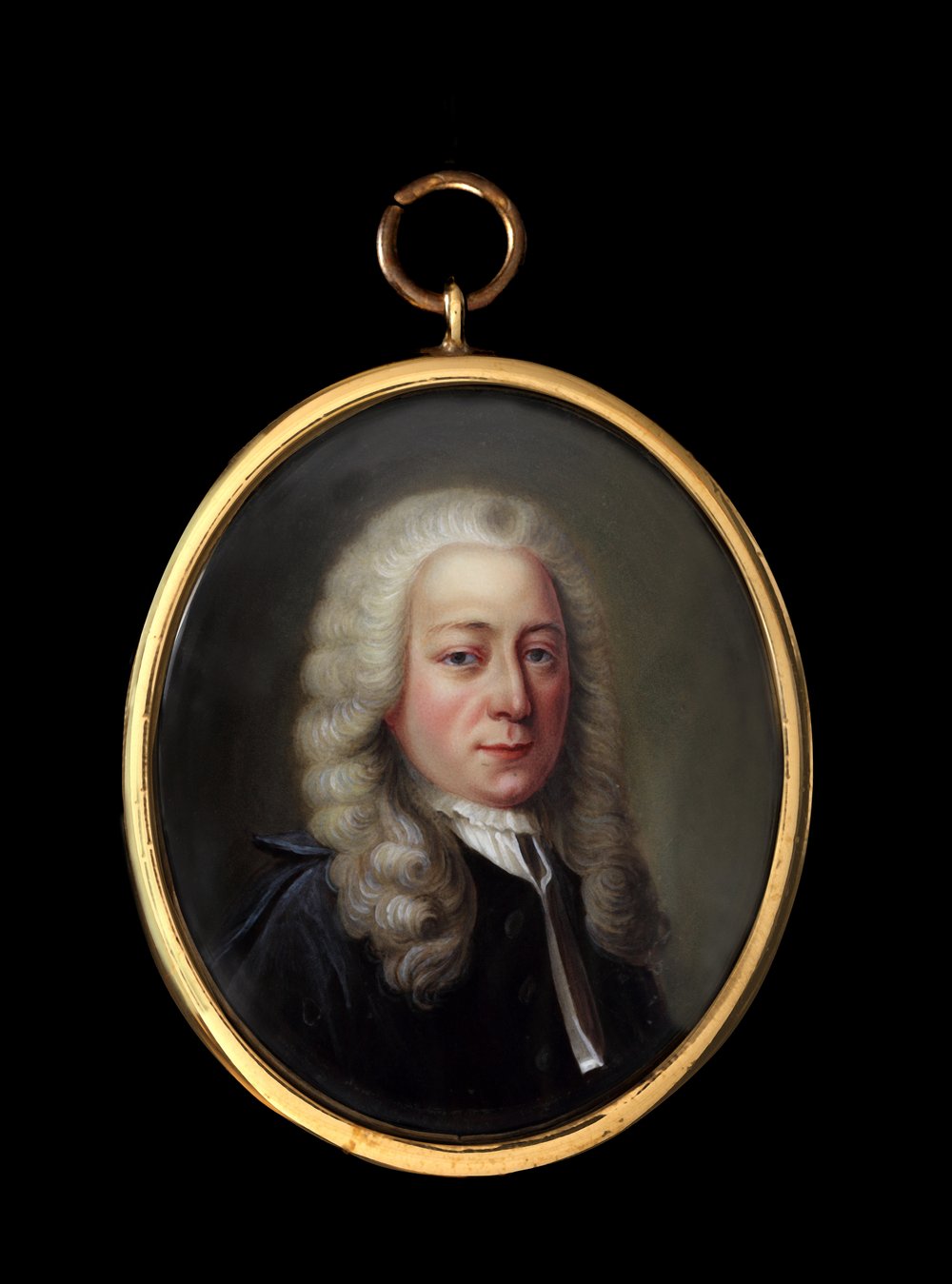
Fig. 5: Noah Seaman, Portrait enamel of a Professional, c.1730, enamel on metal (44mm high) - The Limner Company.
The prominence of wigs for men would not last, however. Throughout the 18th century, they began to get smaller, and a focus on natural hair became more prominent. Other hair styles could still be used to demonstrate status. For example, portrait miniatures of military and naval officers, like that of Sir Thomas Pakenham (1757-1836) by Horace Hone (1754-1825) (fig.9) [19], show men wearing their hair en queue, meaning that it was tied down in the back of the head, like a braid. This may have been a practical measure, but would also become a visual distinction between these men and other members of society, just as the ‘lovelock’ did in the Elizabethan era.
Not wearing a wig was also the more common fashion amongst women, throughout this period. One of the most striking examples of women’s hair from the 18th century that The Limner Company has been able to look into is the portrait of an unknown woman by John Smart (1741-1811), from 1785 [20]. She has a wonderful head of pink hair, which is thrown up into a curly updo and adorned with an ostrich feather. Her hair only emphasises her glamour, and complements the lilac dress that she wears. This brings us back to the fact that powdering hair was extremely popular, and though wigs may not have been worn so commonly by women, the former trend was certainly one that they participated in. Another fine example of natural hair being styled in the same period can be found in Engleheart’s portrait of a ‘Miss Hill’. The sitter wears a ribbon in her hair, that is possibly powdered to give it the off-white colour that it has. Again, it is all her own hair, just curled and styled in a way to make it look voluminous. Women who were wearing wigs at the time were made fun of for this fashion, and were the target of satire, so it is not surprising that this was something that they were avoiding.
John Smart was likely to know a lot about the trends and fashions in hair, his father having been a peruke or wig maker in London [20]. It may have been for this reason that he tended to focus so much on this feature within his portrait miniatures and adorned his sitters with so many different coloured coiffures. Another example of him doing this can be found in his portrait miniature of Consul Charles Murray (fig. 7) [22]. Again, he wears his hair en queue, and has a pink head of hair, that could possibly be a wig.
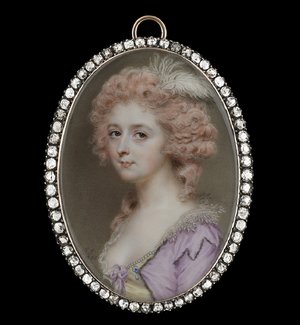
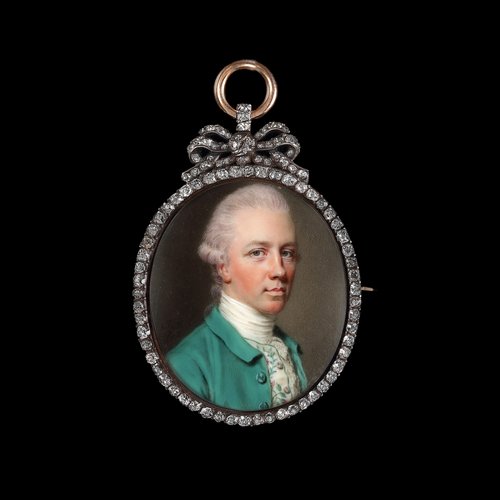
Fig. 6 [left]: John Smart, Portrait Miniature of a Lady, 1785, watercolour on ivory (54mm high) - sold by The Limner Company.
Fig. 7 [right]: John Smart, A Gentleman, traditionally identified as Consul Murray, 1772, watercolour on ivory (31mm high) - to be offered by The Limner Company at London Art Week 2024.
Past the point of powder
In the early 19th century, the colourful, powdered hair, that seems so intriguing to the modern eye, became less popular. It was in this period that a lot of the portraits that we see not only feature the sitter’s natural hair but also their natural hair colour. Remaining on portraits of women, the portrait miniature of Martha Walsh (née Bellingham) by Anne Langton (1804-1893) [23] shows this change. Her hair is still quite voluminous, and there is a hint towards the styling of Smart and Englehart, however it is clearly meant to look more natural, and less toyed with. This is certainly the case with its colour.
Part of the reason for this is that there were now limits on the purchase of powder. In 1795 a licence fee had been put in place, meaning that not as many people could afford to buy powder any more. The only people who were not subject to this fee were soldiers and the royal family. Of course, this did not stop the use of powder completely, and some people were still willing to pay the price. Still, it provides some explanation as to why sitters like Martha Bellingham appeared to be more natural. It also reveals to us that other sitters may have simply just liked powdered hair as a style, and wanted to continue wearing it as a trend. This could be suggested for Pakenham, who was painted with powdered hair by Hone (fig.9) following the introduction of this powder licence.
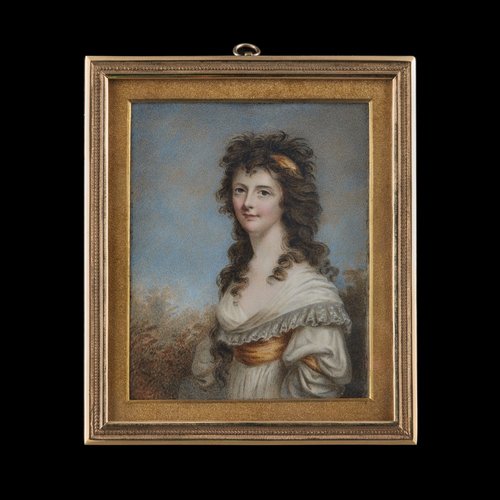
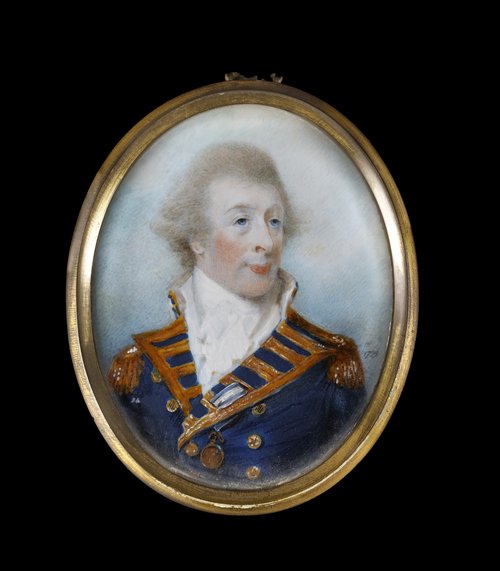
Fig. 8 [left]: Anne Langton, Portrait of Martha Walsh (née Bellingham), 1832, watercolour on ivory (102mm high) - The Limner Company.
Fig. 9 [right]: Horace Hone, Portrait miniature of of Sir Thomas Pakenham, 1799, watercolour on ivory (73mm high) - The Limner Company.
Conclusion
The history of hair warrants a much longer explanation than this blog can give. However, it can be seen through these examples of miniatures that hair was more than just hair. This was something that could demonstrate trends at the time, but can also tell us more personal information about the sitters in these portraits. Whether this was their relationship status, their professional status, or simply whether they could afford to may a fee or not, it goes to show that this top third of portraits is not one that should be overlooked.
[1] Albrecht Dürer, Self Portrait, 1500, oil on panel (61.7 cm x 48.9 cm), Alte Pinakothek, Munich, accession number: 537.
[2] Sandro Botticelli, The Birth of Venus, c.1484-1486, tempera on canvas (172.5 cm × 278.9 cm), Uffizi, Florence, accession number: 1890 n. 878.
[3] John Everett Millais, The Bridesmaid, 1851, oil on panel (27.9 cm x 20.3 cm), Fitzwilliam Museum, Cambridge, accession number: 499*.
[4] Isaac Oliver, Portrait of a Nobleman, c.1610s, watercolour on vellum (41mm high), previously with The Limner Company.
[5] Illustrated in K. Coombs, The Portrait Miniature in England, V & A Publications, London, 1998, p.39.
[6] A Man among Flames, Nicholas Hilliard, Watercolour on Vellum (69x 54mm), Victoria and Albert Museum, London, accession number: P.5-1917.
[7] Nicholas Hilliard, Lady Dorothy Sidney (née Percy) (c.1598-1659), later Countess of Leicester, c.1615, Watercolour on Vellum (52mm), with The Limner Company.
[8] K. Coombs, The Portrait Miniature in England, V & A Publications, London, 1998, p. 51.
[9] Matthew Snelling, King Charles II, c.1665, watercolour on vellum (80mm high), with The Limner Company.
[10] David des Granges, Portrait of a Gentleman, watercolour on vellum (54mm high), with The Limner Company.
[11] R. Corson, Fashions in Hair: the first five thousand years, Hillary House, New York, 1971, p. 205.
[12] Samuel Pepys, The Diary of Samuel Pepys, entry Monday, 2nd November, 1663. Accessed online, https://www.pepysdiary.com/diary/1663/11/02/.
[13] Nicolas Dixon, Portrait of a Nobleman, watercolour on vellum, with The Limner Company.
[14] Bernard Lens, Portrait of Oliver Cromwell, watercolour on vellum (28mm high), with The Limner Company.
[15] R. Corson, Fashions in Hair: the first five thousand years, Hillary House, New York, 1971, p.264.
[16] Noah Seaman, A Portrait Enamel of a Professional, c.1730, enamel on metal (44m high), with The Limner Company.
[17] R. Corson (1971) says that the first date was about 1703. (R. Corson, Fashions in Hair: the first five thousand years, Hillary House, New York, 1971, p. 275).
[18] Abby Cox, Historian Reacts to Weird History's History of Powdered Wigs, YouTube video, 12th June 2022, accessed online: https://www.youtube.com/watch?v=PIYUVHIUdfM&t=945s.
[19] Horace Hone, Portrait of Sir Thomas Pakenham, 1799, watercolour on ivory (73mm high), with The Limner Company.
[20] John Smart, Portrait Miniature of a Lady, 1785, watercolour on ivory (54mm high), sold through The Limner Company.
[21] E. Rutherford et. al, John Smart (1741-1811): A Genius Magnified, Philip Mould & Company, 2014.
[22] John Smart, A Gentleman, traditionally identified as Consul Murray, 1772, watercolour on ivory (31mm high), with The Limner Company.
[23] Anne Langton, Portrait of Martha Walsh (née Bellingham), 1832, watercolour on ivory (102mm high), with The Limner Company.
28 May 2024
NEWS FLASH: Hilliard Discovery
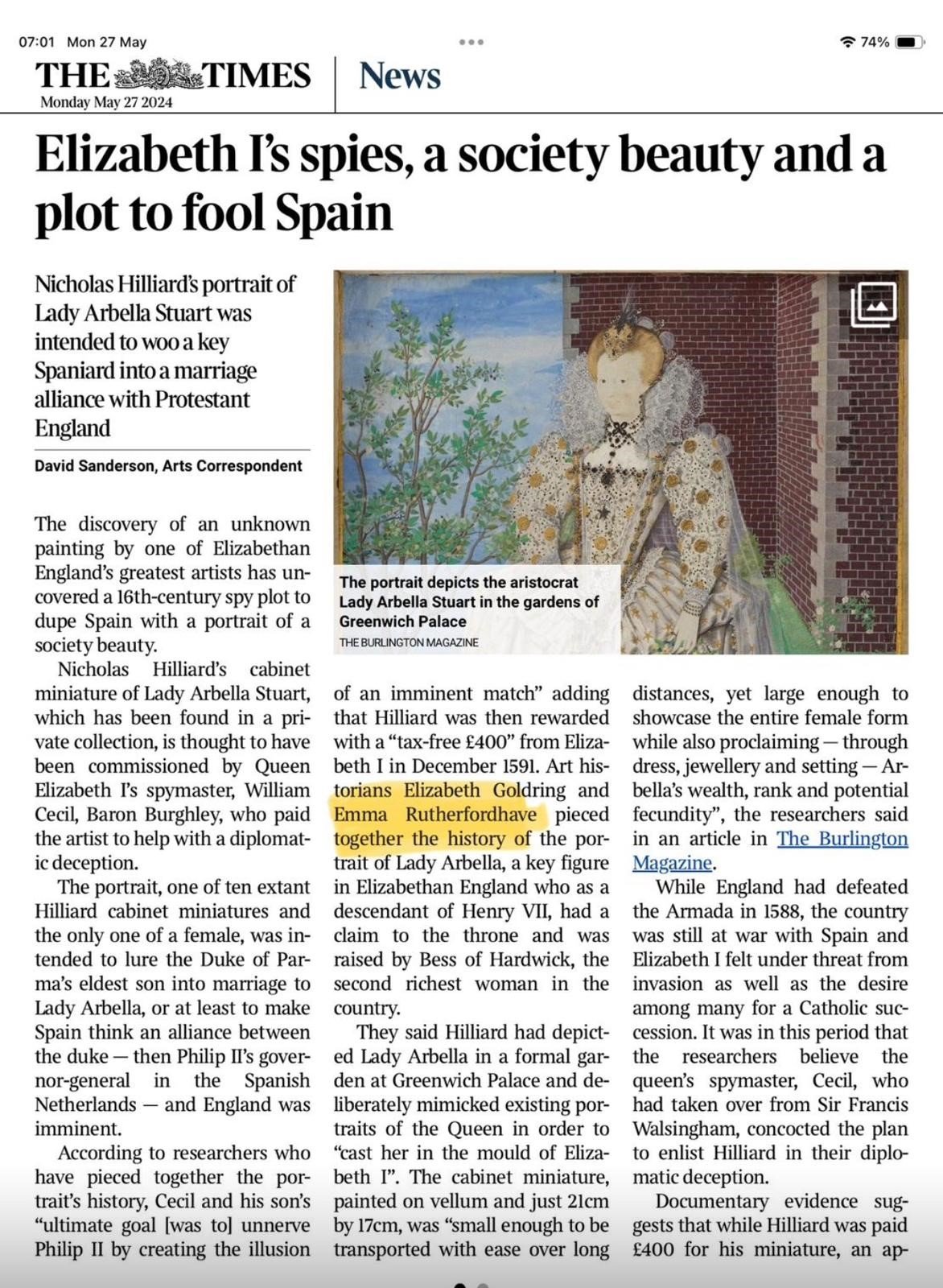
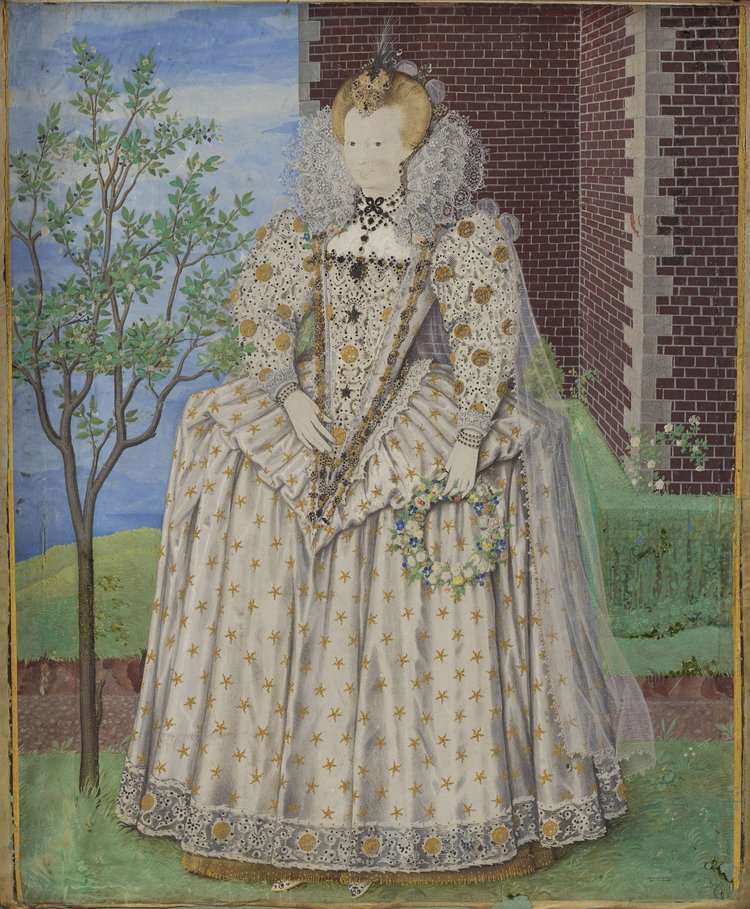
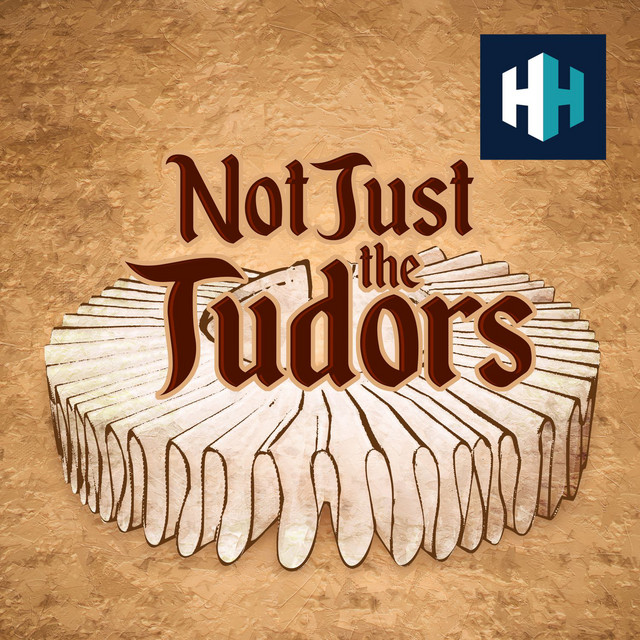
The portrait adds significantly to our understanding of Hilliard’s practice and patronage and constitutes the artist’s only known completed cabinet miniature of a female subject. What’s more, the sitter can be identified as Lady Arbella (or Arabella) Stuart (1575–1615), and the commission connected with a fascinating episode of spycraft in late Elizabethan England.
Elizabeth and Emma spent over a year researching this portrait, and it’s with enormous excitement that it is finally published.
11 May 2024
Antiques Trade Gazette
Miniatures in May, The Limner Company’s online exhibition and Instagram Live series in collaboration with Period Portraits, was featured in trade Antiques Trades Gazette news. The article highlight’s The Limner’s Company’s rare work by Wenceslas Hollar (1607-77), one of only 2 known miniatures by the artist.
READ ARTICLE
09 May 2024
Emma Hamilton: The Life and Art of the First Supermodel
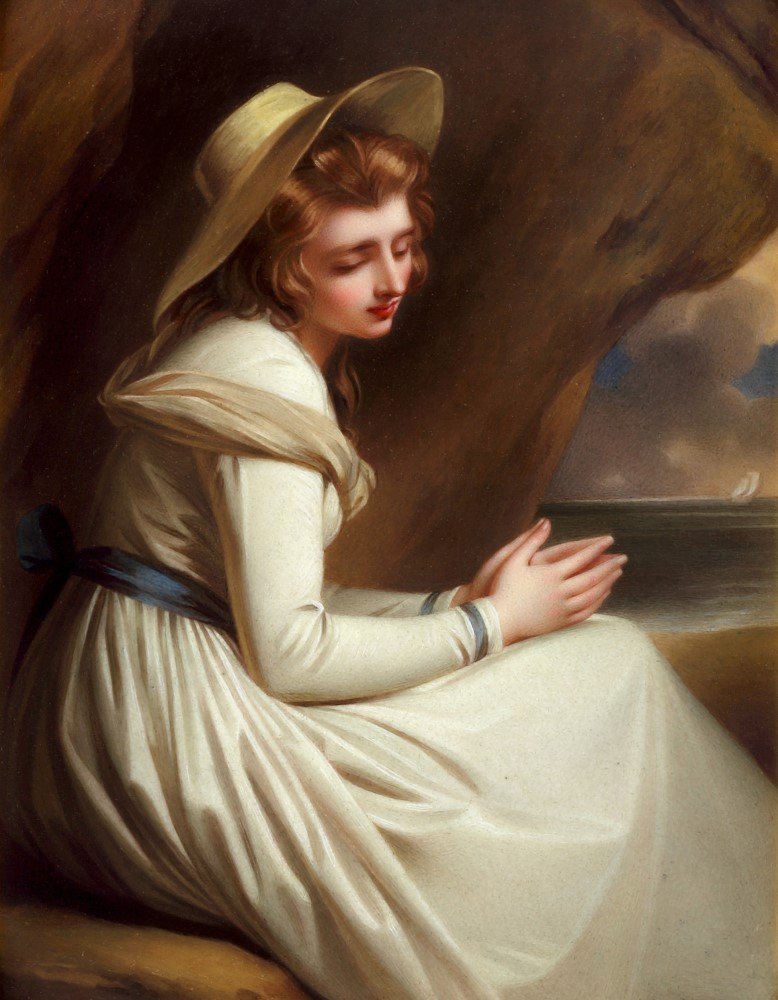
Detail of fig.2. Portrait enamel of Lady Emma Hamilton (née Emily Lyon) (1765-1815), formerly called ‘Ariadne’ or ‘Absence’, 1835, Henry Pierce Bone (1779-1855), after George Romney (1743-1802) – The Limner Company
Emma, Lady Hamilton (1765-1815) was one of the most famous women in the western world during the eighteenth century, and she continues to capture the public imagination today as the subject of plays, exhibitions, novels and history books.[1] So why does her celebrity endure through the ages?
Emma was beautiful and charming, but there was no shortage of such women in the late Georgian age, and as many beautiful portraits. Perhaps one of the reasons she stands out was her powers as a model: where her contemporaries often appear prim and proper, she is expressive and was an active participant in what appears to have often been artistic partnerships. She was painted, drawn or sculpted by more than 30 different artists in her lifetime (including 10 miniaturists), many of whom she sat to multiple times.[2]
Hers is also an intriguing story of rags to riches (and *SPOILER ALERT* rags again). Her social mountaineering saw her gain considerable status and fame. Yet Emma’s life was far from a fairy tale, which is testament to another of quality that endears her to the modern audience: formidable resilience.
In this blog article, I attempt to explain what makes Emma so captivating with a potted history of her life and artistic achievements.
Emma was born 26th April 1765 in the small, poor village of Ness, Cheshire, which has been described as a rural slum. Her parents were an illiterate blacksmith, Henry Lyon and his wife, Mary (née Kidd, later called ‘Mrs Cadogan’). She was baptized ‘Emy’[3] (perhaps Emily, sometimes called Amy) in May 1765, and just one month later, her father died. Left to fend for themselves, mother and child returned to Mary’s family home in Flintshire. It was an impoverished upbringing with no education, yet her mother and maternal grandmother were resourceful, providing enough for Emy to be a robust and healthy girl by the time she left home for domestic service aged 12.
Emy - whose name would go through several variations before settling on Emma – worked first for a local family before moving to London, on her own at just 13 years of age. Accounts of her early years in London suggest she was enchanted by London, particularly the actresses of Covent Garden. Emma also worked as a nursemaid in the household of music and theatre impresario, Dr Thomas Linley, and may have first discovered her own talents for singing and acting at this time. Her employment with the Linley family came to a tragic end however, when two of their children died.
Emma was sacked from multiple other jobs for venturing out after dark with friends. She came to be living on the streets, possibly her own behaviour in this way making it impossible for her to hold a job in a respectable household. Alone, adrift and increasingly goodlooking, Emma was pulled to the fringes of society. She found employment with the madame known as ‘Mrs Kelly’ (real name Charlotte Hayes), who presided over a high-end brothel at King’s Place, Covent Garden. There is no solid evidence that Emma worked as a prostitute, as she may have been a maid for Mrs Kelly, but in a letter some years later to artist George Romney (1734-1802), Emma wrote: “for a time I own through distress my virtue was vanquished, but my sense of virtue was not overcome.’ At this time, Emma also worked as a scantily-dressed attendant at the Temple of Health, a bogus medical establishment set up by quack Dr James Graham, where infertile couples paid to use a 'celestial bed'.
It’s at King’s Place that Emma is likely to have met the wealthy playboy (and later MP for Portsmouth), Sir Harry Fetherstonhaugh, Bt. (1754 –1846). Desiring to make her his mistress, Fetherstonhaugh plucked her from Covent Garden and installed her at his country house of Uppark, Sussex. Emma was by now quite striking (thought to be around 5ft 10 in adulthood, and very beautiful, with looks that were particularly appealing in the age of neoclassicism) and he fashioned her as the hostess of his country seat. As the playboy’s plaything, Emma learnt to read, write and horse ride, as well as develop a taste for bon vivant. The party came to an end however when Emma fell pregnant, and Fetherstonhaugh cast her aside.
Emma returned home to her mother and grandmother, giving birth to a daughter on 12 March 1782, known as ‘Little Emma’. Not yet 17, Emma was near destitute with a baby, but, with characteristic resolve, she saw an opportunity in another wealthy gentleman. Emma wrote to the Hon. Charles Francis Greville (1749–1809), a friend of Fetherstonhaugh’s whom she must have noticed taking a shine to her at Uppark. Greville agreed to help, housing her as his mistress (and her mother, now going by the name ‘Mrs Cadogan’) on the agreement that she leave the baby behind. It is possibly also through his coercion that she changed her name, hereafter using the surname Hart.
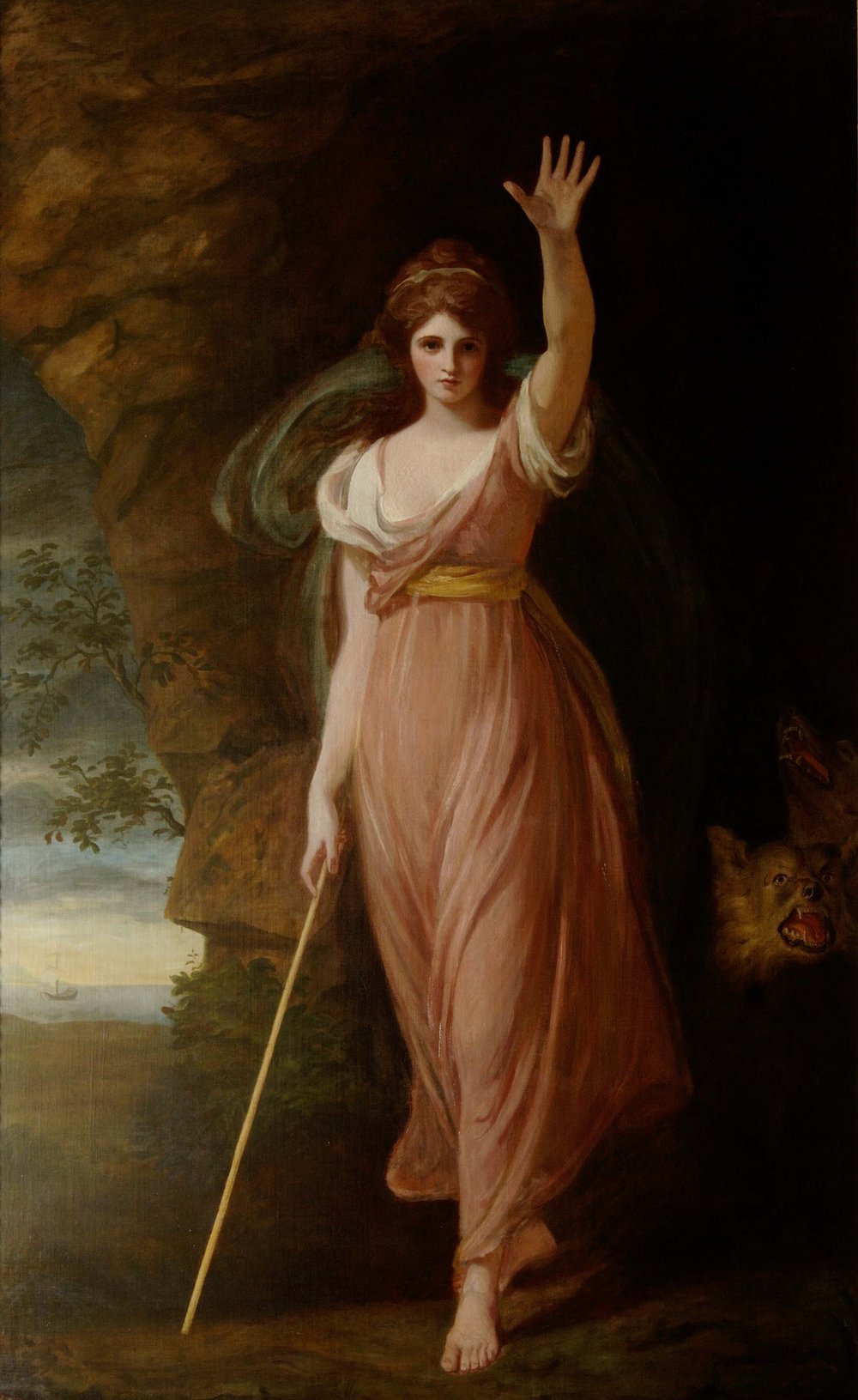
Fig. 1 Emma Hart (later Lady Hamilton) as Circe, 1782, George Romney, oil on canvas – Waddesdon Manor (accession 104.1995)
Emma settled comfortably with Greville, who introduced her into society, and in April 1782, took her to George Romney to sit for a portrait. Romney was immediately struck by her beauty and vivacity and took her on as a model. It’s unclear whether Greville had a deliberate plan for Emma to earn her keep in this way, or whether he commissioned portraits of his mistress for his own enjoyment, only looking to sell them at a later date when he needed funds. Both have been suggested by historians.
As Romney’s model and increasingly muse, Emma gained notoriety. Romney was captivated to the point where Emma preoccupied almost his entire painting practice, sitting to him well over 100 times between 1782-86.[4] She was a gifted actress and posed in a great variety of guises; the resulting images ranking among the most engaging portraits of the age. Thus, in her late teens and early 20s, Emma became a well-known beauty.
Meanwhile, Greville found himself in financial trouble and he sought to set Emma aside and find a suitable bride with a considerable dowry. A solution came to him in the form of his widowed uncle, Sir William Hamilton (1731–1803). Hamilton, British envoy to the Neapolitan court in Italy, had met Emma on a trip to London in 1783 and been immediately taken with her. During his stay, Hamilton had even commissioned both Romney and Sir Joshua Reynolds to paint her and had her portrait sent back to his house in Naples.
Greville negotiated with Hamilton to send Emma to him in Naples, in exchange for being named Hamilton’s heir. It was a sordid scheme, with Emma led to believe that she was embarking on an educational sojourn and would return to London. Romney, however, was privy to Greville’s plan and started painting her more frenetically than ever. It’s from a painting dating to this time that a portrait for sale with The Limner Company by Henry Pierce Bone (1779-1855) [fig.2] derives.
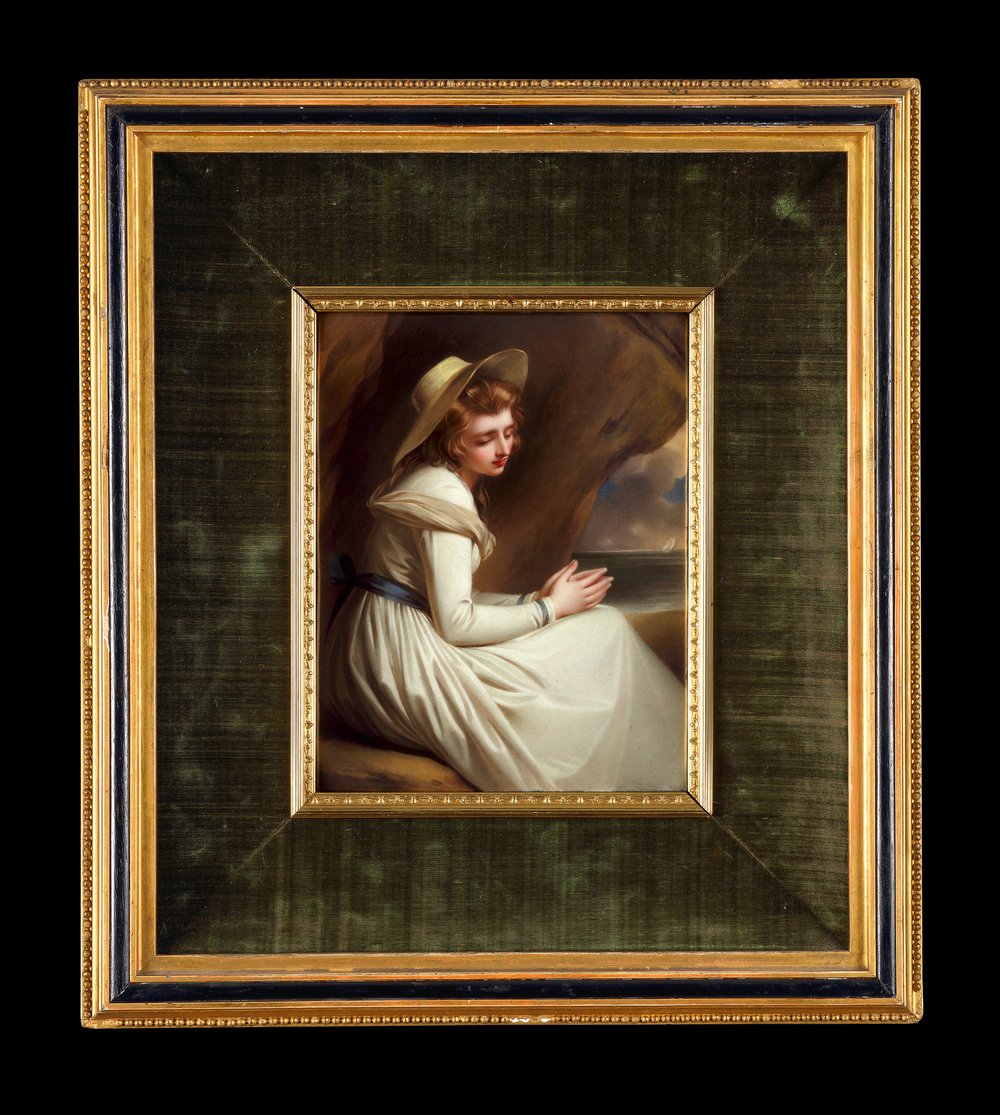
Fig. 2 Portrait enamel of Lady Emma Hamilton (née Emily Lyon) (1765-1815), formerly called ‘Ariadne’ or ‘Absence’, 1835, Henry Pierce Bone after George Romney; enamel, 7 ¼ in (185mm) high – The Limner Company
Romney’s oil painting, now at the National Maritime Museum (Greenwich, London), depicts Emma seated in front of a seascape with a forbidding sky, her mournful countenance cast down. Probably finished it after Emma left England in April 1786, it has been suggested that the image could be a reflection of the artist’s own feelings for her abroad.[5] In the nineteenth century, the painting became known as 'Lady Hamilton as Ariadne' since it was thought to show Emma posing as this daughter of King Minos of Crete, who helped Theseus to escape from the Minotaur's labyrinth only to be abandoned by him on the island of Naxos. It remained in Romney’s studio until after his death, when it was listed by one of his assistants as 'Absence’.
Emma learned only after her arrival in Naples that Greville had given her up. She was heartbroken, writing gut-wrenching letters back to London. She soon took to Neapolitan life however and got on well with the Hamilton, who, although 30 years her senior, was kindly to her (and absolutely besotted). Emma learnt to speak Italian and French, and came to be a local society figure, although not necessarily well-liked. By the end of 1786, she had become Hamilton’s mistress.
Emma’s renown was about to skyrocket with another artistic[6] endeavour. She trained her singing voice and, started performing tableaux vivant for dinner guests. The performances were imitations of classical figures from Sir William’s collection of antique Greek vases, and he would oversee the shows acting as master of ceremonies. Scantily-clad in diaphanous, toga-like dresses, and often with her (very long) hair worn loose, it would have been quite a titillating spectacle; Emma perhaps drew on her experience at the Dr Graham’s ‘Temple of Health’ in conceiving the show.
These performances, which became known as her ‘Attitudes’, were hugely enjoyed by Hamilton’s many guests, including the Hanoverian artist, Friedrich Rehberg (1758-1835), who visited Naples in 1791. Rehberg captured her tableaux vivant in a series of 12 drawings, which were published a few years later in Rome, running into many editions of prints and sold widely across the Continent. Already quite famous, Emma became a sensation across Europe and an artistic inspiration, sitting to numerous artists in the 1790s including Angelica Kauffman (1741-1807) [fig.3], Thomas Lawrence (1769-1830)[7] and Elizabeth Vigée le brun (1755-1842)[8].
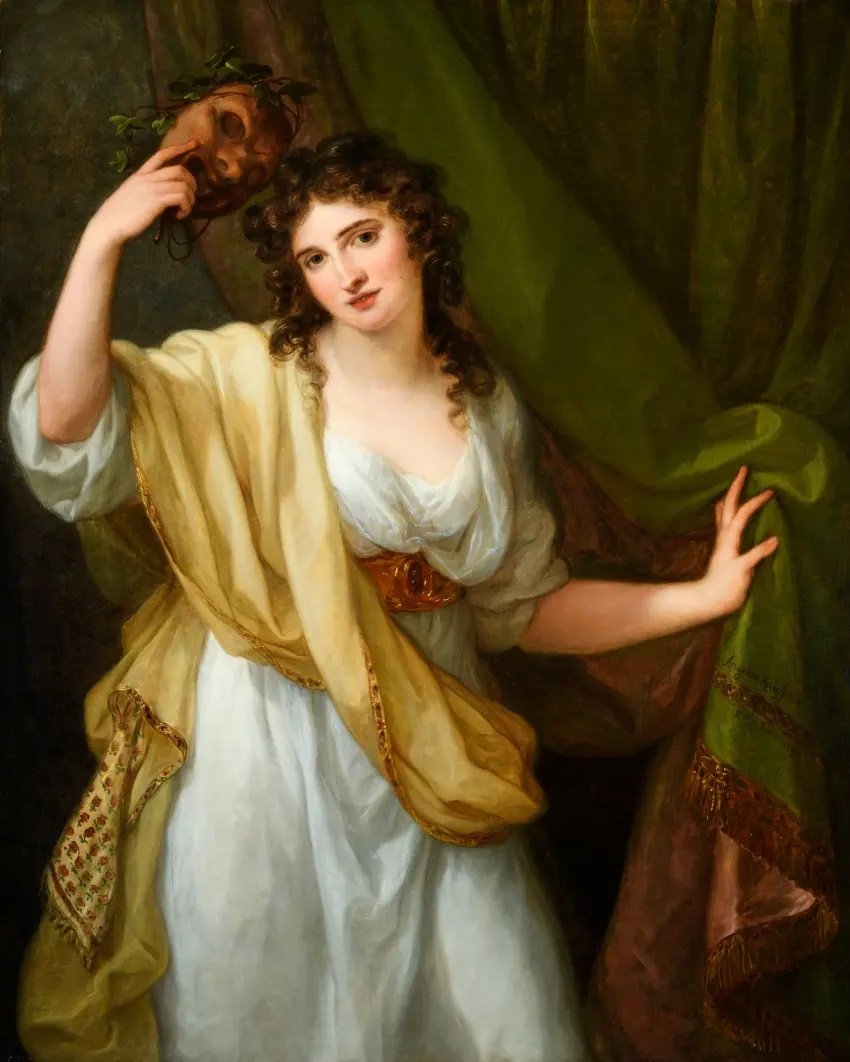
Fig. 3 Portrait of Emma, Lady Hamilton, as Muse of Comedy, 1791, by Angelica Kauffmann; oil on canvas, 127 x 101.6 cm - Private Collection (currently on display at The Royal Academy, London, in their Angelica Kauffmann exhibition, 1 March – 30 June 2024).
Even prior to this, in 1787, Emma described Hamilton’s ambassadorial residence in Naples as being ‘full of painters painting me. [Sir William] has now got nine pictures of me, and 2 a painting. Marchant is cutting my head in stone, that is in cameo for a ring [Fig. 4] ... There is another man modeling me in wax, and another in clay. All the artists is come from Rome’.[9]
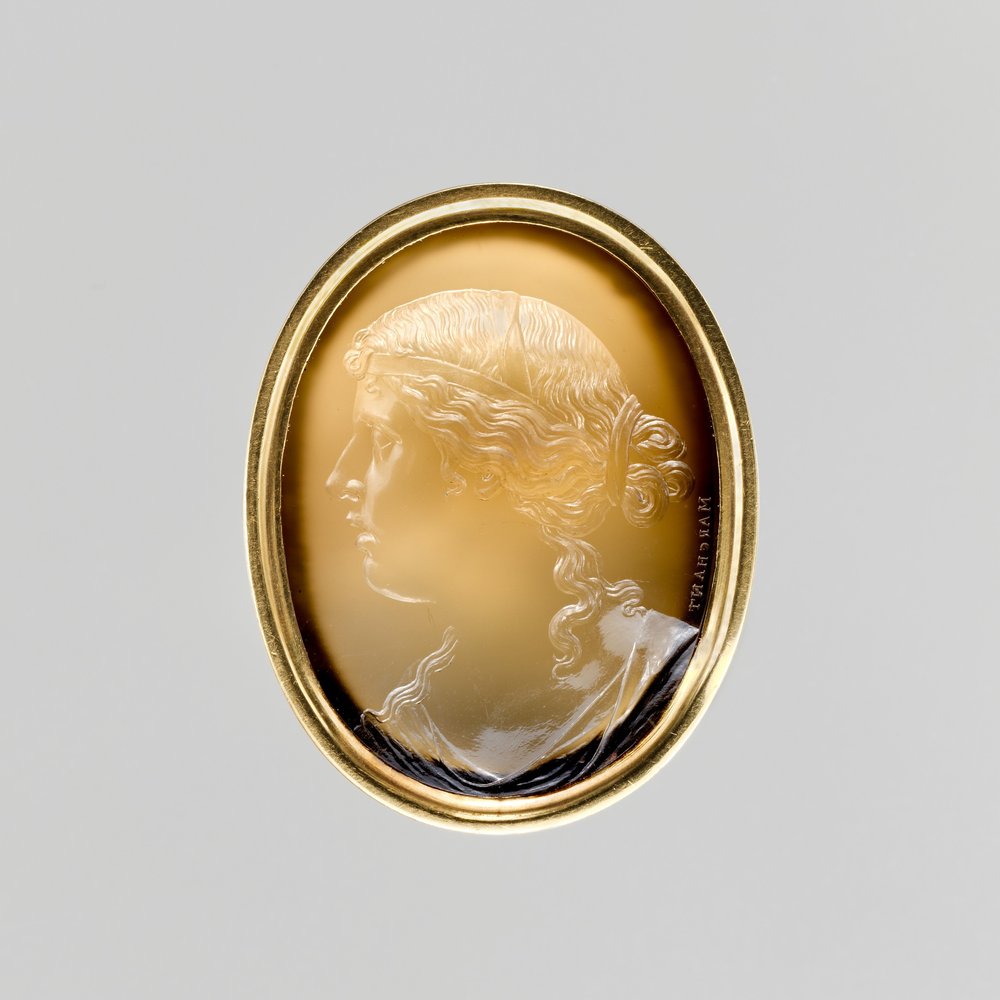
Fig. 4 Portrait of Emma Hart, Later Lady Hamilton (1765–1803), 1786-87, Nathaniel Marchant (1739–1816); smoky chalcedony, silver-gilt; dimensions of visible cameo 27.3 x 21 mm - The Metropolitan Museum of Art (The Milton Weil Collection, 1940)
Sir William took Emma back to London to marry her in September 1791, making her Lady Hamilton. It was a fleeting visit, but Emma made time to sit for Romney on the day of their wedding, not once but twice: in the morning and again later the same day after the ceremony.
Now Lady Hamilton and a senior diplomat’s wife, Emma had gained status, even if she was still considered low-born and her behaviour uncouth[10]. Travelling back via Paris, Emma was summoned to meet Marie-Antoinette while the French queen was under house arrest at the Tuileries Palace. Marie Antoinette asked her to carry a letter to Naples to her sister, Maria Carolina, Queen of Naples. Emma was thereby ingratiated with Maria Carolina and accepted at court. They soon become firm friends and Emma a close confidante of the queen.[11] Thus Emma’s celebrity was such that she was virtually unrivalled, yet she was about to collide with one of the few whose notoriety equalled her own…
Emma first met with Horatio Nelson (1758-1805) (then a Captain) in September 1793, but it was not until 1798 that their infamous love affair began. Before their second meeting, Emma had written gushing letters to the now celebrate war hero inviting him to Naples. When he arrived, bruised, battered and feted by the whole of Europe (excluding the French), Emma was immediately theatrical in her displays of affection for him. Their affair began a few months later after Nelson came to the rescue of the Hamiltons (and the Neapolitan royal family) when revolution broke out in Naples.
While Sir William did express concern for the scandal, he more than accepted the relationship, perhaps because he himself was so fond of Nelson. The three of them spent much time together, calling themselves the tria juncta in uno (‘three joined in one’ - the motto of the Order of the Bath, of which Nelson and Hamilton were both members). Emma was pregnant with Nelson’s child by the time Sir William was recalled to England by the British government in 1800, and the three returned together.
On their return journey, they stopped in Dresden where Nelson and Hamilton were painted in miniature by court artist, Johann Heinrich Schmidt. Emma’s miniature, now at the National Maritime Museum, was treasured by Nelson and it was hanging in his cabin on HMS Victory at his death.
Back in London, Nelson gave up his wife for Emma and moved-in with the Hamiltons in Piccadilly. Emma soon gave birth to twins, only one of whom survived – a daughter to be named Horatia and given the surname Thompson, the same Nelson had used in his first letters to Emma. The trio and the new baby, continued to live together between Piccadilly and Nelson’s house, Merton Place (near Wimbledon, London), but they were lambasted by the press and ridiculed at court.
Sir William died in London on 6 April 1803 with Emma and Nelson at his side, leaving the bulk of his estate, as agreed, to Greville. Whereupon, Emma and Nelson took up full time residence at Merton Place. The couple greatly enjoyed entertaining and were extremely generous hosts. Contemporary accounts are disparaging about Emma and Nelson’s lifestyle, and Emma in particular was drinking and eating excessively by this time. Descriptions also pour scorn on the décor at Merton, which seems to have been furnished as a lavish shrine to the couple. Lord Minto wrote: 'The whole house, staircase and all, are covered with nothing but pictures of her and him, of all sizes and sorts, and representations of his naval actions, coats of arms, pieces of plate in his honour’.[12]
Emma hoped for Nelson to retire from the Navy, but when war with France resumed in 1803, he was appointed commander-in-chief in the Mediterranean. Emma was left behind raising Horatia at Merton. She may have also given birth again at the end of 1803/early in 1804. This third child was named Little Emma by Nelson but must have died shortly after birth.
In a brief trip home, in August 1805, Nelson and Emma received holy communion together and exchanged rings in what he believed as a marriage in the eyes of God. This trip was the last time the couple would see each other, and less than two months later, Nelson was killed at the Battle of Trafalgar.
Emma was devastated by his death, and it marked a steep decline in her circumstances. Shunned by society for the impropriety of their relationship, her working-class origins and indecorous ways, Emma was not allowed to attend Nelson’s funeral. She had mounting debts but continued to spend lavishly. Emma had grown accustomed to an extravagant lifestyle, but now had only modest funds. Within 3 years of Nelson’s death, Emma was over £15,000 in debt.
In desperation, she turned to gambling and even sold mementos of Nelson to support herself and her daughter. Her efforts were to no avail however, and Emma was arrested for debt in 1813 (although permitted to live with Horatia on parole in nearby lodgings rather than debtors’ prison). With the help of a friend she was able to extract enough of her annuity from Nelson’s brother to free herself. Emma then fled abroad to Calais with Horatia, but she could not out run her health which was increasingly failing. Years of overindulgence and an escalating drinking habit finally caught-up with her, and Emma died in penury on 15th January 1815.
Thus, Emma’s vertiginous rise was matched by a swift and cruel downfall. Yet her image and story remain popular, and two centuries after her death, she still has the power to beguile.
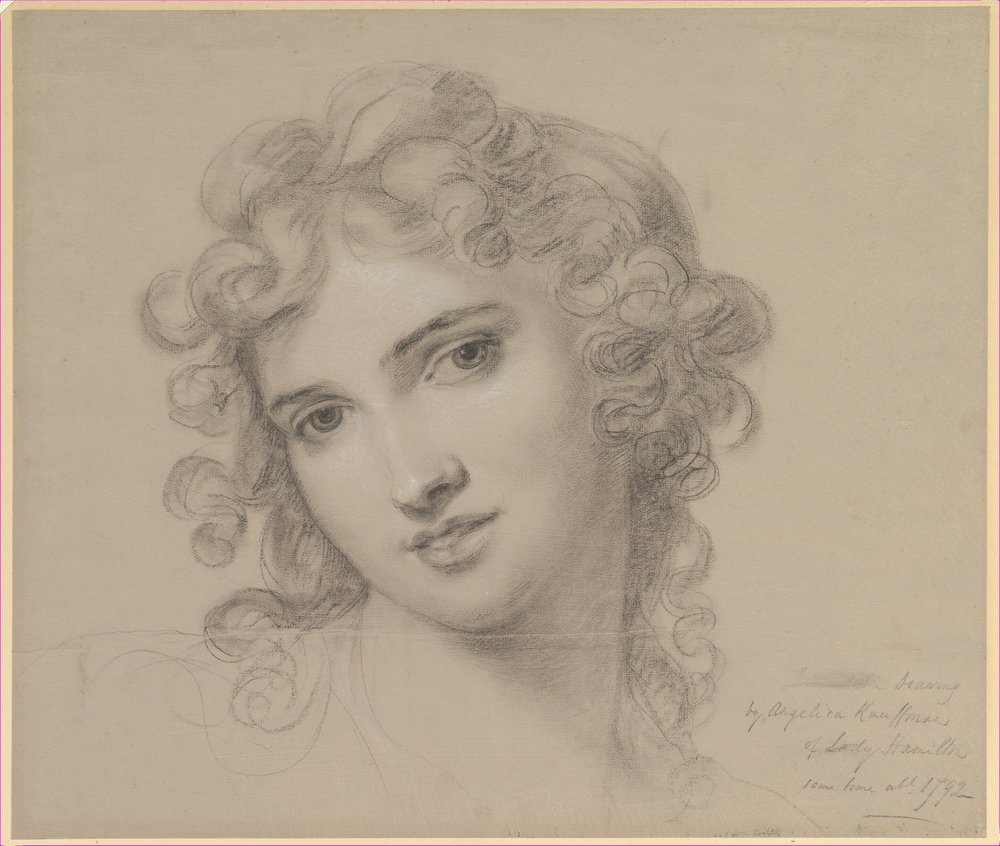
Fig. 5 Portrait of Emma Hamilton, 1791, Angelica Kauffmann; Black and white chalk, on gray prepared paper; sheet dimensions 14 3/16 x 16 11/16 in. (36 x 42.4 cm) – The Metropolitan Museum of Art (Purchase, several members of The Chairman's Council Gifts, 2003)
[1] Recent examples include Gillian Lacey-Solymar’s production, Irrepressible, at last year’s Edinburgh Fringe; the Royal Museum Greenwich’s 2017 exhibition, Emma Hamilton: Seduction and Celebrity; Professor Kate Williams’s book, England’s Mistress; and a work of contemporary fiction by Shappi Khorsandi, Kissing Emma, which was inspired by Emma’s story.
[2] A catalogue at the National Portrait Gallery of known works can be accessed online here: https://www.npg.org.uk/collections/search/personExtended/mp01999/emma-nee-lyon-lady-hamilton?tab=iconography
[3] Oxford Dictionary of National Biography, accessed online 10 April 2024 https://www-oxforddnb-com.lonlib.idm.oclc.org/display/10.1093/ref:odnb/9780198614128.001.0001/odnb-9780198614128-e-12063?rskey=s0KsKY&result=2
[4] https://www.npg.org.uk/whatson/exhibitions/2002/george-romney/emma-hamilton - accessed 10 April 2024
[5] https://www.rmg.co.uk/collections/objects/rmgc-object-14210 - accessed 10 April 2024
[6] I use the term ‘artistic’ here as, although these performances would have been conceived as a form of entertainment and not thought of as ‘art’, we might today consider them a form of artistic expression.
[7] Lawrence’s monumental portrait of Emma as La Penserosa, 1791-92 (Duke of Abercorn Collection) was exhibited at the Royal Museum Greenwich’s 2017 exhibition, ‘Emma Hamilton: Seduction and Celebrity’, and can be viewed on their blog here.
[8] Vigée le Brun is recorded has painting Emma multiple times between 1790-1792. One of her portraits of Emma as Bacchante was copied in miniature by Henry Bone (1755 - 1834) in 1803, now at the Wallace Collection, London, here.
[9] J. Ingamells, Dictionary of British and Irish Travellers in Italy 1701-1800, compiled from the Brinsley Ford Archive, 1997, p. 456 – quoted here.
[10] Vigée Le Brun wrote in her diaries that, ‘Lady Hamilton was not very intelligent, although she was exceedingly mocking and denigrating, to the point that her faults were her only means of conversation. But she was cunning, and this helped her to snare a husband’.
[11] It was Queen Caroline who introduced Emma to Vigée le Brun, who, having been painter at the French court, had fled the Revolution to Naples.
[12] Life and Letters of Sir Gilbert Elliot, First Earl of Minto, ed. countess of Minto, 3 vols., 1874, 3.242 – quoted in ODNB
07 May 2024
The Life and Network of Heinrich Friederich Füger
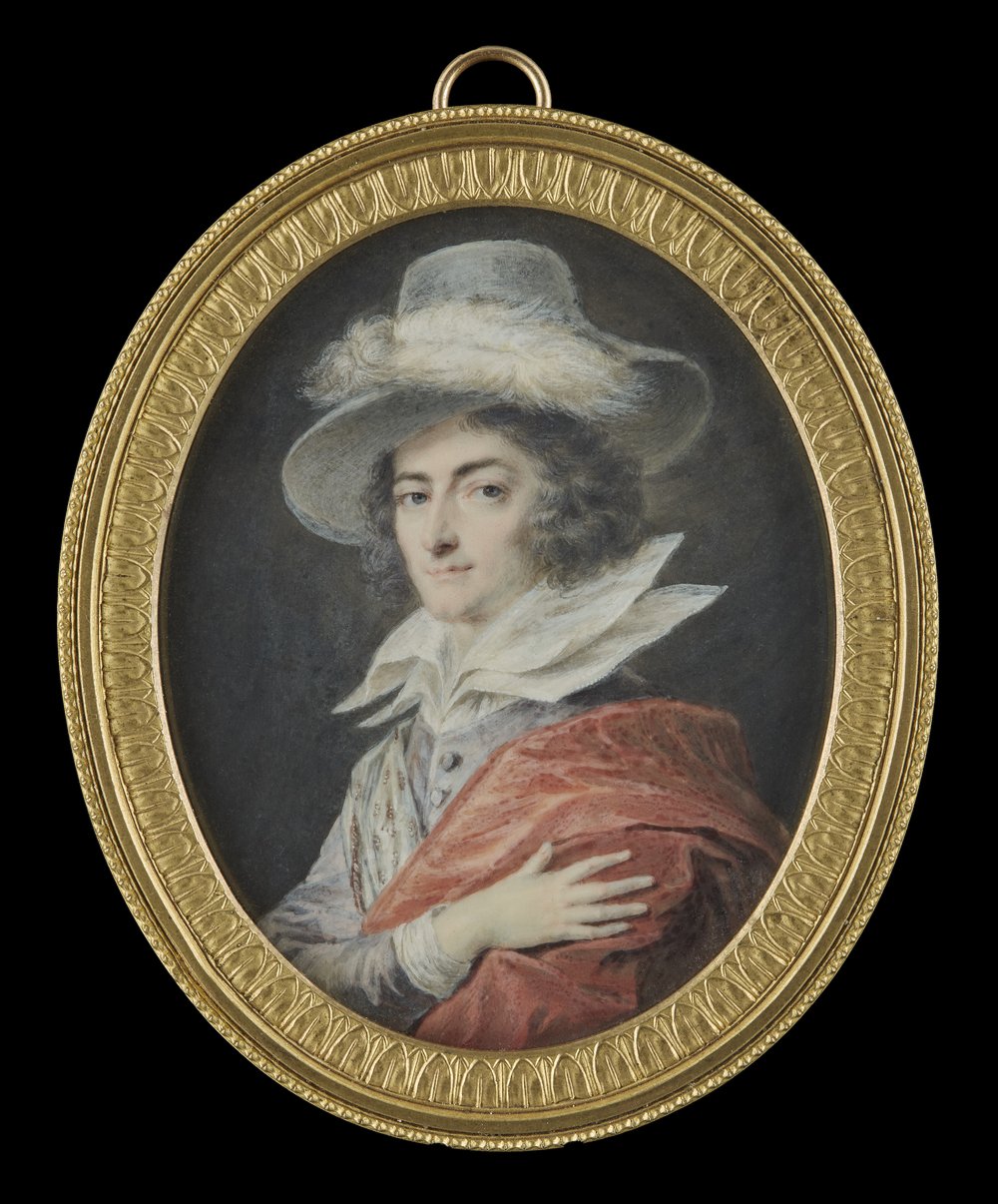
Fig. 1: H. F. Füger, Portrait miniature of Count Joseph Johann von Fries (1765-1788), c.1774-1785, Watercolour and Bodycolour on Ivory, Oval, 77mm high. - The Limner Company (to be offered in the online selling exhibition, Miniatures in May, 13 - 18 May 2024)
What seemed particularly striking was the apparent similarity between the work of Füger and his (slightly older) contemporary, Angelica Kauffman (1741-1807). Kauffman is recognised as one of the most accomplished female artists of her time. The current exhibition at the Royal Academy of the Arts, London, tracks her career through different countries and the different genres of painting that she explored[1].
Füger would go on to have a similar life, yet he has not enjoyed the same popularity and major exhibitions in Britain. Heinrich Friederich Füger was born in Heilbronn on December 8th, 1751. He enjoyed a successful career in painting full-scale as well as miniature portraits and historical scenes. There is yet to be an English-language monograph published on the artist. One of the most recent publications on the artist, in German, was written by Robert Keil in 2009. Keil provides an in-depth look into the life, education, and oeuvre of the artist. Fügeralso features in a large entry in Schidlof’s The Miniature in Europe (vol.1, 1964), and from these sources we are able to reconstruct a general narrative of the life of the artist, from which the offshoots of high-flying connections slowly appear.
Füger’s early life and education
It is generally accepted that Füger painted his first portrait miniature at the age of 11. It may have been the artistic talent that he demonstrated through this miniature that convinced his father to send him to an art academy when he was 15. Here, Füger was under the leadership of artist Nicolas Guibal (1725-1784). It is through Guibal that Füger’s artistic network began to expand. Guibal’s father had been a sculptor and before becoming a teacher, he had travelled to Italy, and worked closely with Anton Raphael Mengs (1728-1779). We will come across this name later, as someone who would become a great influence to Füger once he ventured out of the German-speaking world. Later on in Füger’s career he would go back to paint Guibal and his wife in miniature form[2]. One of these miniatures is now held in the Landesmuseum, Stuttgart.
The young Heinrich clearly hadn’t felt that art was for him, and was too intimidated by his peers and his predecessors[3]. As a result, he was sent to study law in Halle in 1768. Here, he was accompanied by his brother Gottlieb Christian Füger (1749-c.1793), who was studying theology. It is evident that, throughout their lives, the two brothers had a good relationship. We see this in the portrait miniature of him and his brother, sat in front of a piano[4]. An oval miniature in this form is not uncommon for Füger, who had painted the daughters of the engraver Johann Friederich Bause in a similar style[5]. It appears to be more in the style of a genre painting than a typical portrait miniature. This is something that Keil (2009) mentions; when Füger paints portraits like these he is aiming to represent each sitter by their activity. In the case of him and his brother, Heinrich stands, holding what appears to be a paintbrush, while his brother does what he knows best, which is playing music. A similar thing can be said about his miniature of Guibal, which depicts him holding a paintbrush and palette, in front of statues and other mediums of art in the background.
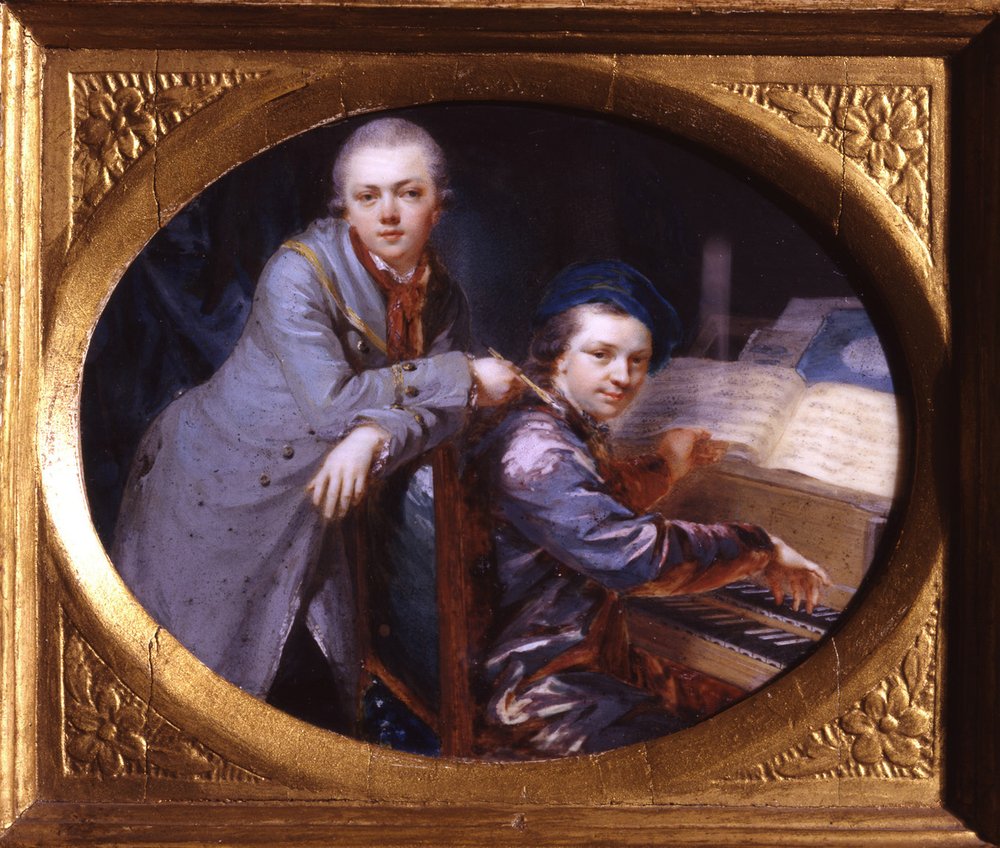
Fig. 2 H. F. Füger, Self Portrait with his brother, Gottlieb Christian Füger, watercolour on ivory, 10.5 x 13.6 cm, c. 1768, Berlin, Staatliche Museen Berlin, Alte Nationalgalerie, inventory no. A I 932.
Not before long, Füger had tuned back into his artistic abilities, and was beginning to paint again. He started learning again under Adam Friederich Oeser (1717-1799). Here we find another branch out into the world of arts and culture of the period. Oeser was an artist himself, and had opened an academy in Leipzig in 1764, just before Füger arrived in the city. His other students included Johann Wolfgang Goethe, and he inspired the work of Johann Joachim Winckelmann (1717-1768). Though an actual meeting between Goethe and Füger cannot be proven, Goethe would go on to lurk on the outskirts of our artist’s life.
After Leipzig, he would move on to Dresden. It was here that Füger was able to exhibit some of his early works. In 1771, the Dresden exhibition featured a work that would become extremely important in his career- if not for how it looked but for who it depicted. That was the portrait miniature of Sir Robert Murray Keith (1730-1795)[6]. Keith was a diplomat based in Dresden, who would later be sent to Copenhagen, and then Vienna. What was important for Füger was Keith’s diplomatic connections and the chance he provided to become a patron to the artist. The miniature certainly captures the fact that Keith was a diplomat, as he is pictured wearing his official dress. He has a capturing gaze, which makes the viewer feel that he is important. This miniature may be more ‘traditional’ than the double portrait of Füger and his brother, in the fact that this portrait is not showing the sitter doing anything in particular. However, Füger has still managed to demonstrate the status of Keith, if not only in society, but also to the artist personally.
Moving further South
Keith would be important to Füger when he went on to travel to Vienna, alongside other artists and persons of political influence that he had met along the way. This trip to the Austrian capital had taken place after Füger returned to his hometown, Heilbronn, between 1772 and 1774. His movement back towards the larger cities of the German-speaking world signified a move up the artist’s scale further than just a British diplomat. It was in Vienna that Füger would be introduced to other, more important political figures, including the State Chancellor, Prince Kaunitz (1711-1894), and more importantly, the imperial family. It was through painting the Imperial family that Füger was able to create a good enough impression to be sent on his way to Rome. This was under the guidance of Prince Kaunitz in 1776, with four other Austrian artists. This was not a holiday, or a grand tour, but a scholarship, in which Kaunitz had set out aims for what the students were meant to follow and to achieve. This was very much based on ancient and Italian tradition. The many extant works from this period reflect this learning, and depict a lot of historical scenes[7]. However, it can also be seen that Füger was enjoying influence from other artists both alive and dead. One such example, mentioned earlier, was Mengs, but the artist was not only to be influenced by others who had come from the same part of the world as him. Kiel (2009) also mentions French influences, of the likes of Poussin and Le Seur, as well as older Italian masters such as Domenichino and Raphael.
During this period, Füger continued to paint miniatures as he had always done. One example of these is one of his self-portraits in miniature, painted on ivory[8]. This particular example demonstrates a few of the changes in the artist’s technique that were emerging at this point in time. Importantly, we can see a large amount of expression in the artist’s face, which is something that Keil states was a direct influence of Domenichino and Raphael[9]. Painting in miniature was not something that Kaunitz had prescribed to Füger in his curriculum, so here we can see the artist beginning to learn for himself, and slowly break away from just being the student.
Patrons and connections in Italy
Despite these new developments in his artistic techniques, a lot of the ways in which Füger was socialising and making connections in this new location remained the same. Goethe has already been mentioned as a tangential connection to Füger’s life, and it was in this period that the two were actually residing in the same place, and socialising with the same people. Goethe’s Italian Journey, aside from the insights it gives into the life of a young man who was learning more about the arts himself, is also an incredible source as a who’s who of Italy in the period that he was there. Füger is not mentioned by name, but Fries, the sitter in this blog’s keynote portrait miniature, certainly is. Goethe mentions the art that Fries was buying, as well as the camaraderie that he provided.
The same sort of story can be told by another frequent mention in Goethe’s travel work, Angelica Kauffman. Often intimately referred to as ‘Angelica’, the successful artist of the period was slightly older than both Füger and Goethe. It is possible that Kauffman also acted as an influence to Füger, which can certainly be seen when comparing their works. Both artists painted the same sitters on multiple occasions, which demonstrates not only the influence that artists that were all going to the same places enjoyed, but also the mutuality of their connections
These people included Fries himself (fig.1)[10]. It is not known at which date he was painted by Füger, but what is known is that Kauffman painted a portrait of the wealthy patron in 1787[11]. By this point, Füger had left Italy, so it is possible that he painted Fries upon his return to Vienna, or even just copied Kauffman’s portrait into miniature form. Many similarities can be found between the two depictions. Firstly, his magnificent hat, which is adorned with a large feather- something that Goethe notes as being important currency within some places in Italy at the time [12]. Furthermore, he wears the same red damask, that is also placed as a feature in the reverse of the miniature by Füger. Both portraits depict the patron, who was heavily invested in the arts, in a flamboyant light.
Both of these portraits also bear similar resemblance to that painted by Füger of Prince Nikolai Borisovich Yusupov (fig.3). This portrait is now held in the State Hermitage Museum and depicts an important Russian nobleman and art collector of the time. Though no known portrait by Kauffman exists for us to compare this to, we do know that Yusupov was also a patron of the Swiss Artist. This portrait, again, shows a well-dressed and flamboyant character. He also wears a red cape, and is pictured against a moody sky, giving a viewer a sense of his importance and power. Though this is a portrait in full, and not in miniature, it reflects the idea, mentioned earlier, that these portraits being done by Füger were not meant to just simply show a person at face value, but to show us their personality, too.
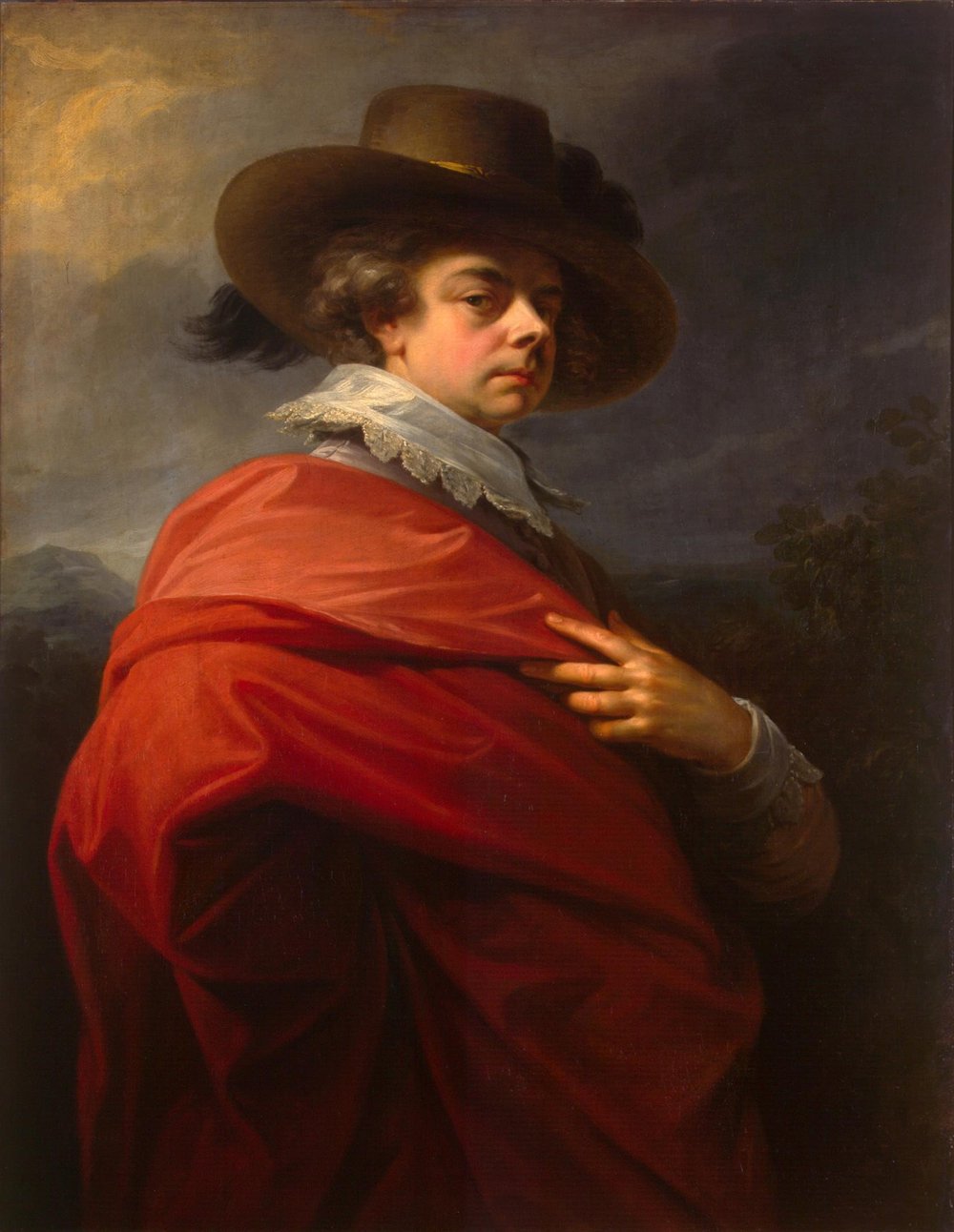
Fig. 3. Heinrich Friederich Füger, Portrait of Prince Nikolai Borisovich Yusupov, 1783, oil on canvas, 87cm x 112cm, State Hermitage Museum, St Petersburg, inventory no. ГЭ-5770.
In 1781, Füger had moved to Naples, and it was here that he was put in contact with Queen Maria Carolina (Karolina) of Naples and Sicily (1752-1814). The daughter of Francis I, Holy Roman Emperor, and sister of Marie Antoinette, this particular patron lay in the centre of an important royal European circle. He would have painted her family before as part of his work for the imperial family in Austria. He was able to create a few portraits of the sitter, including a miniature (fig.4). She was a patron of many successful artists, including Kauffman and Élisabeth Louise Vigée Le Brun (1755-1842). The former painted her in a portrait (fig.4), as well in a family portrait[13]. There are fewer similarities between the portraits completed by Kauffman and Füger of this particular patron, however the coincidence of them both painting her adds to the list of common patrons and connections that they shared.
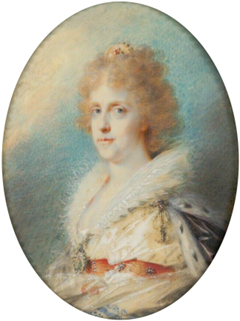
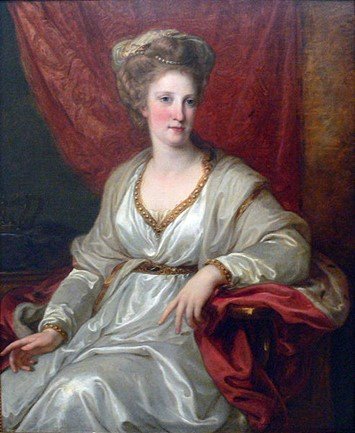
Fig. 4 [left] Heinrich Friederich Füger, Portrait of Maria Karolina, Queen of Naples, signed and dated Füger p.1790, watercolour on ivory, 17.6 cm x 13cm, Vienna, Albertina, inventory no. 30194.
Fig. 5 [right] Angelica Kauffman, Portrait of Maria Carolina of Austria, c. 1782-1783, oil on canvas Bregenz, Vorarlberg Museum.
After Italy
Just after painting Prince Yusupov, Füger returned to Vienna. Here, he was able to continue his successful career and remained connected to well-off patrons. These included Admiral Horatio Nelson, whom he painted numerous times. Füger also painted Nelson’s mistress, Emma Hamilton, when she returned home from Naples. Hamilton was well-painted, and her life alone would require its own post (watch this space…). However, she again was connected to Füger through different people, being mentioned in Goethe’s works, and having been painted by Kauffman[14].
It was at this point in his life that Füger was able to truly move away from being the student, and into being the teacher. He was appointed at the Academy of Fine arts in the same year that he returned to the Austrian capital, 1783, and soon settled down to start a family with actress Josephine Hortensia Müller. The remaining years of Füger’s life saw him move away from miniatures, especially following a diagnosis of an eye disease in 1798, a common fate for those who had spent so much time looking so closely at their miniatures. In 1806, after painting the large-scale portraits of Nelson and Hamilton he was appointed director of the Royal Academy of Pictures. He would remain in Vienna until his death, in the winter of 1818.
For Füger, travelling across Germany, Austria, and Italy had allowed him to create and maintain important connections with artists and patrons. It is through these very connections, and the paintings that resulted from them, that we are able to reconstruct a map of who he knew. What we find is that he was connected to people who are seen to many as being cultural icons today, and that the influence of these people can be traced within his art, such as his Portrait of Portrait of Count Joseph Johann von Fries (fig.1).
[1] London, Royal Academy of Arts, Angelica Kauffman, Wednesday 28 February 2024 – Sunday 30 June 2024.
[2] Inventory no. 1951/1527. R. Keil, Wien, 2009, Heinrich Friedrich Füger (1751 - 1818). Nur wenigen ist es vergönnt das Licht der Wahrheit zu sehen, reproduced WV36, p. 206.
[3] ‘After seeing the historical pictures of Charles le Brun, he lost courage’, L. Schidlof, Graz, 1964, The Miniature in Europe in the 16th, 17th, 18th, and 19th Centuries, vol.1, p.273.
[4] In the Staatlisches Museen, Berlin,
[5] R. Keil, Wien, 2009, Heinrich Friedrich Füger (1751 - 1818). Nur wenigen ist es vergönnt das Licht der Wahrheit zu sehen, reproduced in colour, pl. 1.
[6] Keil (2009) states that the version in the Albertina, Vienna is a second version (p.37). R. Keil, Wien, 2009, Heinrich Friedrich Füger (1751 - 1818). Nur wenigen ist es vergönnt das Licht der Wahrheit zu sehen, reproduced WV24, p. 202. For another version, see online, at the Marburg Photo Archive, https://www.bildindex.de/document/obj00002611.
[7] Many of which can be found in the Albertina, Vienna.
[8] Heinrich Friederich Füger, Self Portrait in Black Shirt, c.1777, Vienna, Albertina, inventory no. 29572.
[9] R. Keil, Wien, 2009, Heinrich Friedrich Füger (1751 - 1818). Nur wenigen ist es vergönnt das Licht der Wahrheit zu sehen, p.46.
[10] Heinrich Friederich Füger, Portrait of Portrait of Count Joseph Johannn von Fries (1765-1788), c.1774-1785, Watercolour and Bodycolour on Ivory, Oval, 77mm high. Exhibited with The Limner Company X Period Portraits, online, Miniatures in May, 2024.
[11] Angelica Kauffman, Joseph Johann Graf Fries, 1787, oil on canvas, 128.5 x 102.5 cm, Vienna, Wien Museum. See online at https://artsandculture.google.com/asset/joseph-Johannn-graf-fries-angelica-angelika-kauffmann/ywH5FQ5TuXFISQ?hl=en.
[12] Goethe mentions this- ‘I frequently had the occasion to observe that the people here [around the Brenner Pass] have attached great value to peacock feathers and, indeed, to any brightly coloured feather.’ W. J. Goethe, Penguin, London, 1970, Italian Journey, p.34.
[13] Angelica Kauffman, Portrait of Ferdinand IV of Naples, and his Family, oil on canvas, 310 x 426 cm, 1783, Naples, Museo di Capodimonte, inventory no. OA 6557.
[14] Kauffman painted Hamilton on numerous occasions. One example, Portrait of Emma, Lady Hamilton as Muse of Comedy (1791), has been exhibited at the 2024 Kauffman exhibition at the Royal Academy. See https://www.royalacademy.org.uk/exhibition/angelica-kauffman.
09 Apr 2024
The Inverted Miniature: Still-life and Landscape Miniatures
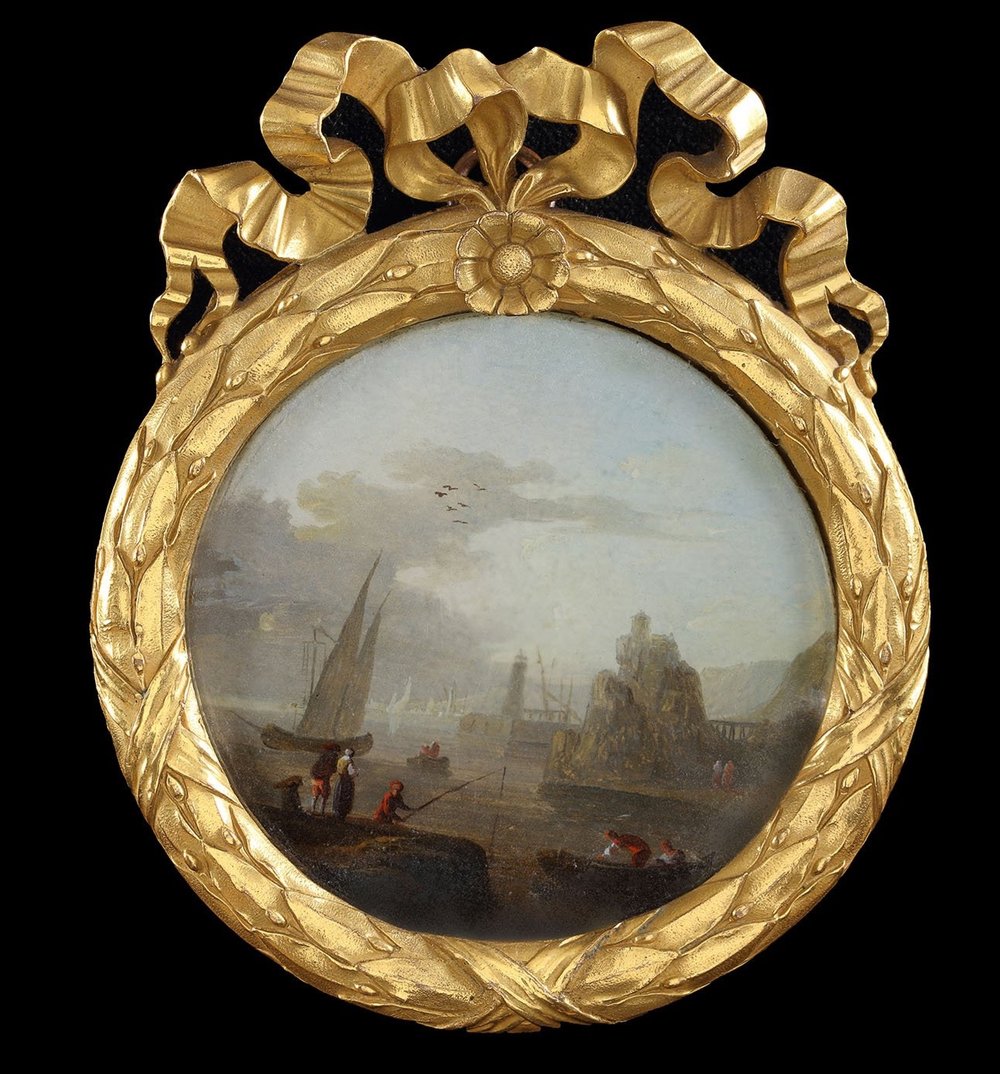
Fig 1. Unknown, Landscape, Fixé-sous-verre. The Limner Company
Still-Life
17th century Dutch still-life paintings, or Vanitas as they were often called, were symbolic works about the brevity of life and the vanity of worldly pursuits. Each object would have had a distinct iconographic symbolism with moralistic undertones. Despite being formalized as a distinct genre by the French Academy in the late 17th century, still-life painting occupied a lower rank in the hierarchy of artistic genres. The tradition of the subject matter continued to evolve through the Baroque and Rococo periods, with floral motifs permeating various forms of art and design, from paintings to curtains, furniture, and wallpaper. Among the first important publications on the subject is The Art of Painting by Claude Boutet (1739) which contains detailed instructions on how to paint draperies, flora and fauna, and most importantly, how to choose the best colours. [1]
By the late 18th century, still-life painting reached its zenith, with Gerard van Spaendonck (1746-1822) emerging as a leading figure in the genre. His influence spurred a new wave of painters and miniature painters from northern European countries and France.
Enamel in Germany
In Germany, the production of enamel in the miniature form was encouraged following the reign of Frederick the Great. In order to encourage local production, he introduced restrictions to the imports of French snuff boxes, which had become an increasingly popular import. The resulting growth of industry is reflected in the production of German porcelain factories like Messien (est. 1710), and Frankenthal (1755-1799). This pair of miniatures (figs 1 & 2) have certain stylistic elements, like the leaves, that are reminiscent of porcelain designs from the Frankenthal factory. The bright colours within the leaves and fruit in these still lives also reflect a wider development in the style of enamel in the 18th century. There could be messages behind these scenes; the bird depicted three times over the pair may be a European Goldfinch, a signifier of the Passion, often depicted next to symbols of vice, here represented by the glass of wine. Still-life paintings and miniatures also found new personifications, celebrating scientific achievements of the era. They frequently featured exotic fruits and medicinal plants reflecting the period’s growing interest in the classification of botanical specimens. [2]
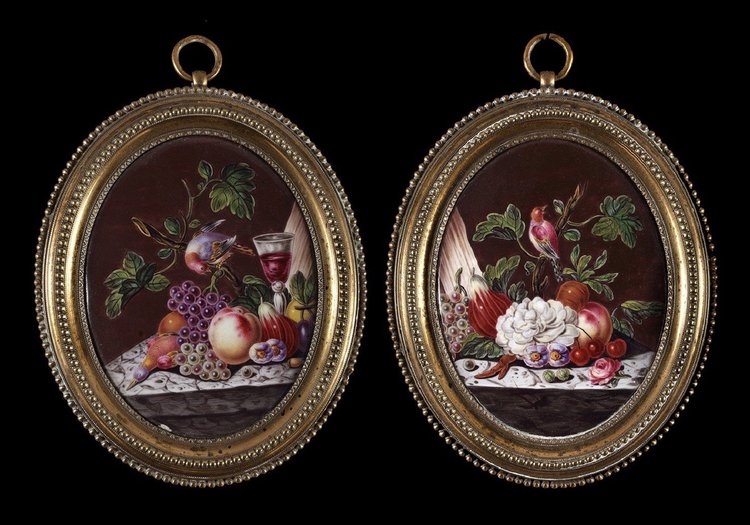
Fig. 2 German School mid-18th Century, Two Still-lives, depicting two birds with fruits, vegetables, flowers and a glass of wine. Enamel plaque. The Limner Company
Landscape
Parallel to still-lifes, miniatures of pastoral scenes, landscapes and seascapes provided artists with a canvas to showcase their skill in capturing the natural world on a diminutive scale. Despite their small size, they exuded a sense of grandeur and emotional intensity, encapsulating the sublime beauty of nature. The pastoral landscape had been a recurring motif in Dutch 17th century art, depicting a harmonious relationship between humans and nature or man and God’s bounty. [3] People were often portrayed enjoying a respite from labor amidst their picturesque surroundings, reflecting a peaceful coexistence between nature and man. [4]
The revival of these Dutch themes was profoundly influenced by the themes and style of the 19th century Romantic movement. Miniature portraits, previously characterized by an emphasis on power, dignity, and subjects of seriousness, now took on a new direction dominated by emotionality, imagination and a deep connection to nature. Seascape miniatures were particularly influenced by the Romantic period’s emotional themes, particularly the concept of the memento mori. This epoch's focus on the intensity of emotion, including the fear of death, was palpable in these miniature paintings. The personable aspect of a miniature in addition to these new subjects highlight the era’s preoccupation with human vulnerability and nature’s overpowering force. A pivotal motif of Romanticism was the portrayal of an ocean storm overwhelming egocentric man, [5] symbolizing nature’s untamable force over humanity. In this context, the divine was represented by the pure force of nature in paintings of landscapes.
Fixé-sous-verre
At the forefront of this artistic movement was the fixé-sous-verre technique. Also known as the “eludoric” method, this artistic approach has been practiced in the West since antiquity. The technique involves painting on the reverse side of a piece of glass, creating a distinctive mirror-like effect due to the reversed orientation of the artwork. Unlike traditional canvas painting or painting on vellum or ivory in miniature, where artists would typically begin with broad sketches, gradually adding details, the fixé-sous-verre painters start with the finer details and work their way towards the background. [6] This, as you can imagine, required meticulous planning, as artists must envision the entire composition from start to finish, taking into account the mirror effect that occurs during the painting process.
The technique was introduced in Venice during the Middle Ages, achieving full maturity by the Renaissance, largely due to the influence of Byzantine glassmakers on the island of Murano. These Murano glassmakers subsequently emigrated to other European cities in Italy, Austria, Germany, France and the Netherlands, spreading the fixe-sous-verre technique and adapting it to new themes and styles.
In the second half of the 18th century, Arnaud Vincent de Montpetit (1713-1800) refined the fixé-sous-verre technique, which involved creating oil paintings on fine cloth submerged in water. These paintings were then affixed to the back of an embossed glass using water-soluble glue, typically animal glue. By this point, numerous workshops drew inspiration from renowned painters like Francois Boucher, Chardin and Hubert Robert to decorate precious boxes using the fixe-sous-verre technique. These works were characterized by their meticulous craftsmanship and thematic richness, reflecting the influence of contemporary painting trends. Subjects also became bolder, not only of pastoral scenes but of still lives, landscapes or even more daring erotic scenes, seen on examples of snuff boxes. [7]
Let us now look at some of the most prominent figures in the art of painting still-life and landscape miniatures.
Giovanni Migliara (1785-1837)
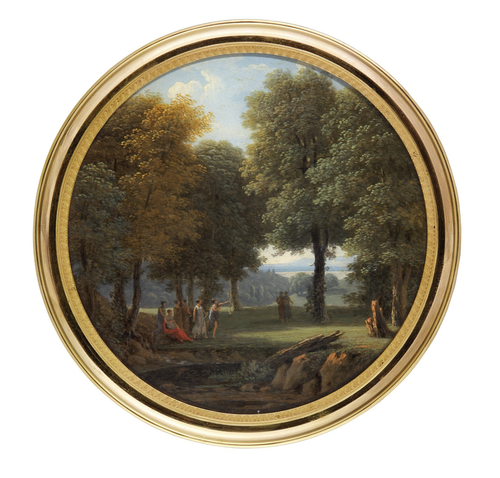
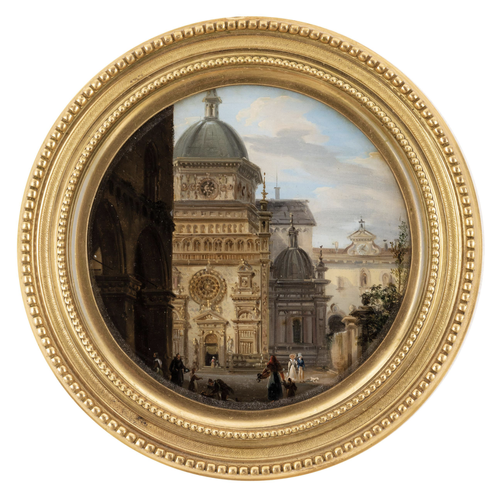
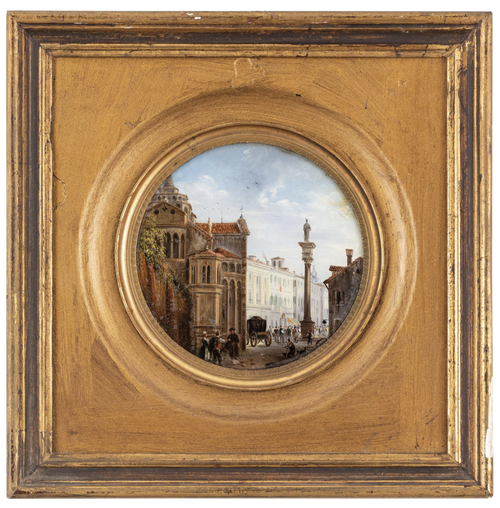
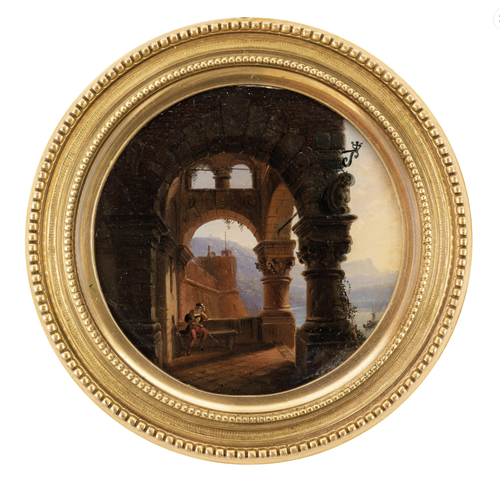
Fig. 3 Classical Landscape with Diana and her entourage, circa 1810, Fixé-sous-verre, gilt-metal mount with Alphonse Giroux trade label. Sotheby’s, December 5, 2019, Lot 329
Fig. 4 Colleoni Chapel in Bergamo, circa 1825-1830, Fixé-sous-verre. Sotheby’s, September 20, 2022.
Fig. 5 Loggia sul Lago, Fixé-sous-verre. Invaluable
Fig. 6 A glimpse of a Milanese neighbourhood, now known as the ‘Verziere’, a named derived from the market that was held here between early 18th century and 1911. Fixé-sous-verre. Invaluable.
Italian painter Giovanni Migliara initially trained in Milan under Gaspare Galliari, master scenographer and designer of La Scala and Teatro Carcano, and painter of capricci (an architectural fantasy, placing together archeological ruins and other architectural elements in fictional and fantastical combinations). Migliari later specialised in landscape painting and yet never lost his interest in set design. He continuously pushed the limits of the Venetian Veduten tradition, Italian cross-pollination cityscape/landscape paintings inspired by 17th Century Dutch artists. Vedute were reminders of personal memories, like postcards of today, pioneered by Canaletto and Guardi in the 18th century. An increasing demand for memory views in the 19th century from the Venetian bourgeoisie encouraged artist such as Migliara to paint fantastic architectural as well as neoclassical landscape miniatures.
Christiaan van Pol (1752-1813)
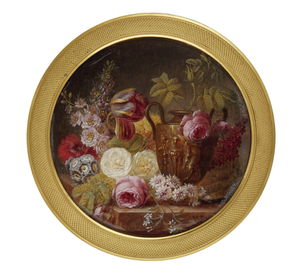
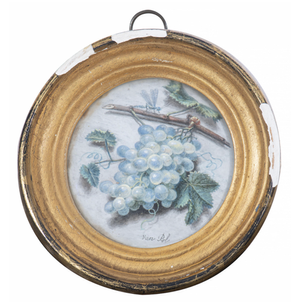
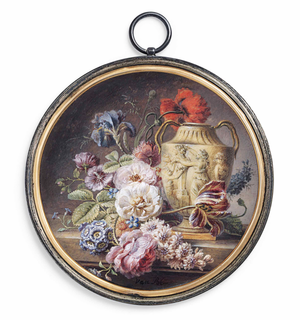
Fig. 7 Still-life with flowers and an antique urn, circa 1805, fixe-sous-verre; signed lower right. Sotheby’s
Fig. 8 Still life with a bunch of grapes and a dragonfly; watercolour on paper (miniature) ; signed 'Van Pol' (lower centre). Invaluable
Fig. 9 A floral still-life with roses, parrot tulip, anemones, forget-me-nots, peonies, an iris, poppies, delphiniums, a classical vase, on a stone ledge, signed 'Van Pol' (lower right); on ivory. Sotheby’s.
Born in Berkenrode, Christiaan van Pol likely learned to draw in the tavern town known as Dorstige Kuil. It was here that he met fellow artists Simon Foke, John Greenwood, and Jan Punt, who were all associated with the Amsterdamse Tekenacademie (the practice school of draftsmanship). Pol’s formal training, however, began in Antwerp, where he specialised in “sieraad schilderen” or decorative painting. During his time in Antwerp, he met leading still-life painters of the time, Cornelis van Spaendonck, Gerard van Spaendonck and Jan Frans van Dael. Dael and Pol became close friends, traveling together to Paris in 1782 where they collaborated on creating decorative arabesques (for the Sorbonne and the castles of Bellevue, Chantilly, and Saint-Cloud) as well as painting miniature flower arrangements on snuffbox lids. In 1791, Pol even exhibited at the Salon where the incredible quality and richness of his compositions were admired.
As the Ancien Regime came to an end, Pol joined other Dutch painters specialising in still-lifes, aligning himself with the legacy of artists like Jan van Os and Spaendonck. Like them, he sought to revive the Golden Age of Dutch painting in Pairs, heavily inspired by the works of Jan van Huysum. See beautiful examples at the Fitzwilliam Museum, Cambridge.
Anne Vallayer-Coster (1744-1818)
– Diderot, 1771
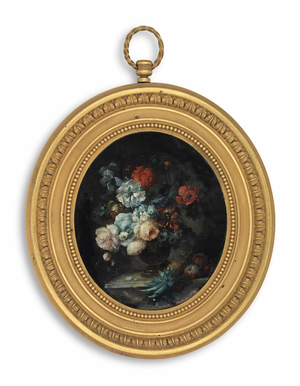
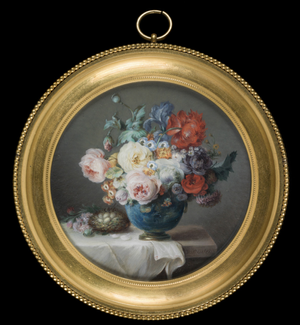
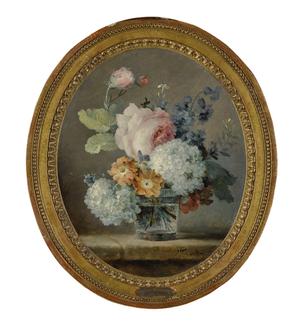
Fig. 10 A still-life of flowers in an urn on a stone ledge with peaches and a pineapple; signed 'Coste[r]' (lower right); Fixé-sous-verre. Christie’s, 26 November 2014
Fig. 11 Bouquet of roses, poppies and carnations in a vase on a ledge, oil on paper laid on cardboard; signed lower right.
Fig. 12 Still Life of roses, snowballs, peonies and hyacinths in a glass on a ledge; signed lower right; oil on canvas. This painting was in the collection of miniaturist Louis Cournerie (1820-1891). Sotheby’s, 14 October 2020.
Born into an artistic family; her father being a master goldsmith and her mother painting miniatures, Anne Vallayer-Coster was known for her exceptional skills in still-life and portraiture. By the end of her life, she produced numerous miniatures (17 according to Marianne Roland Michel’s catalogue raisonné of the artist, 1970).
She received minimal training with botanical artist Madeleine Bassporte and in painting with landscapist Claude-Joseph Vernet. At only 26 years old, Vallayer-Coster was one of four women elected into the Academie Royale, where she continued to paint a broad range of subjects. [8] It wasn’t long until Queen Marie Antoinette named her Painter to the Queen in 1780, gifting her with her own quarters in the Louvre. Five years later, she received a scathing review for one of her portraits from critics at the Salon, deciding then to focus her attention entirely on still-lifes, exhibiting at the Salon until 1817. Luckily, she was able to escape the French Revolution unharmed, later even selling two flower paintings to Empress Josephine in 1804. [9]
Intricately detailed, her miniatures showcase both her technical power and artistic sensibility. Often featuring floral arrangements, luxurious objects and sumptuous fruits, she was able to capture the gorgeous textures of her larger still life paintings on a much smaller scale. Her innate skill at painting with verisimilitude the soft skin of a peach, the delicacy of a flower’s petals and the glittering surfaces of gold and bronze is truly astounding, marking her as one of the most impressive still-life painters and miniaturists in history.
Gerard van Spaendonck (1746-1822)
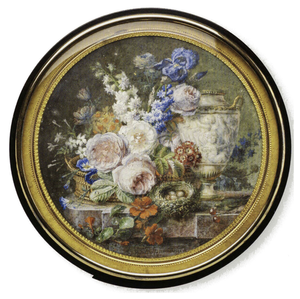
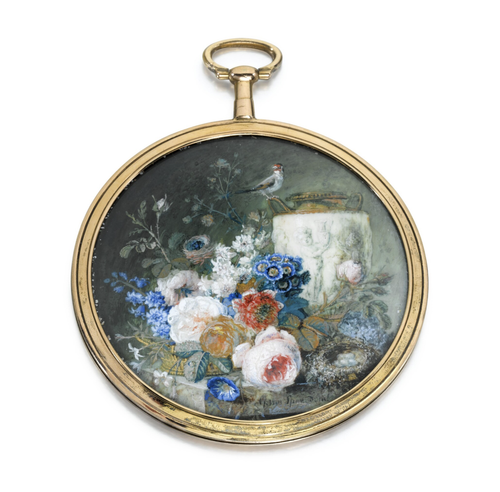
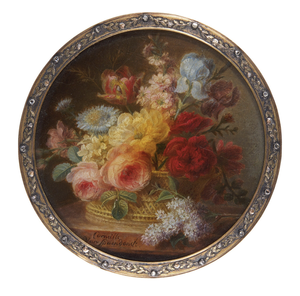
Fig. 13 Tortoiseshell Box with Miniature of a Still life with Flowers; circa 1775-1800; tortoiseshell, gouache. Noordbrabants Museum, 's-Hertogenbosch.
Fig. 14 A gold-mounted miniature of a still life painted on ivory, Gerard van Spaendonck, Paris, circa 1785. Sotheby’s 26 May, 2021, Lot 46.
Fig. 15 Cornelis van Spaendonck (1756-1840). Still Life with a basket of flowers, circa 1805, Fixé-sous-verre, two colour gold mount, set with diamonds; signed lower left. Sotheby’s, 5 December 2019.
Gerard van Spaendonck is no doubt the most famous still-life miniaturist working in the 18th century. The older brother of Corenelis van Spaendonck, (Fig.15), an accomplished artist in his own right, he began his training with decorative painter Willem Jacob Herreyns in Antwerp. Shortly after his arrival to Paris from Flanders in 1769, Spaendonck attracted prestigious commissions from the newly crowned French monarch and his brother, the Comte d’Artois, appointed miniature painter to Louis XVI a mere five years later.
In 1780, he became an official member of the Academie des Beaux-Arts where he mentored future botanical pioneers Pierre-Joseph Redoute (1759-1840) and Henriette Vincent (1786-1834). A loved professor, devoted scholar and popular painter, he was awarded the Legion d’Honneur by Napoleon Bonaparte in 1804.
Spaendonck’s extensive book on botanicals Fleurs Dessinees d’Apres Nature (1801) comprises numerous engravings for students of floral painting, and has become one of the most treasured books on floral art to this day. This careful study of botanicals is evident in Spaendonck’s still-life paintings. The finesse of Spaendonck’s brushwork is even more evident in his miniatures, where his striking textural contrasts and brilliance of colours are beautifully displayed.
[1] The art of painting in miniature : teaching the speedy and perfect acquisition of that art without a master : by rules so easy, and in method so natural as to render this charming accomplishment universally attainable ... translated from the original French. Claude Boutet, 35.
[2] Miniature Painting in Eighteenth-Century England: The Case of William Pether (1739–1821)
[3] 19th Century Miniature Landscape and Seascapes - Kathleen C. Paul 2017
[4] Dutch painters began to produce a new view, one of the here and now – the world as experienced by real people. Painting in the Dutch Golden Age, National Gallery of Art, 2007
[5] 19th Century Miniature Landscape and Seascapes - Kathleen C. Paul 2017
[6] Le fixé sous verre: l’art de la peinture inversée, La Magazine de Proantic, 2014
[7] Bonhams, London, 21 November 2012, lot 25.
[8] Some have suggested Alexander Roslin, Swedish painter who worked for aristocratic families supported her candidacy and facilitated her introduction to Marie Antoinette. Anne Vallayer-Coster, Portrait of a Violinist, Art Bulletin of Nationalmuseum, Stockholm. See Roslin’s portrait of Anna Vallayer-Coster at Crocker Art Museum, 2016.50
[9] A still life by Anne Vallayer-Coster that was lost to scholars for two centuries: ‘The work she considered her finest’, Christie’s, 2023
05 Mar 2024
Paramount Women: Portrait Miniaturists from 16th to the 19th Century
— Ellen Creathorne Clayton, English Female Artists, 1876 —
Tracing the life stories of female painters from the 16th to even the 19th century is often rather challenging. Common hindrances include a scarcity of primary sources and the consequences of marriage, where women not only risked losing the opportunity and capability to work but also faced the potential overshadowing of their contributions by their husbands’ personal, economic or even artistic identities. In celebration of Women’s History Month, this blog aims to spotlight the often-overlooked contributions of women in the realm of portrait miniatures, shedding light on just a few women and their legacy in the world of art. Despite the remarkable talents of these women miniaturists, their achievements have been obscured by the overall historical neglect of women artists. While efforts to reclaim the importance of female artists through exhibitions and scholarly interest are underway, the scarcity of documentation on their lives and oeuvres poses a significant challenge in rewriting history. The everlastingness of a reputation hinges on the survival and accessibility of their artworks, as well as subjective assessments of their value. A reluctance persists even today in acknowledging the existence of other women painters, possibly because their existence runs counter to preconceptions of early modern society. [1]
Levina Teerlinc (1510s-1576)
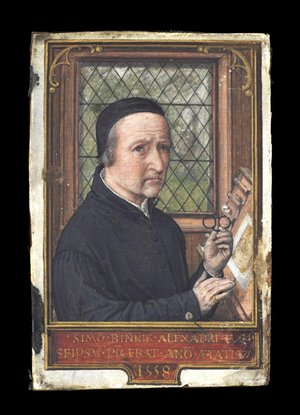
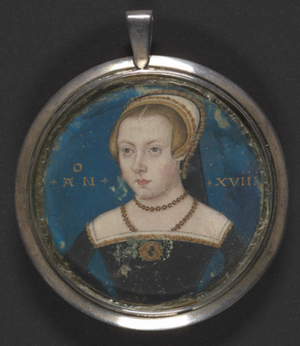
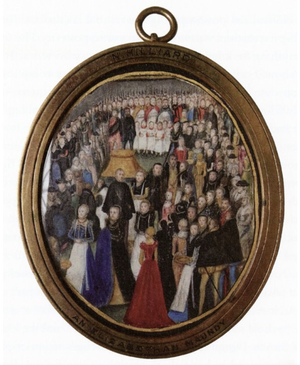
Fig. 1. Self Portrait, Simon Bening (c.1483-1561), 1558 © The Metropolitan Museum of Art. Written in gold on a red background is an inscription; “"Simon Bennik, the son of Alexander, painted this himself at the age of 75 in 1558."
Fig. 2. Princess Elizabeth Tudor, 1550-51 © Royal Collection, Windsor
Fig. 3. An Elizabethan Maundy, c.1560 - Private Collection
Levina Teerlinc was one of the most important Renaissance miniaturists who played a crucial role at the English court between Hans Holbein the Younger and Nicholas Hilliard. Born in Bruges, Teerlinc was one of five daughters of Simon Bening, a renowned Flemish illuminator and miniaturist (considered one of the last major artists in the Netherlandish tradition), and his first wife Catherine Stroo. Levina first arrived in England in 1546, appointed as the replacement limner for Lucas Hornelbolt, [2] the ‘King’s Painter’ and court miniaturist who had died two years prior. Remarkably, Henry VIII took the unprecedented step of naming Teerlinc as the ‘King’s Paintrix’, making her the first woman in Europe to hold an official artistic position at the English court. Not only was this title a monumental achievement in itself, but Teerlinc achieved considerable financial success as the court painter, surpassing even Holbein’s earnings during his tenure. Beyond her role as a court artist, Teerlinc gained prestige by serving as a gentlewoman for Mary I and as a gentlewoman of the privy chamber for Elizabeth I, recruited to the court of Henry VIII by his last wife, Katherine Parr (perhaps at the instigation of her sister Anne Herbert).
Attributing works to Teerlinc with certainty remains challenging due to the fact that she did not sign a large majority of her works. Lack of documentation has led art historians to disagree on attributions, with some suggesting that, as a gentlewoman at court, her involvement in painting may have been minimal. Mr. Foster (British Miniature Painters, p. 12) suggests that many of her miniatures were destroyed in the fire at Whitehall, and also that some of them are concealed under the name of Holbein. [3]
One of the most interesting discourses has revolved around Teerlinc’s relationship with Nicholas Hilliard. Both Roy Strong and Jim Murrell, experts in the field of 16th-century miniatures, suggest that Teerlinc actually taught Hilliard the art of limning. [4] It remains uncertain whether Teerlinc ever even crossed paths with Nicholas Hilliard, let alone collaborated with him. However, scholars have pointed to Hilliard’s initial miniature of Elizabeth, dated 1572, a period during which Teerlinc served at the queen’s court. Some have argued that the Ghent-Bruges school, where Teerlinc received early training, was inherently characterized by collaboration, and as such the ethos from this collaborative tradition stayed with Teerlinc’s entire life.
Sofonisba Anguissola (c.1531-1625)
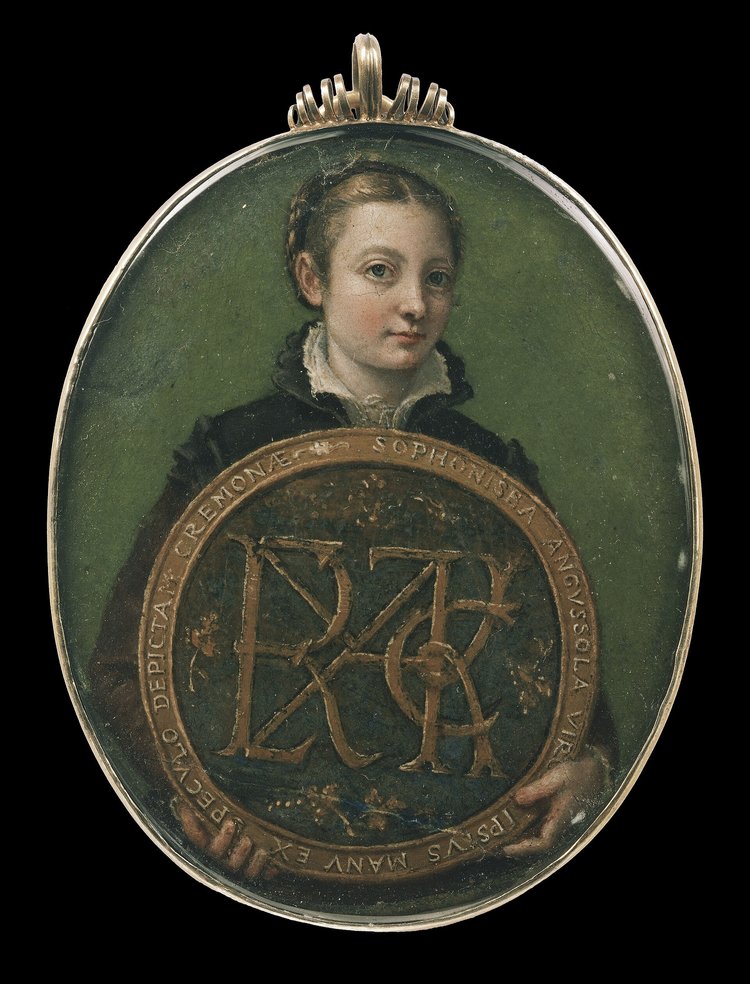
Fig. 4. Miniature Self Portrait, c.1556 © Museum of Fine Arts Boston
In the cinquencento, Sofonisba Anguissola’s self-assurance and fearlessness as a female artist were unprecedented and impressive for the time. Rather than adhering to established conventions, she continuously challenged them, distinguishing herself by exploring innovative styles of portraiture, breaking gender barriers in the male-dominated art world.
Born into a minor impoverished nobility in Cremona, Italy, Sofonisba’s career afforded her an extraordinary trajectory, ultimately becoming a lady-in-waiting to the Queen of Spain, Elizabeth de Valois. Her father, Amilcare Anguissola, recognised her artistic talents early on and encouraged her and her sisters to receive a quality education in the arts and sciences. At 14, she became a student of Bernardino Campi, a prominent painter in Cremona, before moving to Milan to study with Bernardino Gatti. At the young age of 26, she received an invitation to join the influential court of Philip II as a painter, marking the beginning of her international career.
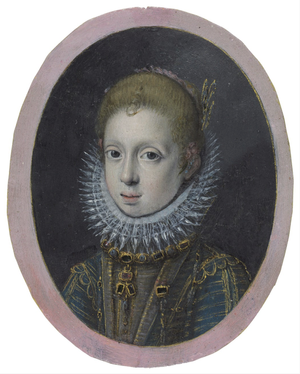
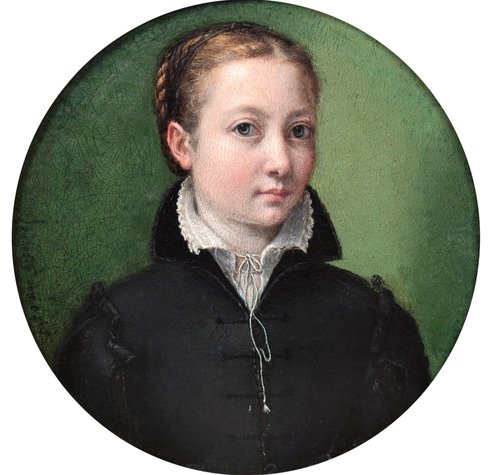
Fig. 5. Portrait of a girl from a noble family- last sold Christie’s January 2019
Fig. 6. Self portrait, c.1556, oil on panel © Fondation Custodia, Collection Frits Lugt, Paris.
Her self portraits stand out as the most captivating facets of her body of work. The most famous (for good reason) now housed at the Museum of Fine Arts, Boston, and painted around 1556, showcases her artistic prowess [fig. 8]. It is exceptional in terms of composition and meticulous technique. Dressed in the black attire that characterizes most of her self portraits, Anguissola sits against a dark green background, wielding a shield with a complex monogram – possibly containing her family motto or a reference to her father, Amilcare. [5] The Latin inscription around the rim of the medallion reads,
“The maiden Sofonisba Anguissola, depicted by her own hand, from a mirror, at Cremona”.
This miniature not only showcases Anguissola’s meticulous technique but also reflects her daring wit, and nonchalance. This self portrait, positioned almost as a manifesto, amplifies Anguissola’s strength as a revolutionary female artist, one who positioned herself at the same level as her male counterparts, if not higher. [6]
Susannah-Penelope Rosse (née Gibson) (1652-1700)
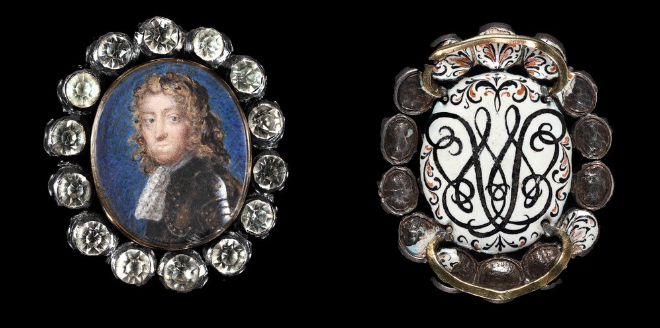
Fig. 7. Portrait miniature of a Gentleman, thought to be Edward Montagu, 1st Earl of Sandwich (1625-1672), c.1674 - The Limner Company
British painter Susannah-Penelope Rosse had an impressive lineage as the daughter of Richard Gibson, known as ‘Dwarf Gibson’. A British miniature painter and court dwarf, her father held his position during the reigns of Charles I, Charles II and William III. He also instructed the Princesses Mary and Anne, daughters of the Duke of York, in drawing. [7]
Growing up in London, Susannah-Penelope was intimately connected with the artistic milieu, forming a lasting friendship with the highly esteemed artist Samuel Cooper. In addition to her admiration for Cooper, Rosse showcased her talent by reproducing some of Mary Beale’s portraits into miniatures, a notable example being a portrait of the poet Elizabeth Singer Rowe. She painted numerous members of the court of Charles II, attaining such popularity that, in a remarkable incident in 1682, she shared a sitting with the eminent Sir Godfrey Kneller for a portrait of the ambassador from Morrocco. [8]
Much akin to the collaborative endeavours of Charles and Mary Beale, Susannah-Penelope and her husband Michael Rosse constituted a formidable professional team. Michael, raised in Covent Garden near the Beales, pursued a career as a jeweller to the crown, possibly framing many of his wife’s exquisite miniatures.
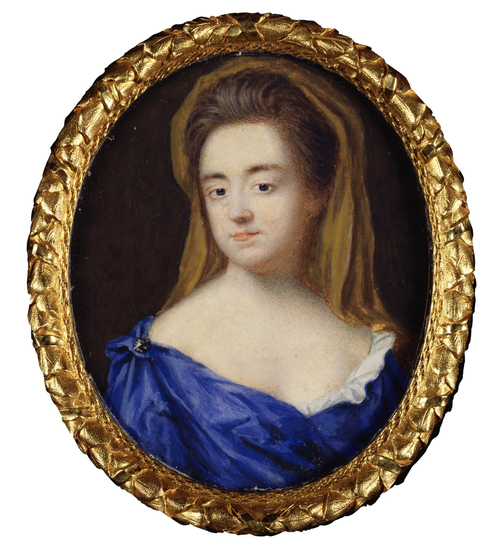
Fig. 8. Portrait of a Lady, called Sarah, Duchess of Marlborough, c.1690-95 © The Royal Collection
In the sale of Michael Rosse's collection of art in 1723, over 20 years after her death, numerous original works by Cooper and acknowledged copies of Cooper by Susannah-Penelope were found. The inclusion of unfinished works by Cooper allowed her to closely study his technique. According to George Vertue, she initially learned her craft from her father but was captivated by Cooper's artistry, dedicating herself to studying and emulating his limnings to perfection.
Rosalba Carriera (1673-1757)
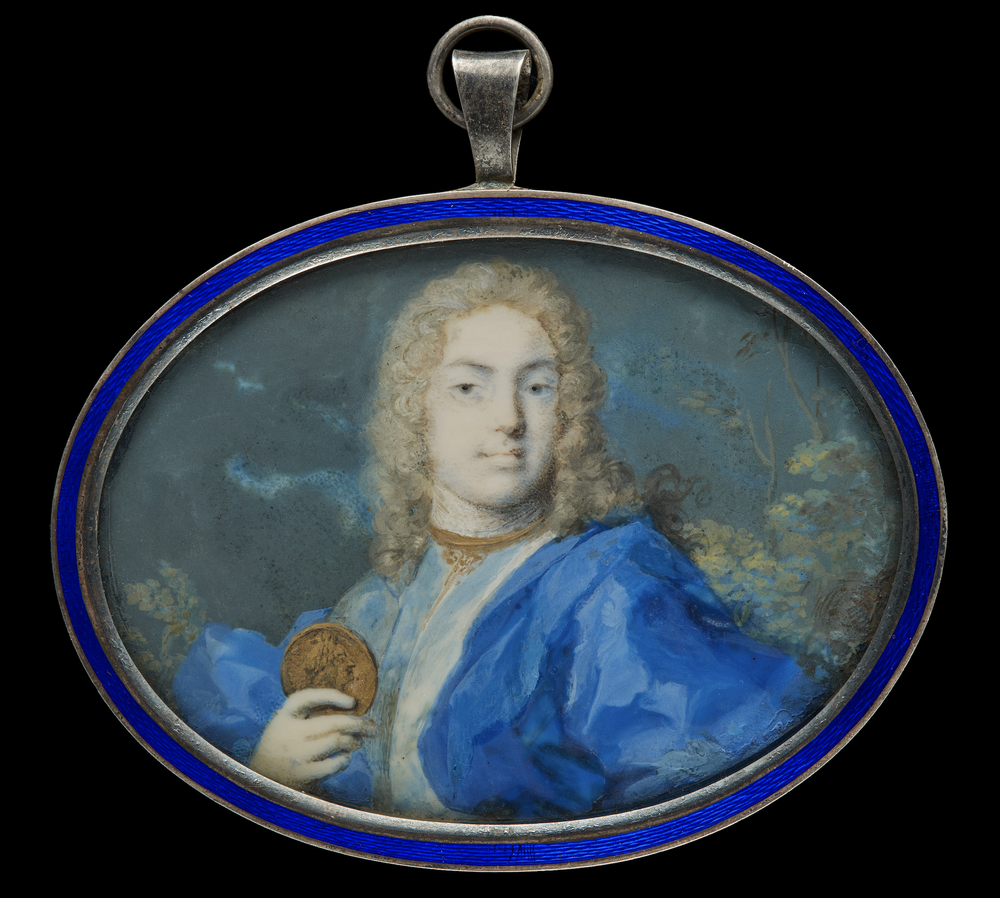
Fig. 9. Portrait miniature of a Gentleman wearing armour breastplate and blue cloak, holding the Coronation Medal of George I, c.1715 - The Limner Company
Rosalba Carriera, a legendary figure and trailblazer, emerged as one of the foremost European portrait painters during the first half of the 1700s. Born to a clerk and a lace maker, she potentially learned the craft of lace-making from her mother. A declining industry, Carriera embarked on a more profitable artistic venture in Venice, adorning snuff boxes for tourists.
By the age of 25, Rosalba earned special membership in the Academy of St Luke in Rome, being made an ‘accademico di merito’, (a title reserved for non-Roman painters), fuelled by the success of her initial miniatures and phenomenal pastel works. [9] Her exceptional talent attracted numerous foreign courts and clients, prompting some to travel specifically to Venice just for a sitting. Notably, Prince Frederick Augustus II of Saxony, later King Augustus III of Poland, sat for her in 1713, amassing a substantial collection of over 100 pastels in Dresden (to this day the largest collection of Rosalba pastels).
In 1720, encouraged by collector Pierre Crozat, she left for Paris, where her realism [10] and soft colors, integrated into the Rococo style, captivated the French. In less than one year, she received 36 commissions, producing over 50 portraits, among them one for Louis XV as a child. [11] She began to interact with numerous French artists, notably Antoine Watteau, who honoured her with a request for one of her works. [12] Her influence significantly contributed to shaping the prevailing tastes in 18th-century France, in its graceful forms, delicate colouring and vaporous effects, so often poetic in origin. During a 6-month stint in Vienna in 1730, Rosalba found patronage in Holy Roman Emperor Charles VI, with the empress becoming her pupil as a result.
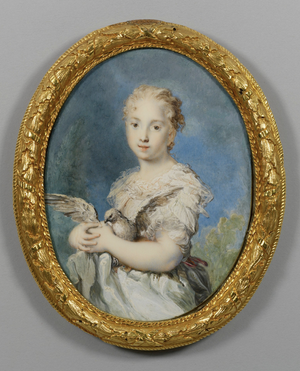
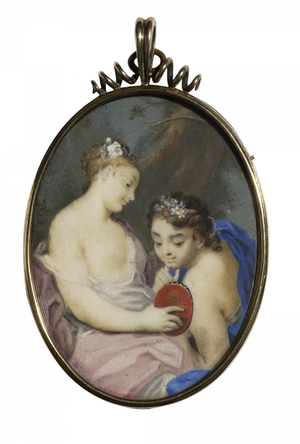
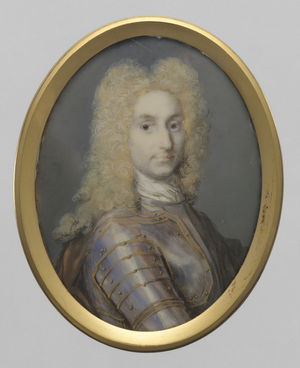
Fig. 10. Self-Portrait as 'Innocence', c.1705-1757 © The Royal Collection
Fig. 11. Rinaldo and Armida - last sold Chiswick Auctions December 2021
Fig. 12. Portrait of a Man, c.1710 © The Metropolitan Museum of Art
It is widely regarded that Carriera developed the art of painting miniatures on ivory, in place of the conventional vellum (animal skin). Her innovative technique, known as ‘fondelli’, involved watercolour on ivory, mimicking the delicate allure and softness of her pastels. Unlike more traditional methods, she painted miniatures with brushes and strokes rather than with a needle, one point at a time. [13]
At only 30 years old, she had established a successful studio for miniature portraits and mythological scenes on ivory. Despite her international acclaim, her eyesight began to deteriorate in the 1740s, and by the 1750s, she had almost completely lost her sight. Unmarried, she passed away at 84, leaving an estate ten times larger than the renowned Venetian painter of the time, Canaletto.
Penelope Carwardine (1730-1801)
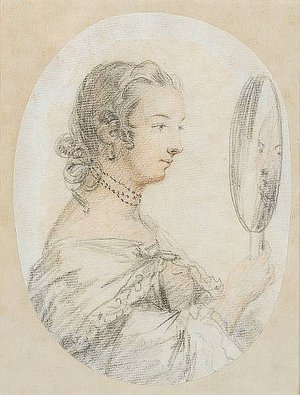
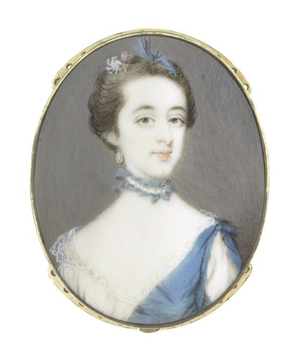
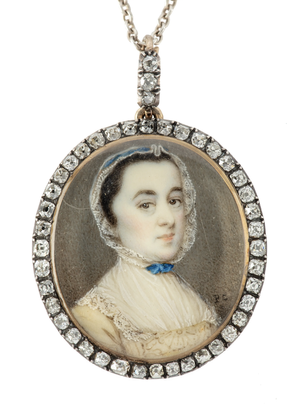
Fig. 13. Portrait of a Lady looking in a mirror - Karen Taylor Fine Art
Fig. 14. A Lady, wearing white chemise - last sold Bonhams November 2014
Fig. 15. Portrait of a Lady - Rosebery’s London, previously in private collection
Penelope Carwardine was one of eight children born to John Carwardine and Anne Bullock. Her mother was also a miniature painter, and together, they showcased their miniatures at the Incorporated Society of Artists in London in 1761 and 1762 under the name Mrs Thomas Carwardine (Anne).
The family faced financial challenges due to John Carwardine’s mismanagement of the family estates, and Penelope turned to miniature painting as a means to support her family. She exhibited her work at the Society of Artists, marking her independence foray into the art scene. Some scholars have suggested suggest that she ceased her artistic pursuits after marrying James Butler in 1763. Despite this claim, evidence from the Society of Artists indicates that some of her works were exhibited as late as 1772. [14]
According to Dictionary of National Biography and other historical sources, she received instruction in miniature painting from Ozias Humphry, [15] mastering the art by 1754. However, there is much discrepancy in timeliness, as Humphry was not born until 1742. This raises the question and possibility that historical sources may have conflated details, and it could be that Humphry was actually a pupil of Carwardine. Nevertheless, she aligned herself with the Modest School of English miniaturists, [16] a group that included notable artists such as Peter Paul Lens and Gervase Spencer.
Carwardine enjoyed a close friendship with both Sir Joshua Reynolds and Frances Reynolds, with Joshua Reynolds even painting a portrait of one of her sisters as a gift. Many of her miniatures remained within her family’s possession until 1887, along with three portraits of Carwardine: one by Thomas Bardwell in 1750, another by a Chinese artist around 1756, and the third by George Romney in circa 1790.
Anne Mee (née Foldsone) (1770-1851)
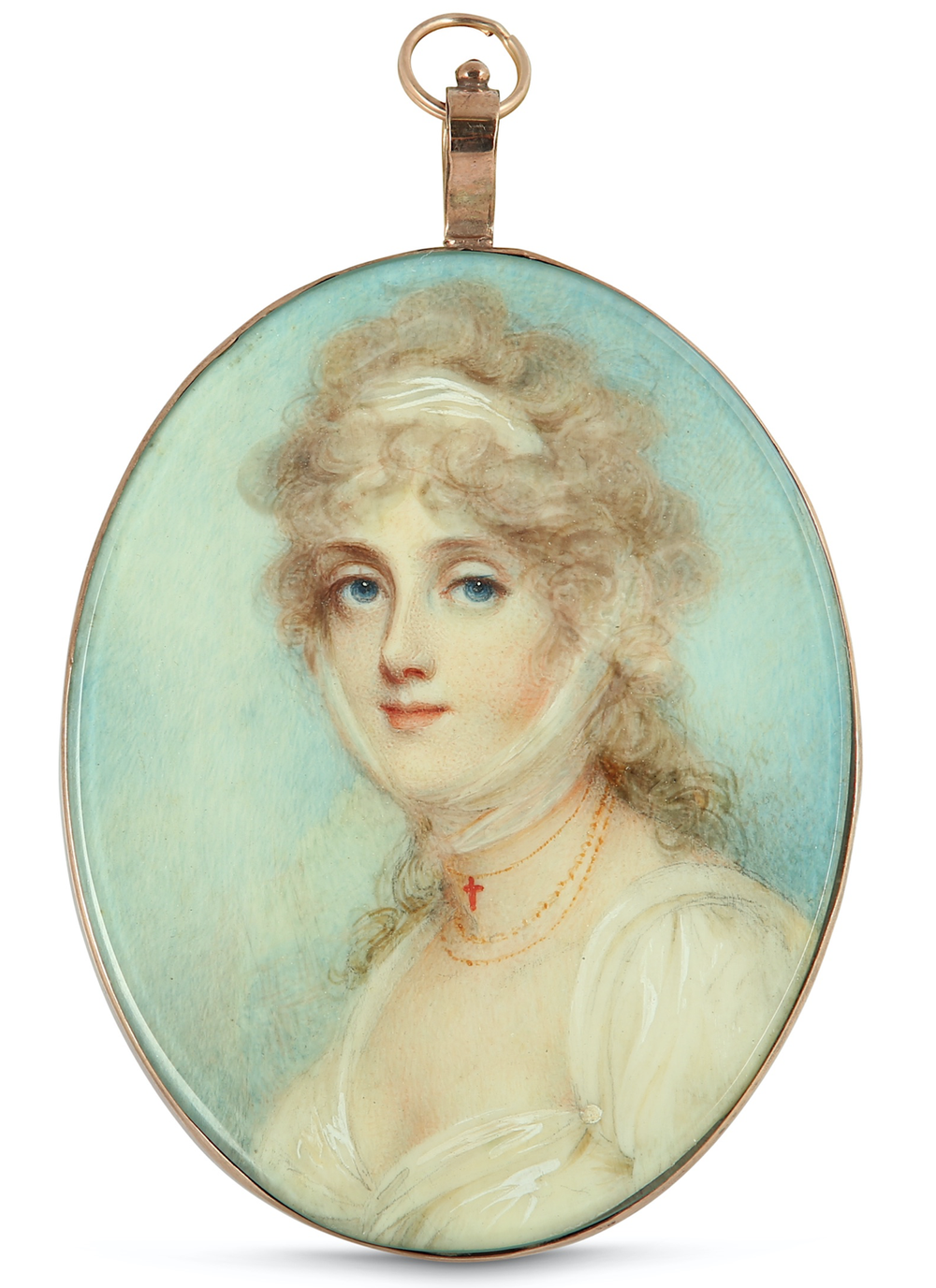
Fig. 16. Lady Isabel Anne Dashwood (1772-1858), c.1793 - last sold Chiswick Auctions, March 2020
Anne Mee hailed from a family with financial constraints, and financial worries would endure throughout her life. Anne’s father, John Folstone, a copyist of pictures, [17] exhibited at the Society of Artists of Great Britain from 1769-70 and at the Royal Academy from 1771 to 1783, specialising in small portraits, often executed at the sitter’s location.
Anne’s father passed away early in her life, leaving her as the eldest among eight siblings, and she took-up painting professionally to support her large family. Horace Walpole highlighted Anne’s familial responsibilities, noting that she worked incessantly to sustain her mother and eight siblings. He wrote in a letter,
“I have got a solution of Miss Foldsone: she has a mother and eight brothers and sisters, who make her work incessantly to maintain them, and who reckon it loss of time to them, if she finishes any pictures that are paid for beforehand—That however is so very uncommon that I should not think the family would be much the richer. I do know that Lord Carlisle paid for the portraits of his children last July and cannot get them from her-at that rate I may see you before your pictures!” [18]
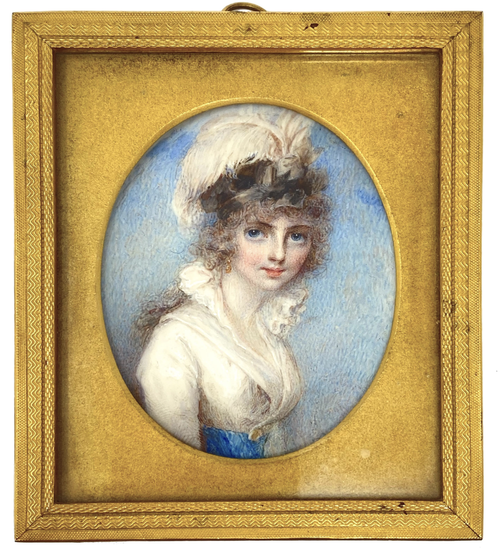
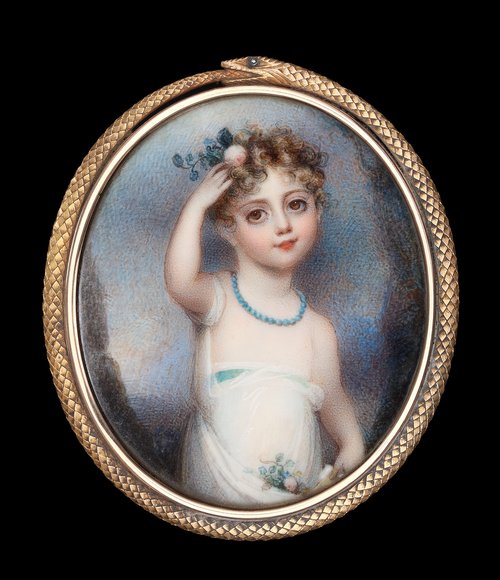
Fig. 17. Lady Louisa Atherley (1765-1851), c.1795 - last sold Olympia Auctions, November 2023
Fig. 18. Portrait miniature of a child, c.1795 - The Limner Company
Despite financial hardships, Anne received an education at Madame Pomier’s school in Bloomsbury. Displaying remarkable talent from a young age, she commenced her artistic journey at the age of 12, financed and guided by the tutelage of George Romney. Her talent was evident, and during the early 1790s, she worked at Windsor Castle under the patronage of the Prince of Wales, later George IV. Her miniatures reflected influences from artists in the Prince’s circle, notably Richard Cosway. The then Prince Regent employed Anne to paint portraits of fashionable beauties, many of which found a place at Windsor. Some of her portraits were engraved for publications like the Court Magazine and La Belle Assemblée. In 1812, she initiated a serial publication, the Gallery of Beauties of the Court of George III, which featured her own portrait at the forefront, although only one issue was released. Her portraits are often characterised by large eyes, and by 1804 she was able to ask as much as 40 guineas for a miniature.
Anne Mee’s significance lies in being one of the few professional female miniaturists in the early 19th century. Even after her marriage to Irish barrister Joseph Mee, she defied the norm of many female artists who ceased working post-marriage. However, her husband imposed restrictions, allowing her to paint only ladies without the presence of gentlemen during sittings, as noted by diarist Joseph Farington.
Madeleine Pauline Augustin (née du Cruet de Barailhon) (1781-1865)
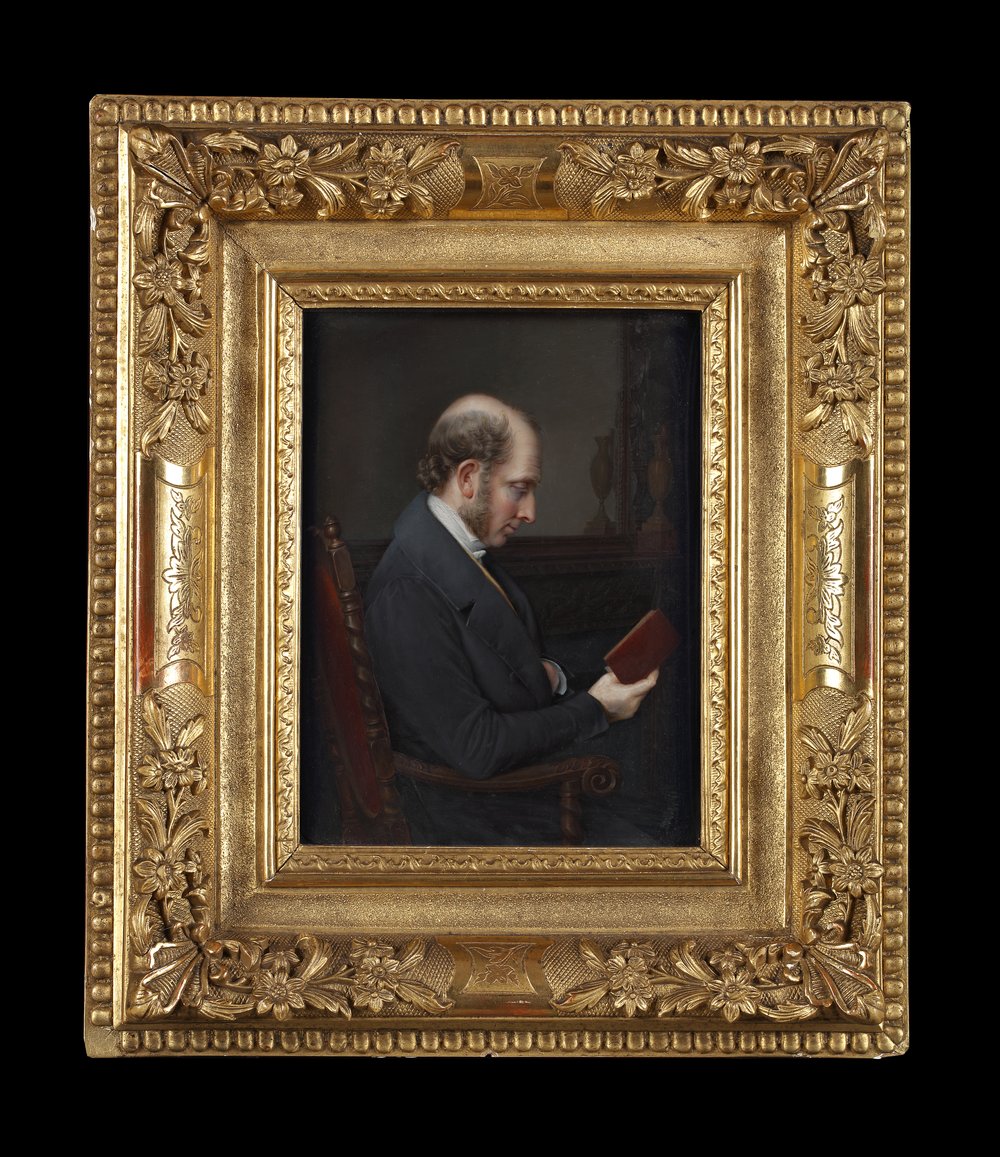
Fig. 19. Portrait miniature artist’s brother, Alexandre Nicolas Ducruet (1788-1858), seated reading next to a fireplace; circa 1830 - previously with The Limner Company. The work shown here, datable from the sitter’s costume as circa 1830, can be recognised as Alexandre by his distinct facial hair. Pauline was incredibly fond of her brother, spending a lot of time together at Pauline’s country estate Courtoiseau, painting miniatures of their entourage.
From the 16th to the 19th century, many painters’ wives engaged in miniature painting, skillfully replicating their husbands’ paintings in smaller formats, as exemplified by Madeleine Pauline Augustin.
Born in Paris in 1781, she was the daughter of Germain du Cruet, Chevalier de Barailhon, one of the numerous secretaries to King Louis XVI. Although her early education is unclear, it is believed that she studied painting with her godmother, the highly recognized 18th-century still life painter, Anne Valleyer-Coster. It was unusual in this period for women to begin their career studying with another female artist – usually a male member of the family gave instruction. In this case, her godmother must have been a source of inspiration both artistically and professionally.
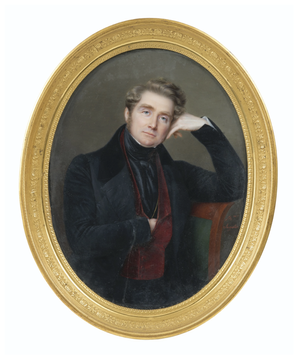
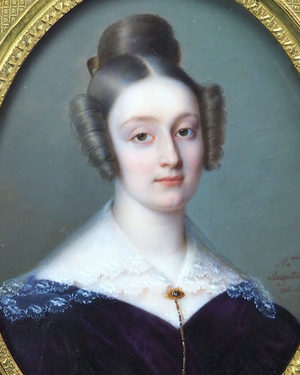
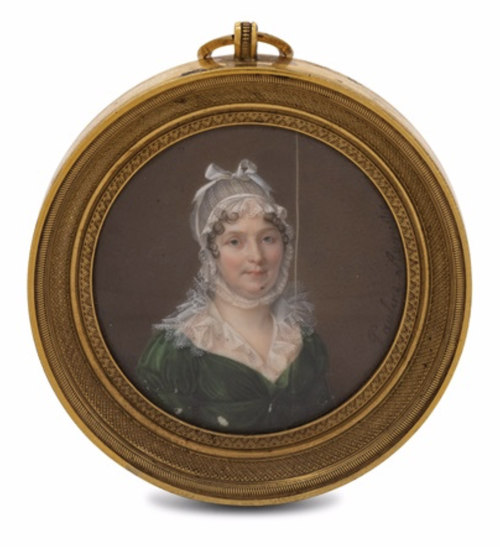
Fig. 20. Portrait of a Man, possibly a member of the Gounod family, c.1835, - last sold Sotheby’s April 2015
Fig. 21. Portrait of a Woman, 1835 © Galeries les Portraits en Miniature
Fig. 22. Portrait of a Woman - Private Collection.
In the 1790s, Pauline entered the studio of renowned miniature painter and (later in 1814) Premier Peintre of Miniatures to Louis XVIII, Jean-Baptiste Jacques Augustin. Augustin had gained tremendous notability for establishing a drawing academy that nurtured talented miniaturists, helping solidify his reputation as one of the most influential miniaturists of the late 18th century. Their relationship deepened, and in 1800, Pauline and Augustin married in Fussyny where her family had property. She was not only quickly regarded as her husband’s best pupil but was considered an important collaborator and artistic partner. Her ability to adopt her husband’s style to such a meticulous extent has made it so it is often impossible to distinguish her works from his.
Pauline was highly regarded in the Paris Salons where she started exhibiting in 1822 with miniature portraits of her husband and painter friends such as Merry-Joseph Blondel and Abel de Pujol. In 1824, she exhibited a portrait of Belgian violinist Lambert Massard which earned her a medal of the second class. She continued to exhibit regularly in the Paris Salons of 1827, 1831, 1834, 1835 and 1838. It was during this time, not much longer after her husbands’ death, that she retired to Arras until her death in 1865, surviving her husband by almost three decades. Pauline’s miniature portraits are now exhibited all over the world, from the Metropolitan Museum in New York to several European collections.
Anne Langton (1804-1893)
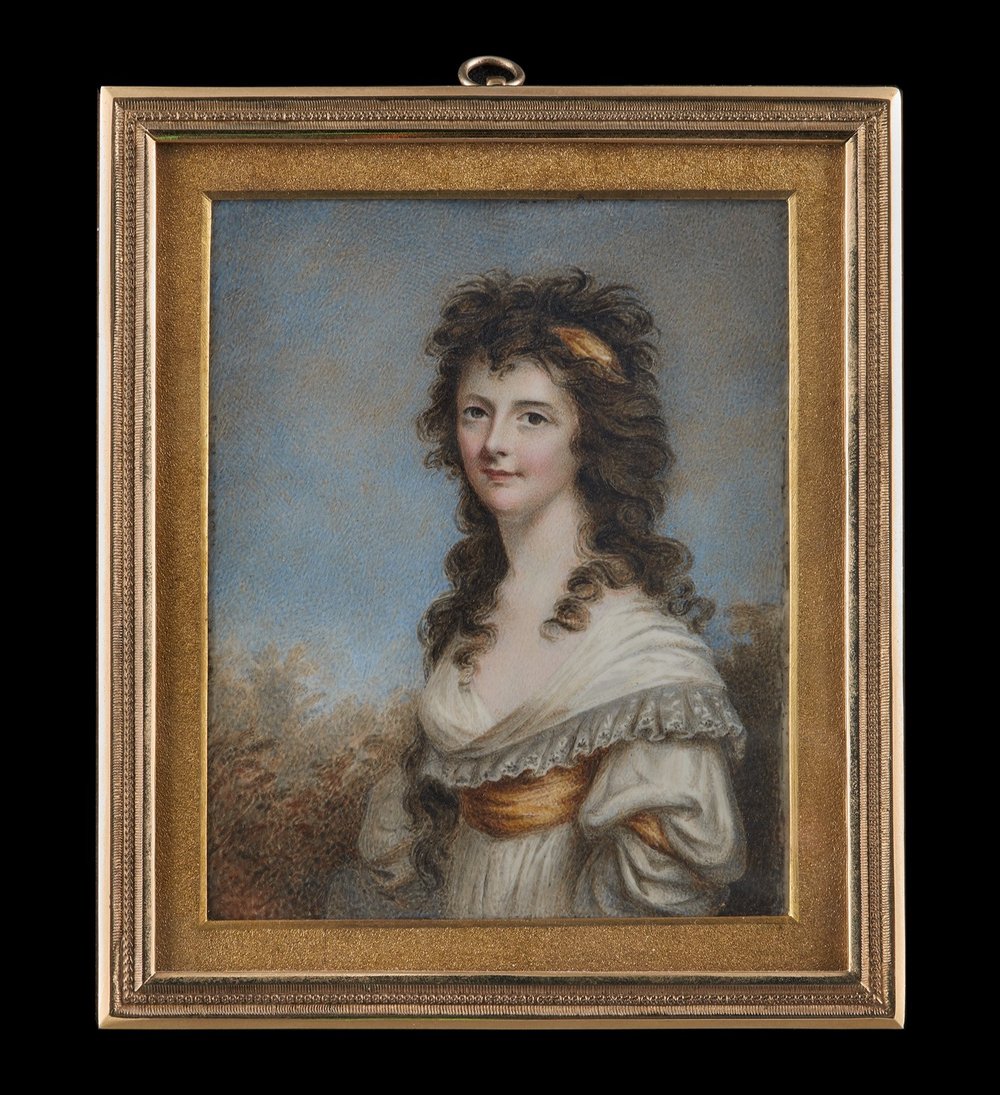
Fig. 23. Martha Walsh (née Bellingham), 1832 - The Limner Company. Although the majority of her extant portrait miniatures portray her immediate family, the sitter here can be identified as Martha Bellingham, and may have represented an important paid commission for Langton. The portrait here may have been a commission to celebrate the marriage of Martha and General Walsh, an acquaintance of Langton’s brother.
Born in England, the artist Anne Langton (1804-1893) is best known for her time in Canada, where she moved with her family in 1837. The Langtons settled on the frontier in Upper Canada, present day Ontario, where Anne recorded both the difficult and joyous times (in her drawings and written journals) within a close-knit pioneer community. [19]
At Anne’s birth, her prosperity and genteel status appeared permanent. Her father, Thomas Langton, had established himself in the hemp and flax trade and with the fortune he acquired, purchased Blythe Hall, near Ormskirk. It is within this exquisite mansion that Anne was raised. In 1815, when Anne was eleven, the family took off on a tour of the cultural centres of Europe to enhance their children’s education and awareness. Yet the collapse of the family business in 1821 abruptly ended the Langton family’s ardent pursuit of culture and learning. Blythe Hall was hastily sold, and the family moved to a small house in Liverpool, where Anne’s marriageable years were steeped in escalating poverty. Throughout the 1820’s and 1830’s, Langton grew familiar with the use of watercolour on ivory, the medium through which she created her miniature portraits. She had been introduced to this technique in Paris, and had continued to receive training under Thomas Hargreaves, R.A, a notable miniaturist working in Liverpool. Despite adversity, Anne incessantly devoted herself to art, providing testimony to her claim as an artist in her own right.
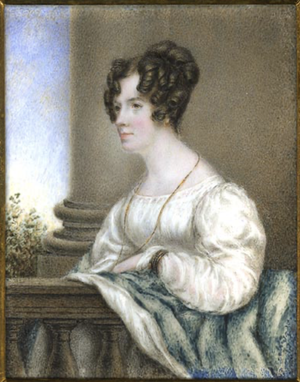
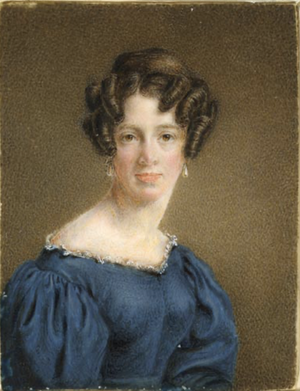
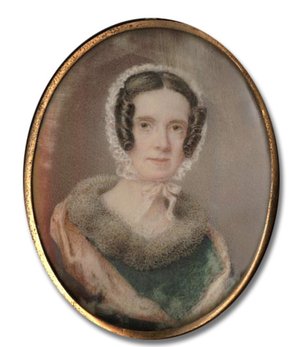
Fig. 24. Self Portrait, 1827 © Image from Archives of Ontario, REF F 1077-7-1-0-19
Fig. 25. Self Portrait, 1833 © Image from Archives of Ontario, REF F 1077-7-1-0-2
Fig. 26. Self Portrait, 1840 © Image from Archives of Ontario, REF F 1077-7-1-0-17
In 1950, one of her Canadian nephews, H. H. Langton, published an edited collection of Anne’s letters to her family and friends back in England. A Gentlewoman in Upper Canada exposes in great detail Anne’s experiences as a settler in North America, bringing her art into a broader social context. As a single woman both in England and in Canada, her letters reveal her incredible ambition and how she negotiated her roles as a gentlewoman, a colonial settler, a devoted daughter and aunt, and of course, a brilliant artist. [20] As Anne herself stated, her journals and sketches gave ‘some sort of a notion what this world of ours is like.’ [21]
Sarah Goodridge (1788-1853)
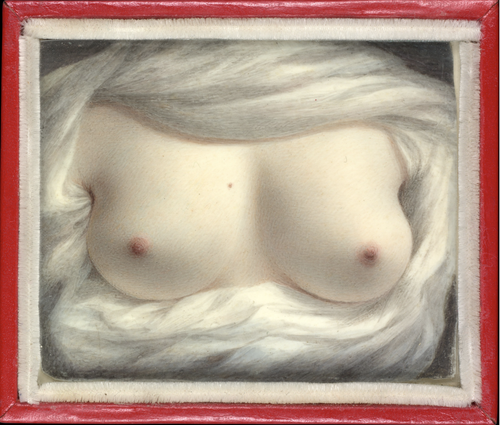
Fig. 27. ‘Beauty Revealed’, 1828 © The Metropolitan Museum of Art
To conclude this discussion on remarkable female miniaturists, let’s delve into the story of Sarah Goodridge, a fabulous woman who displayed extraordinary courage through her self portrait, now known as ‘Beauty Revealed’.
Raised as one of nine children on a Massachusetts farm, Sarah was primarily self-taught, copying pictures on her mother’s kitchen floor. [22] Seeking to sustain herself as an artist, she moved to Boston in 1820 with her sister, immersing herself in the city’s artistic milieu, studying under leading American portraitist Gilbert Stuart. Her early sketches, created on birch bark due to a lack of resources for paper, showcased her nascent talent. She gained tremendous popularity, and transitioned to specializing in ivory, producing up to three portrait miniatures weekly. Through her commissions, she supported herself but also provided for her aging mother back home. By 1820, Sarah had established her own studio, making a successful career as an unmarried female artist, defying social expectations.
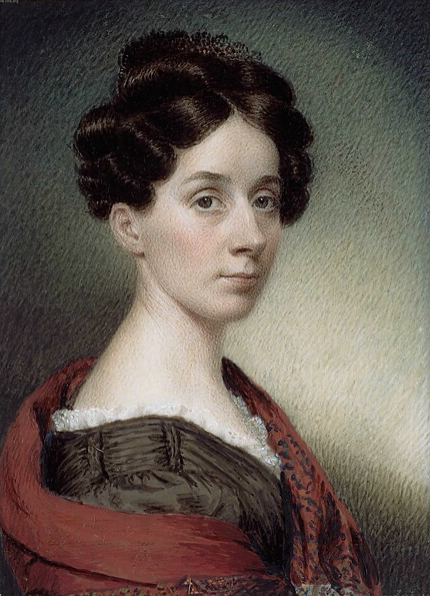
Fig. 28. Self Portrait, 1830 © Museum of Fine Arts, Boston
Sarah’s love life would inspire one of the most iconic self portraits ever created. A romantic relationship blossomed between Sarah and one of her sitters, a prominent lawyer and politician, Daniel Webster. This relationship was, however, complicated as Webster had an existing marriage and family. Their connection endured for years, with Sarah creating multiple portraits of her lover, tirelessly exchanging letters (she preserved his letters to her, while he, more mindful of his reputation, destroyed hers.)
Following the death of Webster’s first wife in 1828, Sarah most likely hoped for a change in their relationship. In a bold move, she painted a unique miniature, deviating from the prevalent trend of exchanging lover’s eyes or lips in miniatures. Instead, she presented an intimate yet audacious glimpse of her bared breasts, perhaps an allusion to her heart as well. [23] Daniel, known as ‘Black Dan’, had political and societal ambitions, and as such wanted to marry a woman of high advantage and status as opposed to an artist, marrying Caroline LeRoy in 1829. Despite Sarah’s unrequited love (at least legally), Daniel’s feelings for the young artist were profound. After his death in 1852, his children discovered Sarah’s suggestive miniature in his pocket, perhaps proof of his deep affections towards her all along.
[1] Linda Nochlin, Why Have There Been No Great Women Artists?
[2] Hornebolt’s daughter, Susannah Hornebolt, was also an exquisite illuminator. Albrecht Durer in meeting her father noted in his diary “Master Gerard, illuminator, has a young daughter about eighteen years of age; her name is Susannah; she had made a coloured drawing of Our Saviour, for which I gave her a florin; it is wonderful that a female should be able to do such work.” Ellen C. Clayton, English Female Artists, pg 6
[3] Simone Bergmans. “The Miniatures of Levina Teerling.” The Burlington Magazine for Connoisseurs 64, no. 374 (1934): 232–36. pg 232
[4] Ibid.,
[5] Art historian Patrizia Costa suggests the monogram might contain a coded family motto.
[6] Unfolding the Overlapping Bodies: An Analysis of Sofonisba Anguissola’s Self- Portrait Miniature in Boston as a Feminist Manifesto, pg 65
[7] Ellen C. Clayton, English Female Artists, pg 57
[8] Ibid.,
[9] The connoisseur Christopher Cole, secretary to Joseph Smith, English consul to Venice, introduced her to the medium of pastel in 1703.
[10] Rosalba Carriera. “A Young Lady with a Parrot, c. 1730.” Art Institute of Chicago Museum Studies 26, no. 1 (2000): 30–93. pg 8. She enhanced but never obscured the actual appearance of her sitters. In contrast, her allegorical types are often quite generalized.
[11] Sani, Bernardina. “Rosalba Carriera’s ‘Young Lady with a Parrot.’” Art Institute of Chicago Museum Studies 17, no. 1 (1991): 75–95. pg 75
[12] Ibid.,
[13] In her pastels as well, she was considered by her contemporaries as innovative in her technique. She was the first to soften figures with extensive stumping or rubbing with a cloth, which later evolved into her “dry-brush” technique by dragging the flat side of her chalk lightly over a contrasting color to suggest diaphanous materials. Rosalba Carriera. “A Young Lady with a Parrot, c. 1730.” Art Institute of Chicago Museum Studies 26, no. 1 (2000): 30–93. pg 8
[14] Algernon Graves, The Society of artists of Great Britain, 1760-1791; the Free society of artists, 1761-1783 ; a complete dictionary of contributors and their work from the foundation of the societies to 1791, pg 53
[15] Anderson galleries, The art collections of the late Viscount Leverhulme, part two, paintings, pg 178
[16] Perfect Likeness : European and AMerican Portrait Minaitures from the Cincinnati Art Museum, pg 115
[17] Daphne Foskett, Miniatures, Dictionary and Guide, 38
[18] The Letter was sent in 1791 to Miss Berry, All Things Georgian, Anne Mee, Sarah Murden, 2015
[19] Errington, J. (2009). [Review of the book A Gentlewoman in Upper Canada: The Journals, Letters, and Art of Anne Langton]. The Canadian Historical Review 90(3), 552-553
[20] http://www.biographi.ca/en/bio/langton_anne_12E.html [accessed 07/10/2020]
[21] A Gentlewoman in Upper Canada: The Journals, Letters and Art of Anne Langton (review), Katherine M.J. McKenna [accessed 07/10/2020]
[22] According to the artist's sister Eliza, who also became a miniature painter, Sarah began studying art by reading a book on drawing and painting. https://collections.mfa.org/objects/31073
[23] Barratt, Carrie Rebora, and Lori Zabar (2010), American Portrait Miniatures in The Metropolitan Museum of Art
14 Feb 2024
Women wearing Women wearing Women: Women’s Accessories as Expressions of Female Friendship
Women, the primary owners and wearers of portrait miniatures, fueled a vast market of luxury goods, openly showcasing precious tokens as jewellery, including bracelets, necklaces, pendants, or prominently displayed on the body in completely other ways. [3] A rare 18th-century example of such bracelets (Fig. 1), painted by Arnaud Vincent de Montpetit in fixé-sous-verre [4] (fixed underglass), can be seen below. The focus here, however, is not on jewellery, an already highly researched topic which most often revolves around notions of romanticism or intimacy, and most often gifted by men. Instead, my attention will focus on female accessories, namely Étui or Nécessaire, lace-making Shuttles, and Carnet-de-bals. Excluding snuff boxes, traditionally associated with betrothal, weddings or political gifts, our focus narrows to gifts often exchanged between women.
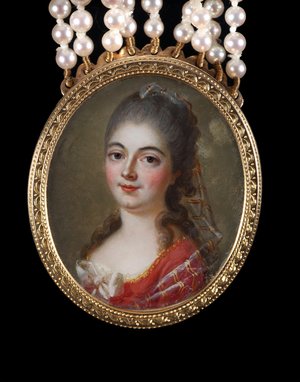
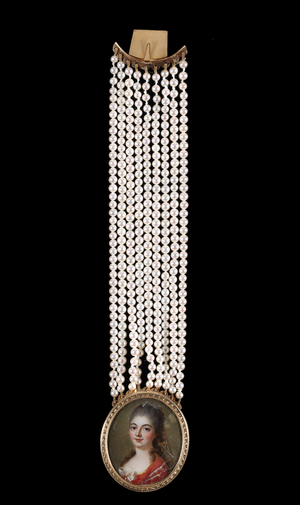
Fig 1. Arnaud Vincent de Monpetit (1713-1800), A Lady, wearing a red gown trimmed with gold, a gold-striped gauze veil in her powdered hair, Fixé-sous-verre, set into a gold bracelet clasp with pearl strand bracelet, the reverse of the clasp with four goldsmith’s marks, The Limner Company
Women seized opportunities to commission functional luxury objects with or without the incorporation of portrait miniatures of their closest female friends. Within the aristocracy, a class whose social relations relied heavily on visibility and publicity, inseparable friendships inhabited a more public arena than friendships within the bourgeoisie. [5] These objects became badges of sentiment, and the trend of exchanging accessories became the means of creating value and empowering female relationships. There has surprisingly been little to no scholarship on these fascinating objects, referred to as mere examples of female domestic social culture or simply alternative ways miniatures were set. However, material culture deeply informed and expressed female friendships, and helped create gendered and stratified social spaces and relationships. [6]
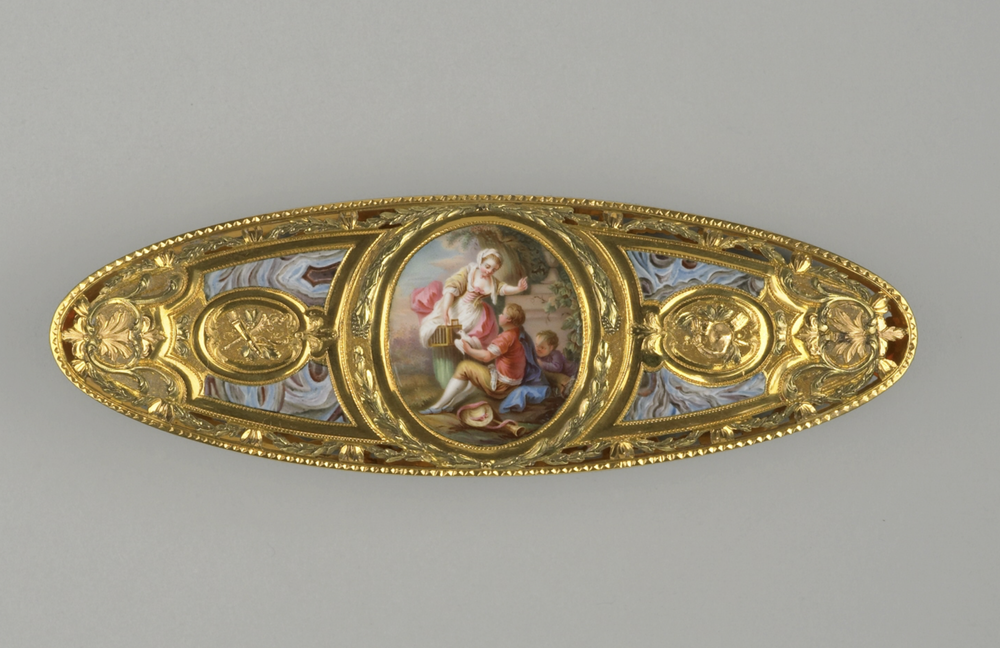
Fig 2. The most common adornment was oval medallions, most often with coats of arms but also including scenes with physiological connotations. This beautiful knotting shuttle by Jean-Joseph Barrière (1772), now in the Wallace Collection, is decorated with oval medallions of chased gold bagpipes, arrows and torches as well as a medallion of a girl with a dancing dog being watched by two boys. Embedded within a feminine accessory of luxury and pleasure, the portrayal is a reminder of her being watched.
Shuttles
The art of knotting or the creation of ornamental strings emerged as a prominent practice among upper-class women. The knotting process involved the use of a specialised tool, the knotting shuttle, allowing the user to wind thread gradually, transforming it into long strings of decorative knots. Silk thread or cord, wrapped around the shuttle, was unwound as needed to create decorative braids, forming patterns suitable for stitching onto clothing or other items. This intricate craft became a staple of the leisure activities of affluent women, who dedicated hours to meticulously crafting delicate knots with exquisitely adorned shuttles. Knotting shuttles themselves were objects of luxury, crafted from expensive materials such as tortoiseshell, crystal, mother-of-pearl, and silver. Some, like the exceptional examples below, even featured gold and delicate enamel work, amplifying the status of the woman who owned them. Despite the ornamental nature of surviving examples, adorned with landscapes or scenes of cherubs and shepherdesses rather than portrait miniatures, I use them as a starting point to explore the gift-giving market of luxury goods among women. [7]
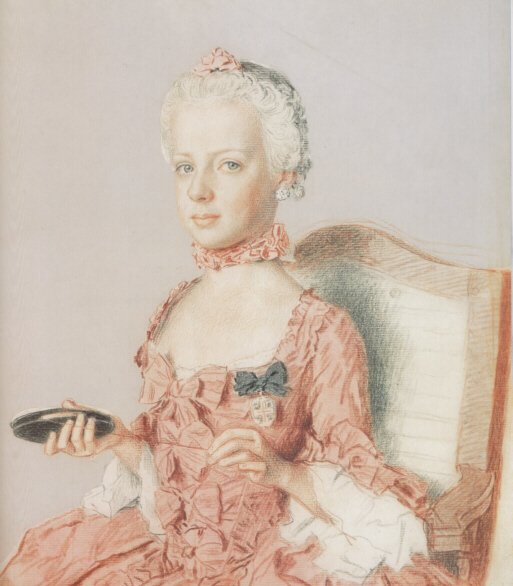
Fig. 3 Jean-Étienne Liotard (1702-1789), Archduchess Marie Antoinette of Austria (1755-1792), at age seven, holding a netting shuttle, 1762, watercolour and pastel, Musée d’Art d’Histoire de Genève
The widespread popularity of knotting during the 17th and 18th centuries positioned it as a prevalent subject in women’s portraiture from that era. More than a mere craft, knotting became a symbol of femininity and domesticity. Jean-Etienne Liotard’s portrait of Marie Antoinette (Fig. 3) in 1762 as well as Jean-Marc Nattier’s portrait of Madame Adelaide de France (Fig. 4) showcase women using a knotting shuttle, reflecting their gendered roles alongside their noble status. During this period, the notion of women returning to the private sphere was promoted; the ‘virtuous woman’ becoming synonymous with the ‘domestic woman’, regardless of her social ranking. [8] The integration of knotting shuttles into larger female portrait paintings therefore added a layer of political hype to the artwork. However, this unique approach allowed the model to resonate with the craft, transforming the shuttle into a more revealing object within the overall composition. Depictions of women with shuttles testify to the personal and special significance or function of these objects. This can be compared to portraits of women wearing portrait miniatures of their husbands, placing them forward as part of their apparel, suggesting their allegiance both to fashion and spouse. [9] A portrait of Elizabeth de la Vallée de la Roche by Michel Pierre Hubert Descours (Fig. 5), for example, shows her holding a knotting shuttle in her right hand, tightly holding its string with her left, in which she wears a portrait miniature bracelet of her husband. The portrait is a socio-political statement, underlining her role as domestic and as her husband’s biggest support.
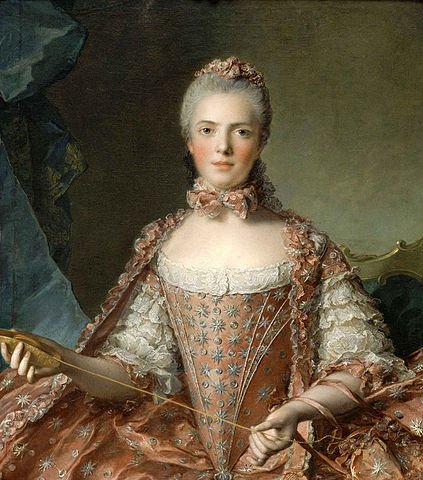
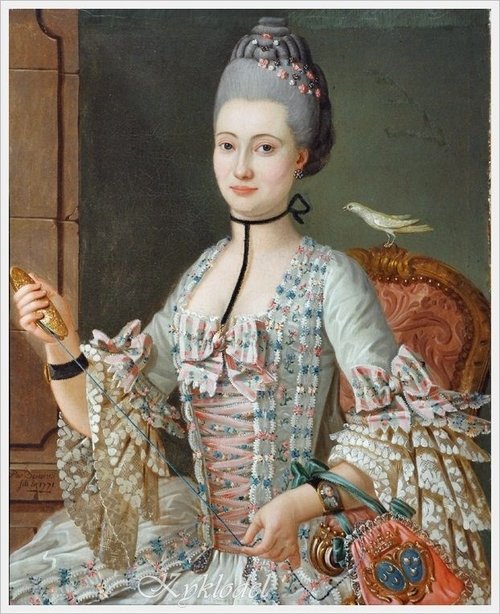
Fig. 4 Jean-Marc Nattier (1685-1766), Portrait of Madame Adélaïde de France Tying Knots, 1756, oil on canvas, Versailles
Fig. 5 Michel Pierre Hubert Descours (1741-1814), Portrait of Elizabeth de la Vallée de la Roche, 1771, The Bowes Museum
Though there may not be abundant evidence of women gifting knotting shuttles, letters and accounts from that era do mention the popularity of knotting and the exchanges of related items as gifts among women of the upper class. Jill Rappoport’s extensive book ‘Giving Women: Alliance and Exchange in Victorian Culture’ argues the importance of gift-giving in this period as a means to construct a woman’s female social network. In the act of creating and presenting these opulent objects, women ingeniously formed alliances that were built through the exchange of gifts. [10]
Étui
An Étui, more commonly known as a Nécessaire (Necessary in English), served as a compact repository for personal grooming items, including items such as a mirror, tweezers, an ear spoon, nail file, scissors, fruit knife, and scented perfume bottles. This pocket-sized assistant played a pivotal role in a well-born woman’s toilette, equipped with all the tools necessary for attending to aspects of domestic and social life. Despite a lack of scholarly attention on the commissioning and gifting of étui, recurring inscriptions strongly indicate their association with female friendship. Perhaps akin to the camaraderie observed when women collectively visit the bathroom today, these beautiful functional objects served as discreet gestures of solidarity and friendship.
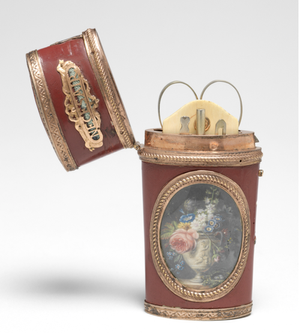
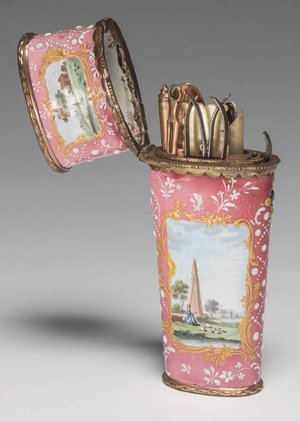
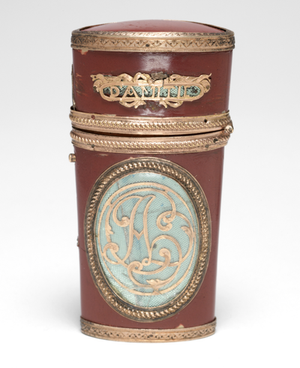
Fig. 6 Étui, French box, Miniature by Gerard van Spaendonck, circa 1766, Fitzwilliam Museum
Fig. 7 Étui, enamel on copper with gilt metal mounts; oval in section with tapering sides, decorated in colours with four pastoral vignettes on a pink ground, circa 1760s, English style, Fitzwilliam Museum
An 18th-century étui (Fig. 6), illustrated with a miniature of a two-handled stone vase carved with a cherub, containing flowers including roses, hyacinth, auricula and morning glory, next to a nest of leaves containing three eggs, all on a marble slab, exemplifies the intricate craftsmanship of these items. On either side of the hinged lid is an inscription bearing the words “Necesair” and “D’amitié”. The gold openwork inscription cleverly plays with words, translating to “Nécessaire (as in the object) of Friendship” or a “Necessary Friendship”, suggesting the significance of these étui as tokens of companionship among women. Similarly, in the Isabella Gardner Museum, an etui (Fig. 8) bears the inscription “Souvenir D'Amitié”, (Memory of Friendship) reinforcing again the notion that these ornate yet functional accessories were often exchanged as meaningful gifts between women.
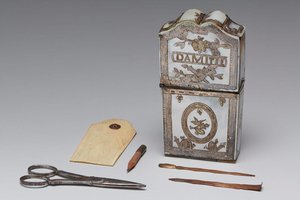
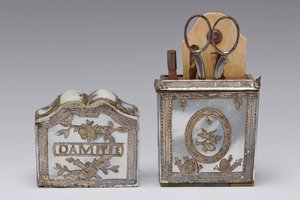
Fig. 8 Étui, Paper with silver, brass, and mother-of-pearl veneer, late 18th Century, French, Isabella Gardner Museum
In the British Museum, an 18th-century enamelled étui vertical box adorned with flowers features portraits of a young woman and man, likely siblings rather than romantic partners. This particular example presents a challenge in determining the gift giver. The étui has not been evidenced in betrothal gift-giving culture, therefore my own speculation is that it may have been owned by the mother and/or given to her daughter, making the étui a gift representing the next chapter of a woman in womanhood.
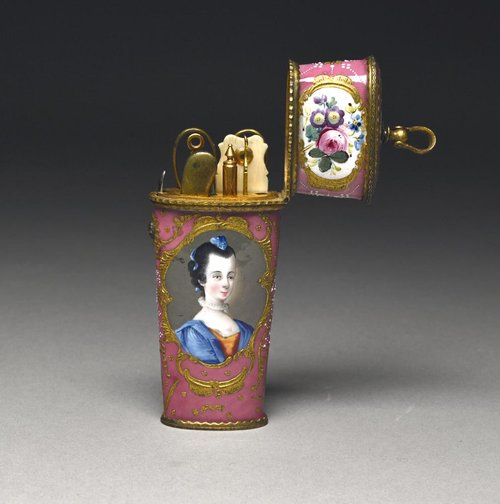
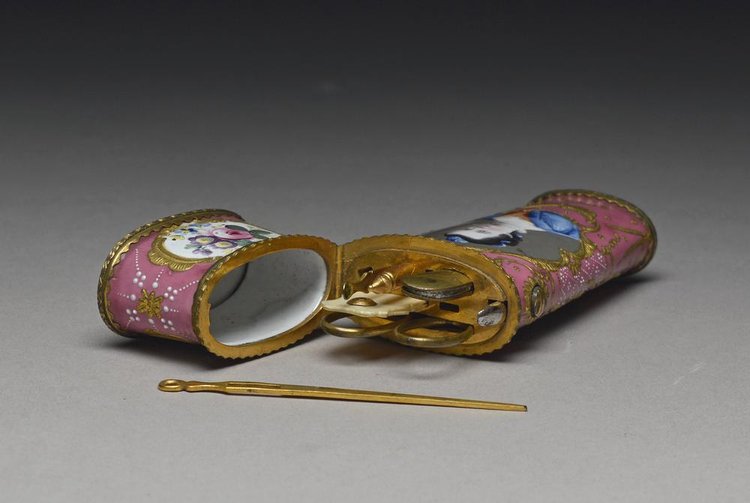
Fig. 9 Etui, enamel bust of a young man and woman; flowers on lid, 18th Century, The British Museum
Carnet-de-Bal
This brings us to the most common female accessory exchanged by and to women, which best exemplifies the notion of Women wearing Women; the carnet-de-bal.
Originating in early 18th-century Europe, particularly in Paris, the powerhouse hub of luxury goods production, the carnet-de-bal epitomised the pinnacle of collaborative luxury craftsmanship, featuring brilliant enamelling, intricate gold inscriptions and jewels. Often referred to as Souvenir, it emerged as a quintessential upper-class female accessory exchanged among women during the 18th century. The carnet-de-bal, more commonly known as the Dance Card in English, held both practical and symbolic significance, embodying both elegance and functionality. It was essentially a thin rectangular box with a hinged lid which could seamlessly fit ivory sheets and a stylus for writing. Roger Hourant’s research on the use of carnet-de-bal sheds light on its practical significance, documenting various dances and the etiquette surrounding invitations. The ivory tablets within the carnets were used by single ladies to meticulously record the order of the evening’s dances and promised partners, serving as a cherished mementos of social engagements and camaraderie.

Fig. 10 Carnet-de-Bal, with built-in clock, gold/enamel with diamonds, France, circa 1830. Provenance: Fondation Napoleon
An exceptional example of this artistry is a carnet adorned with an integrated watch, (Fig. 10) a rarity among dance card cases. This particular piece, once part of the Foundation Napoleon collection, boasts blue engine-turned enamel, an oval ivory miniature portrait surrounded by rose-cut diamonds, and a watch with an oval form movement and cylinder escapement. The inscriptions “Souvenir” on the front and “d’Amitié” on the back, both completely set with diamonds, elevate this piece to an extraordinary level of craftsmanship but more importantly exemplifies the epitome of luxury offerings in aristocratic society.
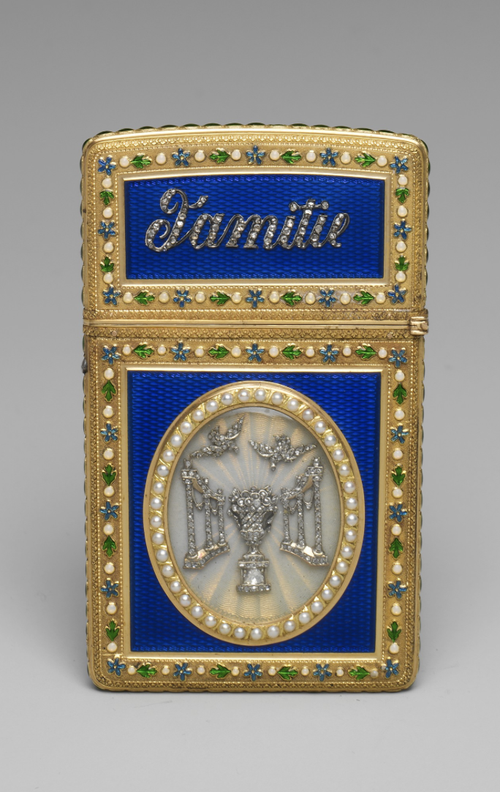
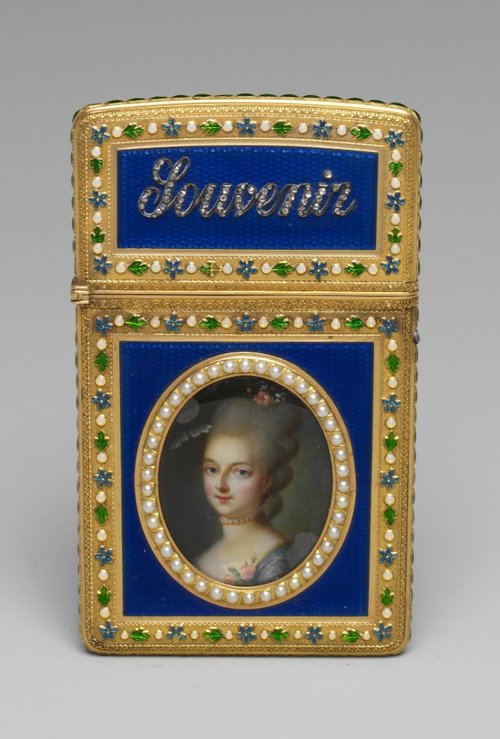
Fig. 11 Souvenir, gold, diamonds, pearls, enamel and ivory, French, 1776-7, Metropolitan Museum of Art
Other luxurious examples of carnet-de-bals, such as the one housed in the Metropolitan Museum in New York (Fig. 11) epitomise opulence with their gold construction, diamond-studded inscriptions and exquisite enamel work. Although the identity of the portrayed woman and artist remains unknown, the lavishness of such gifts suggests their esteemed value and significance within upper class female social circles. Other more common and less opulent examples which feature miniatures, by artists such as C. de Roy, Nadine Vallin and Louis Marie Sicardi, [11] further underscore the artistry and allure of these unique treasures, which captivated the hearts of recipients and collectors alike.
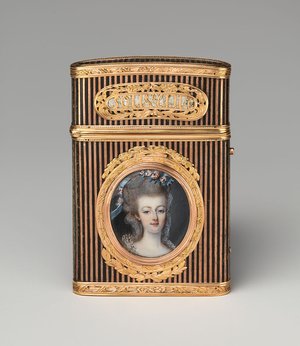
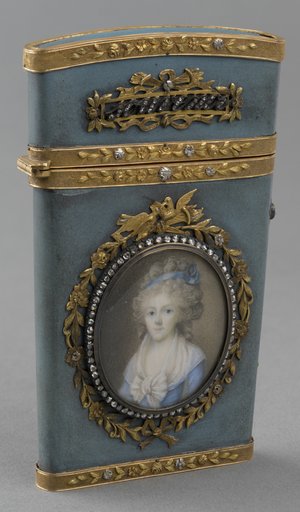
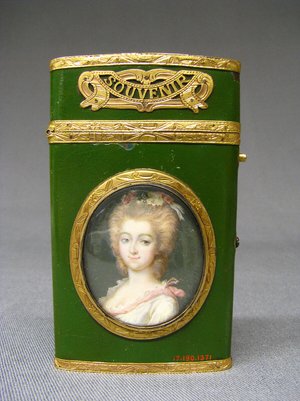
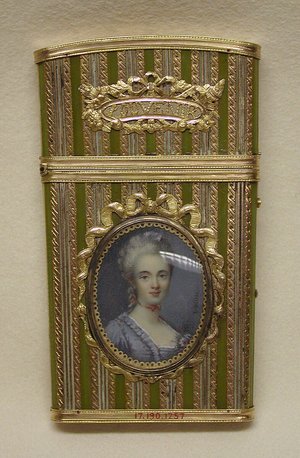
Fig. 12 Souvenir, Miniature attributed to Louis Marie Sicardi, 1770, gold, tortoiseshell, ivory, Metropolitan Museum
Fig. 13 Carnet-de-bal with miniatures of an unknown lady, circa 1790-95, enamel, gold, diamonds, ivory, Royal Collection
Fig. 14 Carnet-de-bal, miniature by C. de Roy, 1773-4, gold, ivory, Metropolitan Museum
Fig. 15 Souvenir, Miniature by Nadine Wallin (active 1787-1813), circa 1789, gold, lacquer, ivory, Metropolitan Museum
While I have emphasised the carnet as predominantly associated with women, there are examples which include a miniature portrait of a man. This particular example (Fig. 16) implies its potential as a gift from a man, possibly a secret lover. Attributed to Louis Cousin, [13] it first seems like an ordinary carnet, with aubergine guilloché enamel background and ivory frames decorated with allegorical scenes. However, it features a secret mechanism; the front panel slides out to unveil a hidden miniature portrait of a man. Despite the inscription “Souvenir D'Amitié”, it is probable that the man bestowed this carnet upon the woman who owned it. However, the narrative that a best girlfriend would offer such a risqué gift is more intriguing. A comparable item is an oval-shaped snuff box crafted in Dresden in 1775, now housed in the Wallace Collection. [14] This box also conceals a secret slide that, when drawn out, reveals a portrait of Voltaire on one side and his mistress Emilie, Marquise du Chatelet on the other. Unfortunately, research has determined that the miniatures were made later, the box never belonging to Voltaire, as it was made 25 years after Emilie’s death and when Voltaire was much older. Nevertheless, hidden portrait miniatures in snuff boxes were not uncommon, a notable example being a mid-18th century box with a secret compartment revealing a portrait of Charles Edward Stuart, acquired by the West Highland Museum in 2019. These are still much like a reliquary, encouraging exterior aesthetic and material contemplation whilst concealing the representation of an invaluable tangible – the relationship between two individuals. [15]
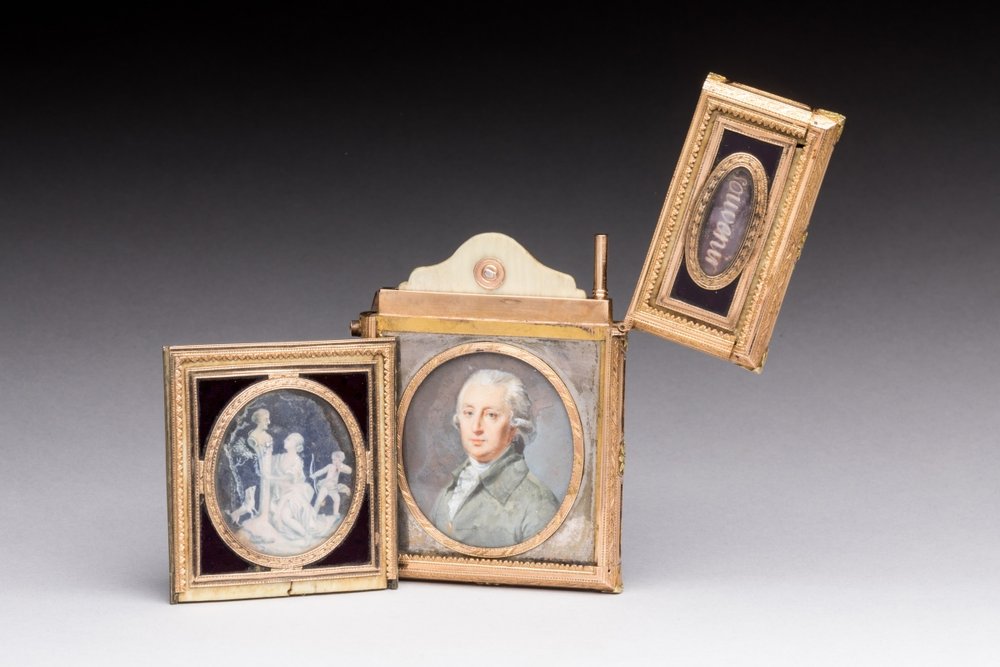
Fig. 16 Carnet-de-Bal with secret mechanism in gold, attributed to Louis Cousin, Paris, 1779. Provenance : Chateau du Perche.
While carnet-de-bals may have maintained a primarily French identity, their allure undoubtedly transcended borders, and likely found its way to England. The giving, receiving, and wearing of portrait miniatures as part of fashionable social practice was an important aspect of luxury in England, so it is more than likely to have accustomed to female accessories as well. The carnet-de-bal below for example, although French in style has an English gold inscription, “Keepsake” on either side of the lid.
The identity of the sitter and artist is unknown, but the inscriptions suggest ties to an English market. The use of dance cards gained tremendous popularity among European courtiers in the latter part of the 18th century and later was adopted in American ballrooms. The evolution of the carnet-de-bal into printed pasteboard booklets in the 19th century added a new dimension to its purpose. These booklets, hanging from silken cords on a lady’s wrist, became costly and elegant gifts exchanged among friends and lovers. They served as timeless and elegant reminders of shared moments and affectionate bonds, with inscriptions of “Souvenir D’Amitié” emphasising their sentimental value. Although they retained popularity through the initial decades of the 20th century, their decline began due to shifting cultural ideals. This era witnesses industrial and urban growth, the onset of global conflict, and the broadening of women’s roles in society. Consequently, the dance card came to symbolise a bygone era which could not be maintained.
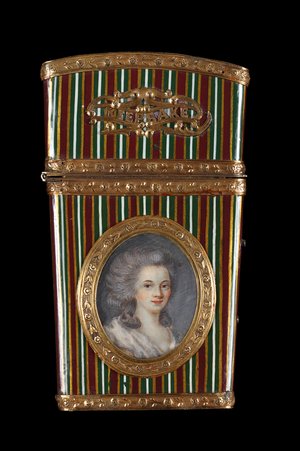
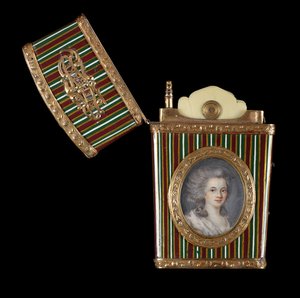
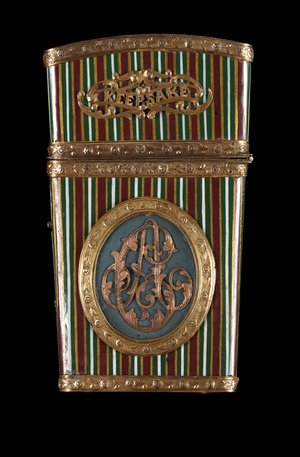
Fig. 17 Carnet-de-bal, Portrait Miniature of a Lady, wearing white gown, her hair powdered, set into a vari-coloured gold and painted papier-mache carnet-de-bal; circa 1785, The Limner Company. https://www.portraitminiature.com/c122-carnet-bal.
Whether portrait miniatures were mounted on jewellery, tokens of affection, or on an accessory, it is easy to overlook how highly invested they were as artefacts in female social relations and in representation. Once mounted, a fundamentally private object enters social and economic exchange systems, actively participating and engaging in public life. [16]
Portrait miniatures are distinguished by the necessity of being both visually admired but also their fundamental role in being physically held. It is therefore essential to examine how the sense of touch is incorporated into these representational practices. The conscious design of these feminine accessories discussed reflects the significance of tactically and proximity between the body and the object. In navigating the landscape of 18th century functional luxury accessories, these portrait miniatures of carnet-de-bals reveal themselves not only as relics of personal emotions but also as tangible manifestations of the profound friendships that shaped the social fabric of the time. [17]
Specific examples of individual gifts exchanged between women may not be well-documented, however, one can look at the literary culture of Jane Austen for example which often include scenes of women exchanging small tokens or accessories as a sign of friendship. The concept of “inseparability” in female friendships described in Rousseau’s La Nouvelle Heloise (1761) also informs us of the extent women were involved in the realm of gift-giving culture. In the end, these reflect the common cultural practice of women exchanging gifts, a practice that Dr Leonie Hannan argues women were ‘highly implicated in the process of forming and maintaining friendships and familial connections abroad as well as at home.’ [18] As tokens of affection, remembrance, and alliance these ornate accessories preserve the spirit of female friendship, arguably the most profound friendship there is.
“The tablets we use to write are a kind of little book which has a few sheets of ivory, paper or prepared parchment, on which we write with a touch or a pencil the things you want to remember”
— Diderot
[1] See Jill Bepler and Svante Norrhem, Telling objects. Contextualising the role of the consort in early modern Europe, Wiesbaden, Harrasowitz Verlag, 2018, p. 9-16.)
[2] Scientific advancements, such as Jean Toutin’s revolutionary enamel painting technique, contributed to more affordable production, expanding the popularity of enamelled accessories beyond noble classes.
[3] Consultant Celine Cachaud shows how the display of the framing was directly linked to the technique of the miniature. In the beginning, the fragile structure of watercolours on vellum required to protect the miniature in boxes, closed medallions or precious cases, whereas with the development of the enamel technique, the portrait could be openly displayed and set in jewelled settings like a boîte à portrait.
[4] Montpetit refined this technique, often known as “eludoric”. These oil paintings were created on fine cloth (apparently under a thin layer of water) and then stuck onto the reverse side of an embossed glass with water-soluble glue (presumably animal glue).
[5] Roulston, Christine, ‘Separating the Inseparables: Female Friendship and its Discontents in Eighteenth-Century France’, p. 215
[6] Sawyer, Drew, Portrait Miniatures, Hair and the limits of Representation
[7] It must be noted that shuttles were very often gifted by husbands or partners, however they were also exchanged among women.
[8] Roulston, Christine, ‘Separating the Inseparables: Female Friendship and its Discontents in Eighteenth-Century France’, p. 217
[9] Pointon, Marcia. “‘Surrounded with Brilliants’: Miniature Portraits in Eighteenth-Century England.”, p. 50
[10] Rappoport, Jill, “Giving Women: Alliance and Exchange in Victorian Culture, Chapter 2
[11] Although his research is more geared towards carnet de bal in the 19th and 20th centuries, the functions would have not changed that much and would have had a similar approach.
[12] Sicardi was French miniaturist who worked in French court - known to have several portrait miniatures of Marie Antoinette, one of which being a portrait miniature of the Queen on a snuff box, last sold at Bonhams 26 April 2023
[13] Based on its similarity to a carnet-de-bal by Cousin, now in the Rijskmuseum, Amsterdam.
[14] There has been much debate on the legitimacy of this snuff box with two hidden portraits of Voltaire and Emilie du Chatalet, thought to be Dresden goldsmith Johann Christian Neuber.
[15] Pointon, Marcia. “‘Surrounded with Brilliants’: Miniature Portraits in Eighteenth-Century England.”, p. 60
[16] Ibid., p. 49
[17] Ibid., p. 62
[18] Jill Rappoport, “Giving Women: Alliance and Exchange in Victorian Culture, Chapter 2
22 Jan 2024
Jean-Étienne Liotard as Enamellist
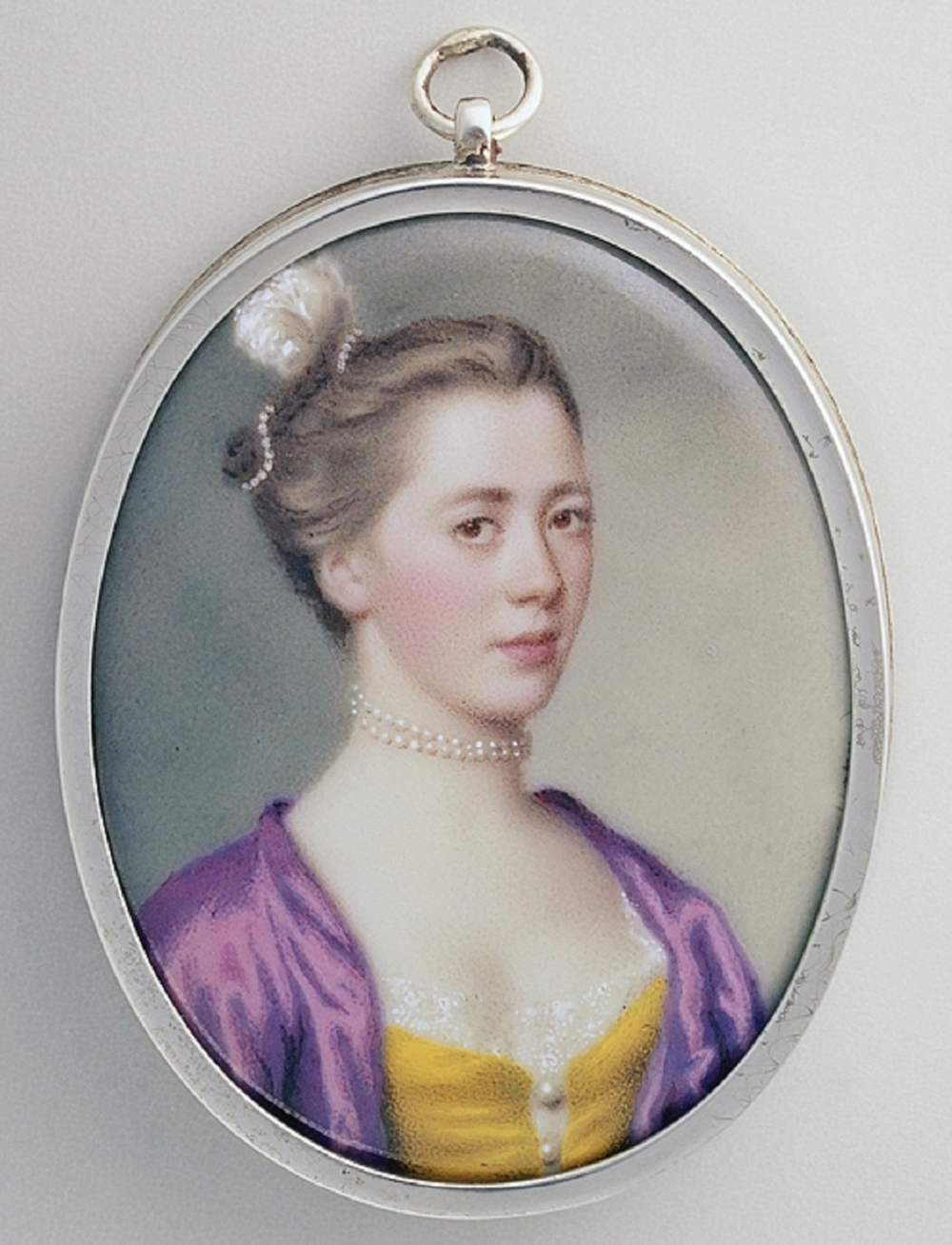
Fig. 1 Portrait enamel of Georgina Pontyx, enamel on copper, 1754. Formerly of the Musée de l’Horlogerie et de l’Emaillerie. Stolen since 2002. Inventory no. AD 3721. © Musée d’Art et d’Histoire de Genève.
We have little insight as to where Liotard first learned the craft of enamelling. The earliest enamellers and portrait enamellers had come from the jewellery, goldsmithing, and watchmaking tradition, so it is perhaps his father, Antoine Liotard, a jeweller and goldsmith who fled to Switzerland after 1685, who first exposed Liotard to this medium. Although there is no evidence of this, the production of bijouterie did have strong links to engravers, miniaturists, and enamellers because of the popularity of engraved snuff boxes in precious metals during this period [1]. An example of these by Liotard is now at the Victoria and Albert Museum in London: the portrait enamel of John, 1st Earl of Spencer [2] (1734-84) painted in 1755, is placed in a gold-mounted ivory snuff box carved with a scene showing the family of the defeated Persian king Darius III kneeling before Alexander the Great.
It is known that Liotard held great admiration for the artistic legacy of Jean Petitot (1607-1691), a fellow Protestant Genevan portraitist in enamel and one of the celebrated figures in the medium. In Liotard’s autobiography, written in 1760, he iterates that he borrowed and copied numerous enamels by the great Swiss painter [3]. Petitot received his training from the pioneers of the art of miniature portraits in enamel, Jean and Henri Toutin, and subsequently went on to serve as an enamellist in the court of Louis XIV. In particular, 17th-century French and Swiss enamellers excelled in this medium, and were invaluable actors in a rich market of delicate pendants, boxes, and watchcases.
Liotard’s first apprenticeship in Geneva was brief to say the least, spending only four months under Daniel Gardelle, a specialist in miniatures on vellum and a distant relative of the Mussard family. Gardelle had occasionally worked in enamel, which the young Liotard copied with exceptional skill, according to his autobiography. Once Liotard left Geneva and arrived in the metropolis of Paris, he worked under the famous miniaturist, Jean-Baptiste Massé, who was also said to have painted enamels, unfortunately, none of which survived. It is impossible, however, to know if Massé taught Liotard the art of enamel.
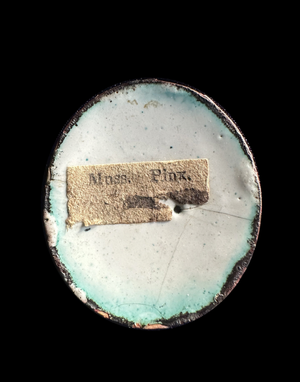
Fig. 2 Example of counter enamel, J. Mussard (Active at the Society of Artists 1763-1768), From the Limner Company. Portrait enamel of William Henry, Prince William, later Duke of Clarence and William IV (1765-1837), circa 1780s
So what exactly is enamel? The intricacies of this difficult craft are often challenging to classify, bridging the realms of decorative and applied arts. Essentially, enamel is a type of glass coloured by metal oxides and fused to a metal or porcelain base by firing. Copper became the most common support by the 18th century, not only due to its affordability but because it could survive temperatures up to 100 Celsius, unlike gold or silver. A metal was first cut into a thin plaque, often less than 1mm thick, and then hammered to create a slightly curved surface, which prevented warping during firing. To create enamel paint, metal oxides were ground with water into a powder, adding oils such as lavender or sandalwood to transform it into paint. Before applying colours, a layer of white had to be fired on both sides of the plaque to prevent distortion. Perhaps the most difficult aspect of enamelling was applying colours. Each colour had different melting points and had to be applied individually, colour by colour, starting with the highest temperature colour. Firings took place in an oven generally fuelled by charcoal or wood, each firing lasting between 2-15 minutes. Before the invention of temperature-controlled kilns, enamellers had to have mastered the chemical properties of the different colours, as there was no way of correcting a mistake in this medium.
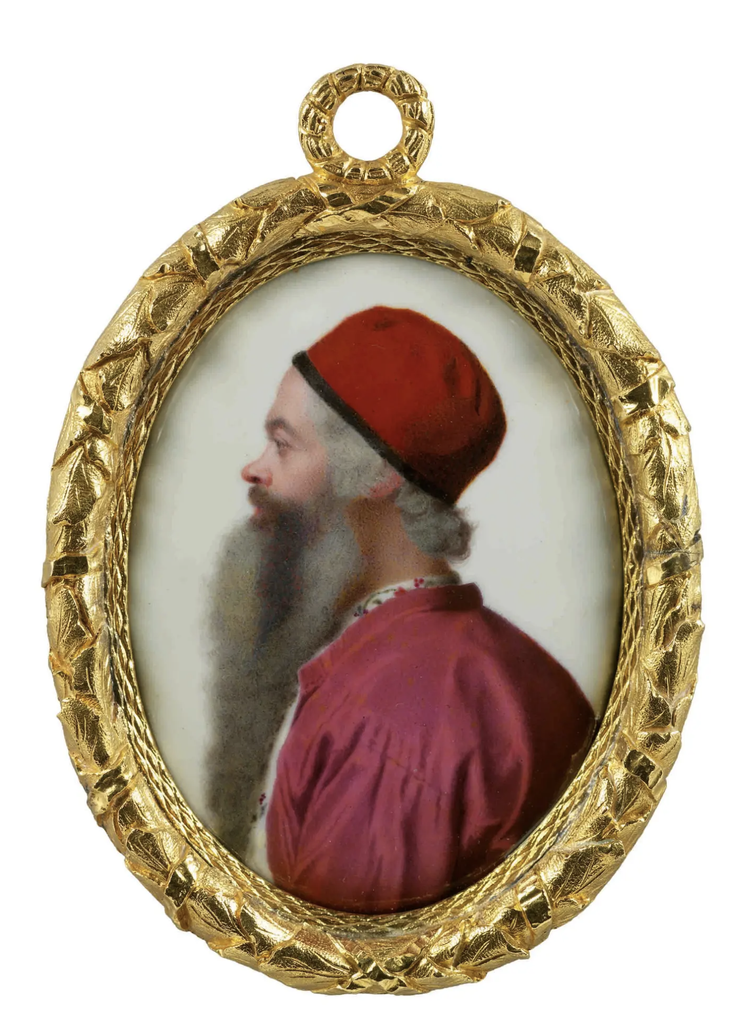
Fig. 3 Jean-Étienne Liotard, Self-Portrait, Enamel with Ivory backing encased in gilded Hatfield frame, 1753 © Royal Collection Trust
One of the most impressive enamel portraits by Liotard is undoubtedly his self-portrait (fig. 3), painted in 1753, now in the Royal Collection. Few are as exquisite as this oval gem, which some say even aroused jealousy in painters such as Sir Joshua Reynolds amongst others [4]. For lack of better words, it's stunning. Always one to be different, Liotard’s composition is rather unusual for the period. He paints himself in profile, alluding to noble portraiture of the Italian Renaissance, and dons a black-trimmed red felt fes traditionally used as a base around which a turban could be wrapped as well as a large Moldavian fur cap. The utter refinement and detail in both his facial features and fabric, notably the delicacy of his beard, proudly displays Liotard as a master enamellist with technical vivacity, but also as his self-proclaimed persona, ‘le Peintre Turc’ / ‘The Turkish painter’.
He was proud of his talents, one could say even arrogant as he never shied from boasting his artistic flair. So what better way to impress patrons than with such a technically challenging medium, on a scale none had seen before? His enamel on copper portrait (fig. 4) of the young Maria Theresa, Archduchess of Austria, now in the Rijksmuseum, measures an astounding 62 cm by 51cm. It is not only Liotard’s largest portrait enamel, but one of the largest made in history. The colouration in her cheeks, the impeccable detail in her fur trim and glistening eyes, was already prodigious with this medium, and yet, upon closer inspection we find more detail. In her diamond brooch holds a miniature painting depicting her husband, Francis of Lorraine, Holy Roman Emperor (1708-1765). Here, Liotard not only proves his command of enamel, but boastfully advertises it on both a large and miniature scale.
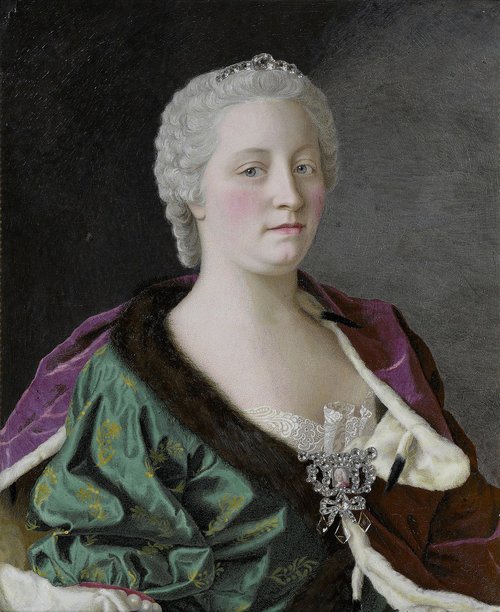
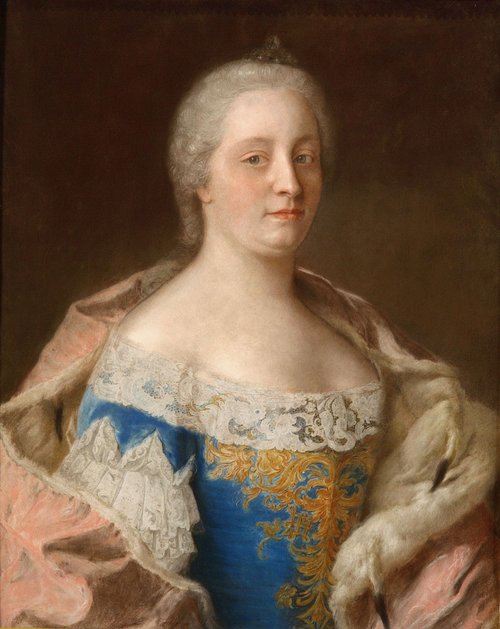
Fig. 4 Portrait enamel of Maria Theresa, Archduchess of Austria, Queen of Hungary and Bohemia, and Holy Roman Empress, enamel on copper, 1747. Rijksmuseum, Amsterdam
Fig. 5 Empress Maria Theresia of Austria, pastel on parchment, from 1743 until 1745. Museum Mayer van den Bergh
The Swiss painter did not just have astounding range in his oeuvre but was a bold innovator. The most common technique of enamelling had previously been that of Petitot’s, characterized by fine stippling which required strong magnification to see the work of the brush (fig. 6). Liotard on the other hand often used bold and visibly thick dotting which from afar gave a more pronounced and striking impression [5], as seen in his enamel on copper of Sir Everard Fawkener [6] (fig. 7). Sarah Coffin and Bodo Hofstetter amusingly compare Liotard’s impasto-esque technique to that of Seurat or Signac in the late 19th century. It takes one a very long time to accept this portrait as an enamel simply because of the impressive sfumato effect Liotard is able to achieve. The brilliantly executed velvet coat of Fawkener gives us the impression it was painted in oil on canvas, and the detail of the sitter’s shadow gives the work beautiful verisimilitude.
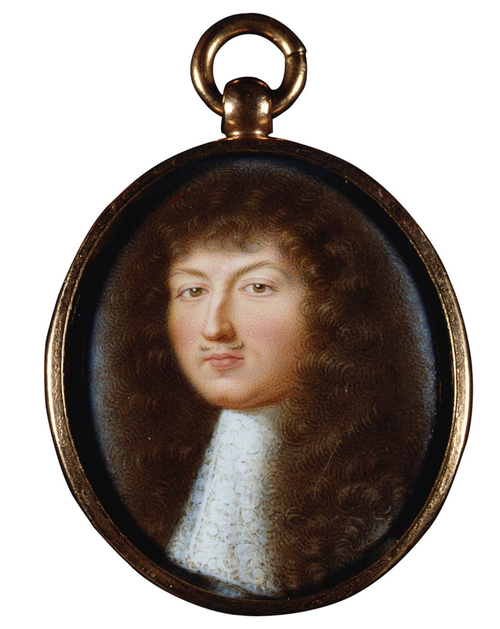
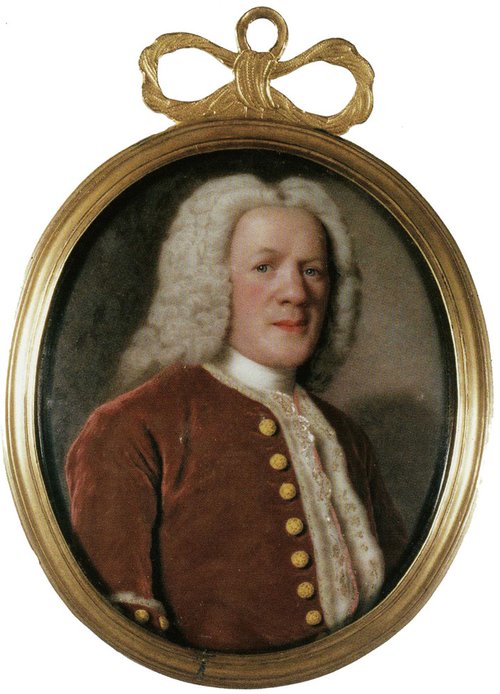
Fig. 6 Jean Petitot (1607-1691), portrait enamel of Louis XIV (1638-1715), c.1660 © Royal Collection Trust
Fig. 7 Portrait enamel of Sir Everard Fawkener (1694-1758), enamel on copper, 1754. Ashmolean Museum, Oxford
Liotard persistently experimented with new techniques, an example of which was enamel painted on glass as opposed to metal. The magnificent result was that the painting became virtually transparent, and could thus be lit from behind creating this vibrant effect of light and shade. The genre of transparent pictures can be traced back to Renaissance Kabinettscheiben [7], and following Liotard’s success with them, artists such as Thomas Gainsborough and John Constable also became interested in the genre [8]. The 18th-century art collector and friend of Liotard, Horace Walpole, described the artist’s enamel on glass technique in 1722 as such,
“And some pieces of glass painted by himself with surprising effect of light and shade, but a mere curiosity, as it was necessary to darken the room before they could be seen to advantage; he affixed too, as usual, extravagant prices to them.” [9]
A virtual obsession with light explains Liotard’s striking colouration and chiaroscuro in his enamels. One could argue he retained many of his enamel and miniaturist instincts as a pastellist and oil painter, particularly when it came to his use of light and dark to create a naturalistic effect. A good comparison is his portraits of George, Prince of Wales. In 1754, Augusta, Princess of Wales, mother of George III, commissioned numerous portraits of her children from Liotard. A pastel on vellum and an enamel (fig. 8 & 9) of the 16-year-old Prince were made, both in the same pose, wearing a blue sash signifying their position in the Order of the Garter, but with different hue coats. The incredible tonal qualities captured in the pastel portrait, accentuating the light and shadow as they define the volume of George’s face and shoulders are almost identical in the more complex and temperamental medium of enamel. The vividly lifelike detail of George’s flushed cheeks manifests Liotard’s unwavering powers of observation.
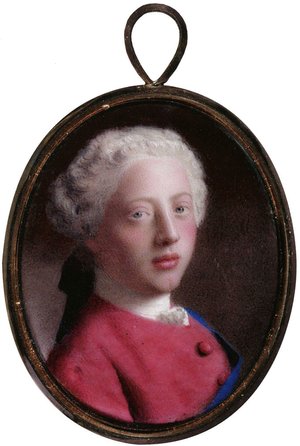
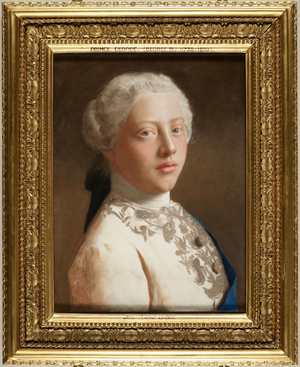
Fig. 8 Portrait of George, Prince of Wales (1738-1820), enamel on copper, 1754 © The Trustees of Sir Walter Luttrell's Will Trust, care of Robert Holden Ltd
Fig. 9 Portrait of George, Prince of Wales (1738-1820), pastel on vellum, 1754 © Royal Collection Trust. One of the ‘Nine Portraits of the Royal Family’.
Throughout all mediums, Liotard was committed to realism or the “warts-and-all” approach one could say. Unlike many artists of the period, he refused to idealise, or in some cases even compliment, his sitters. He preferred instead to portray them as he observed them. While his less flattering portrait enamels haven't endured the test of time, a mere glimpse at his pastel depiction of Augusta, Princess of Wales, (fig. 10) now in the Royal Collection, provides enough insight into why fragile enamel counterparts might not have been retained as cherished personal possessions. However, Liotard’s pragmatic approach for the most part results in an unprecedented candour in his portraits, giving the viewer a sense of reality, directness, and intimacy. Walpole again writes of Liotard’s characteristic lack of flattery:
‘[Liotard’s] likenesses were as exact as possible, and too like… Freckles, marks of the small-pox, every thing found its place…. Truth prevailed in all his works, grace in very few”. [10]
Whilst many patrons admired Liotard’s unreserved and candid depictions, some were not openly infatuated, to put it mildly. The iconic Royal mistress and patron of the arts, Madame de Pompadour, was seemingly less than pleased with Liotard’s unflattering depiction of her, rejecting the portraits with the words “Votre barbe fait tout votre merite” (“Your beard is all your merit”). [11]
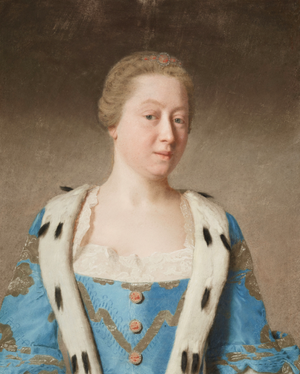
Fig. 10 Augusta, Princess of Wales (1719-1772), pastel on vellum, 1754 © Royal Collection Trust
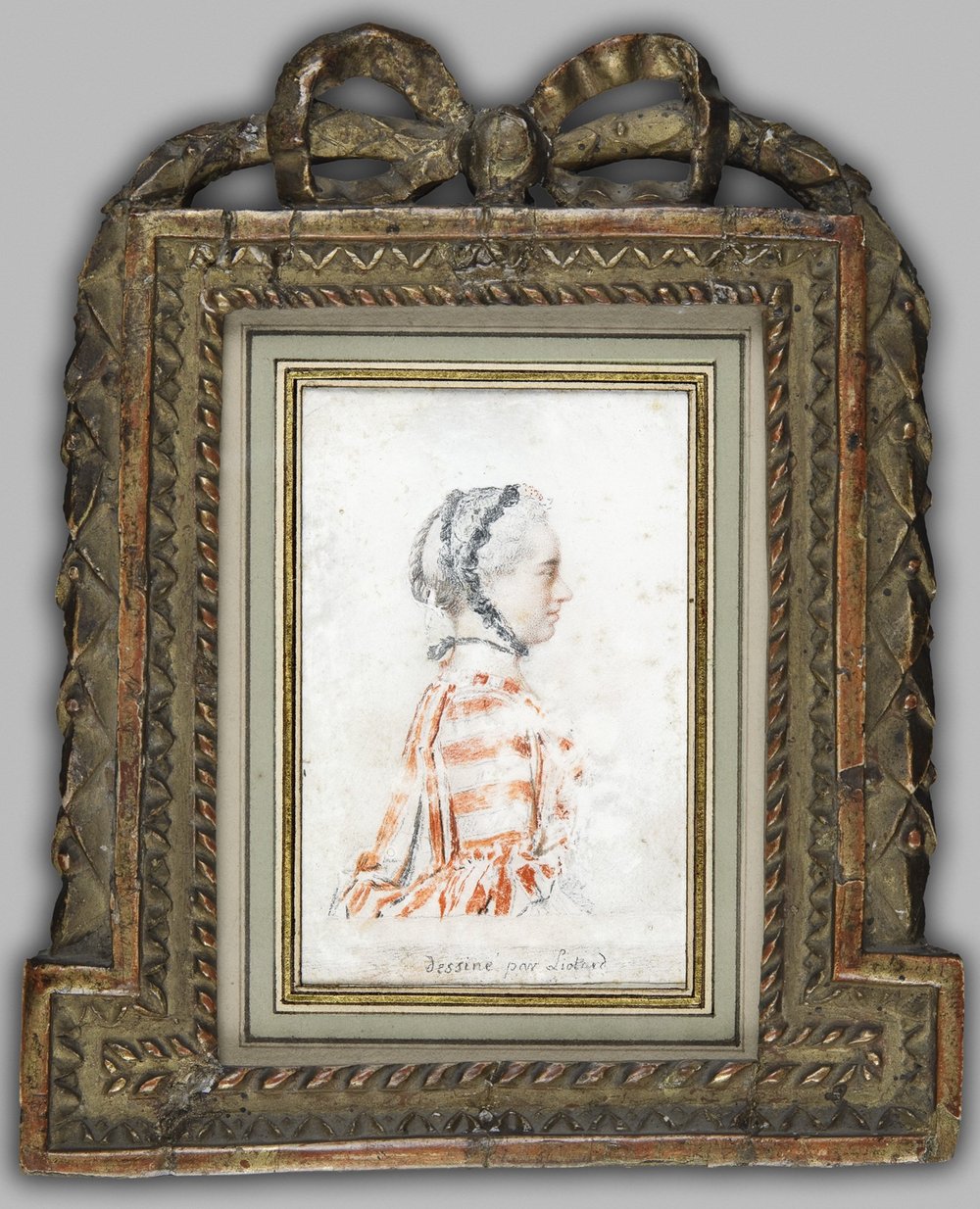
Fig. 11 Presumed portrait of of Madame de Pompadour (1721-1764), black and red chalk on prepared value, circa 1750. Fondation Custadia / Collection Frits Lugt. The original painting has since been lost.
Jean-Etienne Liotard's newly revitalized recognition as a genius pastellist is thoroughly deserved. However, it is important to remember he never abandoned his roots in the world of colourful and highly precious objects throughout his career. He was not just a brilliant pastellist or oil painter nor was he simply a miniaturist or enamellist. He was a brilliant portraitist, ruthlessly self-promoting himself as such through countless different mediums. During a period when thousands of emerging portrait painters flocked to Europe, particularly in London, Liotard had to distinguish himself to secure success. By dipping his toes in the realms of decorative arts, fine arts, and luxury goods, Liotard was able to amass a heterogeneous market of portraiture like no other, excelling in every medium he touched.
“Avec ce réalisme bien compris qui, loin d'éloigner de l'idéal, y conduit, Liotard pouvait être à la fois attaché à la tradition et novateur, classique et romantique, conservateur et progressiste, fils de son époque et déjà de la notre; mais par-dessus tout il était lui, ami de l'indépendance, ennemi de la mode, de la routine, des préjugés.” [12]
— Edouard Humbert, 1897
(“With this well-understood realism which, far from moving away from the ideal, leads to it, Liotard could be both attached to tradition and innovative, classic and romantic, conservative and progressive, son of his time and already of ours ; but above all he was, friend of independence, enemy of fashion, routine, prejudice.”)
[1] Bull, Duncan. 2002. Jean-Etienne Liotard, 1702-1789, p. 4
[2] Liotard met the Spencer family through William Ponsonby, Viscount Duncannon, whom the artist relied on tremendously for introductions and commissions in London. Duncannon’s son, Frederick Ponsonby married Henrietta Spencer, John Spencer’s daughter. In 1754, the Earl Spencer had also commissioned Liotard to paint his betrayed Georgina Poyntz (fig 2). The enamel on copper has been stolen since 2002.
[3] Jeffares, Neil. “A Liotard Sleeper.”, p. 2
[4] Baker, Christopher. 2015. Jean Etienne Liotard : 1702-1789, p. 22
[5] Coffin, Sarah. Hofstetter, Bodo. 2000. Portrait Miniatures in Enamel, p. 24
[6] Horace Walpole introduced Liotard to Sir Everand Fawkener at the end of March 1753, when he had been appointed secretary to the Duke of Cumberland, George II’s youngest son. Liotard is known to have painted three enamel portraits of Fawkener, including this one. It is likely Fawkener requested the medium of enamel for his portrait, no doubt influenced by his own collection of gems and miniatures, a collection that had been praised by his friend Voltaire. Baker, Christopher, p. 198
[7] Kabinettscheiben were small, highly detailed painted stained glass panels which gained tremendous popularity in Renaissance Switzerland. The Swiss custom of give these panels as gifts lasted until the early Enlightenment. Swoboda, Gudrun. 2012. [Jean-Etienne Liotard (1702-1789), p. 8.
[8] An example of Gainsborough’s painting in oil on glass, or “showbox”, is now at the V&A. Room 88.
[9] Swoboda, Gudrun. 2012. [Jean-Etienne Liotard (1702-1789), p. 8
[10] Walpole 1762-71, vol.4, p.90; see Roethlisberger and Loche 2008, vol.I, p. 97.
[11] Roethlisberger, Marcel, and Renée Loche, p. 102
[12] Humbert, Ed. & M. Alphonse Revilliod & J.W. R. Tilanus. 1897. La Vie et les Oeuvres de Jean Etienne Liotard (1702-1789), p. 43
05 Dec 2023
Capturing the Court Masque in Miniature
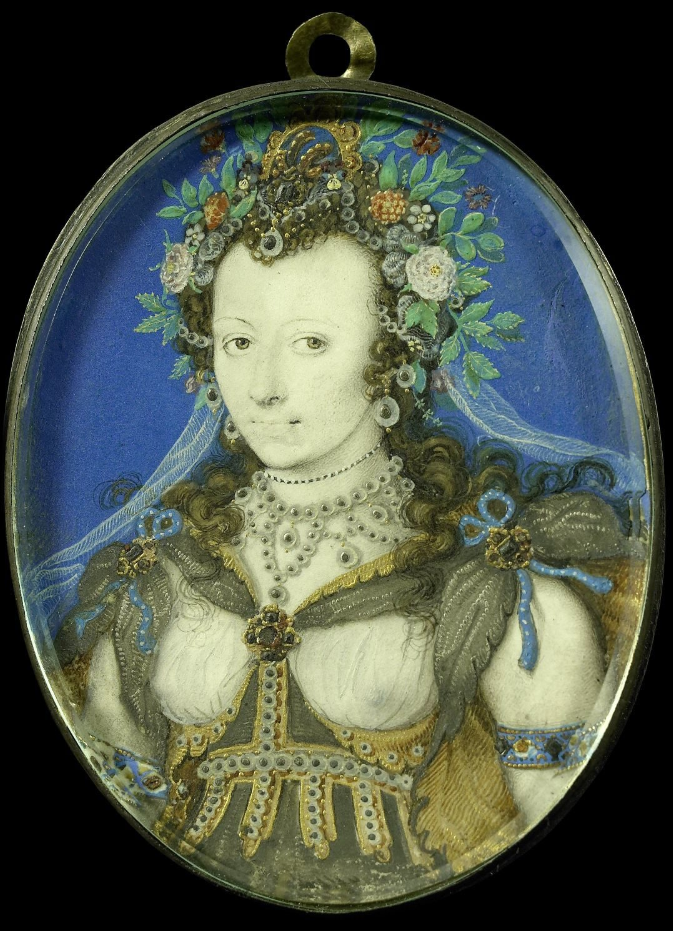
Fig. 1 Unknown Woman in Masque Costume, perhaps as ‘Flora’, c. 1605, Isaac Oliver (c. 1565-1617) - Rijksmuseum, Amsterdam
Miniatures from the period reveal that participants commissioned portraits of themselves in masque attire as a way of memorialising the part they played in such performances. Like the masque, the miniature had a selective audience which allowed the visual depiction of the human body to be at times more revealing than would have been possible elsewhere. Another similarity between the two art forms was the attention paid to elaborate costumes and illusionistic effects. Isaac Oliver’s miniatures of masque performers were the earliest of their type to document masque attire in miniature format. Following on from him, miniaturists of the first half of the seventeenth century created portraits which did not link to specific masques, but instead evoked the event’s style and atmosphere, demonstrating that the masque aesthetic became deeply connected to self-fashioning in miniature format.
The earliest miniatures made by Isaac Oliver which depict sitters in masque costume date to the first decade of the seventeenth century. They mainly show women, often in revealing costumes, wearing unusual jewellery and headpieces. One example is a miniature of an unknown woman, traditionally thought to be Frances Howard, Countess of Somerset (1590-1632). She appears in a silvery costume with a delicately painted transparent veil. It has been suggested that the miniature shows a performer from Hymenaei (1606).[1] In this, the female masquers were described as wearing ‘white cloth of silver’ and, with an overall colour theme of white, gold and silver, there is certainly a close resemblance to this sitter’s ensemble.[2] Two further miniatures by Isaac Oliver show unknown sitters in masque costume. One is of a woman likely in the guise of ‘Flora’, the Roman goddess of spring [Fig. 1]. Her hair is adorned with a headpiece of flowers and jewellery, and she wears an antique-style outfit with transparent fabric covering her breasts. Her outfit is a clear indicator that she was a masque performer: several surviving masque costume designs by Inigo Jones show similarly revealing outfits.[3] A miniature, likely from 1609, shows another unknown woman with antique-style costume, including a grotesque ornament and mantle, a translucent veil and decorative jewelled headpiece (Victoria and Albert Museum). This miniature could relate to either of Jonson’s 1609 masques, The Masque of Beauty or The Masque of Queens.
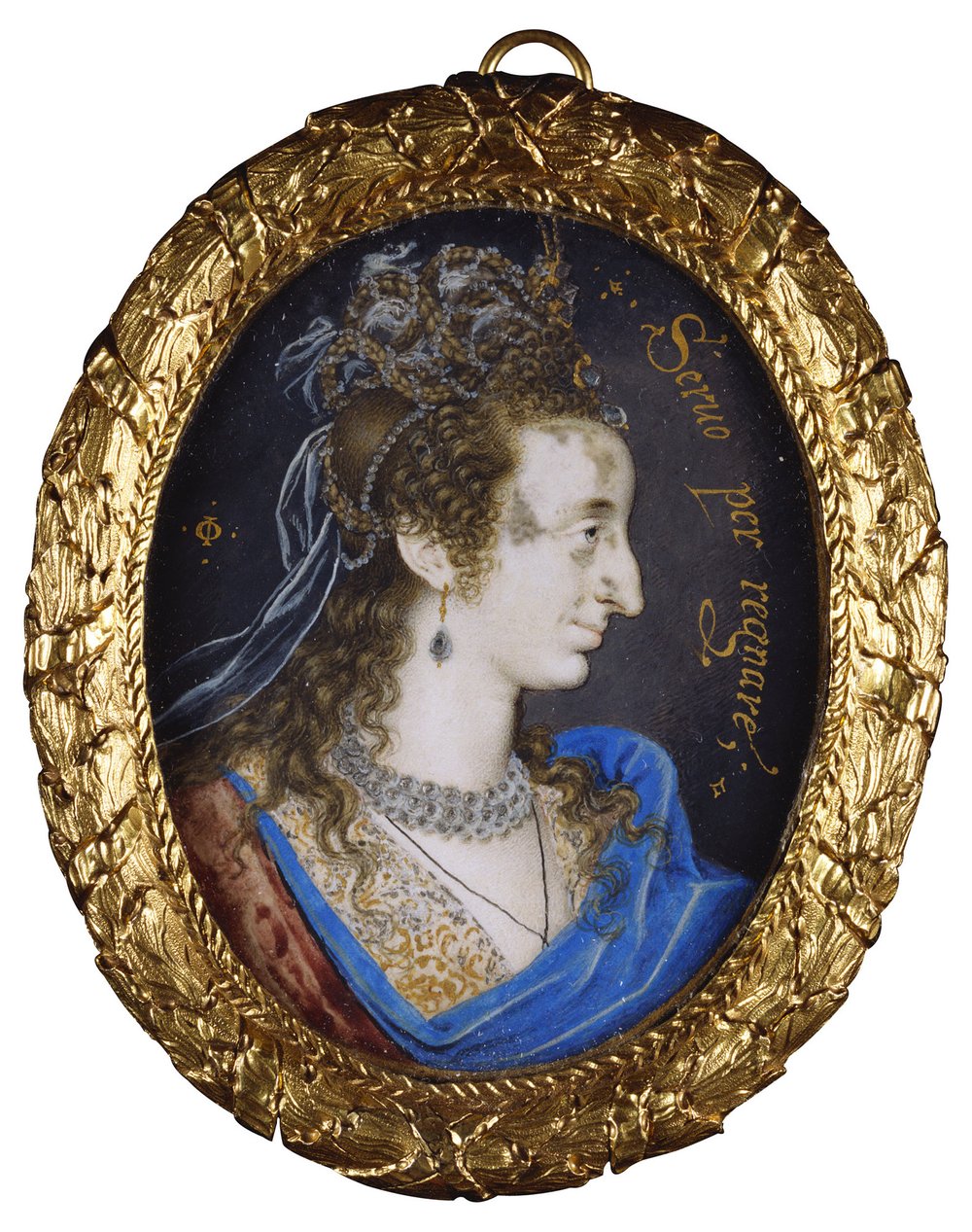
Fig. 2 Anne of Denmark (1574-1619), c. 1610, Isaac Oliver (c. 1565-1617) © Royal Collection Trust.
By around 1610, the fashion for depicting sitters in masque costume had reached the royal family. Several miniatures survive of Henry Frederick, Prince of Wales, in which he wears masque costume, sitting in profile and depicted as a Roman emperor. He wears a gold-embellished red cloak and is set against an architectural niche. Likely at the same date, Prince Henry’s mother Anne of Denmark was painted by Isaac Oliver in a similar fashion [Fig. 2]: she is seen in profile, wearing a jewelled headpiece, translucent veil and is adorned with gold, silver, and pearl jewellery.
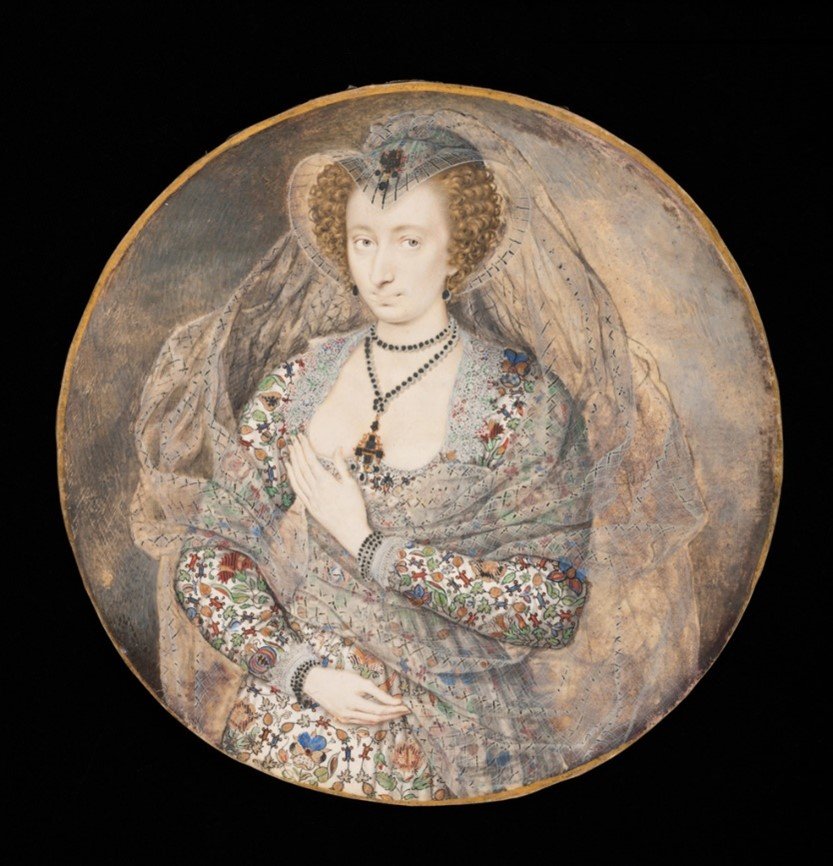
Fig. 3 Probably Lucy Harington, Countess of Bedford (1581-1627), c. 1615, Isaac Oliver (c. 1565-1617) - Fitzwilliam Museum
A prolific patron of the arts and an important sitter for Isaac Oliver was Lucy Harington, Countess of Bedford (1581-1627). At least five of her portraits by Oliver survive which likely relate to masques. One shows her wearing an embroidered low-cut costume, covered with fruits and flowers, and a translucent patterned veil that wraps around her body [Fig. 3]. Her representation in this way appears to have been an important starting point for a fashion in miniatures that took off in the second decade of the seventeenth century, in which women portrayed themselves in what could be termed ‘masque-inspired’ costumes. Over 20 miniatures survive by Isaac Oliver, Peter Oliver, and John Hoskins all of which show women in similar outfits [see Fig. 4. Victoria and Albert Museum P.3&A-1950, and Fig. 5]. Akin to Oliver’s miniatures of Lucy Harington, the sitters wear heavily embroidered costumes featuring stylised flowers. All have low necklines, often with a black thread necklace or string of pearls. Their hair is for the most part loose and in many a red antique-style mantle is draped across one shoulder.
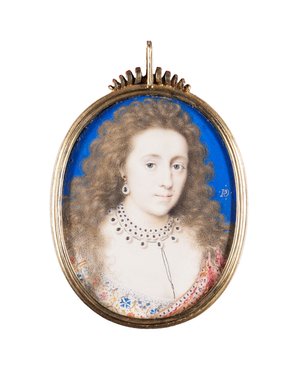
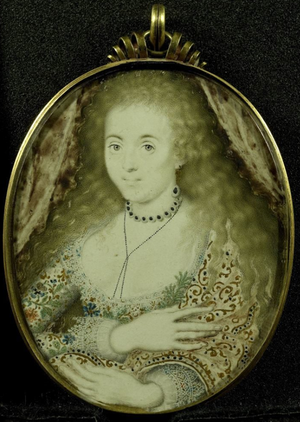
Fig. 5 An Unknown Woman, c. 1615-20, Peter Oliver (c. 1589-1647) - Nationalmuseum Stockholm.
Fig. 6. Called Arabella Stuart, c. 1615, Isaac Oliver (c. 1565-1617) - Rijksmuseum
The embroidered jacket seen in these miniatures is not quite a masque costume and these outfits do not match up with the masque costume designs by Inigo Jones. It has been speculated that the costume seen in these miniatures is an adaptation of outfits already owned by female sitters for a masque at home. There are several portraits which show sitters wearing the same patterned embroidered jacket, but with a high neckline, signifying informal, domestic attire [Fig. 6 Victoria and Albert Museum E.214-1994]. A surviving jacket of the period at the V&A with a low neckline shows signs of alterations, indicating that outfits seen in the miniatures could have been adaptations for a theatrical performance [Fig. 7 Victoria and Albert Museum 1359-1900]. However, it is surprising that so many miniatures exist depicting sitters in this outfit, suggesting that it was more likely a fashion to evoke the masque aesthetic, rather than alterations made to existing garments.
In fact, the use of embroidery in masques seems not to have been generally advised. In his essay Of Masques and Triumphs, Francis Bacon wrote for costumes that ‘rich embroidery’ is all but pointless, as ‘it is lost and not discerned.’[4] Yet the gold additions, classical-style mantle, jewellery, low neckline, and loose hair all evoke the fashion of masque attire. Female masquers in a performance held for Queen Elizabeth in 1600 were described as wearing ‘a mantel of carnacion taffeta cast under the arme, and their haire loose about their shoulders.’[5] The overall impact of these miniatures is a clearly intended allusion to the high-status, elite aesthetic of the masque, with the implication that sitters and collectors of such items wished to parade their close links with court etiquette.
The vogue for masque fashion in miniatures reached its apex in the years leading up to 1620, however the connection between the masque and small format paintings did continue. In 1632, Queen Henrietta Maria performed in the masque Tempe Restored, and subsequently commissioned the miniaturist John Hoskins to paint her portrait in masque costume [Fig. 7]. The costume Hoskins depicts her in does not exactly match the surviving costume designed for her by Inigo Jones, but the silver star patterned outfit is certainly consistent with it.[6] Her role in the masque was that of ‘Divine Beauty’ and the text details how ‘the Queen’s majesty was in a garment of watchet satin with stars of silver embroidered and embossed from the ground, and her head a crown of stars mixed with small falls of white feathers.[7]
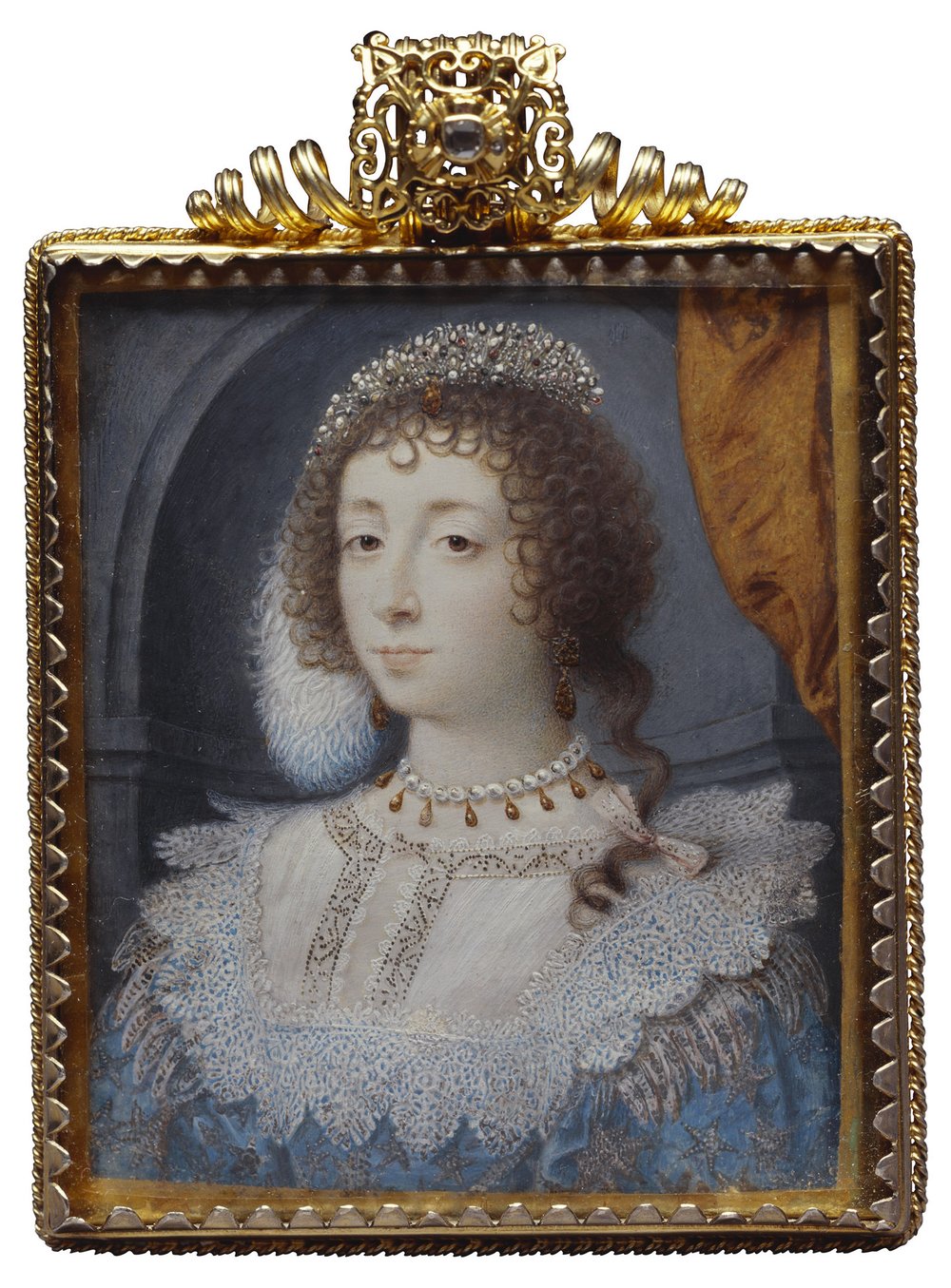
Fig. 7 Queen Henrietta Maria (1609-1690), c. 1632, John Hoskins © Royal Collection Trust
More than any other type of portraiture, the atmosphere of the masque, with its flickering lights, movement, sparkling jewels, and colourful ensembles, could be captured in portrait miniature. Nicholas Hilliard pioneered the use of actual ground gold to depict jewels in his miniatures, thus making them glisten and glimmer when the miniatures caught the light. Revealing costumes also adapted well to the miniature format, where the recipient could control who viewed the object. To be represented in masque attire conveyed an exclusive status connected to the innermost court circles, and while the particular fashion for this type of masque dress in miniature was exclusive to the courts of James VI and I and Charles I, the miniature format retained its ability to convey discreet yet distinct messages.
[1] Jill Finsten, Isaac Oliver: Art at the Courts of Elizabeth I and James I, 2 vols (New York: Garland, 1981), ii, p. 77.
[2] Lesley Mickel, ‘Glorious Spangs and Rich Embroidery: Costume in The Masque of Blackness and Hymenaei’, Studies in the Literary Imagination, 36.2 (2003).
[3] For example, his outfit for A Lady Masquer, c.1600-05 (Chatsworth).
[4] Francis Bacon, Of Masques and Triumphs, 1597.
[5] This description is found in a letter from Rowland Whyte to Sir Robert Sidney in 1600, quoted in J. Nichols, The Progresses and Public: Processions of Queen Elizabeth I (London, 1823), iii, p. 498.
[6] S. Orgel and R. Strong, Inigo Jones: The Theatre of the Stuart Court (London, 1973), ii, pp. 501-503. 3
[7] Orgel and Strong, ii, p. 481.
30 Nov 2023
Not so Bonnie Prince Charlie: The Likeness of Prince Charles Edward Stuart
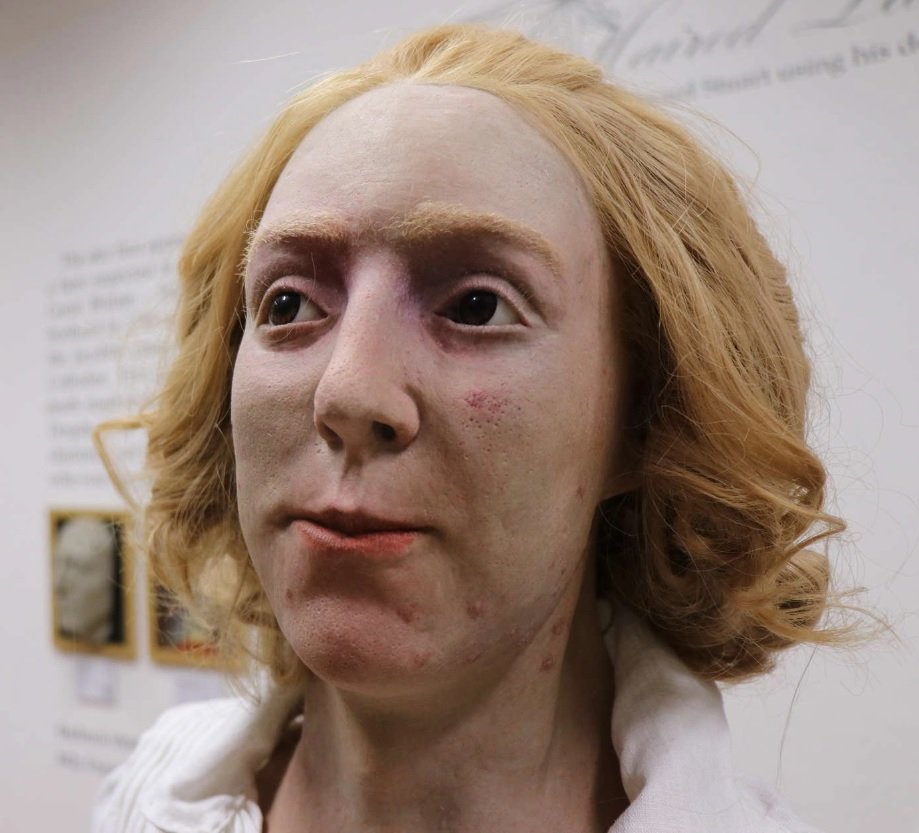
Fig. 1 The recreation of Bonnie Prince Charlie’s face on display in August at the University of Dundee’s Masters Show at Duncan of Jordanston College of Art & Design.
The model was created by a team at the University’s Centre for Anatomy and Human Identification using a death mask of the Prince, who died in Rome at the age of 67 after suffering a stroke. The mask was painstakingly photographed and mapped to produce 3D models with state-of-the-art software. Experts then “de-aged” Charles to create a 24-year-old representation. This likeness therefore dates to the period he is best remembered: on the eve of the Jacobite uprisings of 1745 and the Battle of Culloden in April 1746. This period also saw a proliferation in Charles’s portraiture.
So who was he? Prince Charles Edward Stuart, a.k.a. ‘Bonnie Prince Charlie’, a.k.a. the ‘Young Pretender’, was son of James Francis Edward Stuart (1688-1766), the ‘Old Pretender’, and grandson of deposed King James II & VII of England, Ireland, and Scotland (1633-1701). James II had fled to France in 1688 following the invasion of Prince William of Orange and his wife Princess Mary (James II’s own daughter). Thereafter, James II lived in exile on the continent, from where his son and grandson would launch their campaigns to regain the throne.
Portraiture was of great importance to the campaign to restore James II’s line to the throne, known as the Jacobite campaign (Jacobus being the Latin for James). While James II had been crowned, his exiled son and grandson never occupied positions of power, so portraiture was a means to project their image as both statesmen and plausible leaders of an invasion. James Francis Edward Stuart and Charles, were therefore invariably portrayed wearing the Order of the Garter[1], the Order of the Thistle[2], and/or armour [Fig. 2].
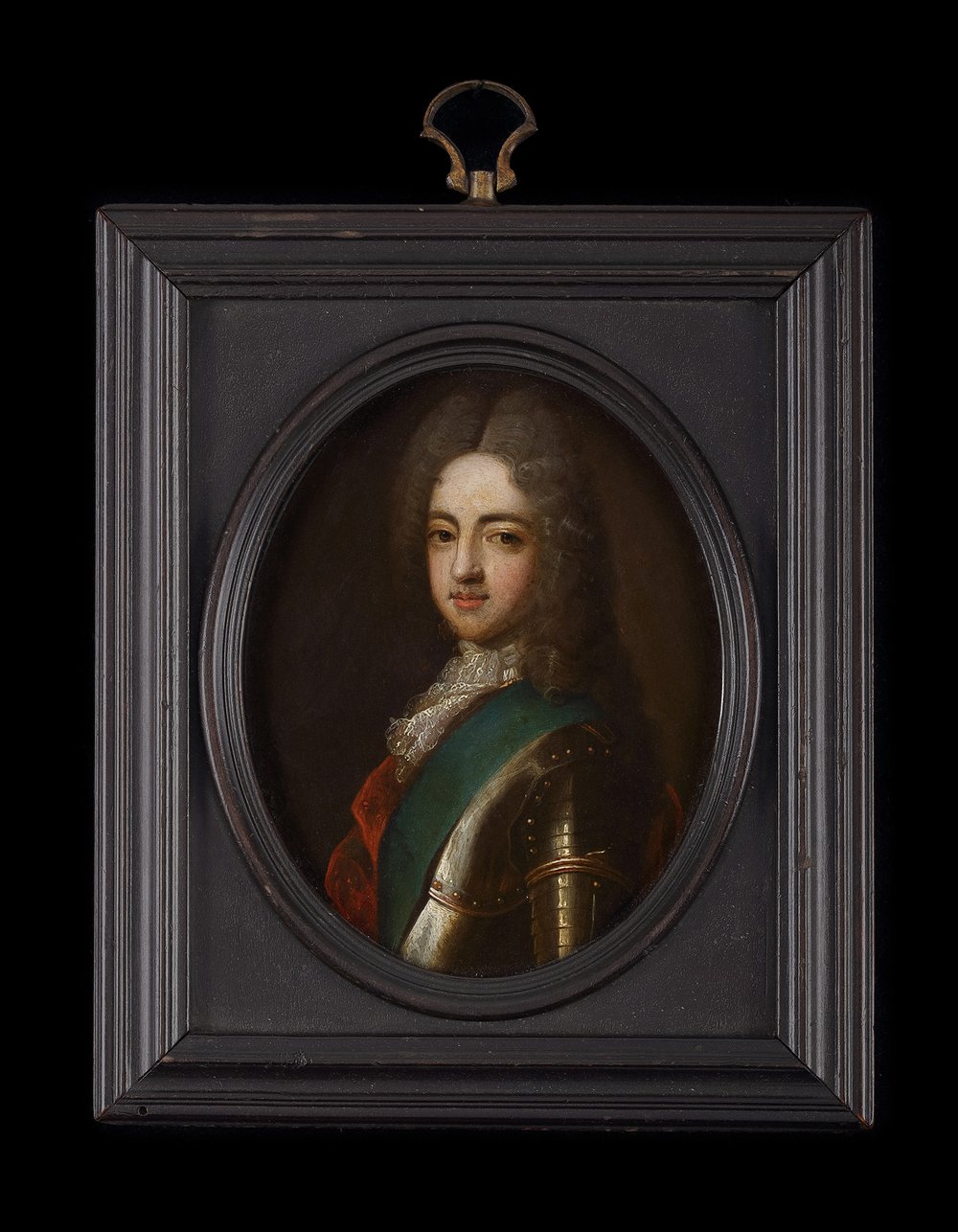
Fig. 2
Portrait miniature of James Francis Edward Stuart, Prince of Wales, ‘The Old Pretender’, wearing a suit of armour and blue sash of the Garter over his left shoulder; circa 1702; attributed to Anne Cheron (c.1663-1718), after Alexis-Simon Belle (1674-1734) - The Limner Company
James Francis Edward Stuart employed portraiture to promote himself and his sons from an early age. James had fled to the Italy in 1717, where the Pope grudgingly granted him a residence in Rome and where Charles would be born three years later. Rome not only boasted virtuoso native talent to whom the family would sit for portraits, such as celebrated court artist Domenico Duprà (1689-1770) and Antonio David (1698-1750), but attracted visiting artists from all over Europe. The exiled Stuarts therefore sat to the likes of Jean-Etienne Liotard (1702-1789), Louis-Gabriel Blanchet (1705-1772), and Brits such as Allan Ramsay (1713-1784), Giles Hussey (1710–1788), both of whom would play a particularly important role in Charles’s iconography.
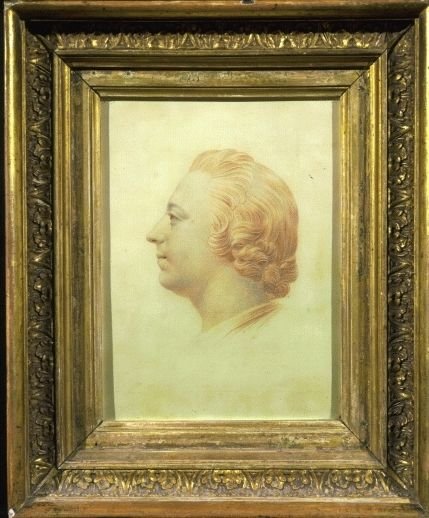
Fig. 3
Portrait of Prince Charles Edward Stuart; c.1735; Giles Hussey- previously with Philip Mould & Co.
Giles Hussey was studying and working in Rome between 1732 and 1737, as Charles was approaching his majority. Turning 18 on 31st December 1738, Charles took the Jacobite hopes upon his energetic shoulders. Hussey was from a Roman Catholic country family, and it’s likely this background that rendered a certain degree of tenderness to his very finely observed portraits of the prince, who embodied the hope of many British Catholics. Hussey’s portraits are striking in their similarity to the visage unveiled in the summer by the University of Dundee, in particular one previously with Philip Mould & Co. [Fig. 3]. On Hussey’s to England in 1736, he would produce many copies of his drawings of the Jacobite heirs made in Rome.
Allan Ramsay was also training in Rome at this time. It was there he first met the prince in 1736, but it was a portrait he painted later - on the eve of the Jacobite uprising on 1745 (dubbed "‘the 45”) - that would become a definitive image of Charles [Fig. 4].
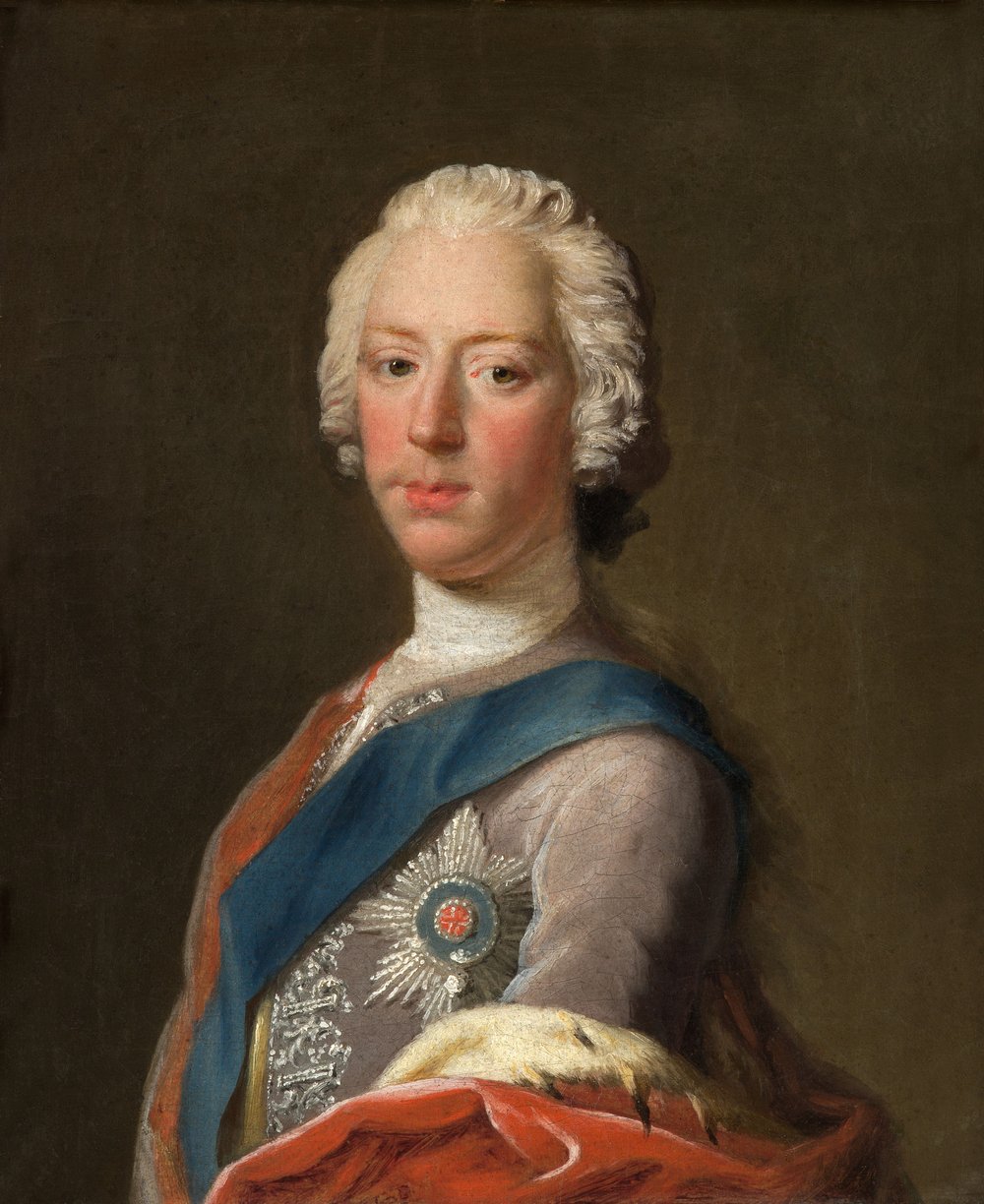
Fig. 4 Prince Charles Edward Stuart; 1745; Allan Ramsay – National Galleries of Scotland
Ramsay’s portrait is the original portrait type on which many other images are based, and yet it as the dissemination of this portrait type in miniatures, medals and engravings that made it so recognisable.[3] One stupendous oil portrait does not rally supporters from behind the gates of a lofty palace. Indeed, Ramsay’s oil is now believed to have been commissioned by Charles (or a member of his inner circle) as a basis for an engraving by Robert Strange (1721-92) [Fig. 5]. Recent research has suggested that the engraving was commissioned by the Prince himself in Edinburgh in 1745, when he had decided to march on London.[4] It’s striking that in the headiest days of the uprising, in the midst of strategizing the coup that had been his life’s aim, Charles was also thinking about portraiture.
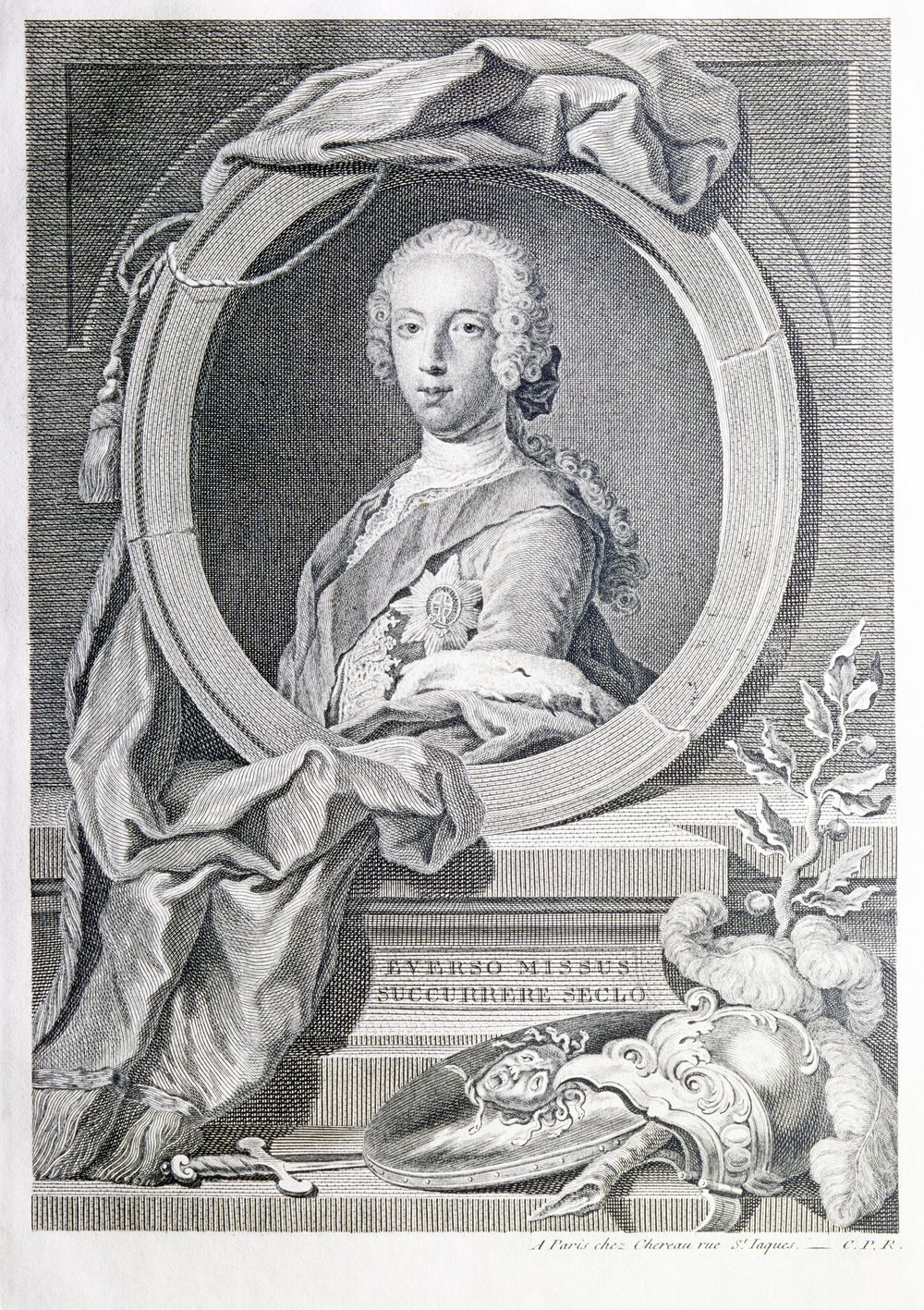
Fig. 5 Engraving of Prince Charles Edward Stuart; 1745; Sir Robert Strange – National Galleries of Scotland
Robert Strange (himself an ardent Jacobite supporter who fought at the Battle of Culloden) also designed banknotes in preparation for Charles’s victory and painted his portrait in miniature [Fig. 6]. Strange was appointed ‘Miniature Painter and Engraver’ to Prince Charles. In the same way as any monarch, Charles appointed an artist to produce miniatures he would present to his supporters.
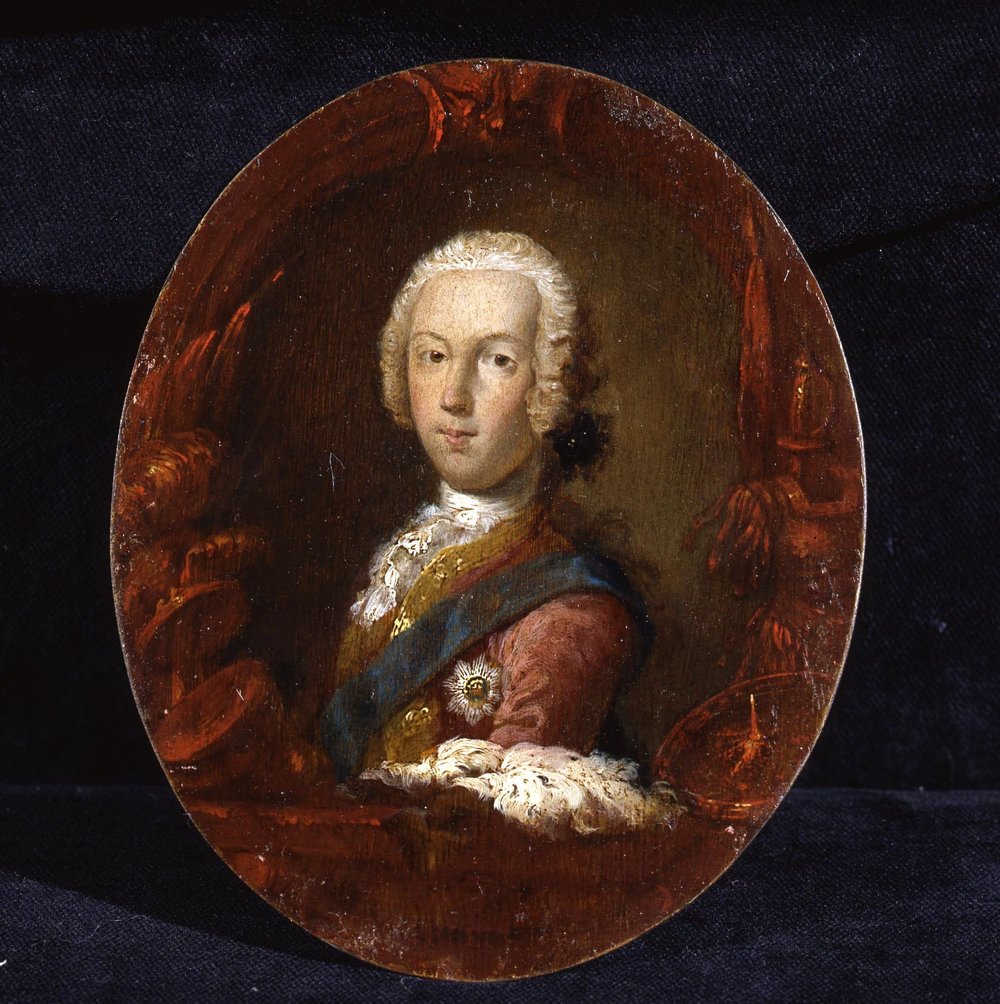
Fig. 6 Prince Charles Edward Stuart; 1740s; Sir Robert Strange – previously with Philip Mould & Co.
Bonnie Prince Charlie’s supporters were often depicted holding a portrait miniature of him, illustrating their allegiance [Fig. 7]
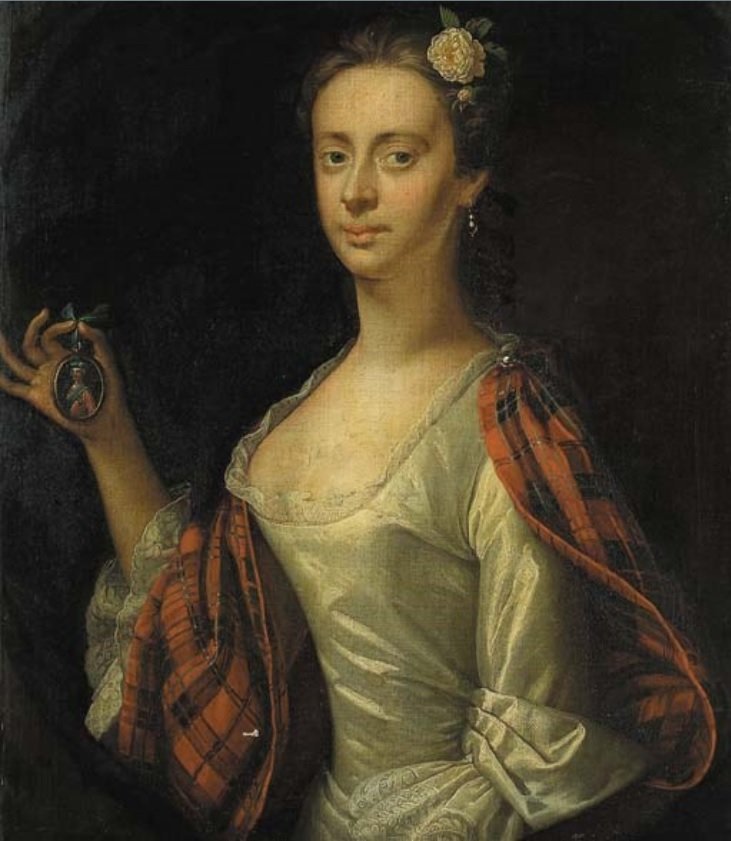
Fig. 7
Portrait of a lady, believed to be Jenny (Jean) Cameron holding a miniature of Bonnie Prince Charlie in her right hand; Circle of Jeremiah Davison (c.1695-1745)- Christie’s, 2000
Interestingly, where the oil portrait and engraving do not show Charles wearing Highland dress or an element of tartan, many miniatures and other small scale paintings do [Figs 8 & 9].[5] The Highland dress signified the Stuart claim and aligned Charles with the Scots on whose support his campaign entirely depended. While the engraving was commissioned in anticipation of Charles regaining the throne, whence it would be widely circulated across the whole of Britain, miniatures were more personal objects, exchanged and kept by Jacobite supporters.
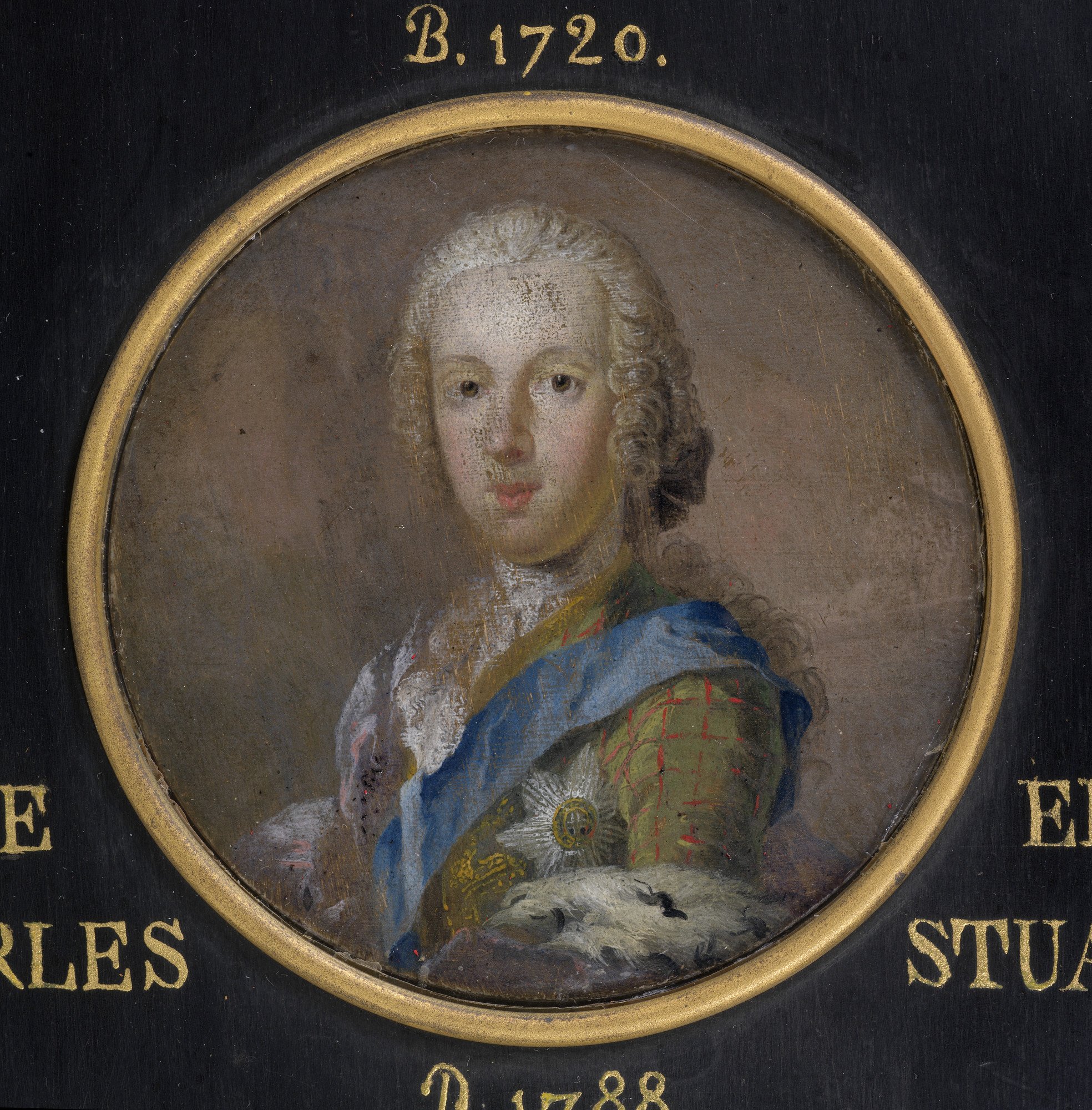
Fig. 8 Portrait miniature of Prince Charles Edward Stuart; c.1745; attributed to Sir Robert Strange – Royal Collection Trust
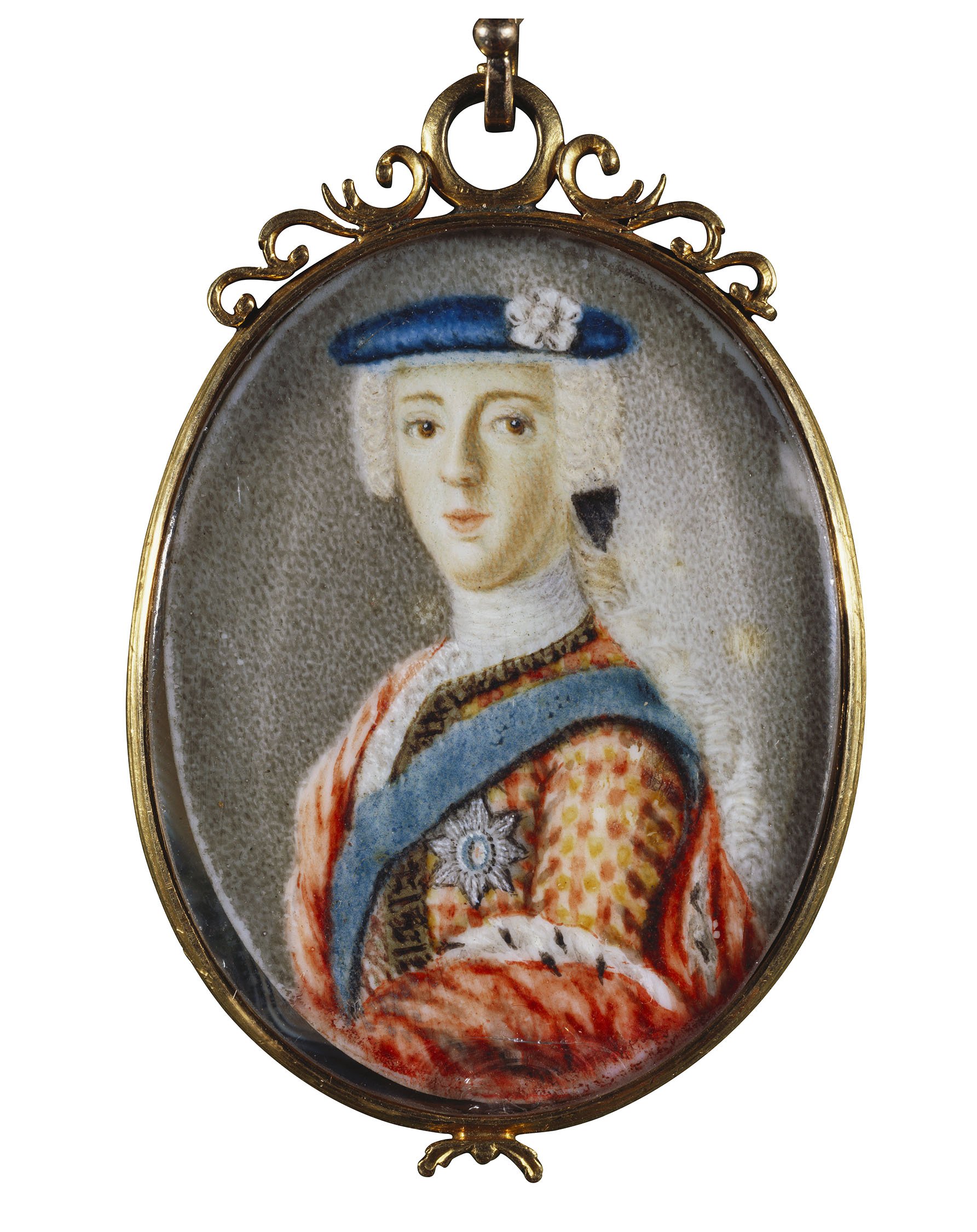
Fig. 9 Portrait miniature of Prince Charles Edward Stuart, c.1745; after Sir Robert Strange – Royal Collection Trust
Being small and portable, miniatures were one of the ways supporters could display allegiance to one another. They were also easily hidden, which was vital as being found to be a Jacobite was a treasonable offence. It is for the same reason that Bonnie Prince Charlie’s portrait was sometimes disguised in an anamorphic image. One famous example being a drinks tray in the collection of the West Highland Museum, Scotland [Fig. 10].
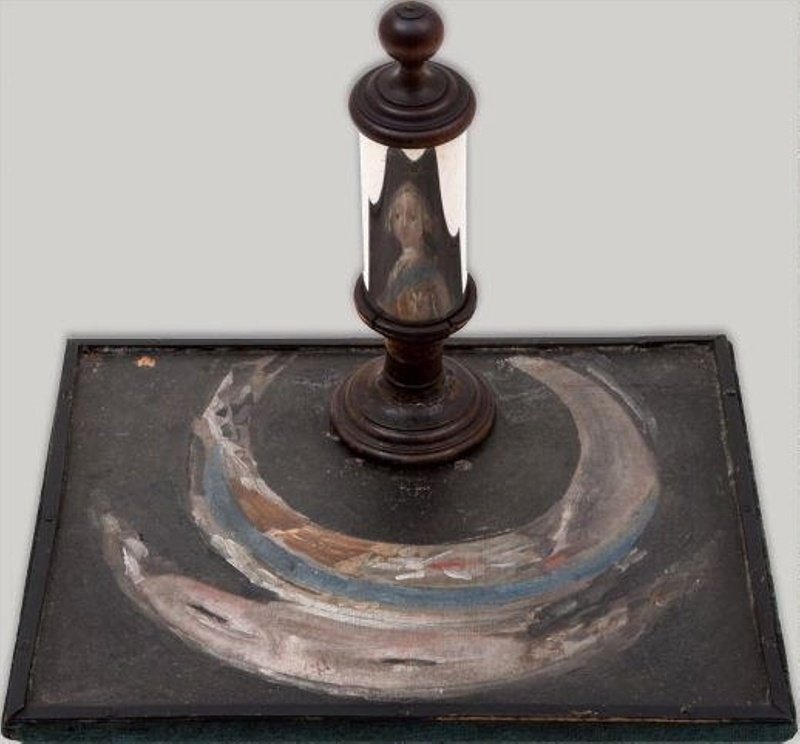
Fig. 10 Drinks tray with an anamorphic portrait of Prince Charles Edward Stuart – West Highland Museum, Fort William
The most devotional of Jacobite portraits must be the miniatures set into jewellery [Fig. 11 and see also Victoria and Albert Museum 6-1899]. A portrait that is not only kept on your person at all times, but worn on the body, is significant of a fervent commitment to the cause.
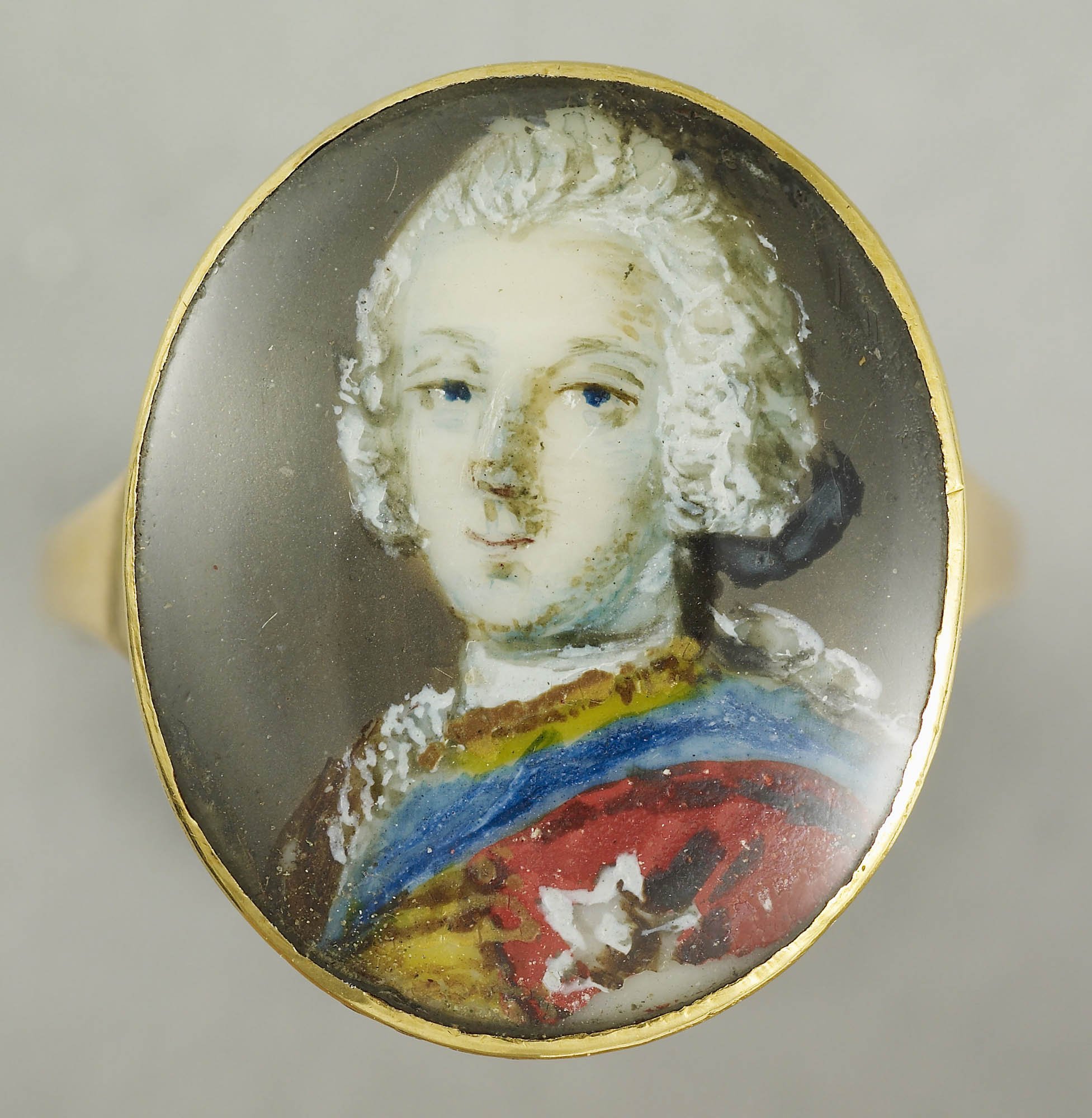
Fig. 11 Ring with a portrait miniature of Prince Charles Edward Stuart; c. 1745; British School – Royal Collection Trust
Arguably the quality of the likeness deteriorates with portraits so small, but the aura of artworks such as this – held and worn by people from history who were perhaps willing to die for their beliefs – is quite something to behold. It’s an intimate quality almost unique to the portrait miniature and epitomised here.
Further Reading:
https://www.historyscotland.com/history/lost-portrait-of-bonnie-prince-charlie-on-display-at-fort-william-mus/
https://www.nationalgalleries.org/art-and-artists/features/jacobite-icon-allan-ramsay%E2%80%99s-portrait-prince-charles-edward-stuart
https://www.dundee.ac.uk/stories/bonnie-prince-charlie-recreation-shows-face-jacobite-rising
Other objects of interest:
https://www.rct.uk/collection/search#/68/collection/441923/thistle-badge
https://www.npg.org.uk/collections/search/portrait/mw191367/Flora-Macdonald-with-miniature-of-Prince-Charles-Edward-Stuart?LinkID=mp00842&wPage=1&role=sit&rNo=22
Footnotes:
[1] The Order of the Garter was the highest and oldest Order of Chivalry in Britain. Members include the monarch, senior royal family and 24 others chosen personally by the Sovereign.
[2] King James II & VII established the Order of the Thistle (reinstituting an ancient chivalric tradition) in 1687 - to reward Scottish peers who supported the king's political and religious aims. As his grandson, the ‘Old Pretender’ maintained the iconography and symbolism of the Order of the Thistle.
[3] During the infamous episode following Charles’s escape from Culloden, when he was spirited away by Flora MacDonald in disguise as a maidservant called Betty Burke, doubts about his disguise were founded not just on his stature but his distinct oval face – so recognisable from his well-known image.
[4] https://www.nationalgalleries.org/art-and-artists/features/jacobite-icon-allan-ramsay%E2%80%99s-portrait-prince-charles-edward-stuart
[5] See also the small scale ‘Harlequin’ portrait type, for example https://www.christies.com/en/lot/lot-1948365
05 Oct 2023
“The Oscars of the British art world”
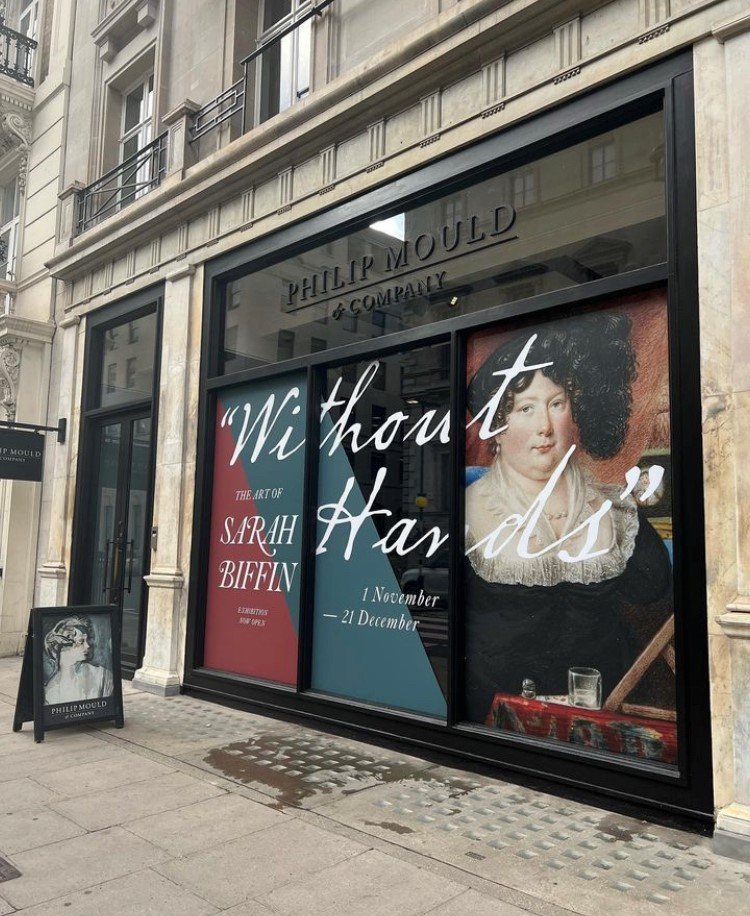
Philip Mould & Co. received the award on Friday 29th September at a ceremony hosted by the British Art Fair at the Saatchi Gallery.
Sarah Biffin (1784-1850)’s remarkable life and work had been largely overlooked by historians until the exhibition co-curated by Emma and Ellie Smith, working closely with advisor Alison Lapper, contributors Essaka Joshua and Elle Shushan, and researcher Valeria Vallucci. The show, held at Philip Mould & Co.’s Pall Mall gallery from 1st November - 21 December 2022, was covered widely in the press, receiving a 5-star review from The Telegraph and featured in The Times, The Guardian, BBC Radio 4, Financial Times, Homes & Antiques magazine and The Art Newspaper.
A version of the exhibition opened at The Holburne Museum, Bath, on 29th September 2023 and will run until 14th January 2024. This constitutes the first major museum exhibition on the artist and Emma, Ellie and Alison will be giving a talk at The Holburne on 23rd November 2023. Emma and Ellie will also be speaking about the exhibition at the Understanding British Portraits annual seminar on 24th October 2023.
The Critics’ Circle Visual Arts Awards is described as “the Oscars of the British art world” and other winners included the National Gallery and National Portrait Gallery.
11 Sep 2023
A Cuckoo in the Royal Nest; who was Frederick William Blomberg?
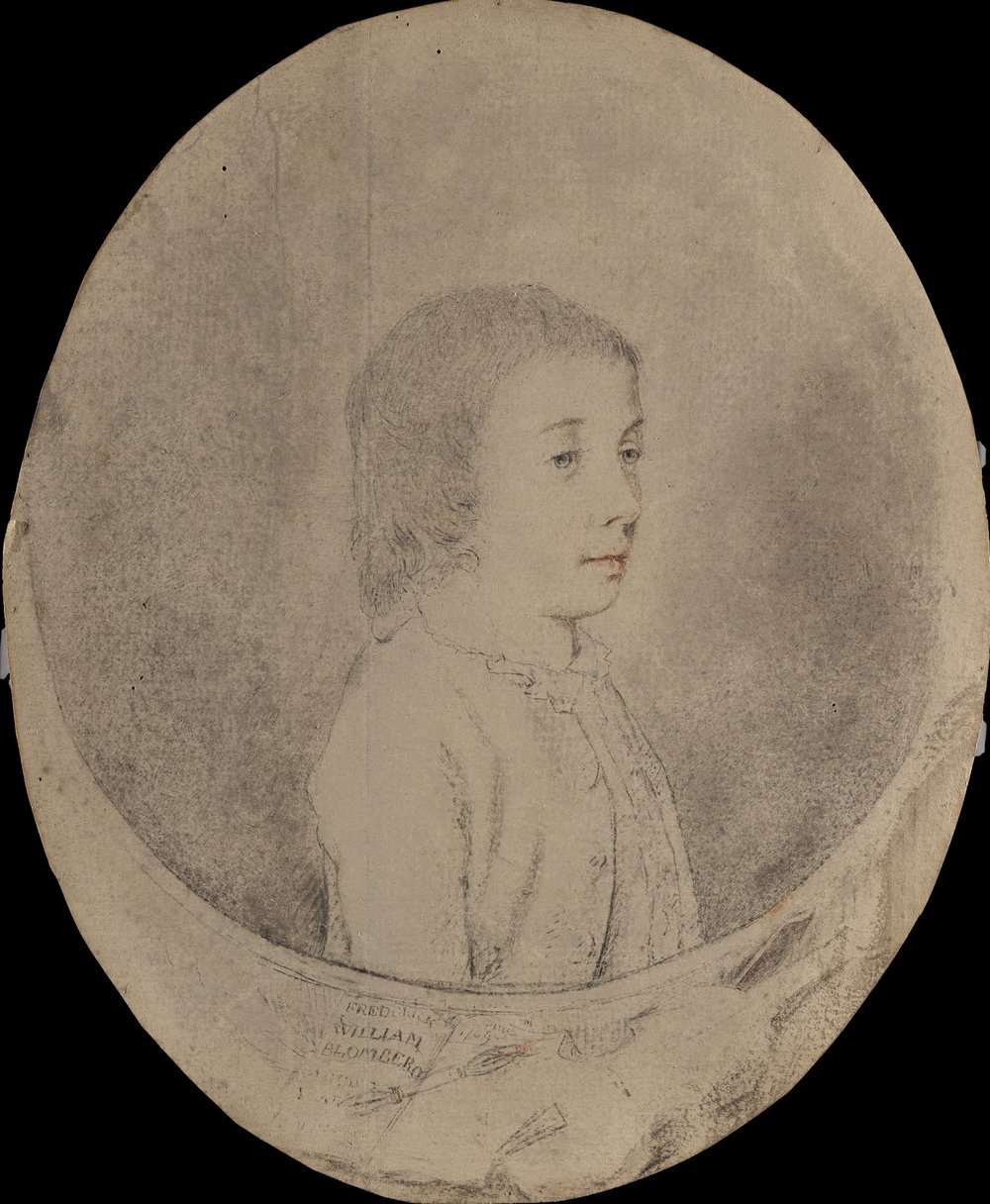
Fig. 1
The Reverend Frederick William Blomberg, D.D. (1761-1847), dated 1769, Hugh Douglas Hamilton (1739-1808)- The Limner Company
On a visit to the royal nursery in 1769, one would have met four princes and two princesses, including George, Prince of Wales (later King George IV) – who had been born born August 1762.[1] Born just a year before this first child of the young Queen Charlotte, one would have met another boy, indistinguishable from his apparent siblings. This boy was Frederick William Blomberg, the child portrayed in this drawing (Fig.1) – who had been evidently welcomed into the nursery as a toddler by King George III and Queen Charlotte. The sketch was drawn by Hugh Douglas Hamilton (1740-1808), who in the summer of 1769 had been asked to draw the four princes, along with their parents (Fig.2). These drawings now reside in the Royal Collection at Windsor Castle, the young princes shown in feigned oval frames, their parents in informal clothing with the king shown without any orders or ribbons. It is fascinating that the only drawing missing from this group is the one of the mysterious Blomberg – the cuckoo in the royal nest.[2]
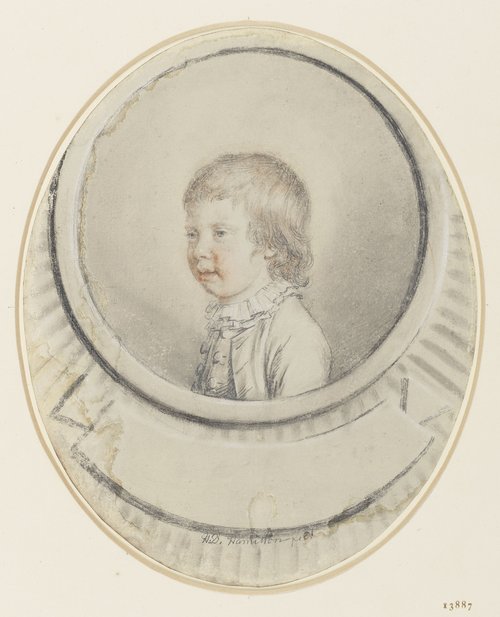
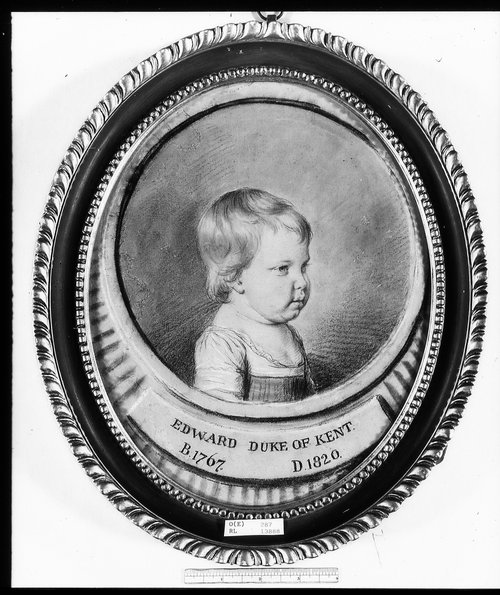
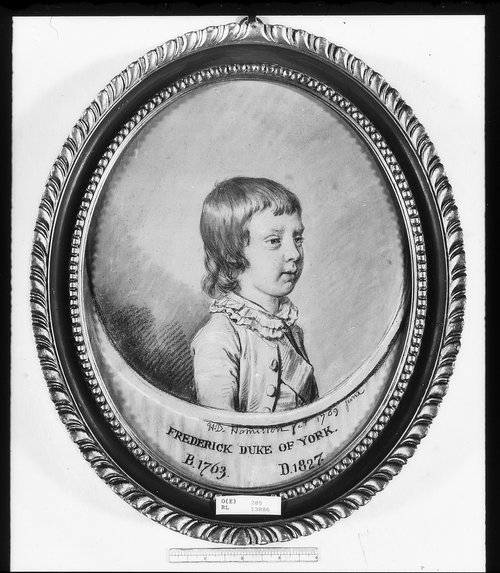
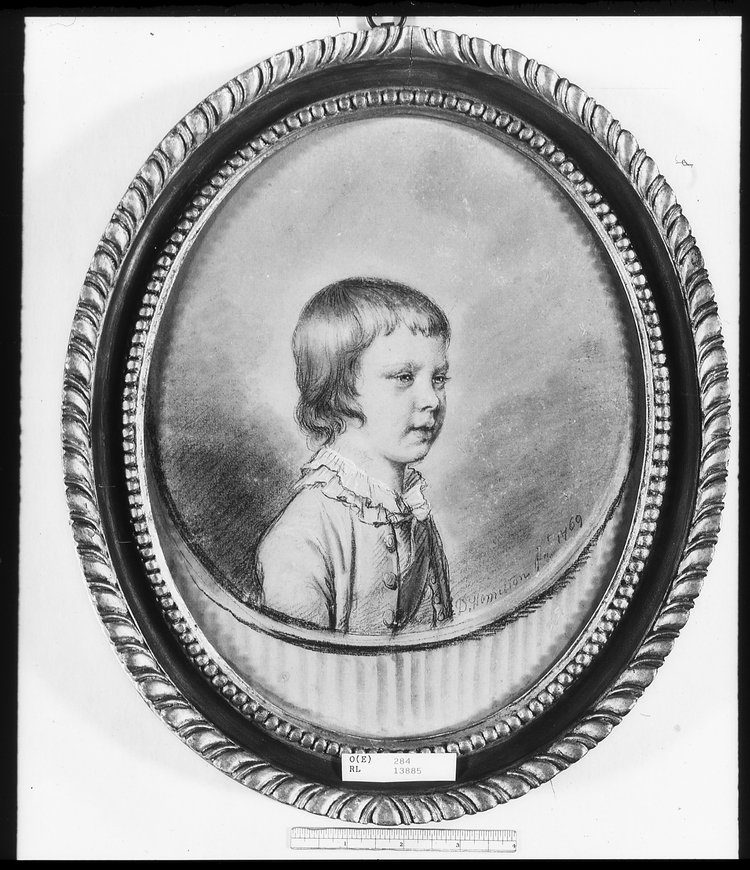
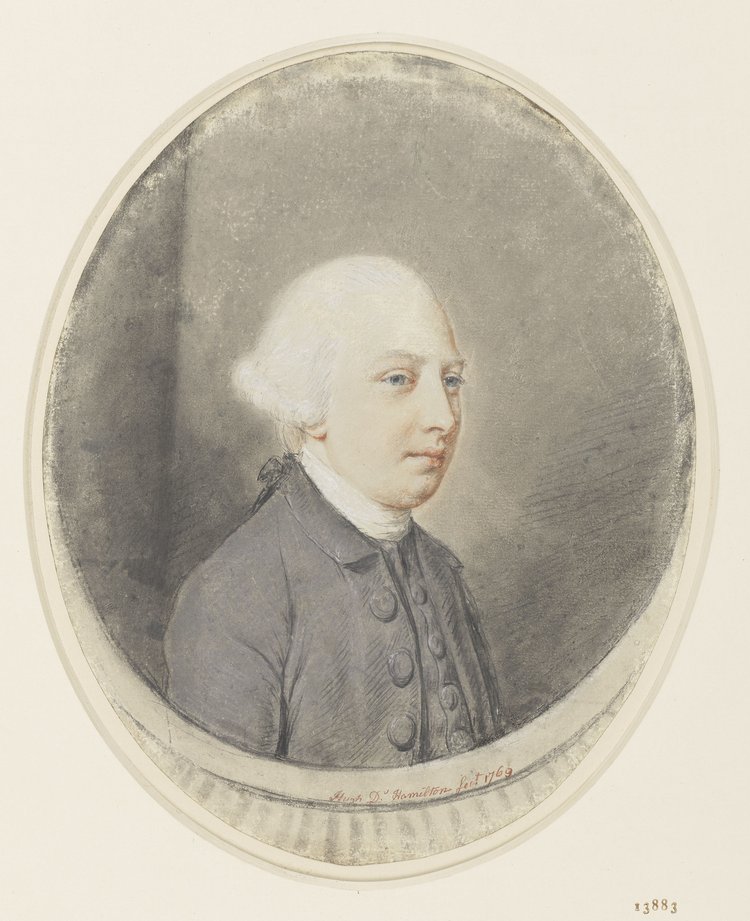
Fig. 2 Left to right: William, Duke of Clarence (1765-1837), 1769; Edward, Duke of Kent (1767-1820), c.1769; Frederick, Duke of York (1763-1827), Jun 1769; George, Prince of Wales (1762-1830), signed and dated 1769; George III (1738-1820), signed and dated 1769; all by Hugh Douglas Hamilton (1739-1808) - Royal Collection Trust
Called Frederick William Blomberg, the child had been born in 1761, the record of his baptism being recorded at St Margaret’s, Rochester. His parentage, however, remained a cause for speculation throughout his life and beyond. One version stated that he was the son of a certain Major Frederick Blomberg, and his wife Mellissa Laing. Major Blomberg was said to have drowned, leaving the child to be raised by Queen Charlotte – but why would the young queen have taken on a child when she was already a mother to three boys of her own (confusingly for the young Blomberg, one called Frederick, another William)? The supposed parents do not seem to have had close connections to the royal couple. Other sources give the child’s father as Friedrich Karl August von Blomberg (d.1764) but with his mother not dying until 1803, it is strange that she would not have raised him.
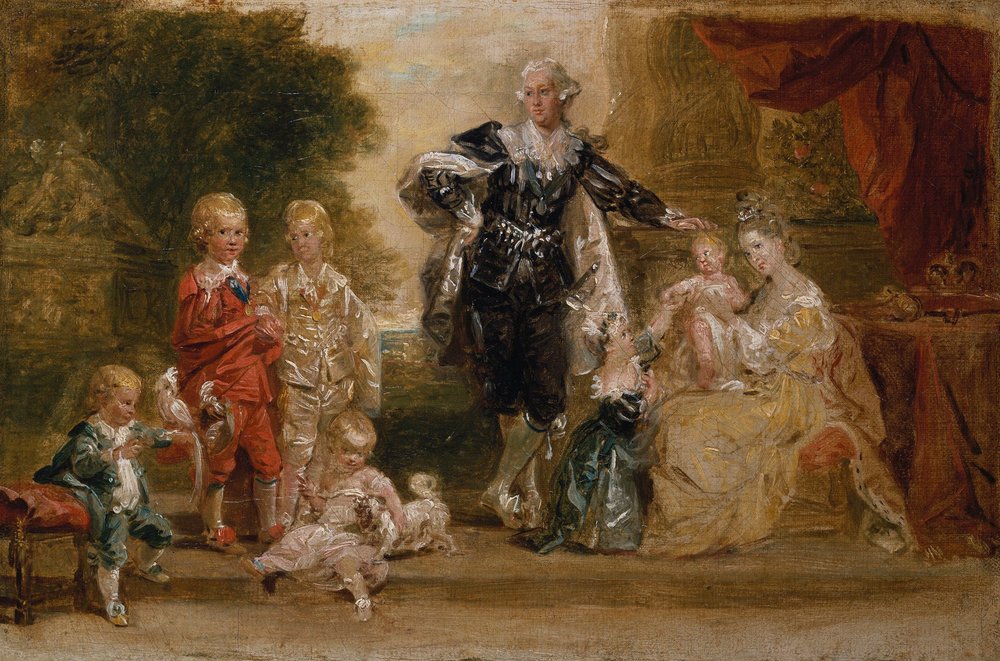
Fig. 3 George III, Queen Charlotte and their six eldest children, c.1769-70, Johan Joseph Zoffany (1733-1810) - Royal Collection Trust
One explanation has made sense during Blomberg’s lifetime and beyond – that he was in fact the illegitimate son of George III. Baptised two weeks after the King’s marriage, and one day after his coronation, it is unclear exactly when the child entered the royal nursery. He was certainly there in 1765, as in January that year Lady Charlotte Finch, known affectionately as 'Lady Cha'), noted that Queen Charlotte wished to have some separation for Blomberg (then only four years old) from the rest of the royal children; ‘The Queen determined to take Master Blomberg and allow him 50 pds a year and put him under Mrs. Cotesworth’s care.’[3] Mrs Cotesworth was the sub-governess to the royal children, while Charlotte Finch ran the royal nursery (she can be seen in the painting by Zoffany, the only non-royal included, holding a baby, probably Ernest (1771-1851), later Duke of Cumberland and King of Hanover (Fig. 4).
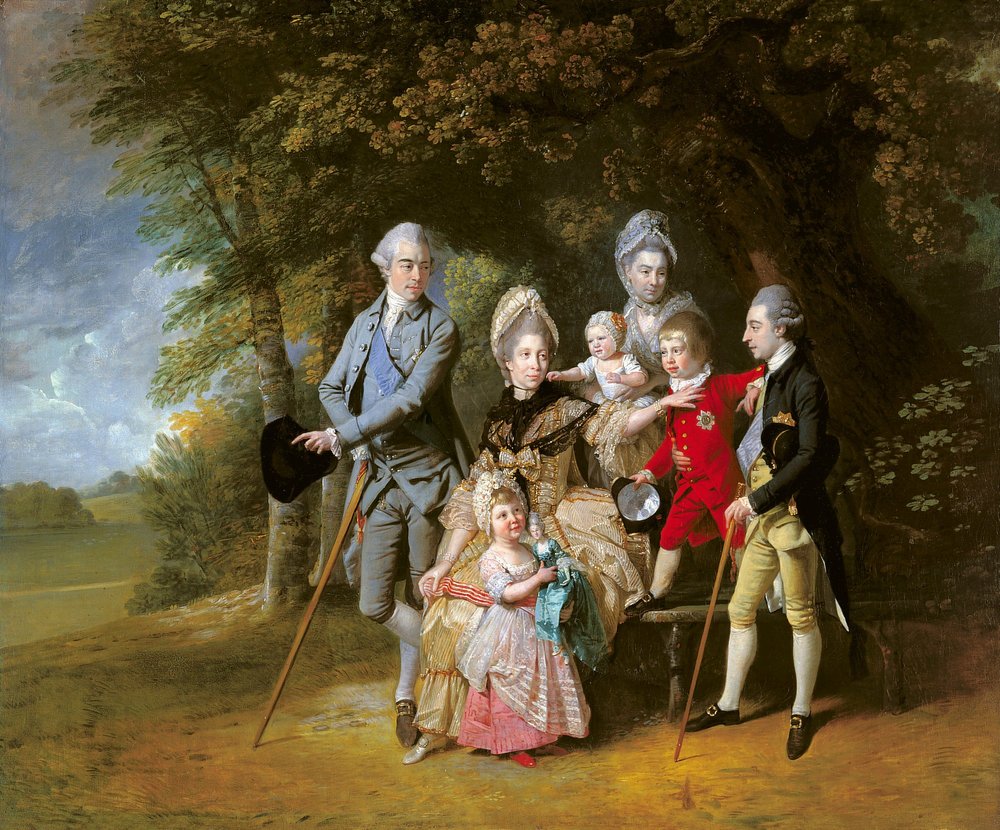
Fig. 4 Queen Charlotte with members of her family, c.1771-2, Johan Joseph Zoffany (1733-1810) - Royal Collection Trust
Whilst Blomberg’s striking resemblance to his adoptive siblings was noted, no evidence has emerged to clarify his parentage.[4] One explanation for his close likeness to the royal children was that, if not the son of the King, he could have been the offspring of one of the King’s brothers – most likely Edward, Duke of York. In 1760, as a handsome naval officer, Edward had enjoyed a reputation for his affairs with many women and may well have fathered a child born in 1761. If the child was not the King’s own illegitimate child, his sense of duty may have informed his decision to bring his nephew up among his own progenies.[5]
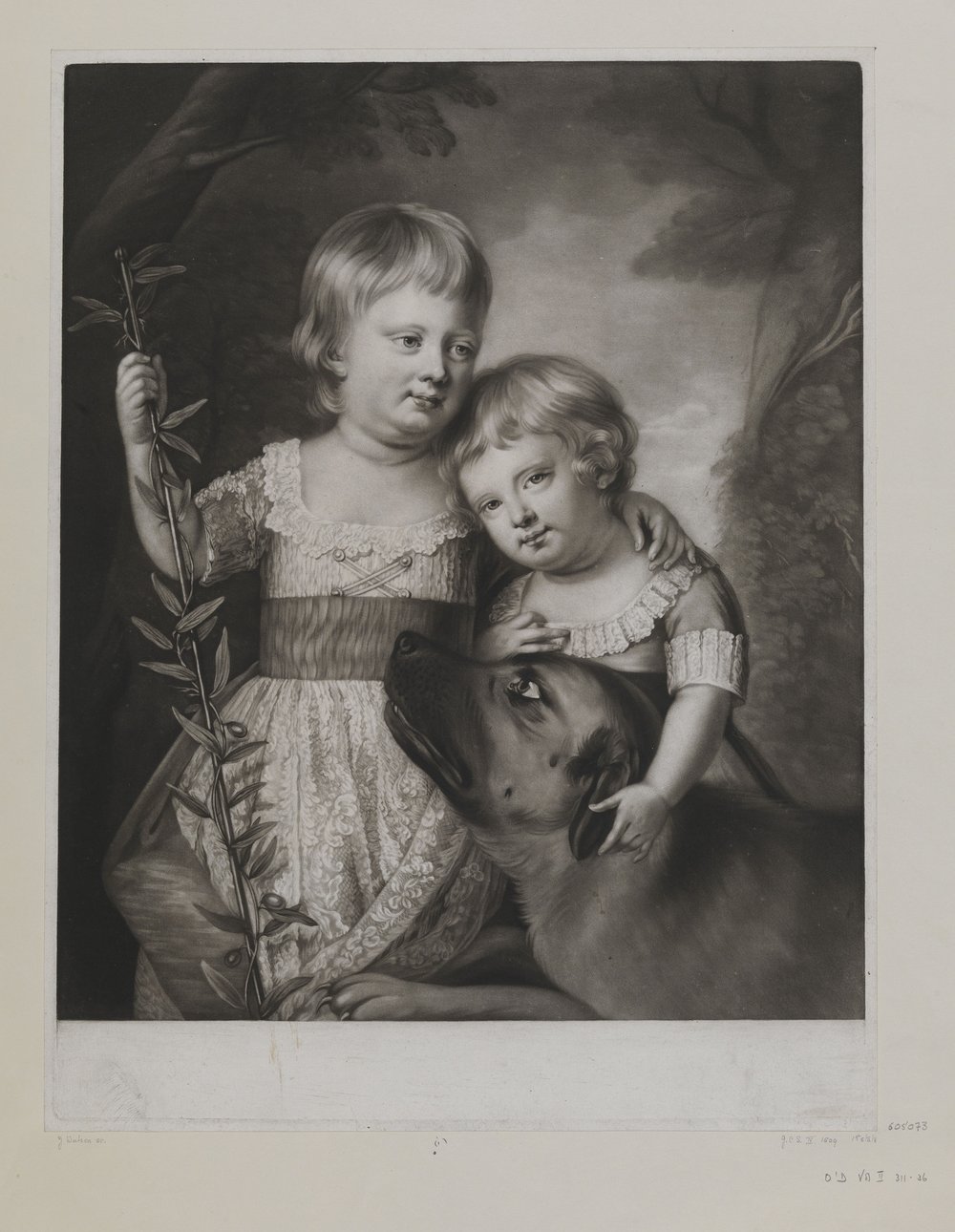
Fig. 5 [George IV and Frederick, Duke of York as Princes] c. 1766, James Watson (c.1739-90)- Royal Collection Trust
Blomberg’s royal upbringing and financial support from this grand family assisted his rapid rise in his chosen career in the church. After a Cambridge education, his positions included including Prebendary of Bristol (1790-1828) and Westminster (1808-1822) and Chaplain to George, Prince of Wales (the future George IV) between 1793 and 1830. His ambition cannot be explained by his talent as a preacher – as one contemporary observer noted, he was better suited to a career as a musician; ‘he was poor in his sermons, […] on the fiddle had few superiors.’ On Blomberg’s death in 1847 (after he had also served Queen Victoria as Canon Residentiary of St Pauls and as her personal chaplain), the Gentleman’s Magazine wrote a tactful obituary. Ignoring rumours of his ancestry, they simply stated that he lived ‘in intimate association with the children of King George III who always retained great affection for him’.
Speculation continued into Queen Victoria’s reign as to exactly who Blomberg had been and two books were published which investigated his close association with the Royal Family (The Unseen World in 1847 and The Journal and Memories of Thomas Whalley in 1863). Woven into the tale was now a ghost story, based on another book published shortly after Queen Charlotte’s death in 1818 (fig.6).[6] This story stated that, following the death of his father, Major Frederick Blomberg, who allegedly drowned enroute to Dominica, his ghost then supposedly appeared to the governor of Dominica to tell him the whereabouts of Blomberg’s two children, the orphaned offspring of a secret marriage, who were housed with a distant English relative. Moved by this story, Charlotte was then allegedly inspired to adopt the boy (although no mention is made of the fate of the other child).
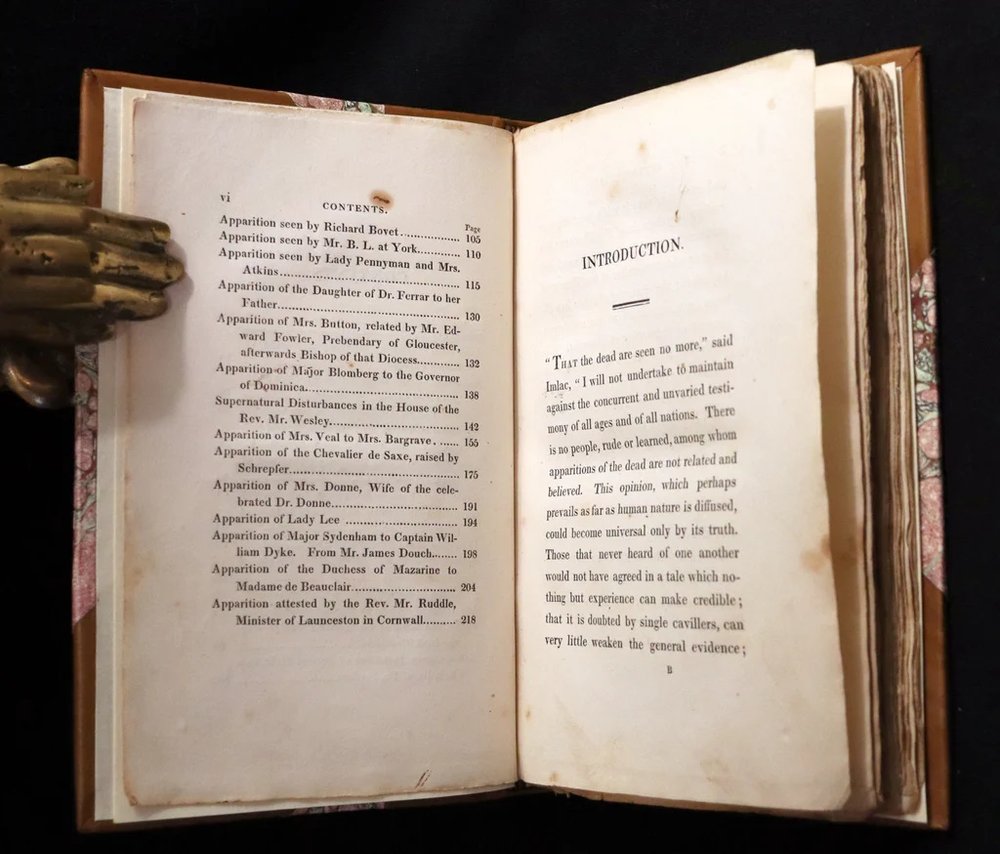
Fig. 6 T. M. Jarvis, Accredited Ghost Stories, London, J. Andrews, 1823
Apparently sketched in the Royal nursery, the little boy in this drawing (fig.1) looks lost and withdrawn. He has been portrayed surrounded by his accomplishments – including a violin, a notebook and a porte-crayon – some of the activities provided by the busy royal nursery, which at the time boasted a huge number of staff (from cradle rockers and dressers to reading masters, pages and porters).[7] Only one other image exists of Blomberg – a painting sold at Christie’s in 1982 – by Richard Brompton (1734-1783) (fig.7).
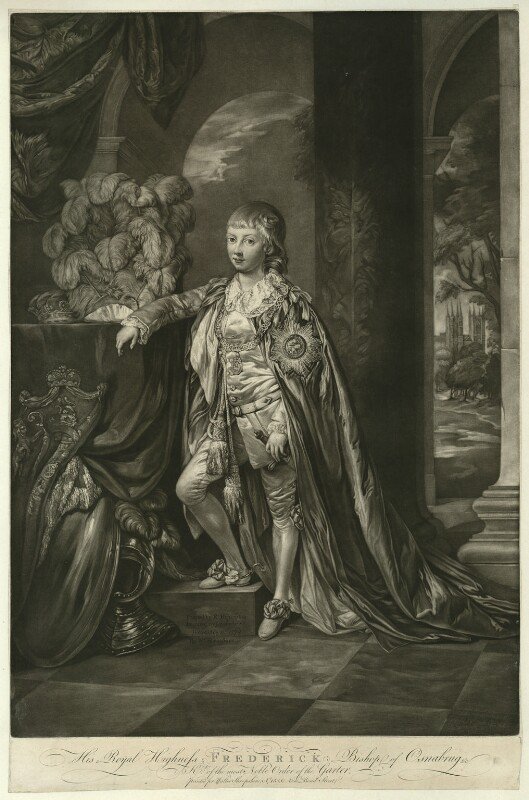
Fig. 7
Frederick, Duke of York and Albany, mezzotint by Joseph Saunders after Richard Brompton, published 1774 by Walter Shropshire- National Portrait Gallery, London
While we may never know the exact circumstances surrounding Blomberg’s presence in the royal nursery, the fact that he was welcomed into this exclusive environment is due cause for speculation surrounding his parentage. If he was not a child of George III’s, his presence illuminates the royal couple’s sense of duty – either to an orphaned boy or to the offspring of one of George’s brothers. Whatever the truth behind the boy’s background, this is one storyline where fact was stranger than fiction – take note Bridgerton…
[1] The others would have been: Prince Frederick, Duke of York and Albany - born August 16, 1763; Prince William (later King William IV) - born August 21, 1765; Charlotte, Princess Royal - born September 29, 1766; Prince Edward, Duke of Kent and Strathearn - born November 2, 1767 and Princess Augusta Sophia - born November 8, 1768.
[2] This group, said to have been commissioned by George III, is noted in O(E) : Oppé, A.P., 1950. English Drawings in the Collection of His Majesty The King at Windsor Castle, London, p. 54, the one of the Queen illustrated as plate 6.
[3] GEO/ ADDL 21/ 181.
[4] Alumni Cantabrigienses noted that Blomberg was a constant companion to the royal children and that he resembled some of them. He was admitted to St. John’s College in 1777.
[5] Although George III has been suggested as the child’s father in many sources, his infatuation with Lady Sarah Lennox in the years leading up to his marriage may have precluded any other extra marital affairs. It would also have been wholly out of character for George III.
[6] This story was published by Jarvis, T. M., Accredited Ghost Stories, London, J. Andrews, 1823, pp. 138-141.
[7] Details of staff are listed by Bucholz, Robert, "The Royal Nursery (1737-1768)" (2019). The Database of Court Officers 1660-1837. 99. https://ecommons.luc.edu/courtofficers/99
06 Aug 2023
Lessons in Line; the Importance of Drawing for Limners
One example of where it served a useful purpose is the genre of portrait drawings. With the turn of nineteenth century and the Royal Watercolour Society’s first public exhibition in 1804, a new appreciation for the genre was ushered in and portraits by miniaturists on paper became increasingly fashionable. Unlike traditional watercolourists, miniaturists were hindered by the size of the ivory discs onto which they could paint. Not only were larger pieces of ivory prone to splits and cracks, but the high level of detail required took far longer in this larger format than was economically viable for artists. Drawing in many ways became a solution for miniaturists who took their talent for precision and transferred it to works on paper so that could be hung upon a wall and appeal to this new marketplace.
Limners flourished in this freedom afforded by drawing, however it spread beyond their traditional practice and importantly into their informal studies. Both Richard Cosway (1742-1821) and John Smart (1741-1811) were trained at William Shipley’s Drawing School, and although abandoned the formal practice of draughtsmanship in exchange for pursuing portraiture, continued to derive an extraordinary amount of pleasure through observational studies and appreciation of drawing indeed as a practice of everyday life. One particularly interesting example are Smart’s Four Studies of Fish, executed in watercolour and pencil, that come from a sketchbook used by the artist on his return from India in 1795.[2]
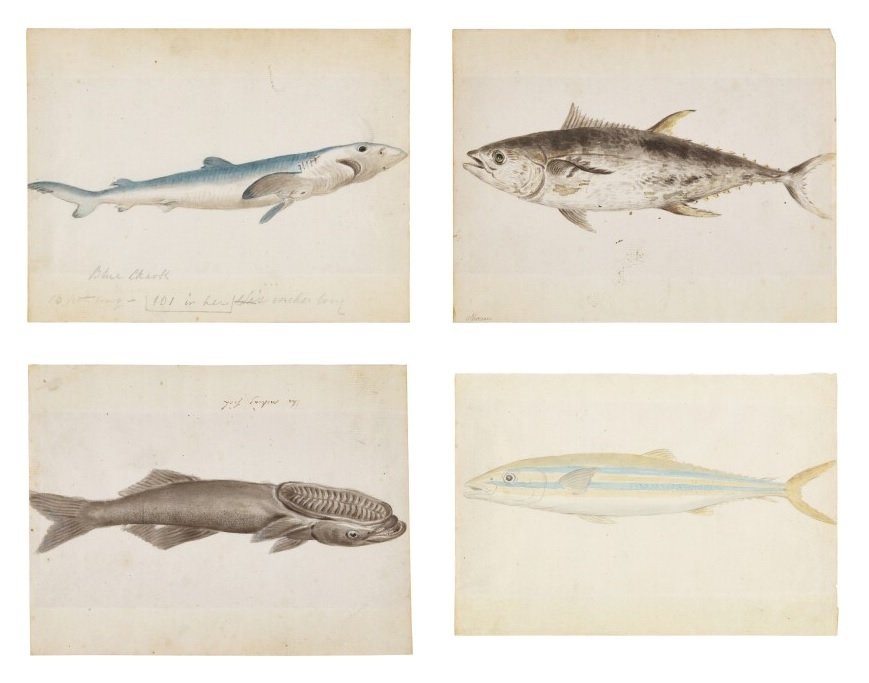
John Smart, Four studies of fish, including a Blue Shark, an Albacore, a Sucking Fish and another; watercolour over pencil on laid paper, each 150 x 194 mm - Sotheby's 2023
These highly detailed aquatic drawings feel a world away from the exquisite portraits of East India Company Officials and British aristocrats that marked this period out as Smart’s most celebrated. Whilst their precision further reiterates Smart’s flair for clarity, they importantly suggest that the artist considered drawing to be a practice he could dip into around his commissions; one that would enable him to examine and appreciate subjects beyond the formality of a portrait.
Around the end of the eighteenth century, Smart had begun training his son, John Smart Jr (1776-1809), in the art of limning and it appears that this appreciation for drawing was similarly inherited. Executed in 1798, Smart Jr.’s pencil study of Philip Hobby Knight, after Holbein (Fig.1), displays an equally superb faculty.
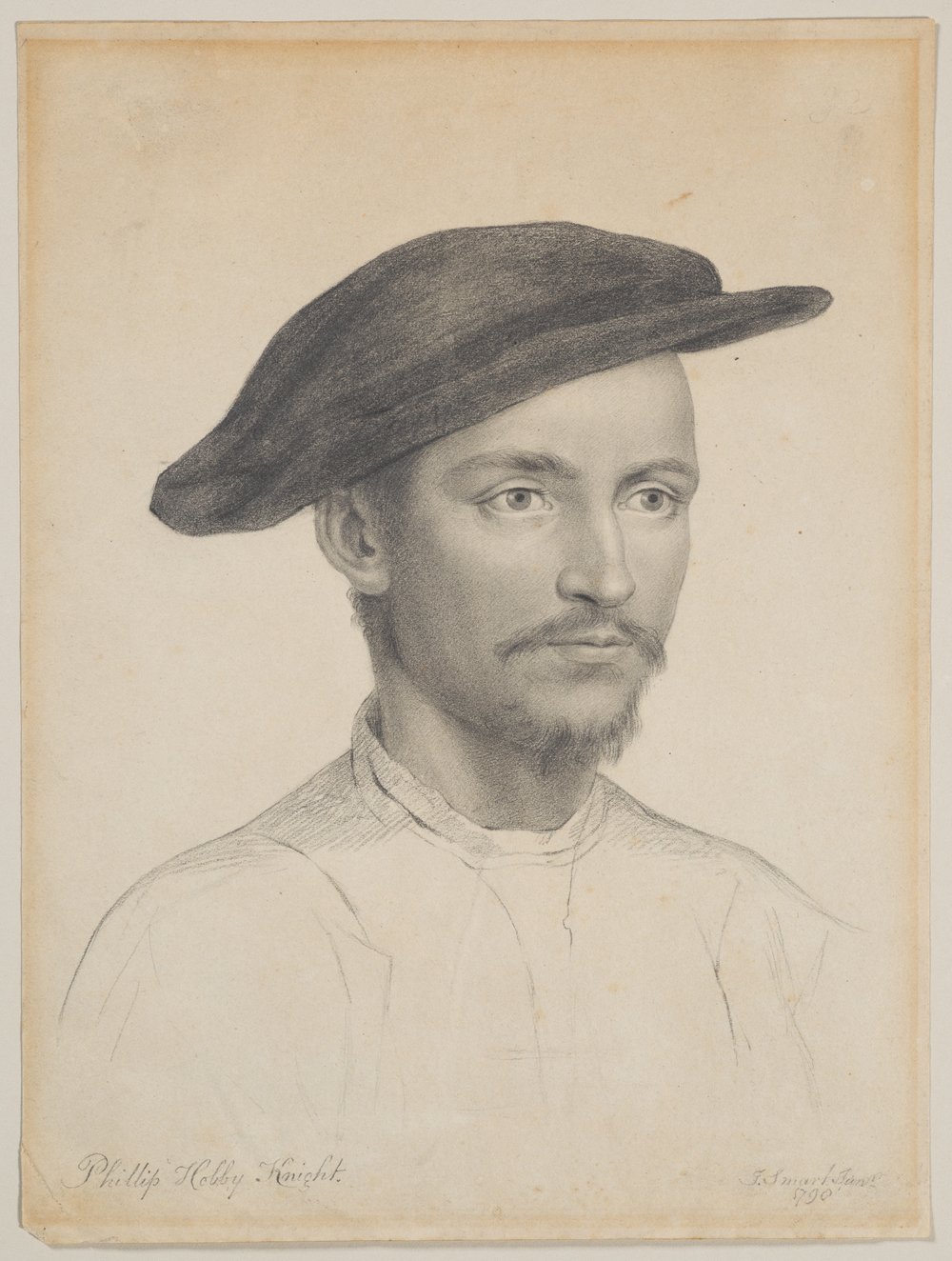
Fig. 1John Smart Jnr, Drawing of Philip Hobby Knight, after Hans Holbein the Younger, 1798
- The Metropolitan Museum of Art, New York
The image derives from a drawing made by Hans Holbein the Younger (1497/8-1543) that was part of a series of gentlemen associated with the English Court between 1532 and 1543. Smart Jr. did not work from the original but instead copied an engraving by Francesco Bartolozzi that was part of a printed series titled Imitations of Original Drawings by Holbein, in the Collection of His Majesty, for the Portraits of Illustrious Persons in the Court of Henry VIII published in 1796.[3] Executed around the time Smart Jr. was being trained, it could be presumed that this volume was part of his father’s collection and suggests that John Smart Sr. had both a heightened antiquarian interest Holbein and used these etchings as a way to study and emulate this talent in drawing.
Richard Cosway, the other leading miniaturist of the Regency period, was also a staunch admirer of the Old Masters. However, this went beyond interest as Cosway became widely known for his personal collection and talent as a consultant who was able to advise his wealthiest clients on the purchase of these works. The Royal Academy holds a dossier of Cosway’s collection from 1791 and includes in its title ‘the undoubted works of the great masters of the Florentine, Roman, Venetian, Lombard, Flemish, and Dutch schools.’[4] The classical themes of these paintings and drawings evidently bled into Cosway’s own practice, and many of his works on paper serve as evidence for his verdant interest in the resurgence of neo-classicism.
One particularly elegant example of this is a small pen, brown ink and pencil drawing from the 1790s (Fig.2) that depicts a graceful woman reclining upon a chaise lounge. Executed with sweeping sinuous lines, the lady is depicted in a classically-inspired dress. Whilst no associated painting or drawing has been identified, the artist’s heavy interest in Old Master paintings and drawings suggest inspiration to a certain extent. Cosway displayed a propensity for drawing from a very young age and studies of this sort appearing at the height of his career, in a form far from his finely executed portrait miniatures, show how drawing continued to not only inspire but encourage the artist in his ambition to become ‘someday the greatest artist in London’.[5]
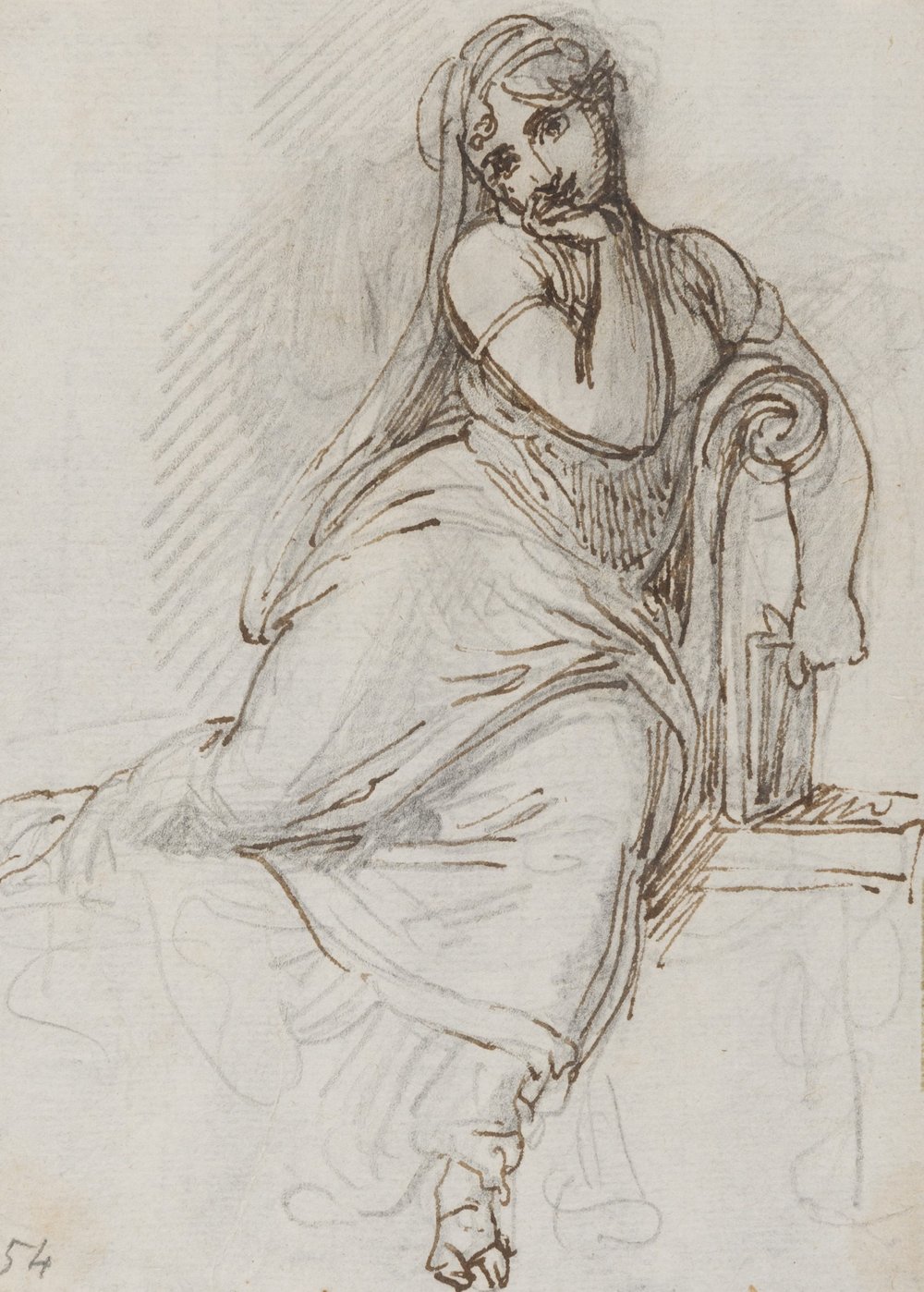
Fig. 2 Richard Cosway, Study of a Vestal Virgin, circa 1790s- The Limner Company
Whilst there has been a great deal discussed surrounding the importance of drawing for male limners, less has been examined on its significance for women artists. In fact, in many ways drawing opened the doors for women to enter the regulated world of portraiture and male-dominated spheres that demarked artistic society. As Catherine Tilney exclaims in Jane Austen’s Northanger Abbey (1803), ‘…she confessed and lamented her want of knowledge, declared that she would give anything in the world to be able to draw…’. One successful female miniaturist who dipped between both drawing and limning was Emma Eleonora Kendrick (c.1788-1871), who was prominent at the same time as both John Smart and Richard Cosway. Having most likely received her formal artistic training under her father, the sculptor Joseph Kendrick, Emma, a member of the New Water-Colour Society, went onto exhibit her works at the Royal Academy of Art between 1811 and 1840. She often held royal patronage and her miniatures of British Nobility were praised for their depth of colour and heightened level of detail.
Kendrick’s watercolours and drawings, albeit less known or appreciated than her miniatures, offer a fascinating insight into the woman as an artist. One in particular, an ink and wash study on paper (Fig.3), does not appear a world away from Cosway’s Vestal Virgin. This work depicts an elegant woman glancing to something out of the left of the composition.
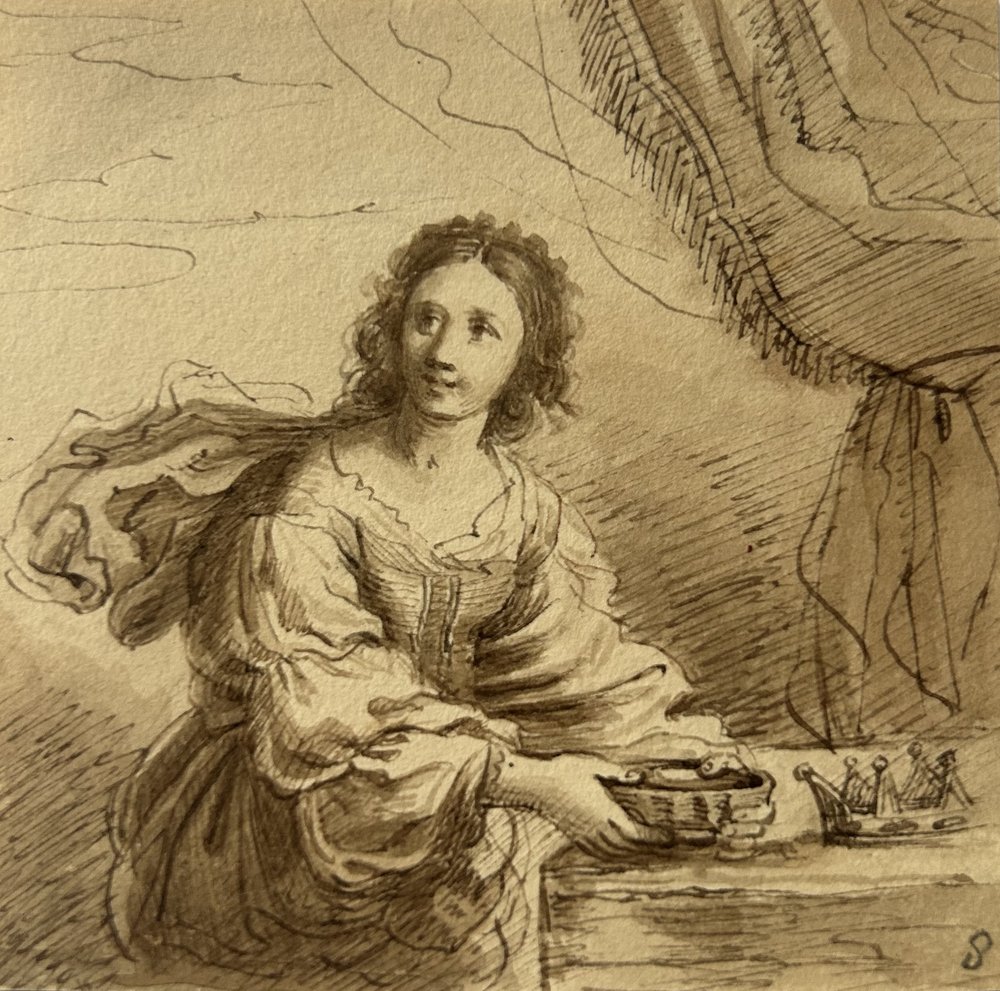
Fig. 3 Emma Eleanora Kendrick after Guercino, Sophonisba with the bowl of poison- The Limner Company
It is believed to have been copied from a work by Guercino (1591-1666) in the Royal Collection. Kendrick is known to have made watercolour copies of various 16th and 17th century Italian painters including masters including Niccolò dell’Abbate and Guercino. As a successful miniaturist in her own right, Kendrick appears to have turned to drawing for other purposes. This may have been for pleasure like Smart, studying an Old Master in a manner so as to broaden her studies beyond the formal constraints of typical portrait compositions, or like Cosway, seemingly turning to the Old Masters as a source of inspiration. However, what differentiates Kendrick’s work from both Smart and Cosway’s is the idea of a woman artist using watercolour and drawing as a vehicle through which she could engage and secure the idea of female craftsmanship throughout history.
In many ways then, drawing appears to have fallen hand in hand with limning during its height in Georgian and Regency England. Artists such as John Smart, Richard Cosway and Emma Eleanora Kendrick turned to the medium in a break from the constraints of limning materials. With a heightened commercial interest in the genre, artists also used drawing in a practical manner. However, in the works than appear furthest from the formality of portrait miniatures, the most is discovered about the artist. From the sea creature drawings of John Smart on his way back from India to Kendrick’s reimagining of revered masterworks, the pleasure derived from drawing appears to have had a profound influence upon the artist in their examination of the natural and social world around.
[1] Ann Bermingham, Learning to Draw: Studies in the Cultural History of a Polite and Useful Art, New Haven & London, 2000.
[2]Sold, Sotheby’s London, Old Master & British Works on Paper, 6th July 2023, lot 153. - https://www.sothebys.com/en/buy/auction/2023/old-master-british-works-on-paper/four-studies-of-fish
[3] The portrait of Philip Hobby is plate 39. John Smart Jr.’s drawing is now held in the collection of The Metropolitan Museum of Art in New York City, accension number: 2022.25.1. https://www.metmuseum.org/art/collection/search/854137
[4]For more information see the catalogue entry on the Royal Academy Website (record number 23/431): https://royalacademy.org.uk/art-artists/book/a-catalogue-of-the-entire-collection-of-pictures-of-richard-cosway-esq-r-a (accessed: 21st July 2023).
[5] G.C. Williamson, Richard Cosway, R.A., and His Wife and Pupils: Miniaturists of the Eighteenth Century, (London, 1897), p. 1.
Bethany Perry is a freelance researcher and writer based in London. She previously worked for Sotheby's in their Impressionist & Modern and Modern British Art Departments and prior to that was a Graduate Intern at Philip Mould & Co. Contact: bethanygperry@gmail.com.
17 Jul 2023
The Hidden Meaning of Hair in Portrait Miniatures
Portrait art of the quattrocento era of the Renaissance saw a distinct shift from the generic representation of everyday people to an increased interest in individual identity. "After many centuries in which generic representation had been the norm, distinctive portrait likenesses began to reappear in Europe in the 15th century. The resurgence of portraiture was thus a significant manifestation of the Renaissance in Europe"[1]. Portrait miniatures were objects used to establish political or economic alliances or to aid in the arrangement of marriages and often had diplomatic significance.[2] This aesthetic shift towards the representation of the individual in portraiture, set in motion the desire for items of sentimentality, which would flourish in the centuries following.
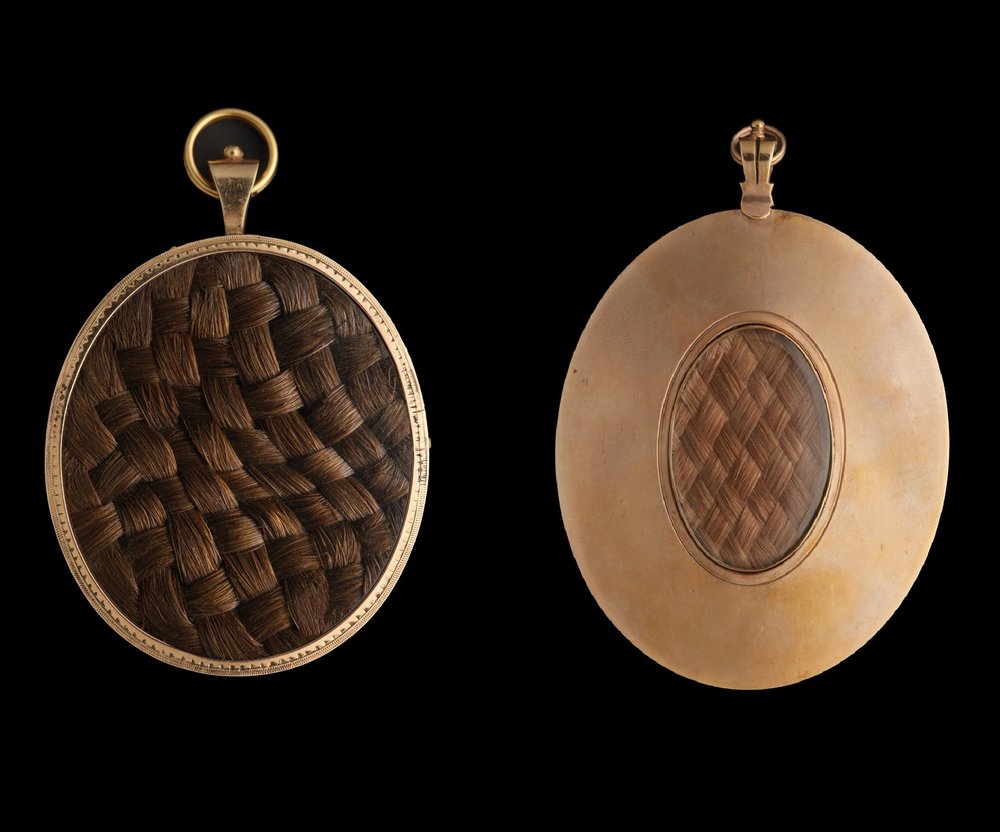
Left to right: hairwork reverse of portrait miniature of a Lady wearing a turban, c.1770, by Richard Cosway (1742-1821); hairwork reverse of portrait miniature of a child possibly of the Graham family, 1786, by Diana Hill (nèe Dietz) (c. 1765-1844) - both The Limner Company.
The Romantic Period was born in revolution and spurred on in a flurry of art, literature, poetry, and music. Revolt against established monarchy and religious institutions were the shifting sands of societal change which became the foundation for the French Revolution. The aftermath of this social and political upheaval was the promotion of individualism and emotion. "Whereas during the Renaissance portrait miniatures had served political or economic marital alliances, in the 18th and early 19th centuries they cemented true romantic and familial attachment"[3]. The exchanging of human hair had long been practiced across Western cultures and is detailed in the poet works of English writer, John Donne, as early as the 16th century. Hair's resistance to decay alongside it's ubiquitous and intimate nature, made it an appealing item to exchange during periods of separation, in a time which pre-dated the invention of photography. Art historian, Marcia Pointon, describes these long periods of absence as “institutionalised separation: the grand tour (leading to lengthy sojourns in Rome by young aristocratic men), military and naval campaigns, mercantile expansionism, and emigration generated the conditions for the production and circulation of portrait-objects”[4]. When we consider the act of gifting hair as a token of love or tangible 'forget-me-not', we understand the deep connection between the giver and the recipient.
It is important to understand the social context of hair gifting to appreciate the true sentiment behind these jewels. The giving of one's hair was regarded as the giving of one's self and was to be done with the upmost sincerity. Social etiquette developed around the practice of gifting hair; "a young unmarried woman could receive such a memento from male and female relatives and female friends, [however] she could accept one only from a man to whom she was betrothed. A young woman could exchange a lock of hair with an admirer at his request, but only if neither lock were set into jewellery"[5]. These social parameters when observed retrospectively offer clues into the relationships between gift giver and recipient. "The hair's filament would transmit one's self to another, and as the recipient took possession of the gift, he or she accepted the giver's self"[6]. The social value placed upon hair made it a popular incorporation across almost every variety of jewellery and by the 18th century hairwork was used to make decorative backs to portrait miniatures worn as necklaces[7] (see for example Victoria and Albert Museum P.98-1962). The significance of gifting hair, alongside the material cost and labour intensity of producing portrait miniatures, alludes to the deep sentimental importance of these objects to the individuals depicted within them and their significance as object memory in documenting social connections of the time.
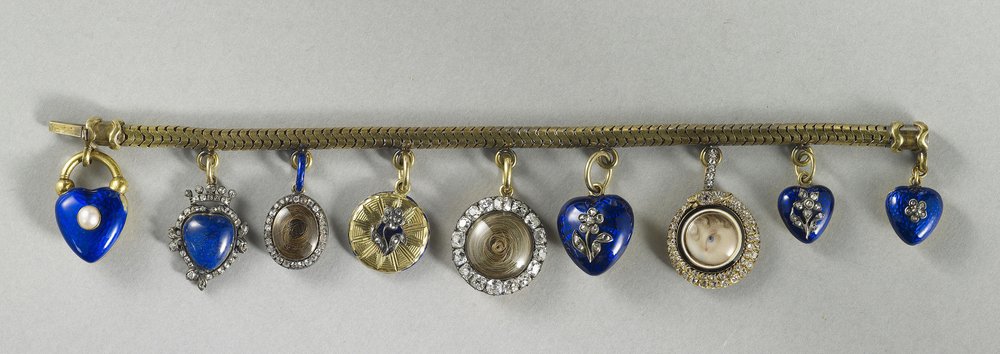
Bracelet with nine lockets, one with a miniature of the left eye of Charlotte, Princess of Wales (1796-1817); early nineteenth century, British School - Royal Collection Trust / © His Majesty King Charles III 2023
The deep sentimentality of portrait miniatures and the inclusion of hairwork made these objects even more significant upon the death of the sitter. The poignancy of hairwork serving as a relic of the deceased, coupled with a person's portrait or even a partial portraiture, as observed in 'lover's eye' jewellery, was often the only tangible connection left of a loved one. "Because hair does not decay, it was a way to immortalise loved ones back in the day. These objects were emblems of love that acted as personal records of family and friends, both living and deceased"[8]. The popularity to include hair in portrait miniatures, coincided with the fad for relic which had been perpetuated throughout Anglo-American and Western European culture by the Romantic movement. As this movement converged into the Victorian era, the catalyst for mourning jewellery erupted with Queen Victoria's own personal mourning of her husband, Prince Albert. This gave rise to an entire industry dedicated to hairwork and mourning fashion. "It was very fashionable to wear portrait medallions as jewellery at the end of the 18th century and into the first two decades of the 19th century...these two were used for mourning or as love tokens"[9]. Painted portrait miniatures began to fade into obscurity as the invention of photography took favour, however, the inclusion of hair mounted on the reverse of these portraits remained popular into the late Victorian era.
The inclusion of hair within the mountings of portrait miniatures was to represent the sincerity of the sitter and was transformed into relic upon their death. Together these items serve as poignant and tangible connections to those who came before us. The popularity of hair being incorporated within portrait miniature works is a testament to the transformation of these items, from tangible aids used to accommodate political or economic alliances, to items representing deep love and loss.
[1] Sorabella, J 2007, Portraiture in Renaissance and Baroque Europe, Blog post, August 2007, viewed 20 June 2023; <http://www.metmuseum.org/toah/hd/port/hd_port.htm>
[2] Sorabella, J 2007, Portraiture in Renaissance and Baroque Europe, Blog post, August 2007, viewed 20 June 2023; <http://www.metmuseum.org/toah/hd/port/hd_port.htm>
[3] Zohn, K 2011, 'Tokens of imperfect affection: portrait miniatures and hairwork in sense and sensibility', Jane Austen Society of North America; vol. 32, no. 1, viewed 19 June 2023; Kristen Miller Zohn (jasna.org)
[4] Pointon, M 2001, 'Surrounded with brilliants: miniature portraits in eighteenth-century England'; The Art Bulletin, vol. 83, no.1, pp 48-71.
[5] Zohn, K 2011, 'Tokens of imperfect affection: portrait miniatures and hairwork in sense and sensibility', Jane Austen Society of North America; vol. 32, no. 1, viewed 19 June 2023; Kristen Miller Zohn (jasna.org)
[6] Sheumaker, H 2007, 'Love entwined: the curious history of hairwork in America', University of Pennsylvania Press, Pennsylvania.
[7] Gollar, K 2017, 5 things you didn't know about hairwork and portrait miniatures; Blog post, 26 May 2017, viewed 20 June 2023; 5 Things You Didn’t Know about Hairwork and Portrait Miniatures - Cincinnati Art Museum
[8] Gollar, K 2017, 5 things you didn't know about hairwork and portrait miniatures; Blog post, 26 May 2017, viewed 20 June 2023; 5 Things You Didn’t Know about Hairwork and Portrait Miniatures - Cincinnati Art Museum
[9] Luthi, A 1998, 'Sentimental jewellery', Shire Publications Ltd, Oxford.
Teaghan Hall is a Fine Art graduate with a special interest in portrait miniatures, mourning and hairwork jewellery. Teaghan works at Kalmar Antiques in Sydney, Australia and writes across jewellery industry publications. @teaghantique
29 Jun 2023
Nicholas Hilliard’s Parisian Atelier
While reading Elizabeth Goldring’s new monograph on Nicholas Hilliard (1647-1619), I was most anxious to discover what she had written about my all-time favourite artist in Paris and what she may have discovered while I was researching the same topic at the same time. One note struck me, about Hilliard’s whereabouts in Saint-Germain des Prés, back in 1578 where he is supposed to hold a studio.
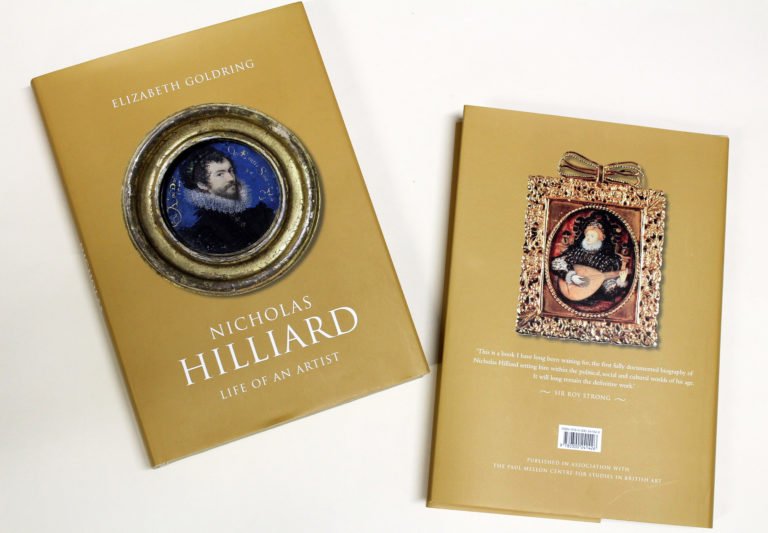
Fig. 1 Elizabeth Goldring’s new publication: Nicholas Hilliard: Life of an artist, Yale University press, 2019 © Yale University Press
Saint-Germain des Prés in the Late Sixteenth Century:
Sixteenth-century Paris was surrounded by city walls, built by Philippe-Auguste in the end of the twelfth century (Fig. 2 illustrated in blue). Within the walls, work and daily life were heavily regulated, whereas fewer rules applied outside the walls. This allowed foreigners, including Huguenots, to settle in the boroughs surrounding Paris, the most important one being Saint-Germain des Prés.
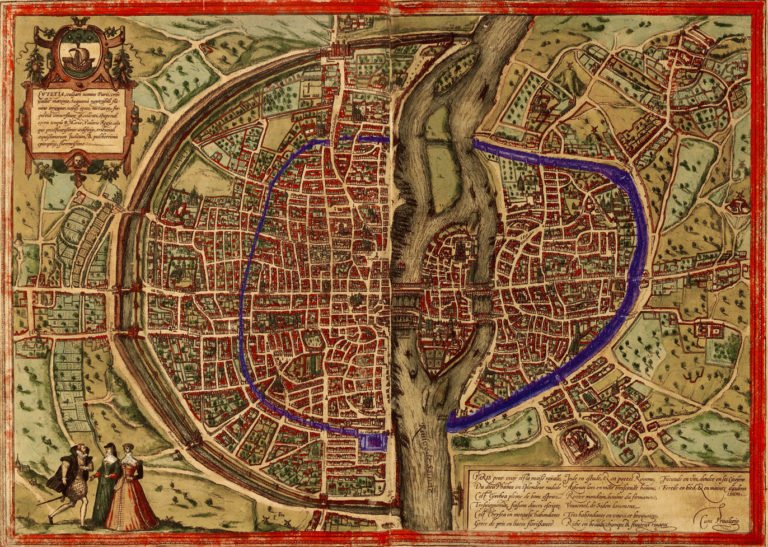
Fig. 2 Sebastian Münster, Map of Paris and its surroundings, 1572. Source: Wikimedia Commons. In the lower right corner, Saint-Germain des Prés.
As a foreigner, and a protestant, there was no way that Hilliard could have set up a studio on his own. In order to settle down in Paris, a foreigner had to become a journeyman for a master for several years, and upon producing an œuvre and paying the corporation’s fees, he would have become a freeman of the corporation and set up his own workshop.
By working for the court, Hilliard did enjoy some privileges, as did almost all artists patronised by the royal family. He was able to work within Paris for some time, almost unobserved, which is why most of the extant works from this period are court or English embassy related - these miniatures being painted in a private circle and with the protection of the King’s brother or the ambassador. However, this protection seemed to end in March 1578 when the Duke of Alençon was preparing for war in Flanders, and having no need for a painter, released Hilliard (along with a great other number of valets) in order to surround himself with warlords and soldiers. It has been suggested that Hilliard would have worked for Louise de Lorraine (then likely to be in 1578) but no archival records have been found so far that can confirm this hypothesis. We must then suppose that, from March 1578, Hilliard was on his own in Paris and, as he explained to the English ambassador Sir Amyas Paulet, willing “to increase his knowledge by this voyage and upon hope to get a piece of money of the Lords and Ladies here…”.[1] It is at this point that Hilliard decided to set up a studio in Saint-Germain des Prés, where the presence of foreign and/or protestant artists, but also wealthy commissioners, was already established.
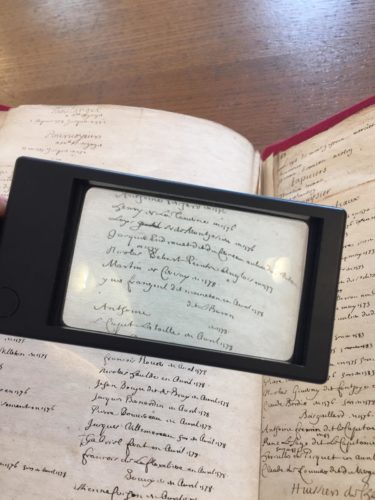
Fig. 3
‘Nicolas Beliart, painctre anglois en 1577’ Accounts of François d’Alençon (later copy and sum up), Bibliothèque Sainte Geneviève, MS 848 © Céline Cachaud Mars 2019
Nicholas Hilliard’s Studio - Methodology:
In November 1578, Nicholas Hilliard is busted working as a goldsmith in Saint-Germain des Prés.[2] Hilliard was considered a painter, and as such he was not permitted to do goldsmith work in Paris or Saint-Germain des Prés, because they were both sworn professions. The guard’s report states that Hilliard refused that the guards enter his house and that in exchange he gave three fellins of gold.[3] This is the only time when Hilliard is considered as a goldsmith, but as a journeyman rather than a freeman.
The given address is quite precise: ‘aux faulx bourgs sainct Germain des prez prés le jeu de paulme des Canettes’. The rest of the affair is not known; Hilliard was supposed to appear and be judged but there has no more information on the matter. It is likely then that Hilliard fled the city or asked for Royal protection and then quickly came back to London. A boat, bringing the Wardrobe Master of Alençon, arrived in London on January 3rd 1579 to set up his master’s visit next year. Hilliard possibly returned to England with him or around the same period.
So where was Hilliard’s house? My research started with a street that exists today in Saint-Fermain de Prés called ‘rue des Canettes’. Then I looked for every ‘jeu de paulme’ - rackets court, but more generally a place where people would play (and gamble). I drew up a chart with all known rackets courts in the borough during the period Hilliard was in Paris (Fig. 4), but none could be found associated with an address of ‘Canettes’ in sixteenth-century Saint-Germain des Prés.
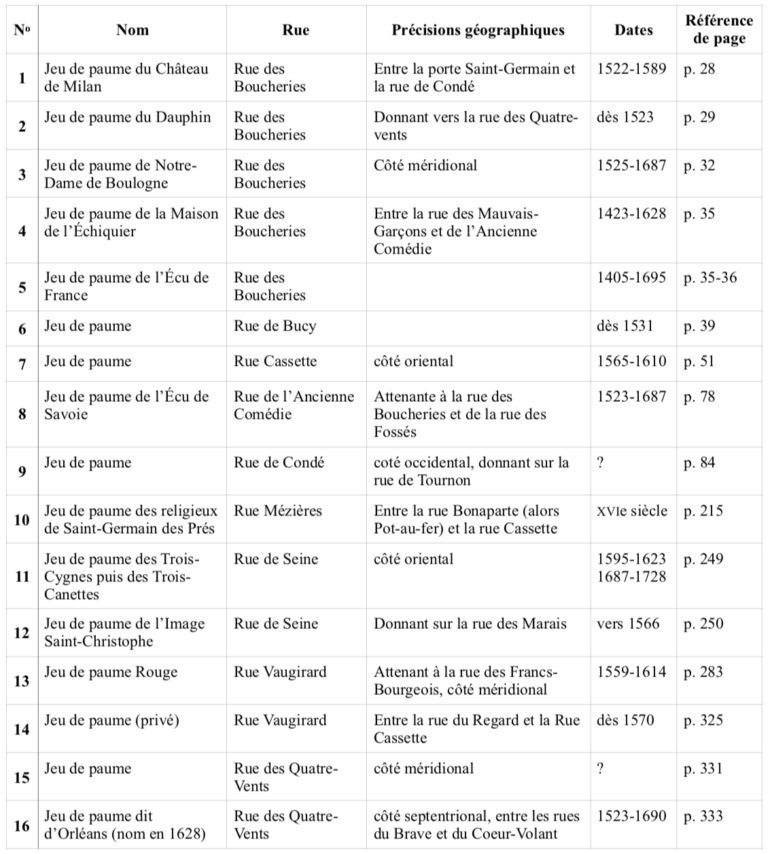
Fig. 4
Chart of the racket courts in Saint-Germain des Prés in the sixteenth century according to Berty’s Topographie historique du Vieux Paris © Céline Cachaud Septembre 2017
I decided to go back to the sources and maps. I checked that the main street mentioned in the report was indeed ‘Faulx bourgs Saint-Germain’, and considered that he may have lived on this street where several rackets courts are nearby (Fig. 5 illustrated in orange). The position would have been quite strategic, positioned in front of the city gate, allowing the Parisian guards (and not those from Saint-Germain des Prés) to extend their jurisdiction and visit Hilliard’s house. Also, it was one street away from where his friend and first ‘landlord’ (so to speak) lived.[4]
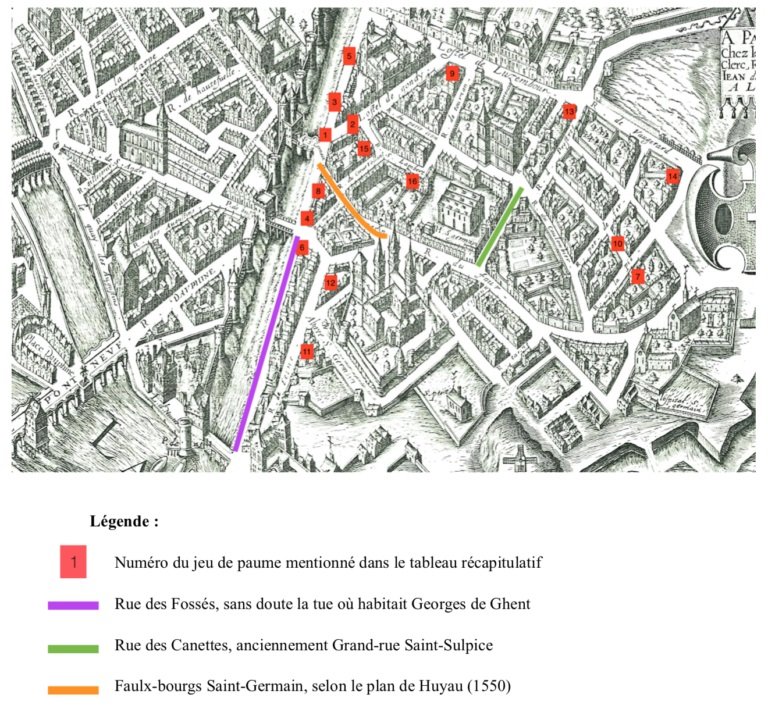
Fig. 5 Map of Saint Germain des Prés in 1609 said ‘Vassalieu map’ © Bibliothèque nationale de France et Céline Cachaud Septembre 2017
My research had ended here but then I read Goldring’s book. She suggests that the house would have been near the racket courts called ‘Les Trois Cygnes’ - which translates as ‘The Three Swans’, and the sign could have been misread by the guards as ‘ducklings’. I realized that, even though it’s included in my chart above (number 11), I had overlooked this one. Called The Three Swans between 1595 and 1623 and then The Three Ducklings from 1687 to 1728, the residence opened on the oriental side of the rue de Seine. How did I miss it? The archival records indicate the dates for this rackets court as from 20 years after Hilliard’s visit, so I had concluded the court may not have yet opened in the 1570s. Consequently, Hilliard may have lived further north on the faulx bourg or in the rue de Seine. It is an information that, unfortunately, will be almost impossible to confirm.
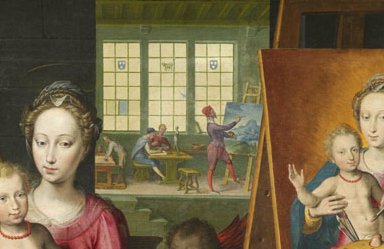
Fig. 6
Nicolas de Hoey, Saint Luke painting the Virgin and the Child, detail of the painter’s workshop, 1603, Musée des Beaux-Arts de Dijon © François Jay – MBA Dijon
So where did Hilliard live in 1578?:
The exact spot doesn’t really matter, especially as the entire borough has been rebuilt over and over again and the workshop is long gone. A great part of this area regularly visited and ravaged by the royal army in search of Protestants to kill, especially from 1572 until the end of the religious wars in 1594. According to Adolphe Berty, the borough was rebuilt in 1595, which is why very few records are kept from before this date. It is likely that the rackets court was rebuilt at the same time.
Saint-Germain des Prés was also a fashionable place to be in the sixteenth century. Lords would settle down in the North of the borough, allowing them to be close to the city while living in the ‘countryside’. Saint-Germain was also well positioned for it’s proximity to the Louvre – just a few minutes’ walk - where the artists would take their position at the royal court. They would then enjoy a freer environment, which is why a great number of painters lived there by the end of the sixteenth / early seventeenth century and beyond, including Jooris van der Straeten, Hieronymus Francke (a Flemish artist, later also Louise de Lorraine’s painter), Jacob Bunel (painter to Henri IV, and his wife) and limners such as Marguerite Bahuche, etc. It would then be very interesting to carry on the research on how limners used to work within the Saint-Germain’s legal framework, compared to the Parisian agreements. But that’s for another tale.
[1] Public Record Office (London), S.P. (France) 78/2/16.
[2] As a miniaturist using limners’ techniques, it is likely that Hilliard’s statue was quite complicated – limning and illuminating was a free profession, not subject to swear an oath as other painters did. Yet, the recent discovery of two panel portraits, likely to have been painted by Hilliard in France, support the idea that he was working under the statutes of the painters, hence a métier-juré.
[3] Fellins is a small measuring unit for gold, equivalent to around 1/24th of an ounce, that is to say 0,38g.
[4] Jooris van der Straeten, painter to Queen Louise de Lorraine, mentioned in his will of April 1577 that he lived in the ‘rue des Fossés’, in front of the city walls and a bridge away from the Louvre. If Hilliard would have become painter to the Queen, it is likely to be also through his friendship with Straeten, and his employment to Alençon, that it would have happened.
Céline Cachaud is a specialist of French and English Renaissance portrait miniatures, PhD student at University of Geneva and librarian at Musée du Louvre. Find Celine’s online research notebook here https://hilliyarde.hypotheses.org/
29 Jun 2023
Finding Sir Rowland…a new identity for a portrait miniature by John Smart
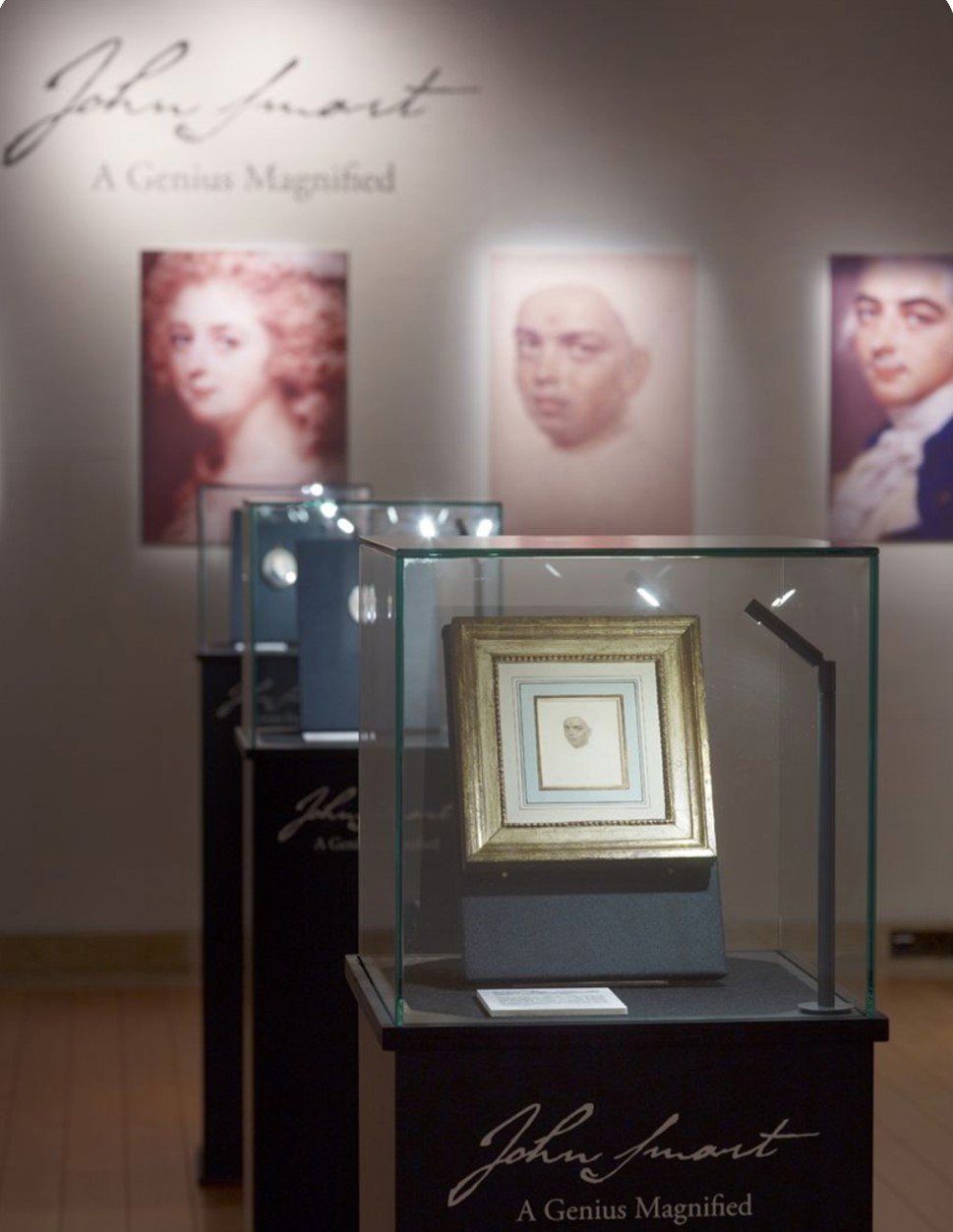
Fig. 1
Image of the 2014 Exhibition ‘John Smart; A Genius Magnified’, held at the Philip Mould Gallery, Dover Street, London.
Lawrence and I paid the same attention to detail to the sitters in the collection. Scanning the multiple files in the Witt Library next to the Courtauld Gallery of Art, we were able to give many sitters back their lost identity. This work also included attempting to match the sitter’s with the drawings Smart prepared in advance of painting his miniatures. But there is always more to discover in the art world – and in checking a Christie’s sale catalogue of the 1960s I saw a familiar face staring back at me in black and white. When I read the description, I discovered that the first miniature we included in the exhibition catalogue – an exceptional and early work by the artist – had a name.
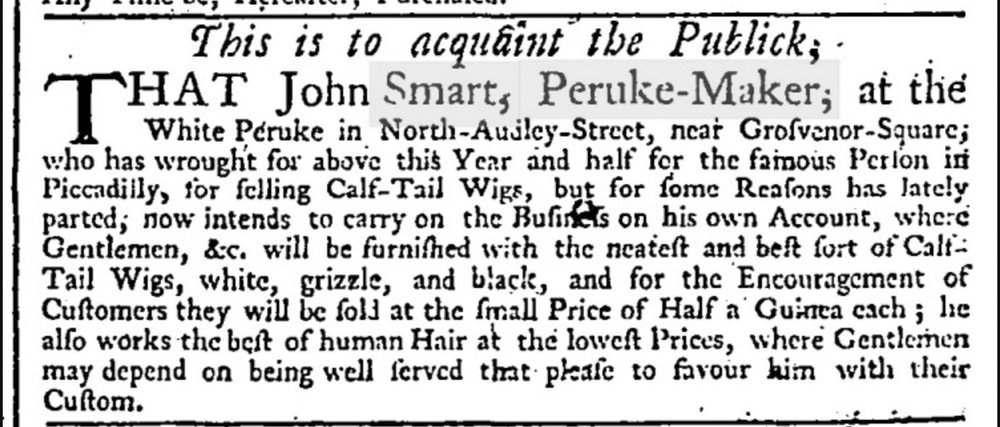
Fig. 2 Daily Advertiser on 12 and 17 November 1744, showing an advertisement by John Smart’s father, also called John. It appears that John Smart was born 20 January 1741, baptised 24 January 1741 to a John Smart and Mary, at St Luke’s, Old Street, Finsbury.
The miniature had in fact come directly from the collection of 4th Baron St. Oswald of Nostell (1916-1984), descended through the family of the man who had built Nostell Priory (now National Trust). It was mysteriously withdrawn on the day of the sale, so there is still further work on the provenance to discover where it had been between the sale and a German dealer named Karin Henninger-Tavcar, who sold it to a private collector in 1990. Wherever the miniature had been, it was now known to be of Sir Rowland Winn (1739-1785).
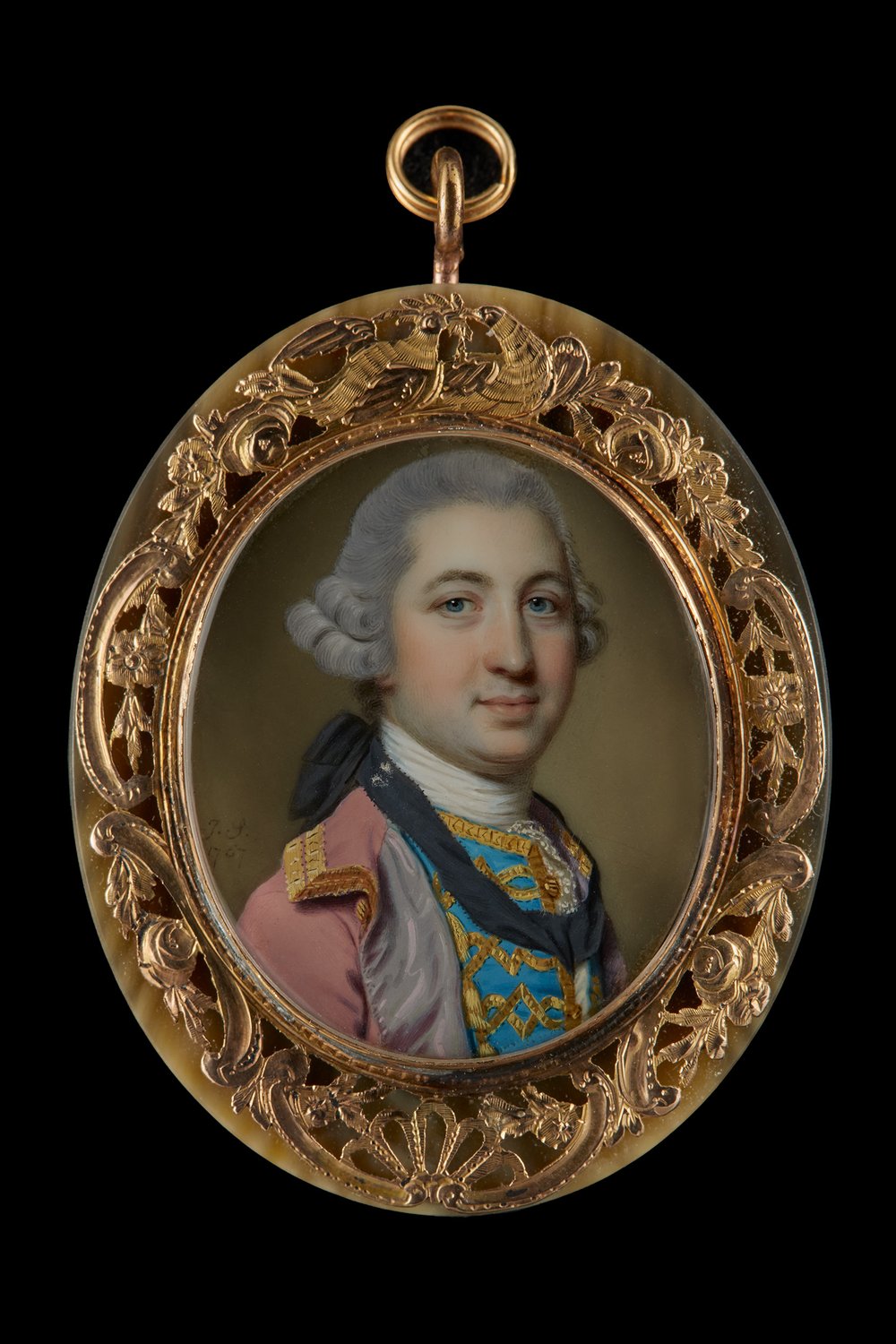
Fig. 3
John Smart (1741-1811), portrait of Sir Rowland Winn, 5th Bt. (1739-1785), dated 1767.
- The Limner Company
This particular miniature by John Smart had stood out in the collection which arrived at the Philip Mould gallery in 2014. Unusually well painted for this early year in Smart’s career, the sitter was also wearing exceptionally striking clothing of a pink coat, lined with lilac silk and trimmed with gold brocade, contrasting with a surprising bright blue waistcoat trimmed with the same ostentatious brocade. The lilac lining also matched the sitter’s hair, which had been powdered with a grey-lilac hue. Smart’s forensic attention to detail was evident in the miniscule knots which lined the length of the black silk ribbon used to tie the sitter’s ponytail. The sitter was clearly confident and fashionable – and undeniably rich.
Sir Rowland Winn, the sitter in the Smart portrait, was also painted by the Irish Hugh Douglas Hamilton (1739/40-1808) in the same year.[2] Here Sir Rowland wears an equally striking outfit of red jacket, pale turquoise waistcoat with gold brocade and yellow breeches. His wife, Sabine Louise d'Hervart (1734 -1798), stands next to him in an ermine-trimmed satin gown. The couple were painted in their newly-built home, Nostell Priory, and are shown in the library designed by Robert Adam with various pieces of furniture, including the important library table made by Thomas Chippendale. It is likely that the miniature by Smart was commissioned by Sir Rowland for his wife to wear. Their marriage had met with much opposition, with Sir Rowland’s family concerned with family reputation as Sabine was not only a widow but Swiss (i.e. foreign) to boot.
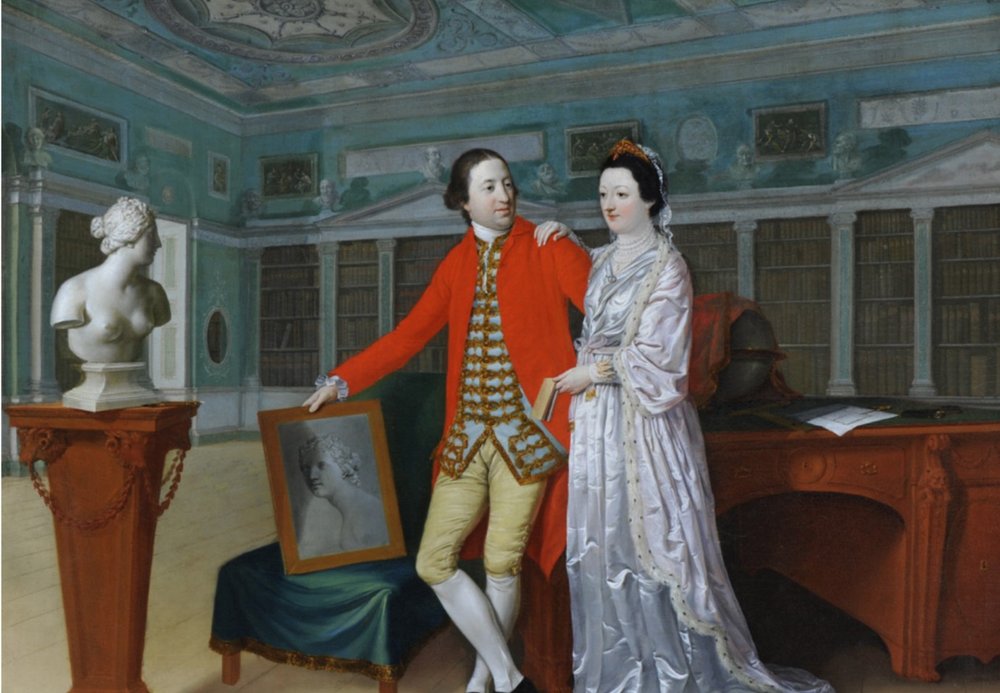
Fig. 4 Hugh Douglas Hamilton RHA (1739/40-1808), portrait of Sir Rowland Winn, 5th Bt (1739 - 1785) and his wife Sabine Louise d'Hervart (1734 -1798), c.1767-8. National Trust, Nostell Priory.
A neighbour, Catherine Cappe, claimed that ‘the peace of the [Winn] family’ was ‘entirely destroyed’ by the return of the newlyweds to Yorkshire. Sabine herself was very unhappy in Yorkshire, which she described as ‘one of the most desolate and gloomy corners of the universe’. The couple also had a house in St. James’s Square, London and Sir Rowland may have been introduced to the young John Smart there.
Sabine was also a pioneering textile artist, which may also explain her husband’s remarkable outfit. Left alone for long periods at Nostell, she used unconventional fabrics for her own clothes (and possibly her husband’s), covered expensive Chippendale chairs in avantgarde styles and produced her own ‘dressed’ prints using experimental fabrics (fig.5). Sabine broke with social convention in conversing and corresponding directly with tradespeople, making her a pioneer in craft as an aristocratic woman of the 1760s.[3]
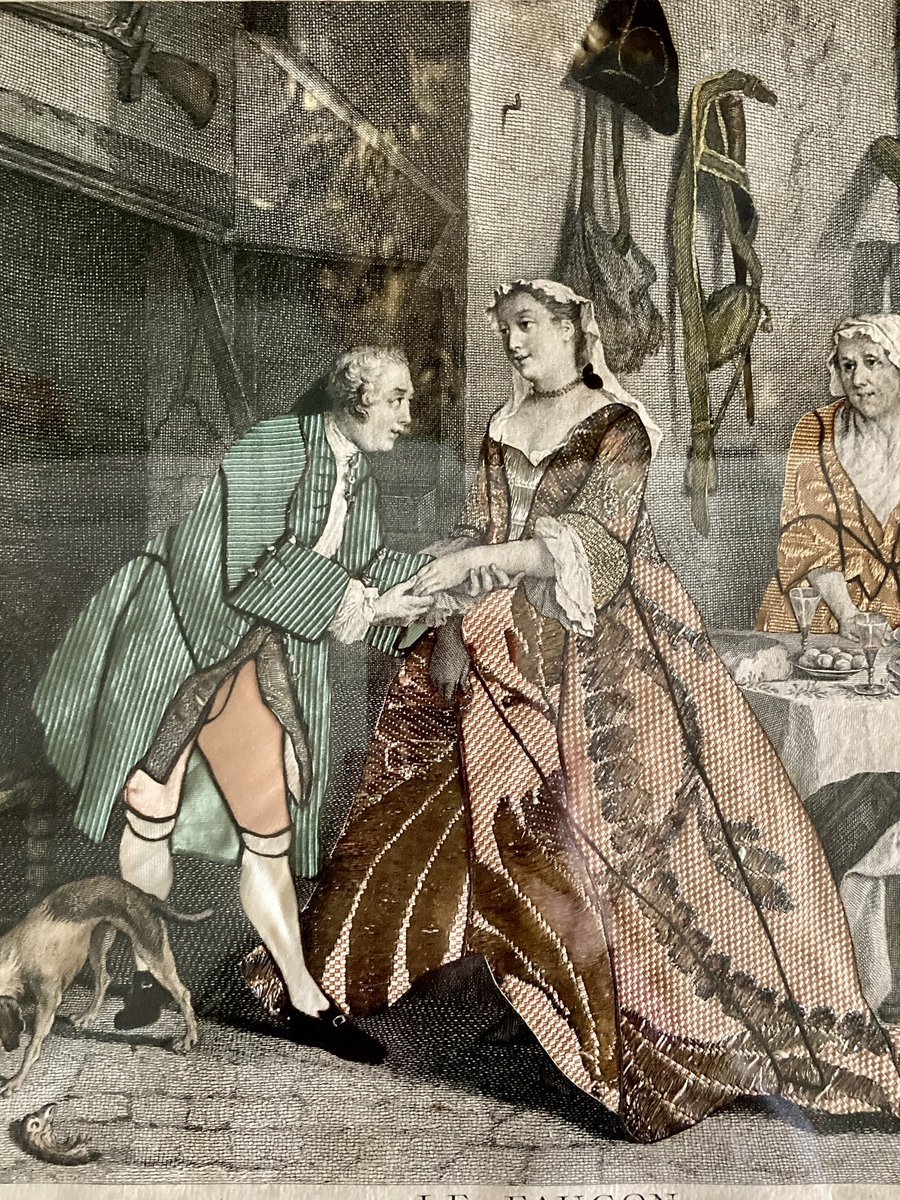
Fig. 5
A ‘dressed’ print by Sabine Winn (Nostell Priory, Yorkshire, National Trust).
The fact that this portrait remained in the family for almost two hundred years is testament to the importance of miniatures as highly personal works of art. It is also testament to Winn’s patronage of the most highly regarded artists and craftsmen – including Hugh Douglas Hamilton, Robert Adam and Thomas Chippendale. He chose to take a risk on the (then) little-known artist for his most intimate portrait, but it appears this was well-justified, as Smart clearly delivered one of the most highly-detailed and captivating portraits of his career.
1] Smart’s first wife, Marianne Howard, eloped to Rome with the artist William Pars, leaving Smart to raise their two daughters and possibly a third child, who likely died young. After this, Smart married a further two times, fathering a total of six children over the course of his various relationships.
2] For more on this portrait see A. Laing, 'Sir Rowland and Lady Winn: A Conversation Piece in the Library at Nostell Priory' Apollo, April 2000, pp.14-18.
3] For more on the fascinating Sabine, listen to curator Serena Dyer’s podcast (https://warwick.ac.uk/fac/arts/history/ecc/archive/emforum/projects/brieflives/sabinne_winn/ ) or read her book, Women Makers and Consumer Culture in the 18th Century, published by Bloomsbury in 2021.
16 Jun 2023
Narrative Accessories: Wearable miniatures from the Elizabethans to the Victorians
Wearable miniatures like this ring reached an apex of popularity during the Georgian and Victorian eras where they graced the hands, wrists and décolletages of members from the highest echelons of society. The present ivory miniature, encircled by a ring of diamonds, was given by King George III, alongside other exquisite pieces of jewellery, to his new wife to wear on their wedding day on 8th September 1761. The exhibition held at the Queen’s Gallery at Buckingham Palace displays this ring alongside other extraordinary historical pieces ranging from royal gowns to formal portraits, highlighting it and other wearable miniatures as integral accessories to the most important of outfits during the Hanoverian period.
That being said, wearable miniatures were widely favoured from as early as the 16th century when Queen Elizabeth I (1533-1603) commissioned numerous pieces of jewellery for courtiers bearing her likeness. One delicate example is a pendant miniature of the Queen by Nicholas Hilliard (1547-1619) from circa 1585 [fig. 1]. The size of this token suggests that was possibly worn as an earring, which became a popular fashion towards the end of the sixteenth century and often only worn in one ear.
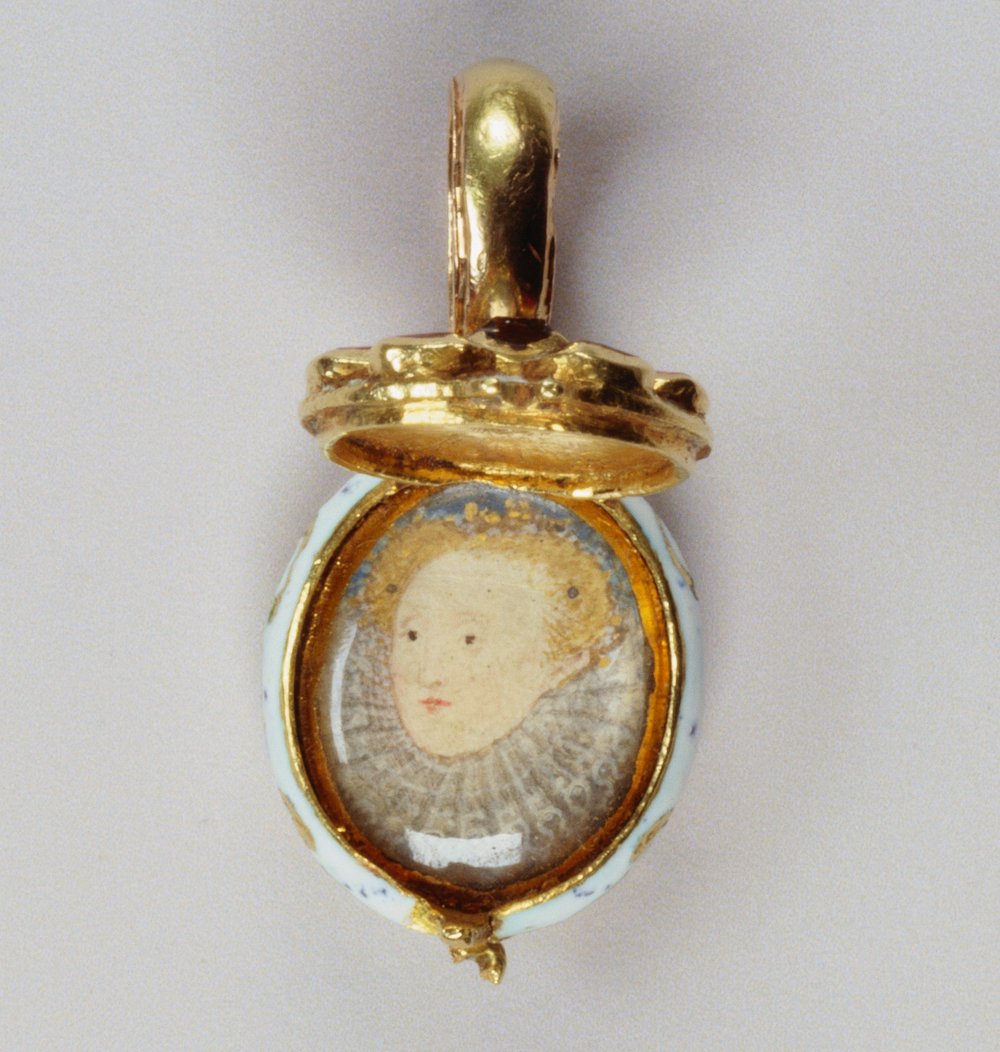
Pendant with portrait miniature of Queen Elizabeth I by Nicholas Hilliard, Royal Collection Trust
Fig. 1 Nicholas Hilliard (1547-1619), Pendant with a miniature of Elizabeth I, circa. 1585-1600
© Royal Collection Trust.
During the English Civil War however, wearable miniatures served an alternative diplomatic purpose and rings displaying the profile of Charles I (1600-1649) were distributed amongst Royalist supporters to display their sponsorship of the monarchy. Similar political rings set with the portrait of William III (1650-1702) [fig. 2] were received by members of his Court and continued to act as signs of loyalty during the reigns of George II (1683-1760) and George III (1738-1820).[1]
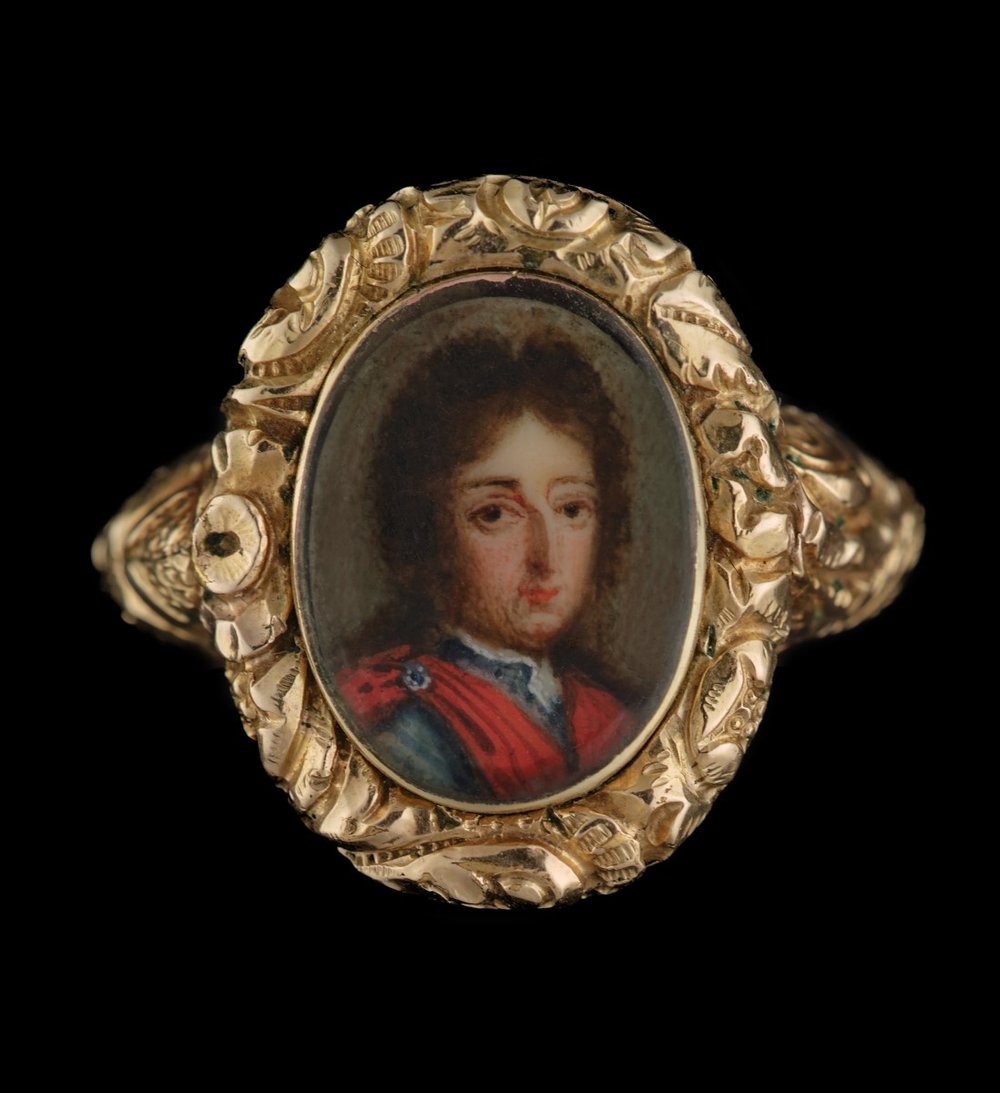
Gold ring with portrait miniature of King William III
Fig. 2 English School, circa 1702, William III, King of England (1650 – 1702), watercolour on ivory set into the bezel of a gold ring - The Limner Company
Towards the end of the 18th century, the setting of miniatures became increasingly opulent and artists often worked with jewellers to surround their portraits in a halos of pearls or precious stones. Wearable miniatures continued to be given and received as gifts, however, instead as declarations of political loyalty, they were more commonly exchanged as tokens of friendship and affection. Perhaps the most intimate of these forms were lover’s eyes - see for example, an eye miniature in the collection of the Victoria & Albert Museum [P.56-1977]. Unlike other portrait miniatures, these dainty pieces only portrayed an eye and were often no larger than a fingernail creating a deeply intimate impression in their emulation of the romantic gaze. Central to this allure and effect was the mystery surrounding the seemingly anonymous identity of their sitters. Concealed by a closely-cropped composition, the meaning behind lover’s eyes was exceedingly personal and the pieces were intended to be held close to the wearer in brooches, rings or pendants.
Other examples of wearable miniatures were not always as elusive as lover’s eyes and, as portable forms of wealth, prominently adorned the wrists, dress and décolletages of their aristocratic wearers. One piece in particular that stands out is the five stringed pearl and portrait miniature bracelet featured in a painting by Anton Raphael Mengs (1728-1779) of Maria Luisa of Spain (1745-1792) [fig. 3]. Painted upon the event of Maria’s marriage to Leopold, the Grand Duke, in 1764, this magnificent portrait was intended to portray her immense wealth and beauty.[2] The pearl stringed miniature, which presumably depicts a portrait of Leopold, hanging from Maria’s left wrist only further communicates this point, particularly as the Duchess’s right hand touches the piece and further draws the viewer’s eye to its opulence.
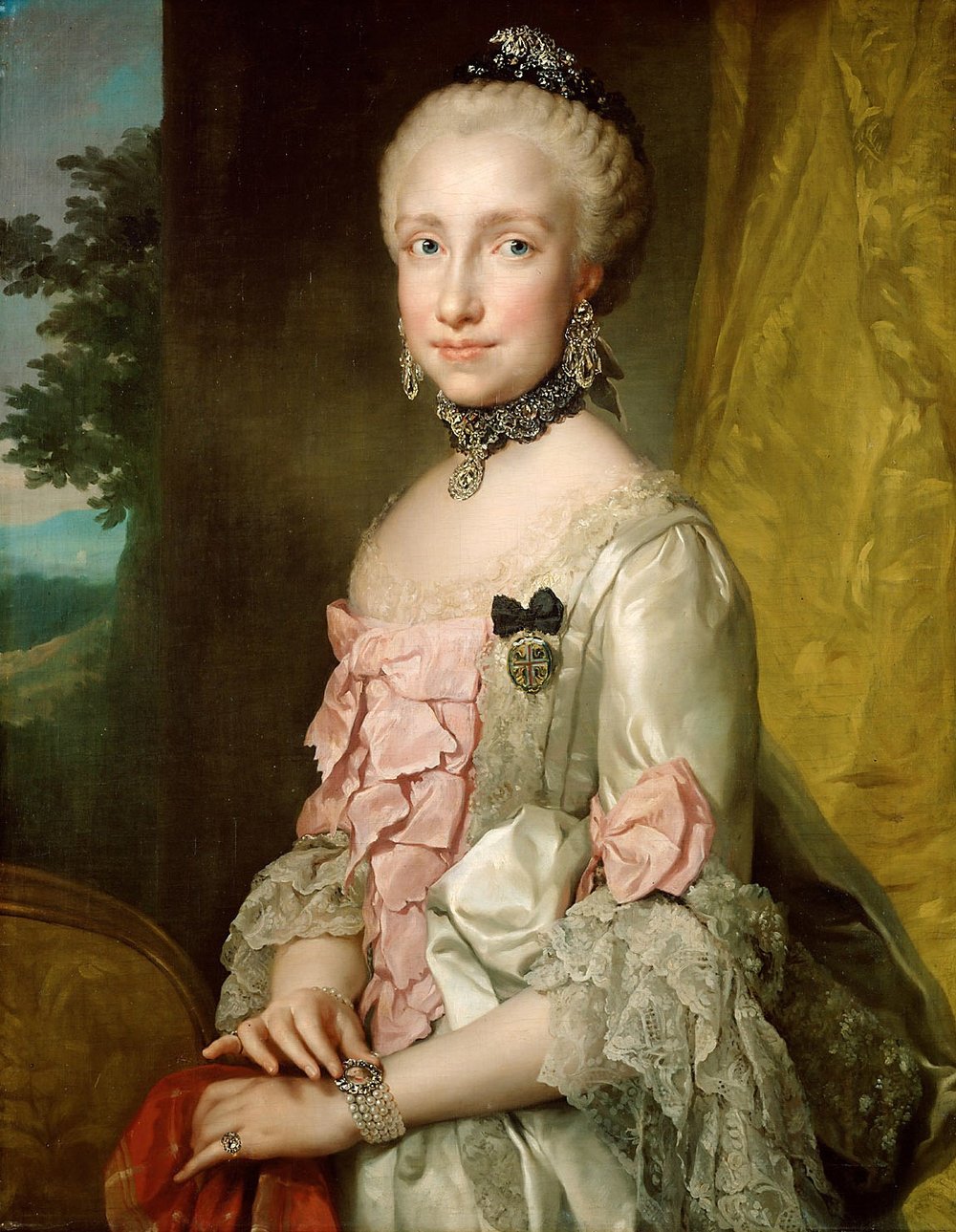
Marriage portrait of María Luisa of Spain wearing portrait miniature bracelet
Fig. 3 Anton Raphael Mengs (1728-1779), María Luisa of Spain, 1764, oil on canvas. Collection: The Kunsthistorisches Museum, Vienna. © The Kunsthistorisches Museum
During the 18th century, a string of pearls that matched in size and colour would often command a greater price than jewels and it therefore comes as no surprise that such an accessory was to be given great attention by the artist in his painting of the newly married Duchess. Such a style was not exclusive to the continent, and Queen Victoria was widely portrayed by artists wearing an ornamental enamel portrait of her beloved Prince Albert upon her wrist in many state portraits both before and after his death in 1861.
In many ways, the very nature of portrait miniatures meant that they were inextricably associated with jewellery from their advent in the 16th century. Dainty and portable, their practical size and shape encouraged a plethora of wearable possibilities. Whether this was to display political loyalty or personal affection, wearable miniatures told a story and today, whether they survive on their own or as a painting within a painting, offer historians a fascinating insight into the symbolic importance of jewellery in the centuries predating photography and commercial printing.
1] Diane Scarisbrick elaborates further on the political use of rings in her book Rings: Symbols of Wealth, Power and Affection, Thames and Hudson, London, 1993, p. 127
2] Maria went onto become Holy Roman Empress when Leopold succeeded the position on the death of his childless brother Joseph II in 1790.
Bethany Perry is a freelance researcher and writer based in London. She previously worked for Sotheby's in their Impressionist & Modern and Modern British Art Departments and prior to that was a Graduate Intern at Philip Mould & Co. Contact: bethanygperry@gmail.com.
04 Jun 2023
Strange Connections: The Ambassador of Constantinople, Jane Austen and toasted cheese
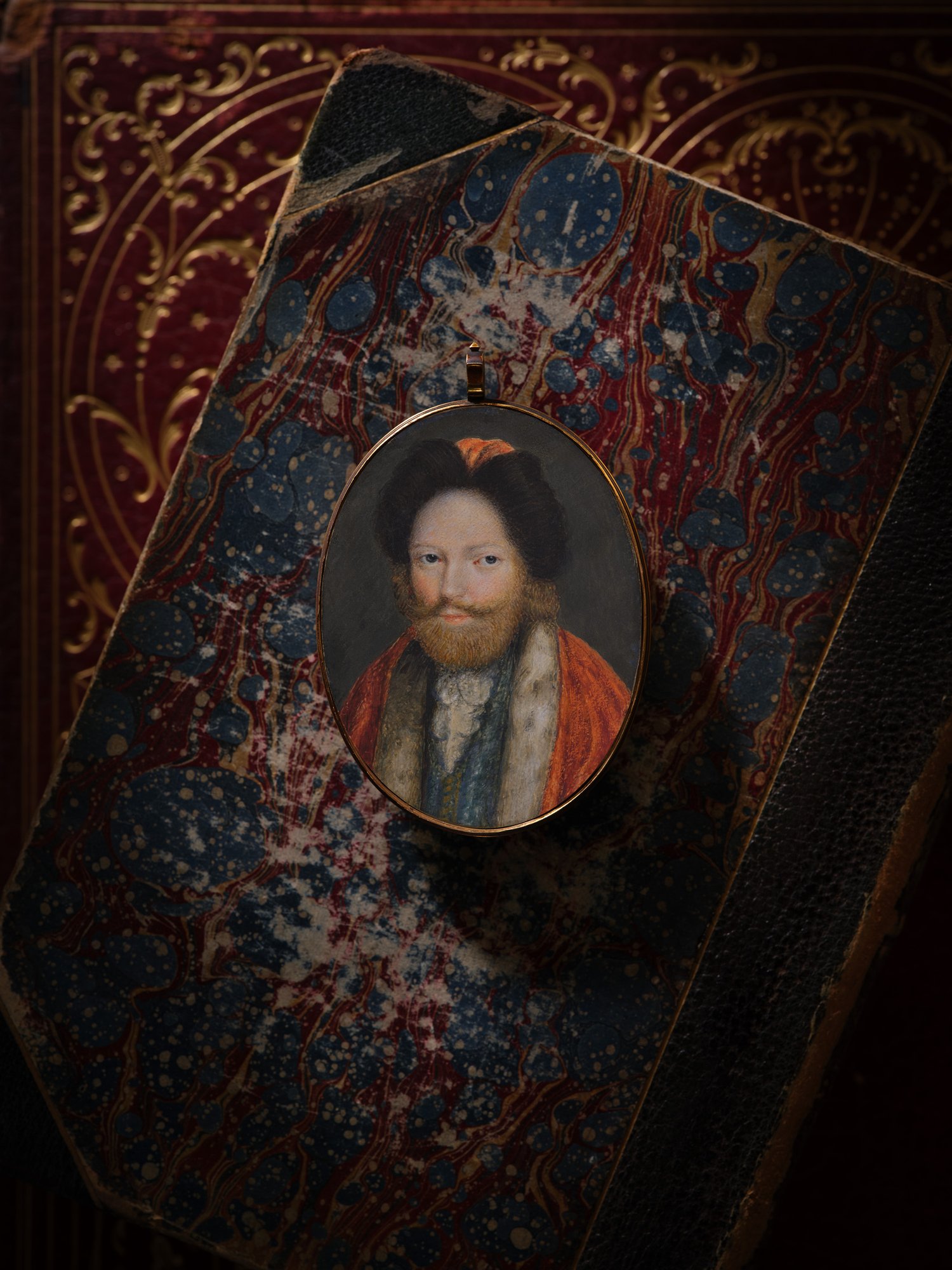
Fig. 1 Jacques-Antoine Arlaud, portrait of James Brydges, 8th Baron Chandos, Turkish Ambassador 1781-84. Photography: Simon Bevan.
In researching the fascinating portrait of James Brydges, 8th Baron Chandos [Fig.1/2], I came across a letter said to have been previously owned by Cassandra Austen [Fig.3]. Dated 1686, the letter was written from Constantinople by James’s wife Elizabeth to her twenty-one year old daughter, Mary. Clearly living a life of high extravagance with her parents abroad, rumours had obviously reached Turkey which had alarmed her parents. In a tone familiar to all parents Eliza vents her rage on her daughter’s spending and the fact that it has reported that she looks like a ‘bartlemew-babby’ (a ‘Bartholomew baby’ refers to the cheap dolls sold at the famous annual Bartholomew Fair). As Mary had been left behind to find a good match in a husband (and hope to solve some of the financial issues which had compelled her father to take up his role as ambassador in the first place) she was in a great deal of trouble.
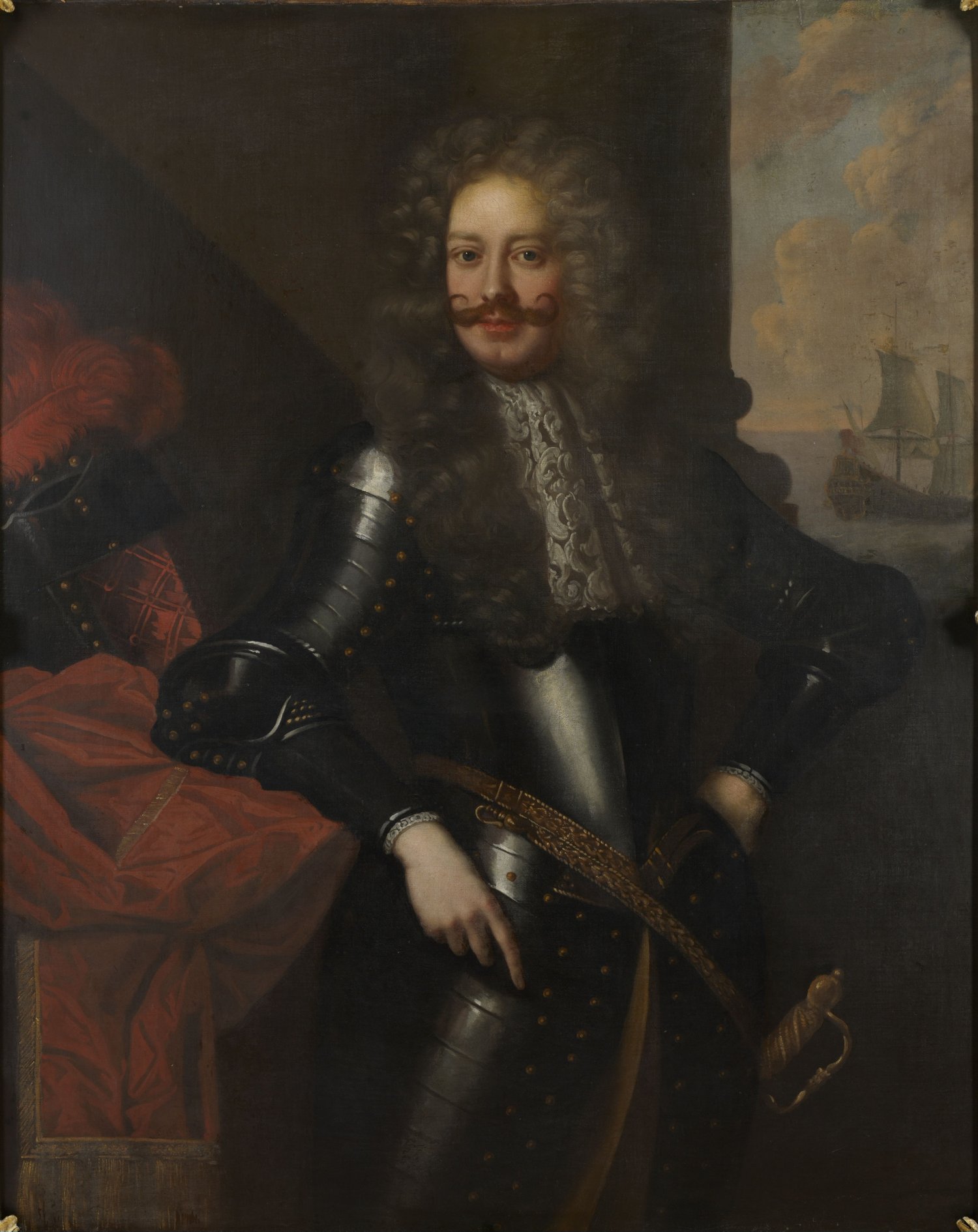
Fig. 2
British School, Sir James Brydges (1642–1714), 8th Baron Chandos, Turkey Company Ambassador to Constantinople- Government Art Collection
Luckily, Mary did marry – Theophilus Leigh (1643-1725)– an ancestor of Cassandra Leigh, Austen’s mother. Mary was the great-grandmother of Jane Austen – her maternal grandfather being the Reverend Thomas Leigh, rector of Harpsden in Berkshire. His daughter married the Rev. George Austen and among their seven children were two daughters, Jane, the writer, and Cassandra.
Not only do the Leigh and Austen family maintain a strong connection during Jane’s lifetime (her mother possibly enjoying the social status that a link to a once noble family would bring), but Jane’s writing is peppered with names which relate to Leigh/ Chandos family. James Brydges’s first wife was named Cassandra (née Willoughby 1670–1735) [Fig.4] and his third wife Lydia Vanhatten (bap. 1693, d. 1750) (Cassandra becoming a popular Austen name).
Fig. 3
A copy of the 1686 letter in the British Library (Add MS 42180) from Elizabeth Brydges, Lady Chandos, wife of James Brydges, which was once in the possession of the Austen family. The letter is accompanied by a note of authentication in the hand of Cassandra Elizabeth Austen, sister of Jane.
Other names from the Brydges/ Leigh line make appearances in Jane’s works - the name Lydia was of course used in Pride and Prejudice, while John Willoughby appears in the 1811 novel Sense and Sensibility. It was not just the names from the family which influenced her prose, but also the personal experience of being the ‘poor relations’ – so close to wealth and influence, yet never quite benefitting from it (many of Jane’s novels explore this theme - from Sense and Sensibility to Mansfield Park). Even more specifically, Northanger Abbey reflects a storyline from Mary Brydges’s own life – when her mother wrote to her in 1686, she was recovering from her thwarted love for the wealthy future Lord Tilney. This is echoed in chapter ten of Northanger Abbey, where Catherine has discovered that Henry Tilney is to be at the cotillion ball the following day. Frustratingly she cannot dress to impress, as her great aunt had lectured her ‘Dress is at all times a frivolous distinction, and excessive solicitude about it often destroys its own aim. Catherine knew all this very well; her great aunt had read her a lecture on the subject only the Christmas before…’.
Places found in Jane’s novels also connect to the family – we know that the novelist visited her Leigh family in Adlestrop several times, with some believing that the setting of Mansfield Park is partly drawn from the Gloucestershire village.
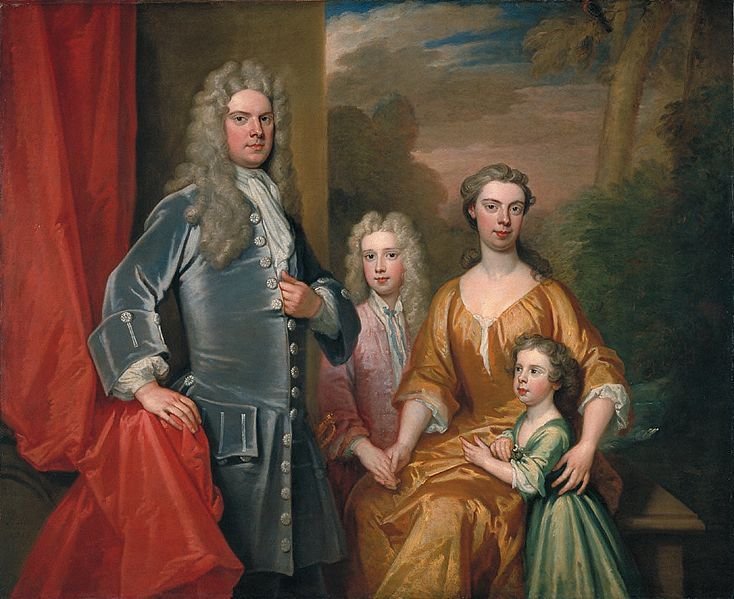
Fig. 4
James Brydges (1674–1744) is shown with his wife and their two sons- National Gallery of Canada 4295
Kneller's 1713 portrait of the Chandos family is believed to show Cassandra, rather than the Duke's first wife, who was the mother of the two children in the picture.
A final connection can be found in a name which will be well-known to Austen devotees. Brook Edward Bridges (a modernisation of the name Brydges), was also a descendant of the Chandos line – and he formed a romantic attachment to Jane. His feelings were made clear to Jane through a simple act of knowing kindness when he made ‘a point of ordering toasted cheese for supper entirely on my account’ (Jane Austen to Cassandra Austen, 27 August 1805), during a visit to Godmersham, Edward Austen's estate in Kent. Knowing the author’s favourite dish was a way to her heart, the Austen scholar Deirdre Le Faye, in Jane Austen: A Family Record, states, ‘it seems possible that Edward Bridges proposed or attempted to propose to [Austen during her visit], . . . a proposal which she had no difficulty in politely rejecting.’
The century which separates the Chandos family link with Jane Austen throws up some intriguing links between the two – and connects elements of Austen’s writing and personal life which are little known. I have a feeling she would have enjoyed seeing the seventeenth century portrait miniature of her bearded relation dressed in an incongruous blend of a turban and ermine-trimmed robes.
02 Jun 2023
The Importance of Understanding the Materials and Techniques of Portrait Miniatures
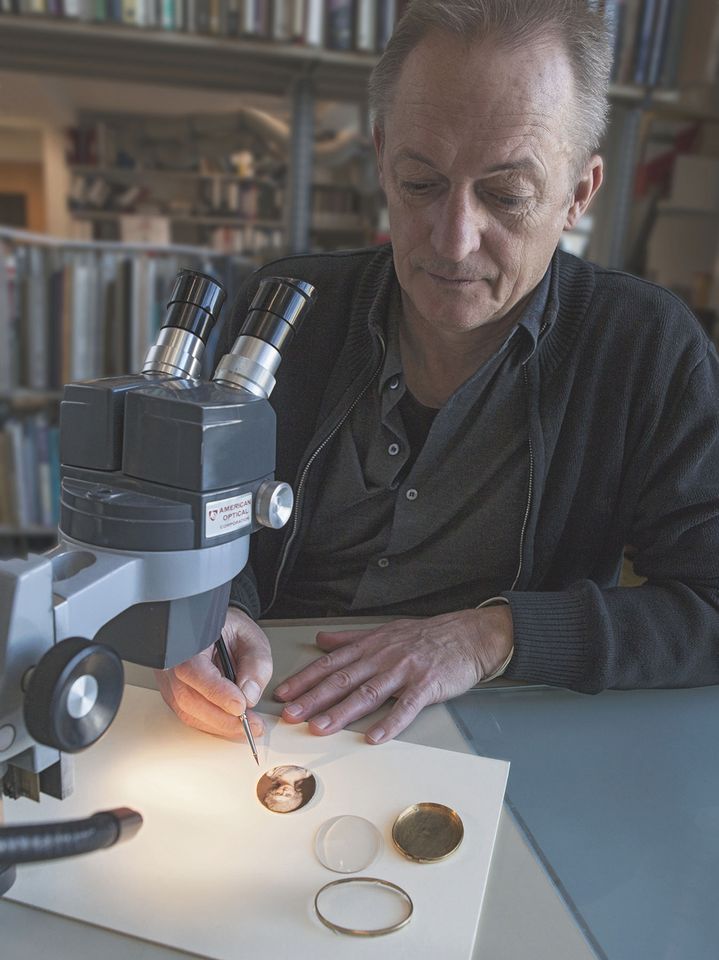
Miniatures from the 16th and early 17th centuries were painted in watercolour and bodycolour on vellum, usually stuck down onto a piece of playing card. The vellum is fine animal skin taken from aborted calves, which is hairless and therefore smooth. Bodycolour is simply watercolour made opaque by adding a higher ratio of pigment to the gum Arabic binder than with normal transparent watercolour. This bodycolour can be clearly seen in areas such as the thickly painted lace and ruffs of Tudor miniatures. Flaking is quite common in these areas as the paint layer dries out over time. Consolidation – using an inert adhesive - can arrest this problem.
In the 17th century, artists began to stick the vellum down into tablebook leaf rather than playing cards. Tablebook leaf is card which has been coated on both sides with a thin layer of gesso (a mixture of chalk and animal glue). These leaves were made into books so that merchants could write on them in pencil or a metal point – hence the name. Occasionally, with these miniatures, the gesso layer can flake causing the vellum to delaminate. Again, this problem can be solved with careful consolidation and re-attachement of the vellum.
The most significant change in materials occurred at the beginning of the 18th century when Rosalba Carriera (1675-1757) began to use ivory as a support rather than vellum. These early ivory miniatures are quite stable as the ivory is quite thick but as the 18th century progressed, the translucency of the ivory was exploited by cutting it more thinly and hence it was stuck down onto white paper or card to stabilise it and to retain its ‘whiteness’.
The thin ivory can react to changes in humidity and temperature so it is important to keep one’s miniatures in relatively stable conditions – for example away from radiators and from direct sunlight. If miniatures are kept locked away in safes for security reasons be sure to check them with a magnifying glass. Careful handling and regular checking will ensure that your miniatures remain in optimum condition.
01 Jun 2023
Introducing THE LIMNER COMPANY
- Nicholas Hilliard, A Treatise Concerning the Arte of Limning, circa 1600
The word ‘Limner’ is defined in the Oxford English Dictionary as ‘Reflecting the origins of the portrait miniature in illuminated manuscripts’, to ‘limn’ (from the Latin luminare) meant to ‘illuminate’’ The words ‘limining’, ‘limn’ and ‘limner’ applied to both painting free-standing miniature portraits and manuscript illumination.
A portrait miniature is not defined by its size but by its materials – and these materials were initially the same as illuminated manuscripts – transparent and opaque watercolour, often with gold paint applied to vellum (parchment). For limnings, the vellum would be stuck to ‘pasteboard’ - or card - of which the easiest available was playing cards. Later in the 18th century, the definition included watercolour and bodycolour using small ivory discs as support.
Although the Italian word ‘miniatura’ was in use in the 16th century, ‘limning’ was the word chosen by Nicholas Hilliard (c.1547-1619) and his contemporaries to describe a new type of portrait. Portable, exquisite, expensive and often secretive, the limner was to be a key player in relationships – both personal and political – over the next five hundred years.
Who are we?
EMMA
After completing a Master’s degree in Victorian Art and Architecture, Emma Rutherford began her career working on the national collection of portrait miniatures at the Victoria and Albert Museum. A self-confessed history nerd, Emma is passionate about portrait miniatures as their tangible nature often feels like a secret portal into the past. Held in the hand, usually painted from life and often set into incredible contemporary cases, portrait miniatures hold a fascination for Emma that she has turned into a career.
Emma has been involved with some of the most important miniature discoveries of the last thirty years, including a lost portrait of Charles Dickens, the first signed portrait by Mary Queen of Scots's artist Jean Decourt, and the portrait of Ethiopian Zaga Christ by Giovanna Garzoni.
Emma’s consultancy spans working for institutions such as The National Portrait Gallery and National Trust, curating exhibitions, lecturing and researching within the private and public sector. Her research is widely published and she has regularly spoken on podcasts and appeared on television.
REBECCA
Rebecca Ingram has been working closely with Emma since 2018, running Emma’s Instagram and website. She first came across portrait miniatures during her undergraduate degree in art history, for which she specialised in early modern female portraiture. But it was not until she met Emma in her capacity as portrait miniatures consultant at Philip Mould & Co. that Rebecca developed a great an interest in miniatures.
Rebecca now works with The Limner Company as a freelance researcher and digital manager.
ALAN
Our conservation consultant, Alan Derbyshire, was formerly Head of Paper, Books and Paintings conservation at the Victoria and Albert Museum, where he worked for 37 years.
As a specialist in the conservation of portrait miniatures and works of art on paper, he works for various dealers, private collectors and institutions around the world.
In 2018, Alan was awarded the Plowden Medal for significant contribution to the advancement of the conservation profession and in particular, to the field of paper conservation and the conservation of portrait miniatures.
What we do
We are a group of specialists who work together researching and selling antique portrait miniatures. Our expertise also includes conservation and framing. Find out about the services we offer here.
Sign-up to our e-newsletter below to receive regular miniatures news, and follow us on Instagram and Facebook for more insights.


